

20 Beautiful Places to Visit in Northern Spain on a Road Trip
Northern Spain is still an underrated destination, even though it offers the perfect combination of magical villages, wide green landscapes, and dreamy beaches. If it’s not yet on your Spain bucket list , add it now! To convince you, here are amazing places to visit in northern Spain that will surely put a smile on your face.
* This post may contain affiliate links from which I earn a commission (for more info, read my disclosure ). As an Amazon Associate, I earn from qualifying purchases.
* I try to keep the information on this blog as updated as possible, but I still recommend consulting the latest prices, opening hours, and other details on the official website of each site, hotel, and tour, as well as checking the updated public transport routes and timetables.
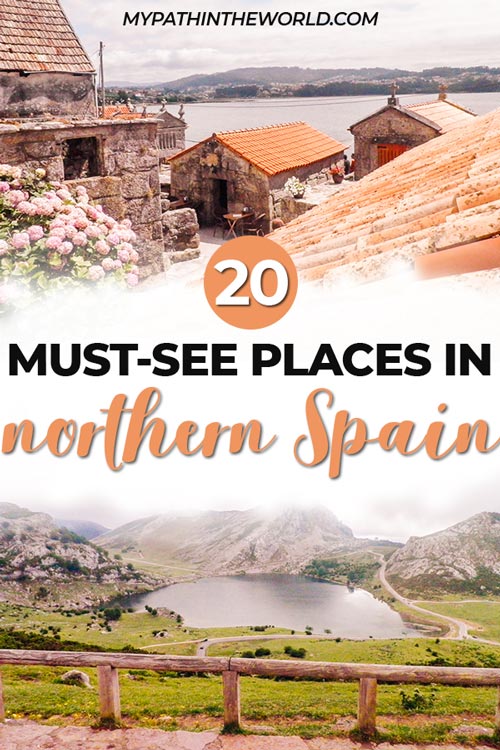
Table of Contents
Northern Spain Road Trip Itinerary Summary
Tip: After accessing the map, you can also open it on your Google Maps app. Simply open your app, tap the ‘saved’ icon at the bottom, scroll down and tap the ‘maps’ icon, and choose the MyMaps map you want to see (you can do the same on your computer).
To give you some inspiration, here’s what my northern Spain itinerary looked like:
Day 1: San Sebastian (suggested hotel: Atotxa Rooms in San Sebastian or Olaskoaga Goikoa in a nearby village).
Day 2: San Juan de Gaztelugatxe + Bilbao (suggested hotel: Hotel Los Angeles or Posada Araceli in Santillana del Mar).
Day 3: Comillas + Santillana del Mar (suggested hotel: Hotel Los Angeles or Posada Araceli in Santillana del Mar).
Day 4: San Vicente de la Barquera + Llanes + Playa del Gulpiyuri (suggested hotel: Hostal Poncebos in Poncebos or Logis Hotel Restaurante La Casa de Juansabeli in Arenas de Cabrales).
Day 5: Covadonga Lakes + Oviedo (suggested hotel: Hotel Casona Selgas or Casona de La Paca in Cudillero).
Day 6: Cudillero + Luarca + Playa del las Catedrales (suggested hotel: Hotel San Briz in A Pontenova or Casas Rurales TAReira in Taramundi).
Day 7: Os Teixois + driving through Ribeira Sacra + Ribadavia (suggested hotel: Hotel Panton or Agua de Mar Hotel Boutique in Vigo).
Day 8: Islas Cies + evening in Vigo (suggested hotel: Hotel Panton or Agua de Mar Hotel Boutique in Vigo).
Day 9: Combarro + Santiago de Compostela (suggested hotel: PR Blanco in Santiago de Compostela).
Day 10: A Coruña (suggested hotel: Hotel Brisa or Hotel Lois in A Coruña).
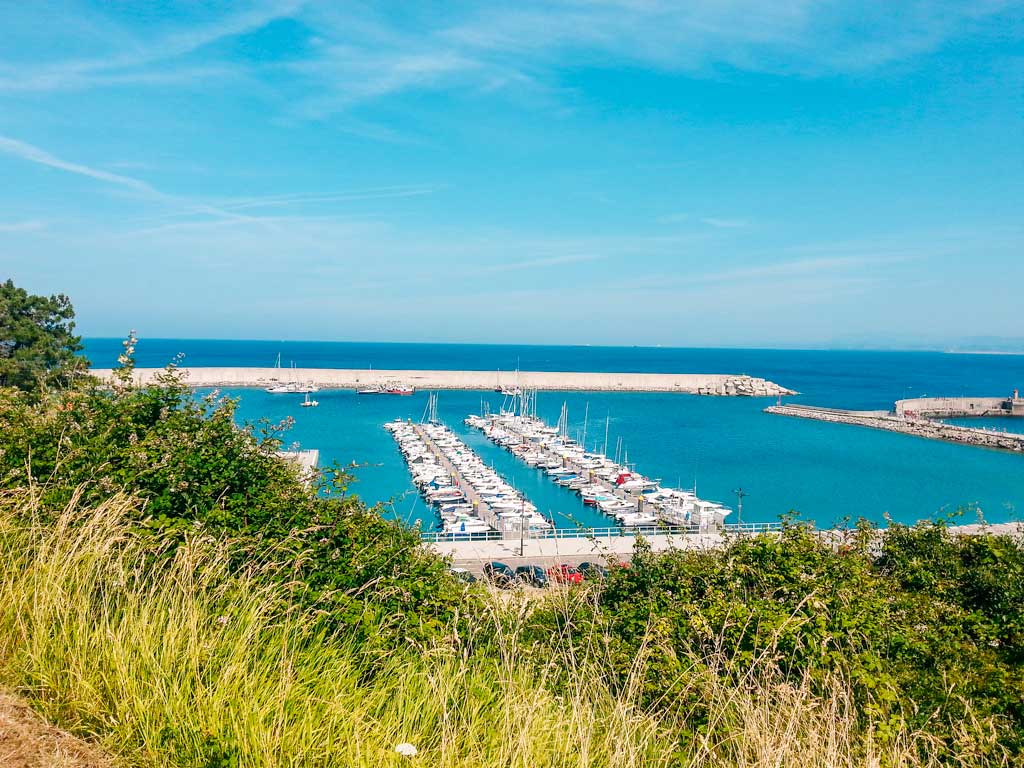
Northern Spain Travel Tips
Is northern spain worth visiting what is it known for.
If you love a combo of unspoiled ocean beaches, sleepy fishing villages, historical cities, and vast green landscapes, you’ll love northern Spain.
It’s an incredible area where you can reconnect with nature, enjoy amazing food, visit intriguing manmade landmarks, and discover a unique side of Spain.
When to Visit Northern Spain
In terms of weather and crowds, late spring and early summer are ideal for traveling through northern Spain.
I visited in late June and absolutely loved it – it gets darker very late, so you can really make the most of every day.
Where Should You Base Yourself
You can plan so many different itineraries when visiting northern Spain.
If you want to see several regions (like I did), you should travel from one place to another because there’s a lot of distance to cover.
If you want to focus on one region, base yourself in one spot. Traveling by car, you don’t have to stay in a big city, and you can enjoy the fantastic rural accommodations northern Spain has to offer.
Start by marking all the places you want to visit on a map and see where it makes sense to base yourself because the options are endless.
Places to Visit in Northern Spain’s Basque Country Region
San sebastian.
With one of the dreamiest beaches in Spain ( La Concha ), stunning lookout points, and a beautiful old town, San Sebastian is easily one of the best cities to visit in northern Spain.
It’s worth spending at least 24- 48 hours in San Sebastian , but it can also be a great base for exploring the Basque Country region.
Beyond its charm and beauty, it is also a HUGE foodie destination. If you’re a hardcore foodie, you’ll be delighted to know this city is home to an astonishing number of Michelin-starred restaurants .
It also invented the pintxo, so San Sebastian is where you’ll find some of the best pintxo bars in Spain .
What exactly are those? They are a type of tapas/snack/mini-meal popular in northern Spain, and they consist of a piece of bread with different toppings.
The old town is filled with these pintxo bars, so you can take a guided food tour or create your own tour.
Be sure to also head to La Viña , the restaurant that invented the world’s creamiest and best cheesecake.

Other things to do in San Sebastian:
- Take the funicular to get to Monte Igueldo lookout point, overlooking La Concha beach
- Wander through the old town and see the San Sebastián Cathedral
- Take a Basque history bike tour
- Visit the San Telmo Museum
- Take a tour of a traditional cider house
- Take a day tour to the town of Hondarribia and other nearby fishing towns
How much time to spend there: 1-2 days.
Where to stay: After spending the day in the city, I actually stayed at a cozy rural accommodation called Olaskoaga Goikoa in a nearby village called Aia (perfect for those looking for utter quiet). You can browse its latest prices or find plenty of highly-rated accommodations in San Sebastian itself like Atotxa Rooms , Aldamar , and the luxurious Hotel Maria Cristina.

San Juan de Gaztelugatxe
One of the best things to do in northern Spain is to visit San Juan de Gaztelugatxe, an islet on the Basque coast.
It’s connected to the mainland by a bridge, and a small church dating from the 10th century stands on top of it.
You can have a full view of it from the parking lot, but if you want to get to the islet itself, you’ll need to walk down the road and climb over 200 steps.
Fun fact: Scenes for the 7th season of ‘Game of Thrones’ were shot in San Juan de Gaztelugatxe (hint: Dragonstone). You can even take a Game of Thrones guided tour from the city of Bilbao.
How much time to spend there: A couple of hours.

If you’re an architecture and culture lover, the unique city of Bilbao is for you.
With its unique structure, its most famous highlight is, of course, the Guggenheim Museum of Art (designed by infamous architect Frank Gehry), but there’s so much more to it.
Architecture fans will love beautiful buildings in the city center like the Arriaga Theater, Chavarri Palace, and Basilica de Begoña while culture lovers will enjoy the Bilbao Fine Arts Museum, Itsasmuseum (maritime museum), and the iconic Guggenheim Museum .
Whether you have a few hours or a weekend in Bilbao , you can also wander through the Casco Viejo (old quarter), relax in Doña Casilda Iturrizar Park, and explore Mercado de la Ribera, Europe’s largest indoor market.
Other things to do in Bilbao:
- Take a free walking tour of Bilbao
- Take a free walking tour of modernist Bilbao
- Take a food tour
How much time to spend there: 1 day.

Best Places to Visit in North Spain’s Cantabria Region
Santillana del mar.
Fun fact: Santillana del Mar is known as ‘The Town of Three Lies’ since it is neither holy (Santa), nor flat (Llana), nor is it by the sea (Mar). It is also known as one of the prettiest medieval towns in northern Spain.
But pretty is an understatement – it is pure magic! The rustic stone buildings, flower-adorned balconies, and enchanting vibe make it a real must-see gem.
How much time to spend there: Half a day.
Where to stay: I loved staying at Hotel Los Angeles . The staff was incredibly welcoming and the hotel was very cozy and felt authentic. Browse its latest prices and availability. A higher-rated option is Posada Araceli .
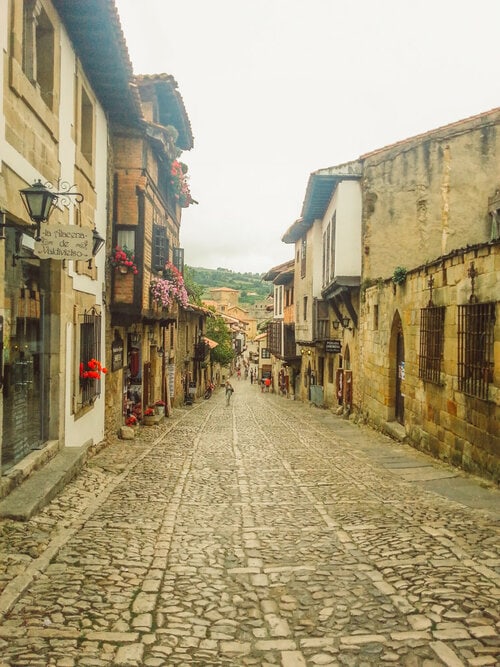
Even if you’ve never been to Barcelona, I’m quite sure you’ve heard about Antoni Gaudi.
If you haven’t, it’s time to get to know the genius architecture behind some of Barcelona’s most beautiful and unique buildings.
Each one of them is a work of art, and I am a true fan of his. Luckily, he also scattered some of his gems outside of the Catalonia region.
In the small town of Comillas, you can find ‘El Capricho de Gaudi’ (Gaudi’s Caprice). It was built as a summer villa for Máximo Díaz de Quijano, a Spanish immigrant who returned to Spain after having made his fortune.
During your visit, you can enjoy all areas of the building including the interior and the gardens.
Even if you’re not an architecture fan, give this treasure a moment of appreciation, as it is one of the most unique things to see in northern Spain.

San Vicente de la Barquera
Although there isn’t a whole lot to do in San Vicente de la Barquera, this sleepy fishing village/town is worthy of at least a coffee or lunch break.
Whether you’re entering San Vicente de la Barquera from the bridge on the East (on the N-634) or walking up to the medieval San Vicente Castle and Church of Santa María de los Ángeles, you’ll be rewarded with some remarkable views.
There are also quite a few beaches nearby that you can check out, like Playa de Meron, Playa de Gerra, and Playa de Oyambre.
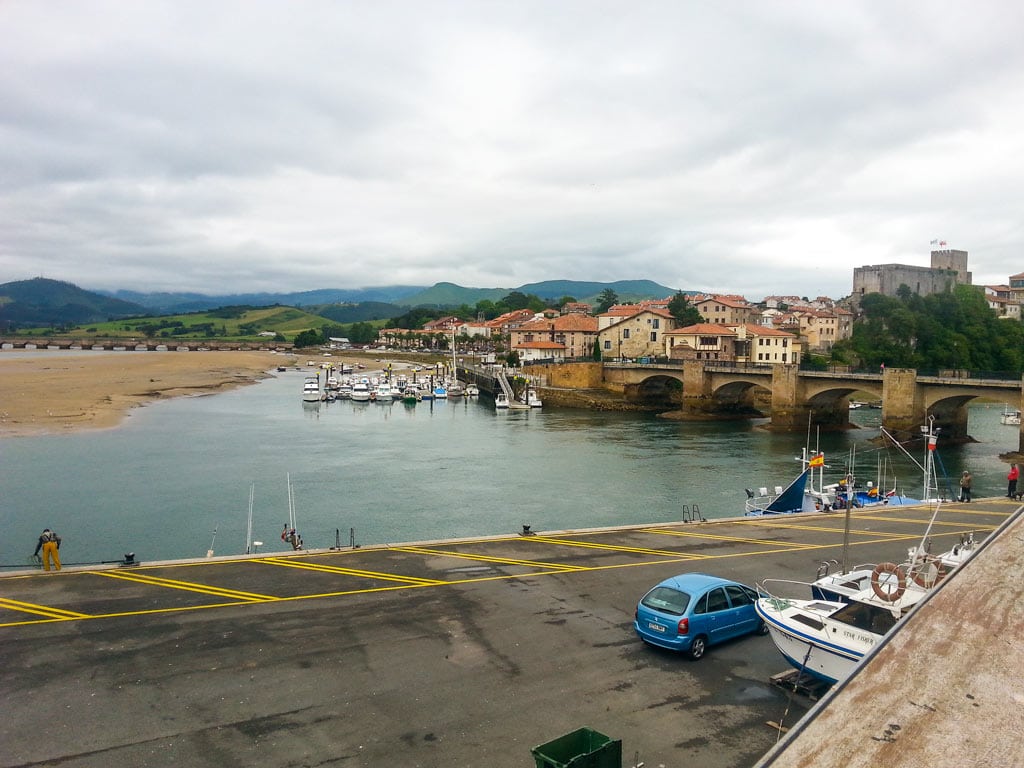
Stunning Places to See in Northern Spain’s Asturias Region
Llanes is the perfect little coastal town.
Not only does it have two fantastic beaches, Sablon Beach and Puerto Chico Beach, but also an adorable port and old town with cobbled alleys and a few landmarks (like the Duque de Estrada Palace).
It’s also a great base for exploring the Picos de Europa National Park.
How much time to spend there: A few hours – half a day.
Playa de Gulpiyuri
Located only 100 meters from the Cantabrian Sea, Playa de Gulpiyuri is a flooded sinkhole that creates a 40-meter magical little beach.
Although the water level isn’t high enough to take a proper swim, it’s still one of the greatest hidden gems in Spain and one of the best beaches in Asturias .
Also, try to visit when the tide is high, or else the water will almost completely disappear.
Getting there: Navigate to Playa de Gulpiyuri, and you should be getting to a parking lot. From there, you’ll see signs leading to the beach within only a few minutes.
How much time to spend there: A few hours.

Lagos de Covadonga
Located in the national park of Picos De Europa, the beautiful lakes of Covadonga are one of the best places in northern Spain.
Going up the winding road to see them, you’ll need a moment to truly understand that you’re not actually in Switzerland!
The landscape is wide and green, the lakes are mesmerizing, and completing the scenery, cows, goats, and sheep are wandering around. Yes, I’ll repeat it, it’s Spain!
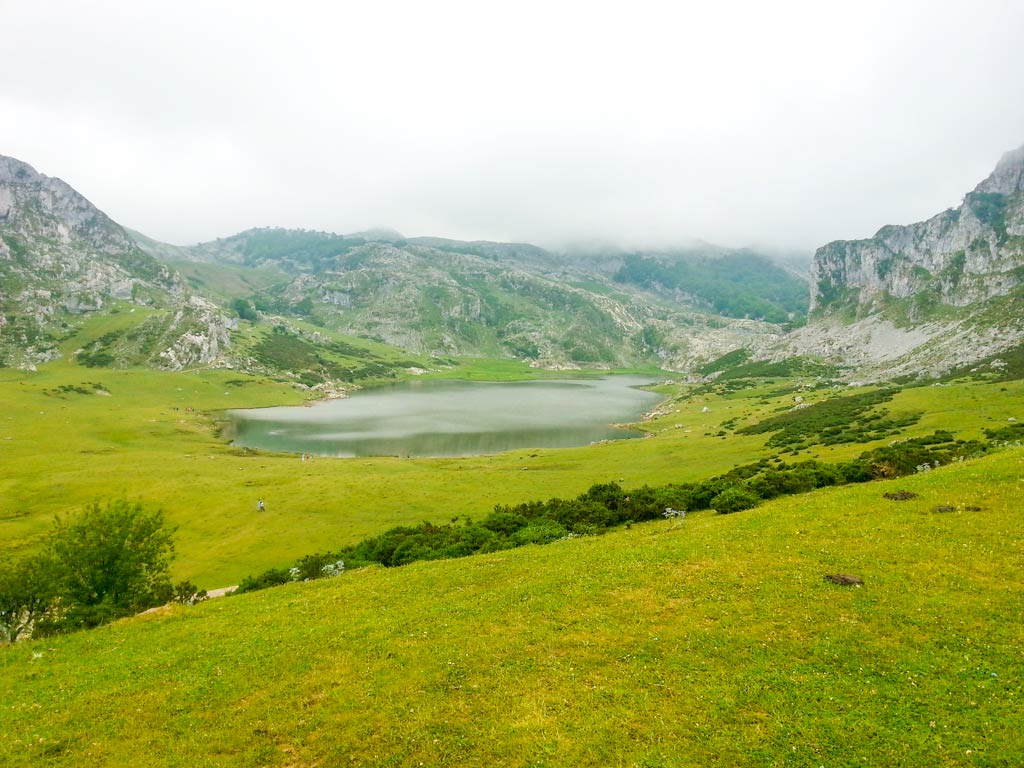
Getting there: I think the easiest way to get to the lakes is by car all the way to the parking lot near the Entrelagos lookout point and Bar Restaurante Mª Rosa.
However, from late spring to early fall, access to the lakes by car is restricted, and you may need to use public transportation if you don’t get there very early in the morning. Get all the details here.
You can also visit the lakes with a guided day trip from Gijon or a day tour from Oviedo .
Where to stay near Lagos de Covadonga: If you want to wake up to magnificent views, I recommend staying at Hostal Poncebos which sits on the turquoise Cares River (I specifically wanted to stay there because of the surrounding scenery, which didn’t disappoint). Browse its latest prices and availability. Another highly-rated nearby option is Logis Hotel Restaurante La Casa de Juansabeli .

Oviedo is a city like no other. Its history, culture, gastronomy, elegance, peacefulness, and enchantment will win you over in a second, and you’ll love the mix of modern and old.
On the one hand, it’s a great place to go shopping and feast on Michelin-starred meals.
On the other hand, it has a medieval flavor, and it’s home to a few UNESCO sites like the Basilica of San Julián de los Prados and the Church of Santa María del Naranco.
On your visit, you can also admire the Catedral Metropolitana de El Salvador de Oviedo, visit the Archaeological Museum of Asturias or the Museum of Fine Arts of Asturias, and wander through the El Fontan market.
It really is one of the best cities in northern Spain, and it is one of a kind, so you should definitely put it on your itinerary.
How much time to spend there: Half a day – one day.
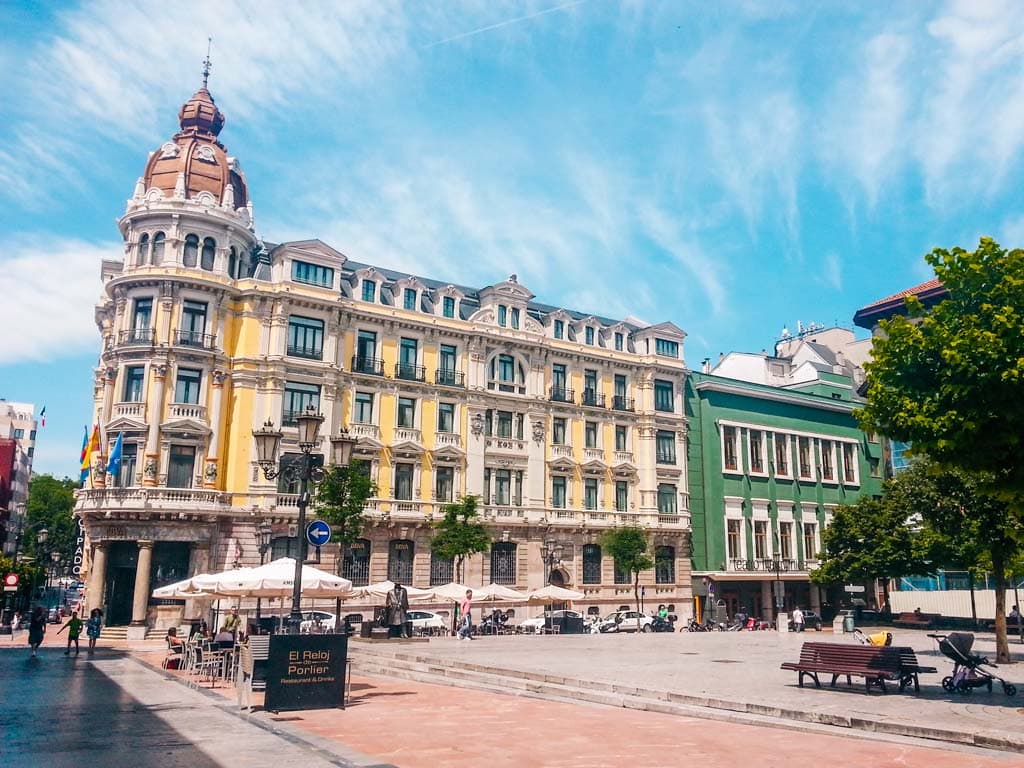
Your north Spain trip would not be complete without visiting Cudillero. It is a small, charming fisherman’s village, packed with colorful houses, that seem to be built one on top of the other.
You don’t need much more than a stroll in the village’s streets, and a cup of coffee in front of the colorful scenery.
Fun fact #1: A legend says that Vikings were the ones to found Cudillero.
Fun fact #2: Each house in the village matches the color of its owner’s fishing boat.
Where to stay: I loved staying at Hotel Casona Selgas . It ticked all the boxes for me – clean, comfortable, beautiful decor, and great hosts. Read more reviews and check the latest prices. A higher-rated option is Casona de La Paca .
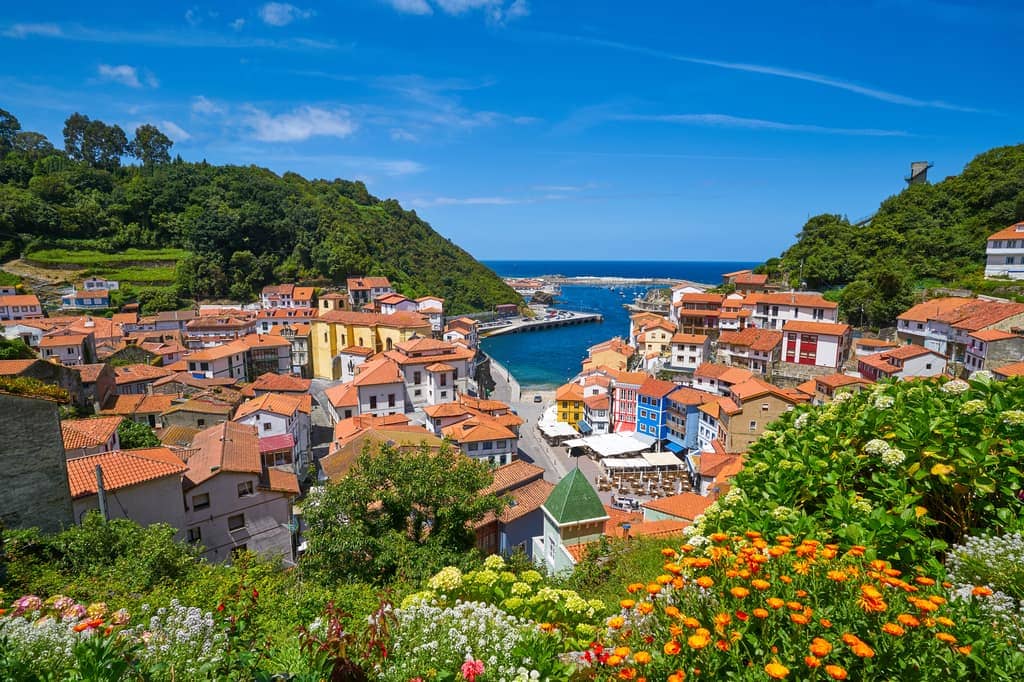
Another gem that’s worth visiting on Spain’s northern coast is the town of Luarca.
Its streets are full of old town charm and there are many cafes and traditional taverns, but the crowning glory is its beautiful big harbor.
OS Teixois Ethnographic Site
The ethnographic site of Os Teixois demonstrates the use of several hydraulic devices used by local villagers in their daily life, for several centuries running.
It also showcases traditional rustic stone buildings, which are my favorite kind of buildings.
Unfortunately, I didn’t get the chance to take a guided tour, but I am quite sure that it helps to fully learn everything there is to know about this place.
Where to stay near Os Teixois: Only a few miles away, I stayed at Hotel San Briz . I loved its location in a quiet town, as well as its on-site restaurant, and the staff was more than welcoming. Browse the latest prices and availability here. A higher-rated option is Casas Rurales TAReira en Taramundi .

Most Beautiful Places in Northern Spain’s Galicia Region
Playa de las catedrales.
Cathedrals Beach is an amazing and unique beach on the Galician coast. Its name derives from the natural architecture which was created by the Atlantic Ocean.
During high tide, the waves make the beach almost completely disappear, so it is something to consider when planning a visit.
When the low tide arrives, it reveals the true majestic beauty of this beach: magnificent cliffs, rocky arched formations, and hidden caves free for you to explore.
Access: Access to the beach is free , but during summer and Easter it is limited . All you need to do is make a reservation , and you are ready to go!

Ribeira Sacra Wine Region
Probably one of the lesser-known wine regions in Spain , Ribeira Sacra is located in the eastern part of Galicia in the valleys of the rivers Miño and Sil.
The Romans made wine in this area more than 2,000 years ago, and monks continued to do so in the Middle Ages.
Apart from driving through the beautiful vineyards, you can also check out local wineries, but be sure to contact them in advance for tours in English.
You can also check out this day tour to Ribeira Sacra from Santiago de Compostela .

Have you ever wanted to visit a place just because of a very specific spot? I’ve added Ribadavia to my northern Spain road trip itinerary because of a unique bakery.
I’m always happy to explore my Jewish heritage around the world, so I was thrilled to visit La Tafona da Herminia, a tiny bakery dedicated to the Hebrew sweets of Spain, which was once home to a thriving Jewish community.
Update: Herminia has retired and the place is currently closed.
But beyond this little gem, Ribadavia is a town that will make you feel like you’ve stepped back in time.
It is a former seat of the Kingdom of Galicia, its Jewish quarter is one of the best in Galicia, and its medieval atmosphere is well-preserved. You can also visit the Ribadavia Castle and the Ethnological Museum.

Cies Islands, I’m yours.
The Cies Islands were one of my favorite places to see in northern Spain. They consist of three islands: Monte Agudo, O Faro, and San Martiño.
The first two islands are connected by a strip of sand, also known as Rodas Beach. Its white sand and turquoise water are all you need on a hot summer day.
Along with the dreamy beaches, there are walking trails for you to enjoy the wild nature surrounding you.
For me, that’s the best thing about these islands; you get to combine relaxation in the sun, with hikes that reveal amazing views.
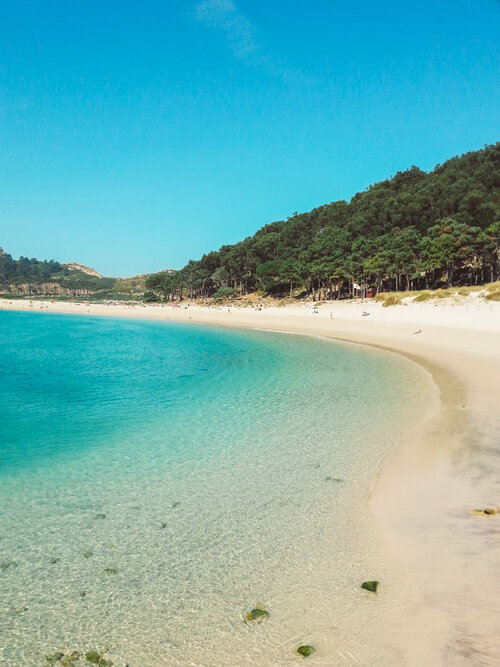
Getting there: Luckily, the islands are only a 30-minute ferry ride away from the city of Vigo , and I booked my ticket via Naviera Nabia .
Good to know #1: Currently, you also need a permit to visit the islands ( easily request it here ), so consider purchasing these ferry tickets that already include the permit (note that the confirmation email will also tell you to get them physically at the ticket office).
Good to know #2: The Cies Islands are a natural reserve and a part of the Atlantic Islands National Park. Therefore, there is no accommodation on the islands except for a camping area .
Good to know #3: There are no waste bins on the islands. So, make sure to take your litter with you back to the mainland.
Good to know #4: Get to the port in advance because it can be a bit confusing to find your ferry (lots of people, lots of ferries), even though you’ll see plenty of service providers that will direct you to the right spot.
Where to stay in Vigo: I stayed at Hotel Panton , a family-run hotel in central Vigo. Read reviews and check its latest prices. A higher-rated option is the Agua de Mar Hotel Boutique .
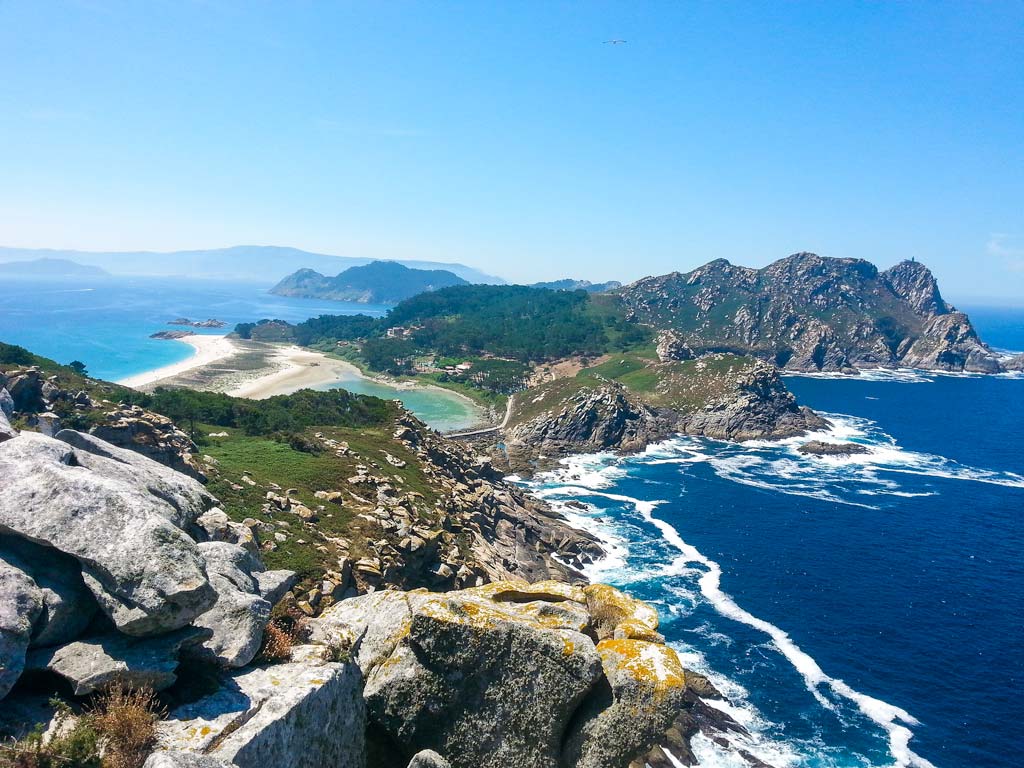
It is impossible not to fall in love with Combarro, the sweetest little fisherman’s village, which proudly displays Galician traditional stone houses and granaries (that are still in use!).
Besides the captivating architecture, the place has a unique feel to it, something magical I can’t quite explain. Being one of the highlights of my northern Spain trip, it is deserving of at least a short stroll.

Santiago de Compostela
As the final destination of the famous pilgrimage route, Camino de Santiago (Way of Saint James), Santiago de Compostela is a must-see in north Spain.
The legend says that to honor St. James, the impressive Santiago de Compostela Cathedral was built on the spot where his remains were supposedly found, so there’s no wonder why the entire Old Town is a listed UNESCO World Heritage Site.
Santiago de Compostela is also home to a few other Spanish landmarks like the 18th-century Palace of Raxoi and the medieval Monastery of San Martiño Pinario, but I admit that beyond the cathedral, this city didn’t wow me as other places in Galicia did.
I don’t usually do this, but there was a tourist train going out of the cathedral’s square, and it was actually a nice way to see a little bit of the city.
You can also take a free walking tour and visit the cathedral with a guide .
Where to stay: I stayed at PR Blanco , located near the cathedral, offering private parking and comfortable rooms and apartments. Browse its latest prices and availability.

Both lively and laid back and both traditional and modern, A Coruña is an easy-to-love city.
On one hand, you’ll find historic buildings like the town hall at María Pita Square, San Anton Castle, and UNESCO listed Tower of Hercules, which dates back to Roman times.
On the other hand, you can enjoy attractions like the National Museum of Science and Technology, the Fenosa Museum of Contemporary Art, and the Finisterrae Aquarium.
A Coruña is home to many other museums, as well as scenic viewpoints overlooking the city and the Atlantic coast, fantastic restaurants, and relaxing beaches like Playa del Riazor and Playa de las Lapas.
How much time to spend there: One day.
Where to stay: I stayed at Hotel Brisa , which is located right near Riazor Beach (some of the hotel’s rooms also offer beach views). Read reviews and book it here. A higher-rated option is Hotel Lois .
Places I Wish I Hadn’t Missed in Northern Spain
My northern Spain bucket list is huge (I even had to skip out on regions like La Rioja And Navarre on my trip), but here are a few of the top places I wish I hadn’t missed.
Potes, Cantabria
Situated on the Cantabrian side of the Picos de Europa National Park, Potes is a village that seems like an ideal stop on a road trip.
Not only is it surrounded by the mountainous scenery of the park, but it also has an old quarter with centuries-old houses and landmarks.
I love places that combine historical and traditional architecture with nature, so Potes would have probably been right up my alley.
For that reason, I would have also loved to visit Barcena Mayor , considered the oldest village in Cantabria.
Playa Del Silencio, Asturias
The untamed coastline of northern Spain boasts hundreds of picture-perfect beaches, but the one that got my attention was Playa del Silencio (also known as Playa de Gavieiru).
It is a part of the Protected Landscape of the Western Coast of Asturias and is considered one of the most beautiful beaches in the region.
I honestly don’t know why I didn’t include it in my itinerary because it’s located right between Cudillero and Luarca.
Somiedo Natural Park, Asturias
Road-tripping through the Picos de Europa National Park was an incredible experience, so I wish I had time to visit Somiedo Natural Park, another notable natural space in the area.
There’s a lot to do in this park, but I would have loved to see its lakes (Lagos de Saliencia and Lago del Valle) and visit its brañas , which are groups of teitos , traditional stone huts with straw roofs once used as houses by shepherds.
Lugo, Galicia
Being the only city in the world surrounded by intact Roman walls (which were listed as a UNESCO World Heritage Site), Lugo is literally one of a kind.
In addition, the 12th-century Lugo Cathedral is a well-known stop on the Camino Primitivo (one of the paths of the Camino de Santiago).
If these famous Spanish landmarks are not enough, the entire historic center seems like a wonderful place to explore.
Cape Finisterre, Galicia
What makes the rugged Cape Finisterre (Cabo Fisterra in Galician) intriguing to me is that the Romans believed it was the ‘end of the earth’ ( Finis Terrae in Latin).
It’s actually close to being Europe’s westernmost point, but that title goes to Cabo da Roca in Portugal.
That said, its 19th-century lighthouse IS the westernmost in Europe, and the entire peninsula is a popular destination on the Camino de Santiago.
Other Spain Travel Guides
Read more about Spain:
- Best Spanish road trips (including a road trip itinerary for southern Spain )
- Long weekend breaks in Spain
- 55 things you need to know before visiting Spain
- Novels set in Spain
- Spain themed gifts
- Spain travel quotes
- Unusual things to do in Barcelona
Read more on European road trips:
- Best road trips in Portugal
- Lisbon to Porto road trip
- Northern Portugal road trip
- Best road trips in Italy
- Best road trips from Milan
- Northern Italy road trip
- Northwest Italy road trip itinerary
When are you planning on visiting northern Spain ? Tell me in the comments and pin this northern Spain travel guide for later using the share icon on the right bottom corner!
About Or Amir
Hey, I'm Or! I'm a passionate traveler with a severe coffee, chocolate, and pastry addiction (or any other carb for that matter). I'm always planning my next trip to Spain, Italy, or any other country in Europe, and my goal is to help you make the most of each destination.
18 thoughts on “20 Beautiful Places to Visit in Northern Spain on a Road Trip”
Northern Spain is absolutely amazing!! Delicious food all around, long beaches, green forests, plenty of outdoor activities with breathtaking views… The perfect holiday destination!
Couldn’t agree more!
Hi Or, Great post, lots of useful information! Looking for my trip to the area 😎
Thank you! Let me know if you have any questions 🙂
Do you have a map of your Northern Spain Roadtrip?
Hey, Becky! I’ve added a map – I hope it helps 🙂
I love your recommendations! But I keep my land Asturias! Although luckily in Spain we have some fantastic places to not get bored. Regards
Thanks, Sergio! I agree, it’s impossible to get bored in Spain 🙂
Amazing post! I have been to Southern Spain last year & I really enjoyed it. However, your blog is making me think whether I should’ve visited Northern Spain as it does feature some beautiful tourist attractions. I’ll share this blog with my wife & we’ll then see if we want to Apply for Spain Visa to explore these alluring attractions. Keep sharing such helpful information about other European countries as well.
Thank you and you should most definitely visit northern Spain too 🙂
Hi Or you post is great. Booked to visit northern Spain beginning of August starting off in Burgos but your post has wetted out appetite you have covered all the sort of places we like and in great detail, learnt more from your post than dozens of other offerings. Thanks
Thanks, Russell! This is what I’ve managed to see on my road trip and that’s after somehow prioritizing which places to visit in each region (mission impossible), so I’m happy you find this post inspiring and helpful 🙂
Thank you so much for this post. Can you let me know how much time you allocated to this trip if you were to do in one hit ?
You’re welcome, Lisa! I’m happy this is helpful. This road trip took me about 9 days. I’d say you need at least say 9-10 days to enjoy each and every place. Plus, it’s a lot of distance to cover since this route goes through several regions.
my daughter is attending her first semester of college in Valencia. thank you so much for the blog it has really helped with planning my trip there to see her in October
Thank you so much, Michelle! I’m really happy to know my blog was helpful! I hope you have a great time in Valencia 🙂
I haven’t been to Spain yet but your photos are making me itch to go! Especially Cudillero – it looks adorable!
Spain is incredible, and there are so many places to visit 🙂 Cudillero is such a charming village, and you should definitely go someday!
*Your emil address will not be published. By using this form you agree with the storage and handling of your data by this website
Leave a Comment Cancel reply
Save my name, email, and website in this browser for the next time I comment.
Hi, I'm Or!
I'm a passionate traveler obsessed with traveling in Europe and discovering hidden gems in each place I visit. For me, it's not about ticking destinations off the bucket list but experiencing each one of them to the fullest. Read more about me and my story.

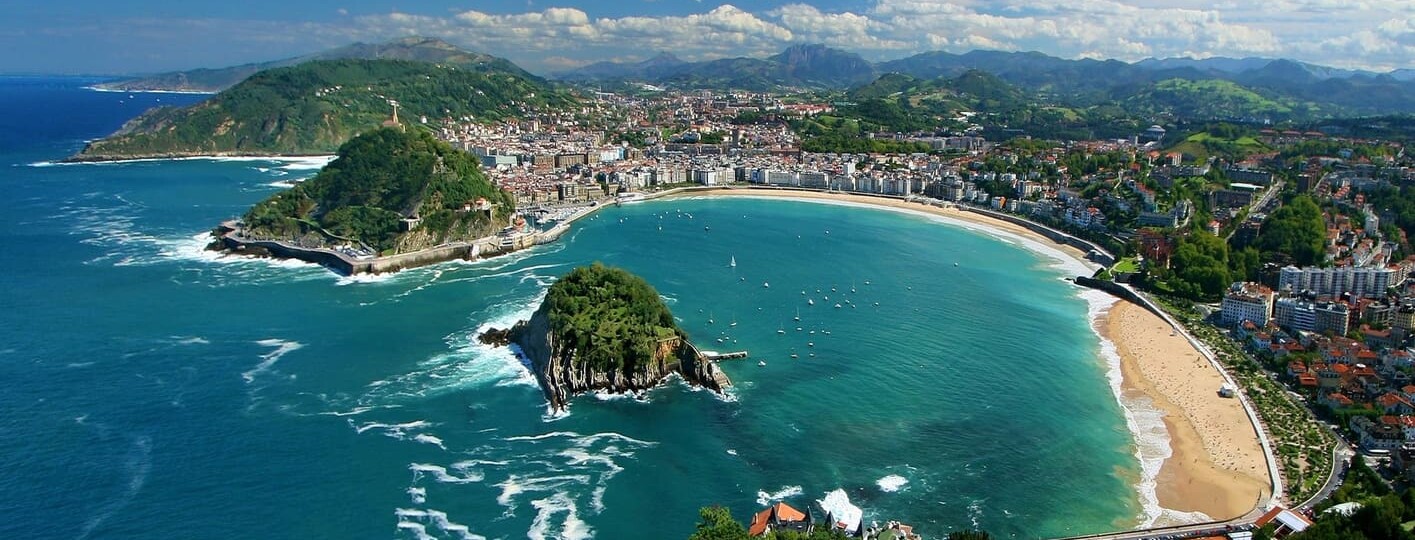
10 Best Places to Visit in Northern Spain | Itineraries + Map
Home | Travel | Europe | Spain | 10 Best Places to Visit in Northern Spain | Itineraries + Map
Deciding where to go and what to see in northern Spain is no easy feat. There are so many beautiful places worth visiting, so your itinerary will depend on your interests and the length of your trip. Regardless, I can assure you that the north of Spain is full of green landscapes and delicious food, so you won’t be disappointed.
The biggest challenge when traveling in northern Spain is choosing a route since there are different autonomous communities you can go through. The northern part of the country generally refers to the regions of Galicia , Asturias , Cantabria , and the Basque Country , so those are the areas I’m focusing on in this guide.
Each of these communities has lovely places and attractions, so keep reading to discover the best northern Spain itinerary and travel ideas.
Guide to planning your northern Spain road trip
There are numerous beaches, mountains, and cities in northern Spain ’s four autonomous communities, so I recommend planning ahead. This way, you can make the most of your trip and see all the places that match your interests and preferences.
In this guide, I’ll include several itineraries through the north of Spain to help you organize a route through this region. You’ll find travel ideas for a weekend getaway as well as longer trips up to two weeks. I’m also sharing some tips for your vacation and my top 10 best places to visit in northern Spain .
- 10 Best places to visit in northern Spain
Northern Spain map
- Weekend getaway
- 10-day trip
- 15-day trip
- Other tips for traveling to northern Spain
1. Bilbao, one of the best cities in northern Spain
First, Bilbao is one of the most popular cities in northern Spain , so it’s a must-see. It’s located in the Basque Country and has undergone some impressive changes in recent years, making it a hub for culture and history.
One of the crown jewels of Bilbao is the Guggenheim Museum , which was designed by famous architect Frank Gehry. In addition to its iconic façade, floral puppy sculpture, and unique structure, the inside of the museum is full of intriguing contemporary art exhibits. If you plan on visiting, I recommend getting your tickets in advance to avoid long lines.
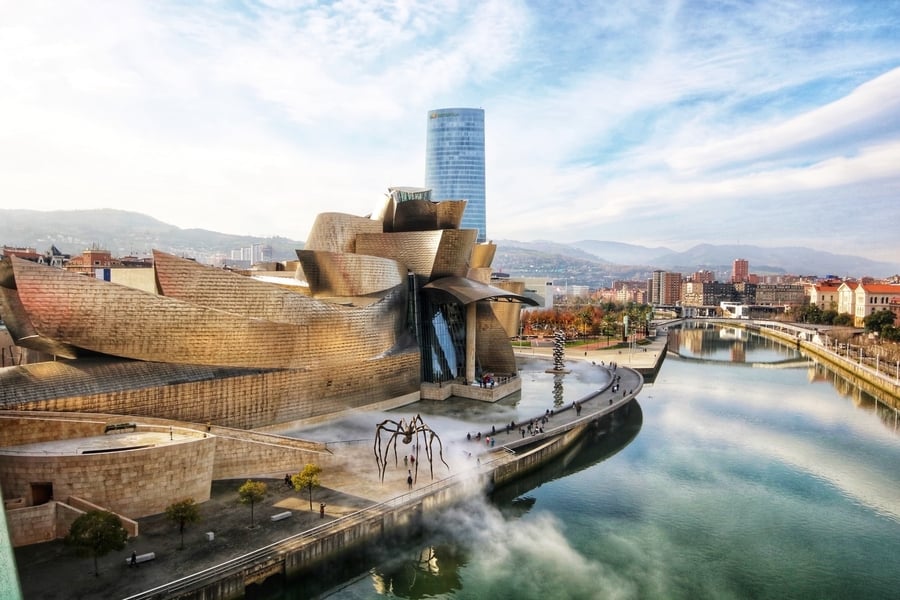
Besides the Guggenheim, I also suggest watching the sunset from the Marzana Pier, a fun place to socialize and grab drinks. You should also stroll through the Arenal, La Ribera Market, and the arches of Plaza Nueva.
You can get a general overview of the city by taking this free tour . Also, Bilbao has some of the best food in northern Spain , so I recommend going out for pintxos , or tapas. Some common pintxos here include gilda (green olives, gherkins, pickled green chiles, and anchovies) as well as various cheeses and meats.
- Recommended accommodation : If you can, book a room at the Gran Hotel Domine Bilbao , one of the best 5-star hotels in Spain that’s located in front of the Guggenheim Museum. It was designed by Spanish artist Javier Mariscal and has a spectacular rooftop terrace overlooking the city.
2. San Sebasti án, a city with some of the best food in northern Spain
Another city in northern Spain ’s Basque Country that you must visit is San Sebastián . It’s always included in the top 5 lists of the most beautiful cities in Spain , and it’s not hard to see why.
One of the most striking features of San Sebastián is that its bay is framed by Mount Igueldo and the island of Santa Clara. This city is home to a couple of urban beaches as well as Playa de la Concha , one of the best beaches in Spain . So, if you’re traveling during the summer, this is a stop you must make along the north coast of Spain .
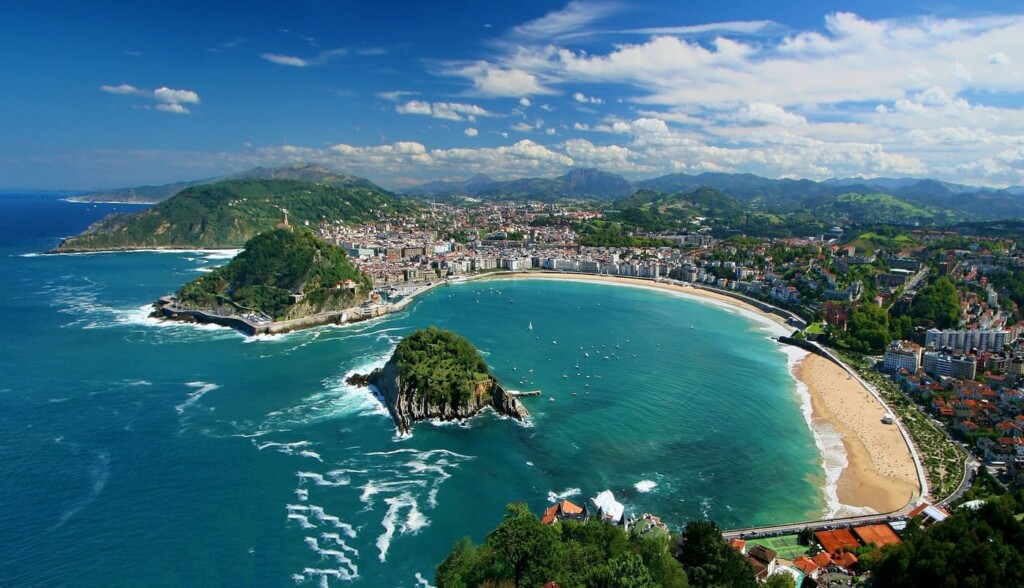
2. San Sebastián, a city with some of the best food in northern Spain
While you’re here, I recommend taking a stroll along the Zurriola Beach Promenade. Follow it around Monte Urgull, along the Paseo Nuevo, and cross the bay to Ondarreata Beach. There, you can see the Peine del Viento , an impressive sculpture by Spanish artists Eduardo Chillida and Peña Gantxegi.
It’s also worth visiting the city center, which is full of plazas, bridges, buildings, and restaurants. In fact, San Sebastián is another great place to eat in northern Spain , thanks to its delicious pintxos . The best way to sample all the delicious options is by taking this gourmet pintxos tour .
- Recommended accommodation : This city is home to one of the best luxury hotels in Spain that has welcomed famous faces like Woody Allen and Elizabeth Taylor. The Hotel María Cristina, a Luxury Collection Hotel is across from the Victoria Eugenia Theater and offers stunning views of the Cantabrian Sea and the Urumea River, so it’s a phenomenal place to stay.
3. Cudillero, one of the most charming places in northern Spain
Over in Asturias, Cudillero is considered one of the most beautiful towns in Spain , so I highly recommend adding it to your northern Spain itinerary . The town’s biggest draw is its unique landscape, which features colorful houses nestled around the blue sea and among the green trees.
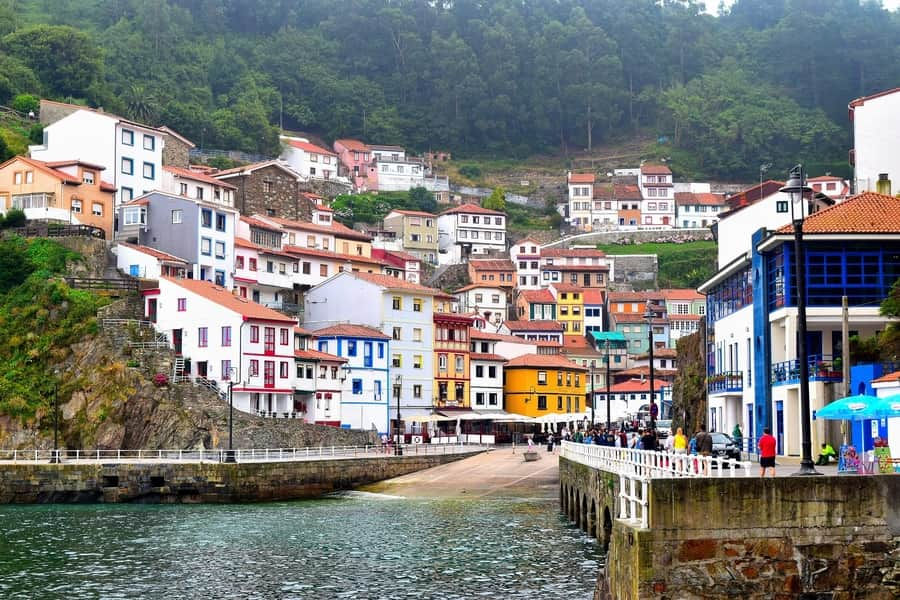
In addition, the nearby community of Castañeras is home to Playa del Silencio , one of the best beaches in Spain with virgin sands and a rustic environment. It’s in the shape of a shell that curves around a rocky cliff, which acts as a natural barrier against the wind. This makes the waters here very calm, so it’s a pleasant beach in northern Spain that you can visit for some peace and quiet.
- Recommended accommodation : Stay at Casona de La Paca , an old Asturian country house with a welcoming atmosphere. It’s surrounded by lush gardens filled with the typical vegetation of Asturias, so it’s a relaxing place to rest before continuing your trip.
4. Santiago de Compostela, a must-see on your route through the north of Spain
If there’s one thing in the north of Spain that you must do at least once in your life, it’s the Camino de Santiago . This is one of the most important hikes in Spain and a sacred pilgrimage that ends in Santiago de Compostela in Galicia.
This city is the perfect place to end such a monumental hike, as it’s full of history and religious significance. One of its most iconic landmarks is its cathedral, which was built at the site where the hidden tomb of the Apostle Santiago was discovered in the 9 th century. Since then, devout followers have been making the pilgrimage here, and in 1805, King Alfonso VI ordered that a Romanesque cathedral be built. You can learn more about the Santiago Cathedral on this guided tour .
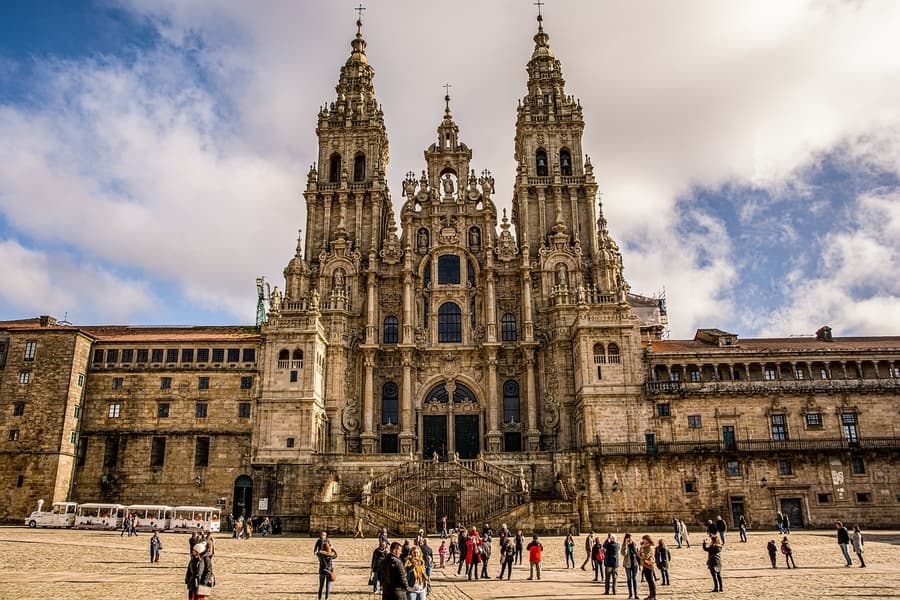
I also suggest you go to the Church of San Martiño Pinario, Alameda Park, and the Plaza de Cervantes, as well as stop at some of the bars and restaurants for some delicious Galician food. Another excellent city tour is this one , which goes to sites like the Palacio de Rajoy, the Plaza de Laterías, and the University of Santiago.
- Recommended accommodation : Stay at the Parador de Santiago – Hostal Reis Católicos , a beautiful 15 th -century building next to the Santiago Cathedral. It used to be an accommodation for traveling pilgrims, and it still has its original vaulted ceilings, stone arches, and tapestries. It also has two restaurants where you can order Mediterranean and Galician dishes.
5. The Lakes of Covadonga, another place to visit in northern Spain
While you’re exploring the northern region of Spain , you can’t miss the Picos de Europa. Not only is this one of the top national parks in Spain, but it’s also home to the Lakes of Covadonga , a magnificent natural treasure.
If you love nature, I can’t recommend this place enough since it has the most beautiful landscapes in the north of Spain . The famous Enol and Ercina Lakes are gorgeous, and the Queen Viewpoint is the perfect spot to look for native birds like bearded vultures and golden eagles.
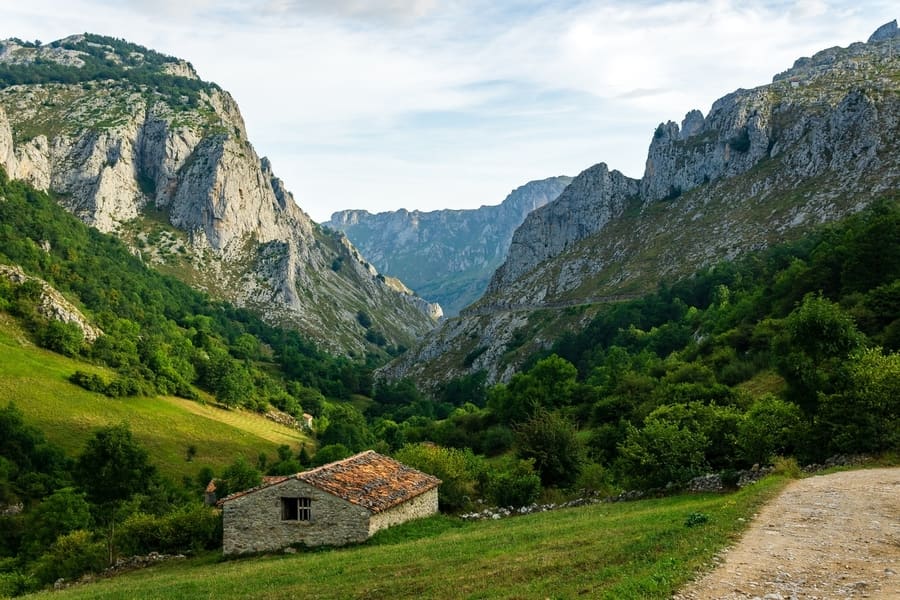
Also, some of the best tours through the north of Spain leave from the Lakes of Covadonga, so if you want to discover more about this incredible environment, you can do so. I recommend this excursion , which includes a visit to a vega , a dwelling where shepherds live during the summer to rest and make Gamoneu cheese, a famous product of this area.
- Recommended accommodation : The Arcea Gran Hotel Pelayo is in the center of the Picos de Europa National Park, so it’s a good place to spend the night. From here, you’ll have nice views of the Cathedral of Covadonga.
6. Santillana del Mar, a medieval town in the north of Spain
Santillana del Mar is another one of the best places to visit in northern Spain . While its name refers to the town being holy, flat, and by the sea, it has none of these characteristics, which is why it’s also known as “the town of the three lies”. That said, there is a lot to do and see in this Asturian town, so I recommend adding it to your northern Spain itinerary .
First, this is one of the most important medieval towns in the country, with thousands of years of history. The best way to learn more about its great historical and artistic value is by taking this free tour (in Spanish). A guide will lead you through the cobbled streets and past iconic landmarks like the House of the Marqués de Santillana and the House of the Archduchess of Austria.
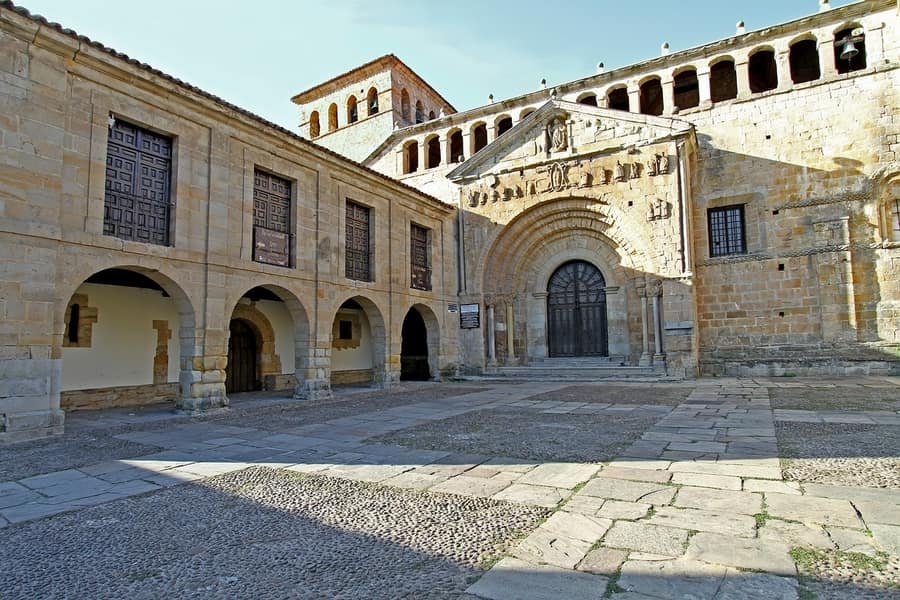
If you prefer something more adventurous, check out the Altamira Museum and the Neocave, a life-size replica of the original Paleolithic caves. This excursion includes a guided tour of the archaeological wonder, its cave paintings, and other curiosities.
- Recommended accommodation : To make your stay extra special, stay at the Parador de Santillana Gil Blas , one of the best paradores in Spain . This modern hotel is in the town’s main square and has a private patio.
7. Playa de las Catedrales, one of the best beaches in northern Spain
The northern coast of Spain is absolutely gorgeous, and it has one of the most unique beaches in the entire country. Playa de las Catedrales in Lugo, Galicia is considered one of the best beaches in Spain , so you must include it in your travel plans.
Playa de las Catedrales is one of the most popular tourist attractions in northern Spain , so much so that it’s known by its nickname rather than its original name of Aguas Santas (Holy Waters). Tourists began calling it the “Beach of the Cathedrals” since the gigantic rock formations here create arches and towers that resemble churches.
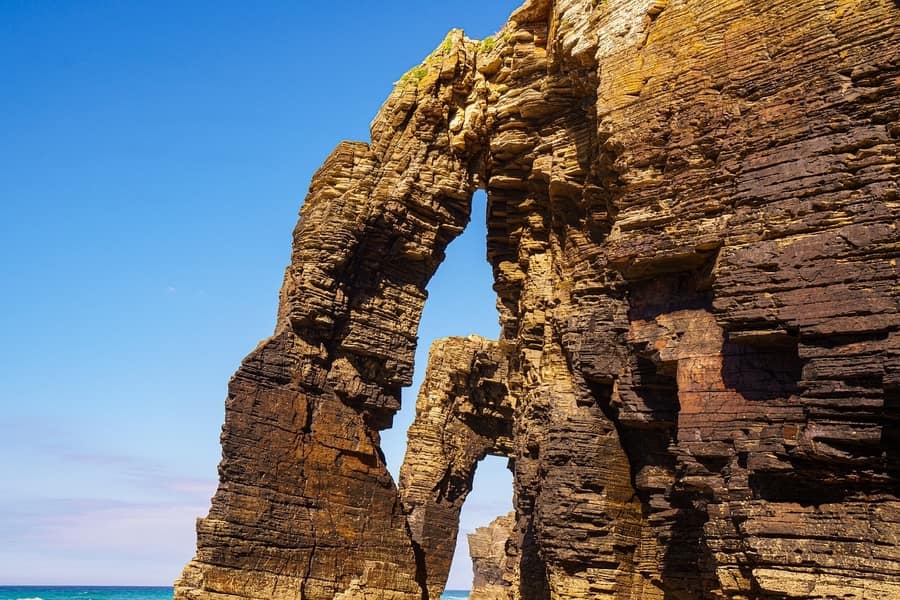
If you want to visit this beach in northern Spain but if you don’t have a car, consider this excursion from La Coruña. It’ll take you to Playa de las Catedrales as well as the city of Lugo so you can see its Roman wall.
- Recommended accommodation : Stay at the Hotel Playa de las Catedrales , which faces the Cantabrian Sea and is within walking distance of Playa de las Catedrales and Arealonga Beach.
8. San Juan de Gaztelugatxe, an amazing place to see in northern Spain
Back in the Basque Country, in the town of Bermeo, the island of San Juan de Gaztelugatxe is a unique place to add to your northern Spain road trip . This gorgeous setting looks like a fantasy land, and it kind of is since it was one of the filming locations for Game of Thrones .
The island is connected to the mainland by a stone bridge, and you can walk along the 241-stepped path to reach the top. It’s worth the effort to climb these famous stone steps, which lead to a hermitage and a place that’s believed to have been visited by John the Baptist. The hermitage has a bell, and it’s said that if you touch it three times, you’ll have good luck, while others think that if you make a wish here, it’ll come true.
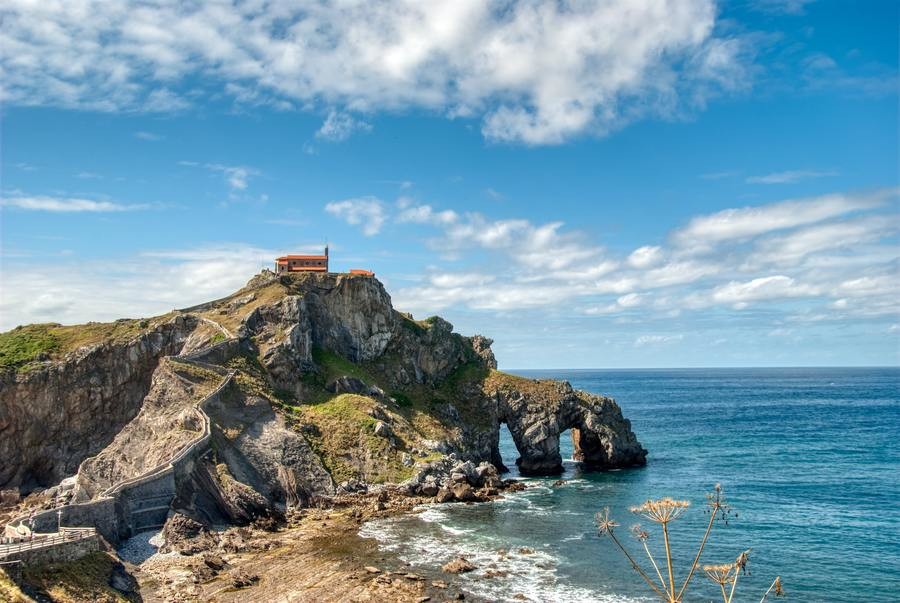
San Juan de Gaztelugatxe is just over 20 miles from Bilbao, another must-see city in northern Spain . You can easily drive there or take this tour from Bilbao if you don’t have a car. The tour includes a stop at the historic city of Guernica, where the first Nazi air raid occurred.
- Recommended accommodation : The Ureta Landa Gaztelugatxe apartments are a good option since they are surrounded by a beautiful landscape and are located just over a mile from Areaga Beach.
9. C íes Islands, a dreamy place to visit on the coast of northern Spain
Another wonderful stop to include on your itinerary through northern Spain is the Cíes Islands . These islands have a privileged location in Galicia and are full of history and beauty.
Back when the Romans passed through this archipelago, they left behind traces of their culture, including pottery and artifacts. Today, you can see these objects in the Pontevedra Museum along the Lérez River in Galicia. Legend has it that Julius Caesar came here during the persecution of the Portuguese people of herminios, who sailed here after fleeing the troops of the Empire.
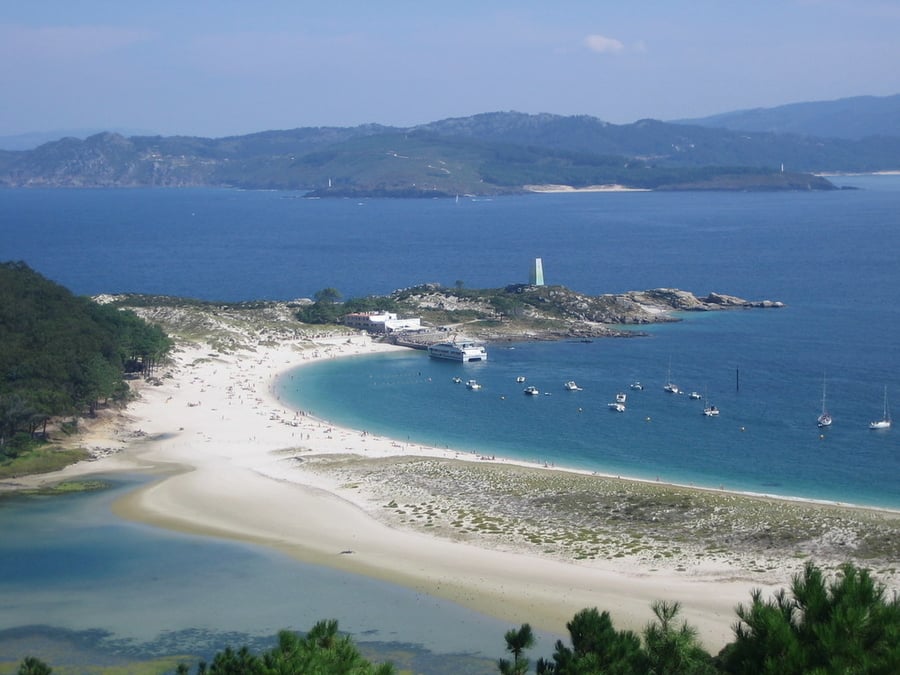
9. Cíes Islands, a dreamy place to visit on the coast of northern Spain
In the Middle Ages, various religious communities began to inhabit the Cíes Islands, but they were wiped out in the mid-18 th century by pirates and the English navy. After this, people began repopulating the island, and by the late 20 th century, the area had become a declared Natural Park and a Special Protection Area for Birds.
Since 2002, the Cíes Islands have been part of the Atlantic Islands of Galicia National Park, along with the archipelagos of Ons, Sálvora, and Cortegada. If you come here, you must visit Playa de Rodas , one of the best beaches in northern Spain with impressive pine forests. Be aware that only 2,200 people can visit per day, so it’s best to book this ticket in advance, which includes the ferry ride and permit to access the beach.
- Recommended accommodation : Stay at the Pazo Los Escudos Hotel Spa & Resort , which offers ocean and garden views as well as relaxing spa facilities.
10. San Vicente de la Barquera, the perfect place for a northern Spain holiday
Finally, San Vicente de la Barquera is a spectacular destination in northern Spain that you should visit. This fishing village is on the western coast of Cantabria and is surrounded by one of the most beautiful landscapes in the country.
What stands out about this place is its medieval history and architecture, including the Puente de la Maza and the ruins of the Convent of San Luis. You should also check out the old town ( Puebla Vieja ), which has been declared a Historic-Artistic Site.
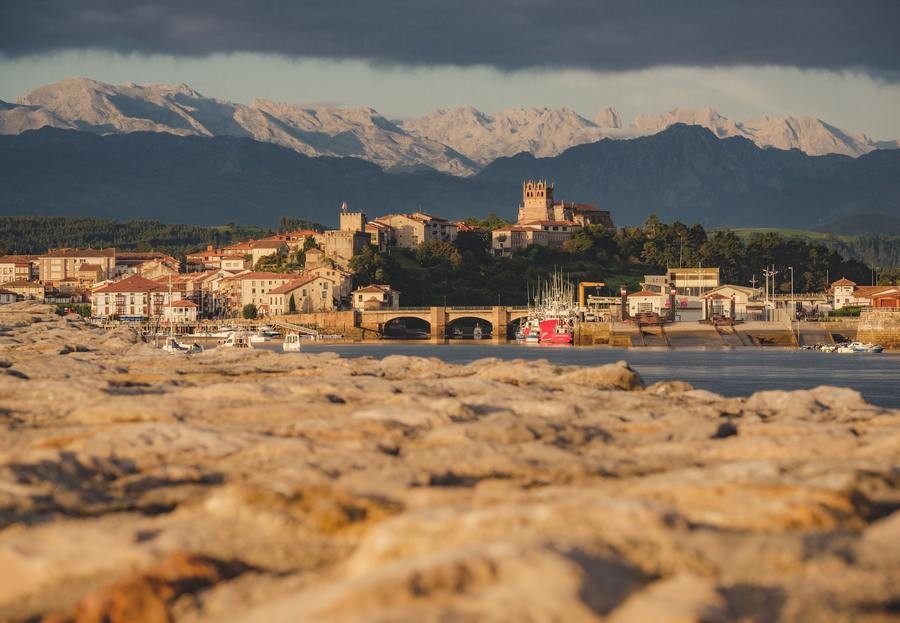
From there, you can continue along Calle Alta to the Palacio de los Corro, which has been converted into the Town Hall. The Church of Santa María de Los Angeles is at the end of the street, and the Castillo del Rey is also nearby.
Of course, a different way to explore this northern Spanish town is by taking this kayaking excursion through the San Vicente estuary. You’ll get great views of the historic town center while enjoying some exercise.
- Recommended accommodation : Just over a mile from the town center, you’ll find the Posada Punta Liñera . This charming rural property has a terrace overlooking the countryside, the Bay of Biscay, and the beautiful surroundings of Cantabria .
To help you organize your northern Spain itinerary , here is a map with all the attractions and cities I mentioned:
I’m also sharing some ideas for planning a road trip through northern Spain , whether you just have a weekend, or you can stay for a couple of weeks .
Best road trip itineraries in northern Spain
Now that you know the best places to visit in northern Spain , here are some itinerary suggestions for a weekend trip and longer road trips of 4, 7, 10, and 15 days .
Weekend trip to northern Spain
For the best weekend visit in northern Spain , consider spending some time exploring the Basque Country. Below you’ll find the route we took during one of our trips.
Day 1: Bilbao
Bilbao is one of the best cities in northern Spain ’s Basque Country, so I definitely recommend adding it to your itinerary. It’s not very big, so you should be able to see most of it in one day.
If you prefer a guided overview of the city, consider doing this free tour in the morning. If you’re exploring on your own, check out the Guggenheim Museum. It’s worth seeing both the outside and inside of the museum, so book your ticket in advance to avoid long lines.
In the afternoon, walk along the water toward Casco Viejo, where you can see the beautiful Arriaga Theater. This area is also full of bars and restaurants where you can try the most delicious pintxos .
I also recommend visiting La Ribera Market and the Santiago Cathedral, then ending your day in Plaza Nueva.
- Recommended accommodation : Stay at the Gran Hotel Domine Bilbao , one of the best 5-star hotels in Spain that’s across from the Guggenheim Museum.
Day 2: San Sebastián
The next day, get up early and head to San Sebastián , another lovely city in northern Spain . It’s about 60 miles away, so it’ll take about an hour and 15 minutes to drive there.
Once you reach San Sebastián, check out the Zurriola Beach Promenade and walk around Monte Urgull and Paseo Nuevo. From there, you can cross the bay to Ondarreta Beach, where you’ll find the Peine del Viento sculpture.
Then, head into the city center and discover its plazas, bridges, and buildings. It’s also worth doing this gourmet pintxos tour to try some delicious food. Also, a visit to San Sebastián isn’t complete without a stop at La Concha Beach, one of the best beaches in Spain .
- Recommended accommodation : You’ll love the Hotel María Cristina , one of the most luxurious hotels in northern Spain with great views of the Cantabrian Sea and the Urumea River.
4-day trip through the north of Spain
If you have a couple more days to add to your itinerary through northern Spain , you’ll be able to discover some of the charming areas in Cantabria and Asturias.
Day 1: Santander and San Vicente de la Barquera
Start your northern Spain road trip in Santander , Cantabria with a tour of the Magdalena Peninsula. Then, continue along the Sardinero to see the most beautiful beaches in Santander, including Mataleñas Beach and the Cabo Mayor Lighthouse. Finish up the morning with a visit to the Botín Center and the Paseo Marítimo.
For the second half of the day, go to San Vicente de la Barquera , which is about 35 miles (30 minutes) from Santander.
Start your visit here by crossing the Puente de la Maza to the ruins of the Convent of San Luis. Then, follow Mata Linares Street to the Puebla Vieja (old town) and see the Tower of the Provost. Along Calle Alta, you can see the Palacio de los Corro, which is now the Town Hall, as well as the Church of Santa María de Los Angeles. If you have time, go to the Castillo del Rey.
- Recommended accommodation : Stay at the Posada Punta Liñera , a rural estate that’s a mile from San Vicente de la Barquera’s city center. It has a lovely terrace that overlooks the countryside and the Bay of Biscay.
Day 2: Llanes and its beaches
After spending the night in San Vicente de la Barquera, get up early and head to Llanes , Asturias. It’s 25 miles away, so it’s only about a 30-minute drive.
Take this opportunity to visit beautiful Gulpiyuri Beach, one of the best beaches in Spain and one of the smallest beaches in the world. It’s also worth seeing Playa de Poo, a family-friendly beach with gentle waves.
In the afternoon, you can visit the port of Llanes and its famous Cubes of Memory, which are painted rocks that serve as a breakwater. Then, take a walk through Llanes’ historic center, which is an Asset of Cultural Interest and a Historic-Artistic Site. Later, enjoy a nice dinner to end your day.
- Recommended accommodation: One of the best places to stay is the Hotel Sablón , which is located on a cliff. Along with lovely views, it offers direct beach access.
Day 3: Ribadesella, Lastres, and Tazones
The next stop on this northern Spain road trip is Ribadesella . It’s also in Asturias, and it takes less than 30 minutes to drive the 20 miles to Ribadesella from Llanes.
Once you arrive, head to the pier where you can take a stroll along the water and through the old town. Check out the Casa de los Ardines, the Casona del Escudo, and the Prieto Cutre Palace, which is now the Town Hall.
Before lunch, I suggest going to Lastres , one of the most beautiful towns in Spain that’s about 20 miles from Ribadesella. It’s known for its steep and narrow streets as well as the Mirador de San Roque, an incredible viewpoint where you can see the town, the sea, and the mountains.
Then, end the day at Tazones , which is less than 20 miles from Lastres. You must walk through the town center and see the iconic shell house (Casa de las Conchas).
- Recommended accommodation : The Apartamentos Rurales Les Mestes has super cozy rooms in a peaceful area of Tazones.
Day 4: Cangas de Onís and Lakes of Covadonga
To start the fourth day of your northern Spain itinerary , go to Cangas de Onís in Asturias. It’s about 45 miles (1 hour) from Tazones, so I recommend getting up early to maximize your time.
The highlights of this city include the Roman Bridge and the old town, where you can people-watch and relax at a cider house ( sagardotegi ), a staple of Basque Country culture.
Then, go to the Lakes of Covadonga , the most beautiful place in northern Spain to end your trip. The Lakes of Covadonga is one of the best national parks in Spain and home to magnificent natural wonders like the Enol and Ercina Lakes. You must explore this impressive landscape, and if you prefer a guide, I suggest this excursion .
- Recommended accommodation : I highly recommend staying at the Arcea Gran Hotel Pelayo , which is in the middle of the Picos de Europa National Park and overlooks the stunning Covadonga Cathedral.
7-day northern Spain road trip
A 7-day itinerary through northern Spain is ideal if you want to explore the areas of the Basque Country, Cantabria, and Asturias. You can see my top destinations and recommendations below, but feel free to change things around to suit your travel plans.
Day 1: Hondarribia and San Sebastián
I’d start this trip through the north of Spain in Hondarribia , in the Basque Country. If you have a rental car, you can park it in the lot by the Puerta de Santa María, then walk into the walled city to see landmarks like Plaza del Obispo, Calle Mayor, and Plaza de Armas.
In the afternoon, head to San Sebastián , which is about a 30-minute (15-mile) drive away. San Sebastián is one of the most charming Spanish cities with an impressive town center. It’s also home to some of Spain’s best beaches , including La Concha Beach.
- Recommended accommodation : The best place to stay in is the Hotel María Cristina , one of the best luxury hotels in Spain . it’s across from the Victoria Eugenia Theater and offers great views of the Cantabrian Sea and the Urumea River.
The next day, take some time to explore the hidden gems of San Sebastián. Walk along Zurriola Beach and go around Monte Urgull. If you follow the Paseo Nuevo and cross the bay, you’ll find Ondarreata Beach and the Peine del Viento sculpture by Spanish artists Eduardo Chillida and Peña Gantxegi.
Afterwards, you can go back to the town center to enjoy some delicious pintxos and Spanish cuisine. This gourmet tour is the best option if you want to try all the typical pintxos of this region.
- Recommended accommodation : Return to the Hotel María Cristina for a good night’s sleep before continuing your northern Spain road trip .
Day 3: Bilbao
For day three, wake up early and make the drive to Bilbao , one of the best cities in northern Spain . It’s about 65 miles away, so it’ll take about an hour and 15 minutes by car.
Check out the famous Guggenheim Museum and its stunning exterior, which was designed by architect Frank Gehry. It’s also worth browsing the art exhibits inside, so if you plan on visiting, get your ticket in advance.
I also recommend going past the Arenal, La Ribera Market, and the arches of Plaza Nueva. Depending on your interests, it’s worth doing a pintxos tasting or taking this free tour for more insights into the city.
To end your day, you must watch the sunset from the Marzana Pier. It’s a dreamy location where you can spend a romantic evening with your partner and grab a drink.
- Recommended accommodation : If you can, book a room at the Gran Hotel Domine Bilbao , one of the best 5-star hotels in Spain . It was designed by Spanish architect Javier Mariscal and has an impressive rooftop terrace where you can see the city and its surroundings.
Day 4: Santillana del Mar and Comillas
To start this fourth day of your northern Spain trip , get up early and make your way to Santillana del Mar in Cantabria. It’s 75 miles away, so it’s about a 1.5-hour drive.
Santillana del Mar is a medieval Spanish town with lots of historical and artistic value. You’ll love strolling through its cobblestone streets and past picturesque landmarks like the House of the Marqués de Santillana or the Palace of the Archduchess Margarita of Austria. If you have time, book this free tour (in Spanish) or this guided tour to visit the Altamira Museum and Neocave.
Next, continue your journey by visiting the beautiful town of Comillas , which is about a 20-minute (15-mile) drive away. Don’t miss the most important monuments here like the Plaza de los Tres Caños, the Plaza de la Constitución, the Church of San Cristóbal, and the Capricho Villa by Gaudí.
- Recommended accommodation : I suggest returning to Santillana del Mar and spending the night at the Parador de Santillana Gil Blas , a modern hotel in the main square.
Day 5: Llanes and Ribadesella
If you spent the night in Santillana del Mar, then you can wake up early and drive to Llanes , Asturias. It’s about 40 miles away, so the drive takes about 45 minutes. Once you reach Llanes, check out the port and see the famous Cubes of Memory along the shoreline. Then, take a walk through the old town, which is a declared Historic-Artistic Site and Asset of Cultural Interest.
Grab some lunch, then drive to Ribadesella , which is just 20 miles from Llanes. You should have enough time to stroll along the pier and see the most famous sights in Ribadesella’s old town.
- Recommended accommodation : Stay at the Hotel Don Pepe in Ribadesella, a clean hotel with bright and spacious rooms.
Day 6: Cudillero and Luarca
Next, it’s time to visit Cudillero , a must-see area of northern Spain . It’s about 70 miles from Ribadesella, so I suggest getting up early to make the 1 hour and 15-minute drive.
Cudillero is one of the most beautiful towns in Spain and is located on a cliff, so it’s quite scenic. Go up to the La Garita Viewpoint for an amazing perspective of the town, then spend some time exploring the narrow streets of the center. Make your way to the Plaza de la Marina, where you can grab a bite to eat and see the port.
Since Cudillero is pretty small, you should have time to also visit Luarca , which is less than 30 minutes away. This is another charming Spanish town with a bustling port. Take a walk through this small seaside town and discover the Puente del Beso, the Casas de Indianos, and the Gardens of the Fonte Baxa.
- Recommended accommodation : The Hotel Villa de Luarca is an elegant accommodation with a great location by the town center and the beach.
Day 7: Ribadeo, Playa de las Catedrales, and A Coruña
For the last day of this week-long holiday in northern Spain , go to Ribadeo , which is 30 miles from Luarca and a 30-minute drive away.
One of the sites here that you can’t miss is the Plaza de España. It’s where several iconic buildings and monuments are located, such as the Pazo de Ibáñez and the Torre de los Moreno. Some other places to see in town include the Convent of Santa Clara, the lively port, and the Chapel of San Miguel, which has lovely views.
Also, before leaving Ribadeo, you must visit Playa de las Catedrales , a National Monument and one of the top beaches in Spain . Then, get in the car and head to A Coruña , which is about an hour and a half (95 miles) away.
There are many beautiful things to see in this city, so I suggest taking this free tour (in Spanish) to see as much as possible. You could also visit the historic center on your own and check out popular sites like the Galerías la Marina, the Plaza de María Pita, and the Jardines de Santiago.
- Recommended accommodation : The NH Collection A Coruña Finisterre has a great location that’s within walking distance of the center and some of the city’s main attractions.
10-day itinerary for northern Spain
With 10 days in northern Spain , you can expand your itinerary to include the Basque Country, Cantabria, Asturias, and Galicia.
Day 1: San Sebastián
San Sebastián is one of the most beautiful Spanish cities , as well as an excellent starting point for your northern Spain itinerary . Begin your visit with a stroll along Zurriola Beach, then go around Monte Urgull and follow the Paseo Nuevo to Ondarreta Beach. There, you can see the famous Peine del Viento sculpture.
Continue your adventure by walking through the city center and getting lost among the streets, squares, bridges, and historical buildings. To all this, I must add La Concha Beach, one of the best beaches in Spain . I also recommend this gourmet tour , especially if you want to try the most popular pintxos in San Sebastián.
- Recommended accommodation : Stay at the Hotel María Cristina , one of the best 5-star hotels in Spain that’s across from the Victoria Eugenia Theater. Not only is the inside gorgeous, but you’ll have great views of the Cantabrian Sea and the Urumea River.
Day 2: Bilbao
Bilbao is another city in northern Spain that you can easily explore on foot, and you can see all its main tourist attractions in one day. It’s 65 miles from San Sebastián, so I recommend waking up early to make the one hour and 15-minute drive.
Start your visit to Bilbao with this free tour , or check out the famous Guggenheim Museum . It was built by famed architect Frank Gehry and is known for its floral puppy sculpture out front. If you plan on looking at the art exhibits inside, I suggest getting your ticket in advance.
Afterwards, head toward the estuary and follow it to the Casco Viejo, where you can see the Arriaga Theater. It’s also worth visiting La Ribera Market, the Santiago Cathedral, and Plaza Nueva. Along the way, be sure to stop for delectable pintxos .
- Recommended accommodation : Stay at the Gran Hotel Domine Bilbao , one of the best 5-star hotels in Spain . It was designed by Spanish architect Javier Mariscal and is in front of the Guggenheim Museum.
Day 3: Castro Urdiales, Faro del Caballo, and Santander
The third day of this northern Spain road trip begins with a visit to Castro Urdiales , a city in Cantabria with beautiful beaches, a lively port, and an interesting old town. It’s just 20 miles from Bilbao, so it’ll only take about a half hour to drive there.
After spending the morning discovering Castro Urdiales, make your way to Santander, stopping at the Faro del Caballo along the way. This picturesque place is located between some seaside cliffs, and it’s about 25 from Castro Urdiales. Be aware that if you make this pitstop and climb the 763 steps of the cliffs, it’ll cut into your time at Santander, which is 30 miles from here.
Regardless of whether or not you take this detour, you should get to Santander with enough time to walk through the Sardinero and enjoy a cold beer at the Cabo Mayor Lighthouse, which offers stunning views.
- Recommended accommodation : The NH Ciudad de Santander is a simple, clean hotel with a great location, so it’s a good value for your money.
Day 4: Santillana del Mar, Altamira Caves, and Comillas
For day four, I suggest making a stop in Santillana del Mar , where you can see the famous Cuevas de Altamira , one of the most important Paleolithic sites in the world. Santillana del Mar is an intriguing medieval town in northern Spain that’s less than 20 miles from Santander, so it’ll only take a half hour to get there.
Use your time in Santillana del Mar to visit the Collegiate Church of Santa Juliana, Plaza Mayor, and the historic town center, which is characterized by cobblestone streets and small mountain homes. You can either do this free tour to learn more about the city, or this guided tour , which takes you to the Altamira Museum and the Neocave.
Later, make the 20-minute drive to Comillas , one of the most scenic towns in Cantabria. Here, you can see one of the few works by Gaudí that’s outside of Catalonia, the Capricho Villa. Some other highlights of this city include the Sobrellano Palace, the Chapel Pantheon of the Marquises of Comillas, and the historic center, where you’ll find the Fuente de los Tres Caños (the Fountain of the Three Pipes).
I recommend returning back to Santillana del Mar to spend the night.
- Recommended accommodation : Stay at the Parador de Santillana Gil Blas , a modern hotel located in the main square.
Day 5: Cabezón de la Sal Sequoia Forest, Llanes, and its beaches
If you spent the night in Santillana del Mar, you’ll be less than 20 minutes from the Cabezón de la Sal Sequoia Forest . This is one of the best places to visit in northern Spain , especially for nature lovers, as the redwoods here reach up to 130 feet tall. The route through the forest takes about two hours and is absolutely breathtaking.
After your forest trek, go to Llanes , which is just 30 minutes away. This Asturian city is full of beaches and coves, although it also has a lovely historic center. Take some time to enjoy the coast as well as the interesting monuments and buildings in town.
- Recommended accommodation : Sleep at the Hotel Sablón , a cliffside accommodation with amazing views and direct beach access.
Day 6: Lakes of Covadonga, Covadonga, and Cangas de Onís
Next, it’s best to get up early so you can make the one hour and 20-minute drive to the Lakes of Covadonga with time to spare. This place is within the Picos de Europa National Park, one of the best national parks in Spain and a must-see during your tour of northern Spain .
This natural wonder is full of pristine landscapes, the glacial lakes of Enol and Ercina, as well as incredible attractions like the Sanctuary of Covadonga. This is where you can take a nature walk, breathe the fresh mountain air, and mingle with the grazing cows.
You can visit the Lakes of Covadonga for free, although I like this guided tour since it starts from Cangas de Onís , another place I recommend visiting. There, you can see the old Roman Bridge and the historic center. It’s full of churches and hermitages, most notably the Church of Our Lady of the Assumption of St. Mary and the hermitage of Santa Cruz.
- Recommended accommodation : The Arcea Gran Hotel Pelayo is in the middle of the Picos de Europa National Park and offers beautiful views of the Covadonga Cathedral, so it’s the perfect place to rest after a full day.
Day 7: Gijón and Oviedo
The next stop is Gijón , which is about 60 miles away, so get up early to make the 1.5-hour drive. Once you get there, start with a walk along San Lorenzo Beach, then go up to the Cerro de Santa Catalina and see the Elogio del Horizonte sculpture over the water.
Later, check out the Cimadevilla neighborhood, the oldest part of the city with interesting sites like the Palacio de Revillagigedo, Plaza del Marqués, and Plaza Mayor. You can also do this free tour (in Spanish) if you prefer a guided walk through the city.
Depending on how much time you have, you can stop by the port or go to Oviedo , which is about a 30-minute drive away. This city in northern Spain is full of historic attractions like El Fontán Square and the Plaza de la Catedral, where you can see the Cathedral of San Salvador.
I also recommend walking through the city center and looking for the interesting statues of famous figures. For example, on Calle Milicias Nacionales, you’ll find a Woody Allen statue, while San Francisco Park has a statue of the Argentine cartoon character Mafalda. Finally, you can’t leave Oviedo without stopping at La Gascona for delicious cider.
- Recommended accommodation : The beautiful Gran Hotel España is the best place to stay thanks to its spacious rooms and great location by the city center.
Day 8: Ribadeo and Playa de las Catedrales
Ribadeo should be included in any northern Spain itinerary , so don’t miss it. Make sure you get up early so you can drive the 85 miles to Ribadeo from Oviedo, which will take about 1.5 hours.
Among the many attractions here, the Plaza de España stands out. It’s home to two historical monuments, the Pazo de Ibáñez and the Torre de los Moreno. You should also walk through the streets of the city center to see the Convent of Santa Clara and the Chapel of San Miguel, as well as the port.
There are also excellent lookout points here, such as the Ribadeo Watchtower and the Isla Pancha Viewpoint. That said, you should definitely make time to visit Playa de las Catedrales , one of the best beaches in Spain that’s also a National Monument.
- Recommended accommodation : Stay at the Hotel Playa de las Catedrales , which faces the Cantabrian Sea and is next to Arealonga Beach. Plus, it’s just a ten-minute walk from Playa de las Catedrales.
Day 9: A Coruña
If you’re leaving from Playa de las Catedrales, then make sure you wake up early enough to make the 1.5-hour drive (95 miles) to A Coruña . This city in northern Spain ’s Galicia region is a must-see, and if it’s your first time here, consider taking this free tour .
If you’re visiting the city on your own, I recommend stopping by the promenade, where you can see the Castle of San Antón and the Sculpture Park of the Tower of Hercules. Another iconic site is the Ciudad Vieja, the old part of the city with some of the best tapas.
You’ll also find some of the best beaches in Galicia here, such as Riazor Beach, a beautiful place in northern Spain to go swimming or sunbathing. Finally, I suggest ending your day with a walk around the port and admiring the amazing views of A Coruña from Monte de San Pedro.
- Recommended accommodation : The NH Collection A Coruña Finisterre has a great location that’s within walking distance of the city center and main attractions.
Day 10: Santiago de Compostela
The last day of this northern Spain itinerary involves a visit to Santiago de Compostela , which is about 50 minutes from A Coruña by car.
Once you reach the city, consider taking this free tour or exploring the tourist attractions on your own. Of course, one of the sites you must see is the Santiago Cathedral, which is the final destination for pilgrims making the trek along the Camino de Santiago, one of the most important hikes in Spain . You can learn all about the secrets of this church by taking this guided tour .
I also recommend roaming the streets of the old city and walking through the Parque de la Alameda, an urban park full of chestnut, eucalyptus, and oak trees. The Mercado de Abastos is a market that’s been around for over a century, so I suggest stopping by to browse or pick up some products. If you like art, the City of Culture of Galicia is a complex of cultural and artistic buildings that you’ll find interesting.
- Recommended accommodation : Stay at the Parador de Santiago – Hostal Reis Católicos , a beautiful 15 th -century building next to the Santiago Cathedral. It still has some of its original architecture, as well as two delicious restaurants specializing in Mediterranean and Galician food.
15-day road trip through northern Spain
A 15-day road trip through northern Spain is the perfect opportunity to get to know this area of the country in depth. Here is the route I suggest following:
This 15-day northern Spain itinerary begins in Hondarribia in the Basque Country. I recommend leaving your rental car in the parking lot by the Puerta de Santa María and heading into the city on foot. There, you can visit points of interest like Plaza del Obispo, Calle Mayor, and Plaza de Armas.
After strolling through town, head to San Sebastián , which is about a 30-minute (15-mile) drive from Hondarribia. San Sebastián is one of the most beautiful cities in Spain , as well as where you can see La Concha Beach, one of Spain’s best beaches .
- Recommended accommodation : Stay at the Hotel María Cristina , one of the best luxury hotels in Spain . It’s across from the Victoria Eugenia Theater and offers great views of the Cantabrian Sea and the Urumea River.
Dedicate day two of your tour through northern Spain by exploring the ins and outs of San Sebastián . I recommend going around Monte Urgull, where you’ll find the Paseo Nuevo. If you follow it to the end, you’ll reach Ondarreta Beach and the famous Peine del Viento sculpture.
Continue your visit by spending some time in the city center, which is full of interesting plazas, bridges, and historical buildings. You also can’t leave San Sebastián without trying the typical pintxos , either by stopping at a café or taking this gourmet tour .
- Recommended accommodation : Spend another night at the Hotel María Cristina , or book this place for your second night if you didn’t stay here the first night.
On day three, wake up early and head to Bilbao , which is 65 miles from San Sebastián, or about a one hour and 15-minute drive away. This is another city in northern Spain that you can explore on foot, so consider taking this free tour to get to know all the main attractions.
Of course, the crown jewel of Bilbao is the Guggenheim Museum , which is known for its floral puppy sculpture and mesmerizing architecture by Frank Gehry. If you want to go inside the museum and peruse the art collection, I recommend getting your tickets in advance.
Afterwards, follow the estuary to the Casco Viejo (old town), where you can see the Arriaga Theater. Some other cool places in Bilbao include La Ribera Market, the Santiago Cathedral, and Plaza Nueva. Of course, be sure to stop and try some pintxos that are typical to Bilbao.
- Recommended accommodation : Located by the Guggenheim Museum, the Gran Hotel Domine Bilbao is one of the best 5-star hotels in Spain and has a beautiful structure designed by Spanish architect Javier Mariscal.
Day 4: Santander
The next day, take some time to discover the beautiful city of Santander . This free tour is a great introduction to Santander, although you can also explore the city on your own. If you do, I recommend starting with a little tour around the Magdalena Peninsula, one of the most beautiful places in northern Spain .
For your next stop, head to El Sardinero, one of the most popular beaches in Santander. It’s also worth visiting Mataleñas Beach, where you can admire the lovely views from the Cabo Mayor Lighthouse. Another way to get a panoramic perspective of the area is by taking the Río de la Pila funicular.
End your day with a visit to two iconic places in the city, the Botín Center and the Paseo Marítimo.
- Recommended accommodation : The NH Ciudad de Santander is a simple hotel, but it’s clean, well-located, and a great value for your money.
Day 5: Santillana del Mar and Comillas
Santillana del Mar is a must-see in northern Spain , so for day five of your itinerary, I suggest heading there. This medieval Spanish town is less than 20 miles from Santander, so it’s only about a 30-minute drive.
The Cuevas de Altamira is the most famous attraction in the city, although you should also check out the Collegiate Church of Santa Juliana, Plaza Mayor, and the historic old town, with its cobbled streets and small mountain homes. If you have time, consider this free tour (in Spanish) or this guided tour to the Altamira Museum and Neocave.
That same day, you can go to Comillas since it’s just 12 miles (20 minutes by car) from Santillana del Mar. This city is home to some beautiful structures, like the Sobrellano Palace, the Chapel Pantheon of the Marqueses de Comillas, and the Fuente de Tres Caños (The Fountain of Three Pipes). This is also where you can see one of the few works by Gaudí outside of Catalonia, the Capricho Villa.
- Recommended accommodation : Return to Santillana del Mar and spend the night at the Parador de Santillana Gil Blas , a modern hotel in the main square.
Day 6: San Vicente de la Barquera and Cueva del Soplao
The sixth day of this northern Spain itinerary begins in San Vicente de la Barquera in Cantabria, just 25 minutes away. I suggest starting your visit here by crossing the Puente de la Maza and seeing the Convent of San Luis, an iconic landmark in the city.
Then, cross the town and follow Mata Linares Street to Puebla Vieja , or the old town. Here, you can see the Provost Tower and the Palacio de los Corro, which is now the Town Hall. If you have time, you can visit the Castillo del Rey, although I highly recommend seeing the Cueva del Soplao . This impressive rock formation is a must-see in northern Spain, and you can book a guided tour and entry ticket here .
- Recommended accommodation : Spend another night at the Parador de Santillana Gil Blas , which is very close by.
Day 7: Llanes and Ribadesella
If you spent the night at the Parador de Santillana Gil Blas , you’ll be just 45 minutes from Llanes , Asturias, the next stop on this northern Spain road trip .
Llanes is a city that’s full of lovely beaches and coves, although the historic old town is also worth seeing. In fact, it has been declared an Asset of Cultural Interest and a Historic-Artistic Site, so check it out and be sure to see the Cubes of Memory breakwater rocks.
Then, you can grab something to eat and head to Ribadesella , which is 20 miles away. Take a walk through the port and stroll through the old town, which is super scenic and full of historic structures.
- Recommended accommodation : The Hotel Don Pepe is a nice place to stay with spacious rooms and a good location.
Day 8: Gijón
For day eight, drive to Gijón , Asturias, which is 40 miles, or about 45 minutes, from Ribadesella. You can start your visit here with this free tour (in Spanish) or by exploring on your own. There are lots of cool places to check out, such as San Lorenzo Beach, the Cerro de Santa Catalina, and the Elogio del Horizonte, a sculpture by the water.
Then, journey into the Cimadevilla neighborhood, the oldest part of the city where you can see Revillagigedo Palace, Plaza del Marqués, and Plaza Mayor. To end the day, go to the port and Poniente Beach, where you can watch one of the most beautiful sunsets in the north of Spain .
- Recommended accommodation : Hotel Begoña is quite basic, but it’s clean, comfortable, and situated in the heart of the city.
Day 9: Oviedo
Oviedo is another city in northern Spain you can’t miss, and it’s only 30 minutes from Gijón. Among the many attractions here, the Plaza del Fontán, the Plaza de la Catedral, and the Cathedral of San Salvador stand out.
I also suggest going into the city center and looking for some of the interesting statues here, like those of Woody Allen or the Argentine character Mafalda. The former is on Calle Milicias Nacionales, while the latter is in San Francisco Park, another place in Oviedo you should spend some time at.
Moreover, Oviedo is home to three pre-Romanesque churches that you should see: Santa María del Naranco, San Miguel de Lillo, and San Julián de los Prados. If you feel like going shopping, you’ll find all kinds of goodies on Calle Uría, and for the most delicious food, go to La Gascona.
- Recommended accommodation : The Gran Hotel España is one of the best places to stay. In addition to its spacious, beautiful rooms, it’s close to the city center and several tourist attractions.
Day 10: Cudillero and Luarca
Cudillero is a beautiful Asturian town situated on a cliff, making it one of the best places to visit in northern Spain . It’s about 40 miles from Oviedo, so wake up early in the morning and make the 45-minute drive to this gorgeous city.
Once you arrive, go to the La Garita Viewpoint for a spectacular overview of the town. Then, head down into the city center and walk among the narrow streets as you make your way to Plaza de la Marina. This is one of the liveliest areas of Cudillero with numerous bars and restaurants.
Check out the port, then make the 30-minute drive to Luarca , another lovely city in northern Spain . Here, you can stroll through the town center and see the most popular attractions, such as the Puente del Beso, the Casas de Indianos, and the Jardines de la Fonte Baxa.
- Recommended accommodation : The Hotel Villa de Luarca is an elegant hotel with a great location by the town center and the beach.
Day 11: Ribadeo and Playa de las Catedrales
Spend the next day visiting Ribadeo , another beautiful city in the north of Spain that’s just 30 minutes from Luarca. Among the many attractions in Ribadeo, you can’t miss Plaza de España, which is where the Pazo de Ibáñez and the Torre de los Moreno are located.
As you walk through the town’s streets, you’ll find other interesting sites like the Convent of Santa Clara and the Chapel of San Miguel. It’s worth going inside the chapel for the views, although you’ll also get a nice perspective of the city from the port.
Also, if you want to capture some amazing photos, go to the Ribadeo Watchtower or the Isla Pancha Viewpoint. Finally, make sure you leave enough time to visit Playa de las Catedrales , a National Monument and one of the best beaches in Spain .
- Recommended accommodation : Have a good night’s sleep at the Hotel Playa de las Catedrales , which faces the Cantabrian Sea. It’s right next to Arealonga Beach and just a ten-minute walk from Playa de las Catedrales.
Day 12: A Coruña
For day 12, it’s time to visit A Coruña , an incredible area of northern Spain . It’s about 95 miles from Playa de las Catedrales, so get up early and get the 1.5-hour drive out of the way.
In A Coruña, you can take this free tour (in Spanish) to visit some of the city’s highlights and learn more about its history. If you’re touring the city on your own, I recommend starting at the promenade, which leads to the Castle of San Antón and the Sculpture Park of the Tower of Hercules. Also, be sure to check out the Ciudad Vieja (Old Town), where you can stop for yummy tapas.
After lunch, take a walk along Riazor Beach, one of the most picturesque beaches in Galicia. Then, stroll around the port and end your day by watching the sunset from Mount San Pedro.
- Recommended accommodation : You’ll have a comfortable stay at the NH Collection A Coruña Finisterre , which is just a short distance from the city center and several main attractions.
Day 13: Santiago de Compostela
One of the best places in northern Spain that you must add to your route is Santiago de Compostela , which is a 50-minute drive from A Coruña.
Have fun exploring the city on your own or taking this free tour . Santiago de Compostela is the final stop on the Camino de Santiago, a religious pilgrimage and one of the most important hikes in Spain . The route specifically ends at the Santiago Cathedral, which you can learn more about on this guided tour .
You should also spend some time wandering the streets of the Old City, as well as visiting Alameda Park. I also recommend browsing the Mercado de Abastos, where you can buy fresh Galician cheeses and products. If you’re an art lover, you can’t miss the City of Culture of Galicia, a complex full of contemporary galleries and artistic spaces.
- Recommended accommodation : Stay at the Parador de Santiago – Hostal Reis Católicos , an old pilgrim accommodation that’s inside a 15 th -century building. It’s next to the Santiago Cathedral and has some original architectural elements as well as a Mediterranean and Galician restaurant.
Day 14: Vigo
People sometimes overlook the city of Vigo , but if you’re taking a 15-day road trip through northern Spain , you’ll have time to visit it. Vigo is 55 miles (one hour) from Santiago de Compostela, so get up early and make your way there in the morning.
You can take this free tour of Vigo to get a general overview of the city and learn more about its top attractions. Some of the most famous places here include the Praza da Constitución, the Mercado da Pedra, the Plaza de los Pescadores, and the Praza do Berbés.
You should also check out the Bouzas neighborhood, a traditional seafaring community. For the best views, go to Mount O Castro, where you can see the entire city and the Cíes Islands.
- Recommended accommodation : The Hotel Pazo Los Escudos Spa & Beach is one of the best options with a spa and rooms overlooking the ocean and the gardens.
Day 15: Cíes Islands
For the last day of this northern Spain itinerary , take a boat from Vigo and go to the Cíes Islands . You can book this ferry ride , which also includes your permit to access the islands.
These paradisiacal islands are home to Playa de Rodas, one of the best beaches in northern Spain , and the entire world. There are also four awesome trails, so you can find a northern Spain hike to suit your fitness level. The trails are the Cíes Lighthouse (2.1 miles), the Faro da Porta (1.6 miles), the Alto do Príncipe (1.1 miles), and the Faro do Peito (1.6 miles).
Without a doubt, this day out in nature is the best way to end your two-week trip through the north of Spain .
- Recommended accommodation: Spend another night at the Hotel Pazo Los Escudos Spa & Beach .
Best time to visit the north of Spain
The best time to visit northern Spain is during the spring and autumn months when the temperatures are milder. If you plan on going to some parks or natural areas, the autumn season offers the most stunning colors.
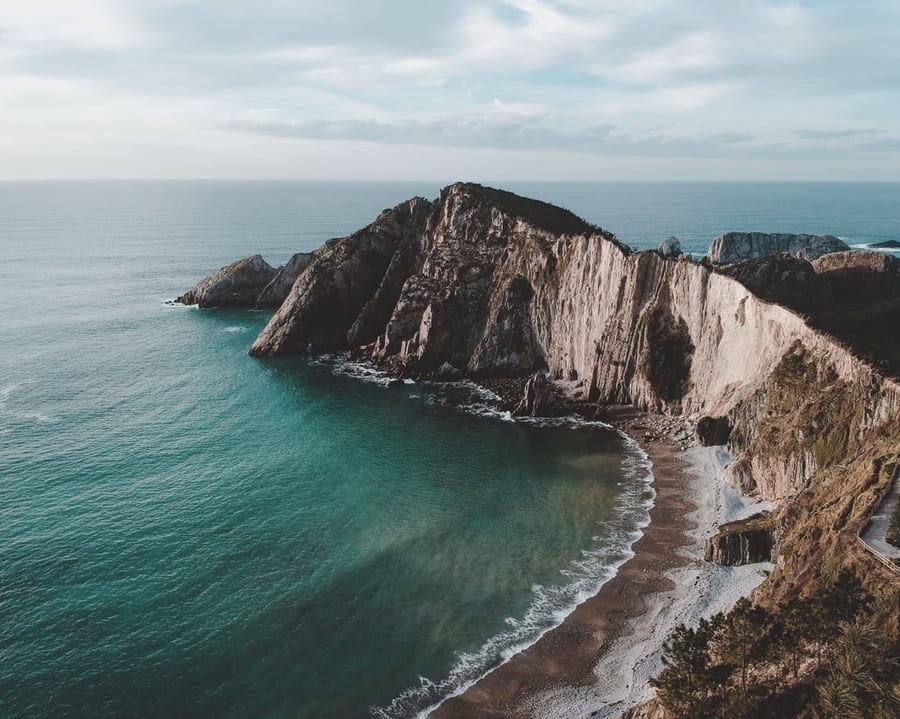
That said, the summer weather in northern Spain is more pleasant compared to other areas of the country, so this time of year can also be a good time to visit. You can take advantage of the summer temperatures to enjoy the best beaches in northern Spain .
If you planned on going to the north of Spain in the winter, you still can, although you should be aware that there will be much more precipitation. On the other hand, the prices for flights and hotels will be cheaper.
Main airports in northern Spain and other ways to get there
There are several airports in northern Spain , so you shouldn’t have trouble finding a good place to arrive in the country, regardless of your starting point.
In Galicia :
- A Coruña Airport
- Santiago-Rosalía de Castro Airport
- Vigo Airport
In Asturias :
- Asturias Airport
In Cantabria :
- Santander Airport
In the Basque Country :
- Bilbao Airport
- San Sebastián Airport
- Vitoria Airport
To find the best flight deals to the north of Spain , I recommend using Kiwi and Skyscanner . We’ve had the best luck finding cheap flights with Kiwi, and you can even activate price-drop alerts and keep track of the flights that interest you.
How to get around the north of Spain
The easiest way to get around during your northern Spain road trip is by renting a car. We have a complete guide on how to rent a cheap car , although I’ll tell you now that we always use DiscoverCars since they offer the best prices.
Of course, if you don’t want to drive, you won’t have any problems getting around since there are all kinds of tours in northern Spain . You can also get to different towns by train or bus, and I recommend checking Omio and Flixbus for discounted tickets .
Other tips for your road trip through northern Spain
If you’ve decided to take a road trip through northern Spain by car, make sure you calculate the driving times in advance so you can plan your route as accurately as possible. This is particularly important if you’re visiting two towns in one day since you’ll want to spend half the day in one town, then head to the other town and spend the night there.
Remember, there are many beautiful places in northern Spain , and the cities I mentioned are just my recommendations. Feel free to add or replace any attractions that don’t fit your schedule or interests. It’s also important to consider the weather, especially if you’re traveling in the winter. You may need snow tires or chains for the car depending on which area you go to.
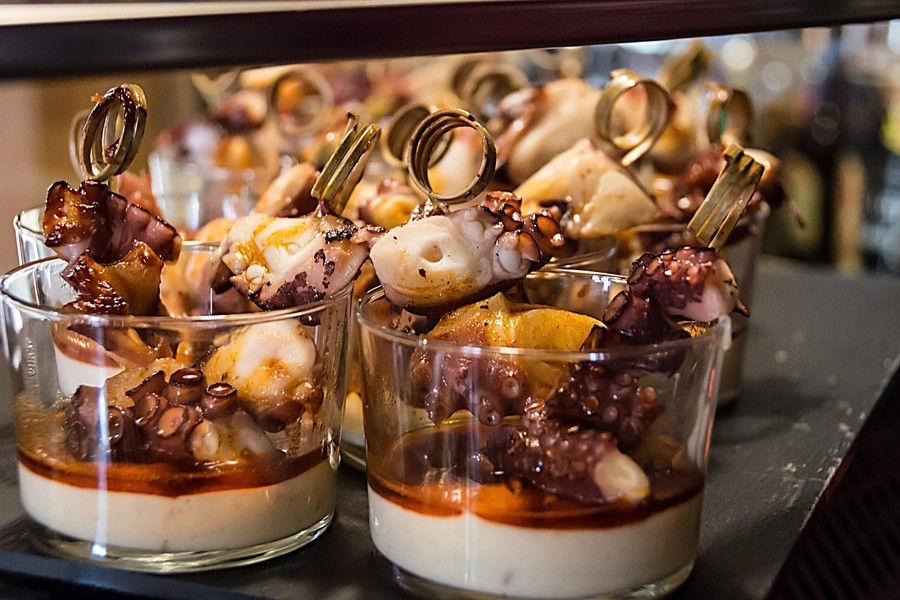
Always keep water and some food with you in the car and try to keep your cell phone charged so you can make emergency calls or locate the nearest gas station.
Finally, if you want to enjoy the best food in northern Spain , try to avoid the more touristy areas. When in doubt, ask the locals and they’ll give you some great restaurant suggestions.
That’s it for this guide to the north of Spain ! I hope you feel better prepared to organize your northern Spain itinerary , and that you have the best time exploring this gorgeous part of the country.
If you have any questions, or if you want to share your favorite destinations in northern Spain , leave me a comment below. I’d love to hear from you. Have a fantastic trip!
Ascen Aynat
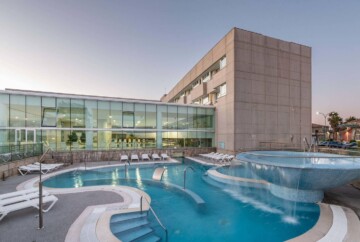
Leave a Reply Cancel reply
Your email address will not be published. Required fields are marked *
This site is protected by reCAPTCHA and the Google Privacy Policy and Terms of Service apply.


Touropia Travel
Discover the World
10 Most Amazing Destinations in Northern Spain
By Carl Austin · Last updated on February 5, 2024
A good many travelers to Spain start their visit to this Iberian Peninsula country in Madrid. Then they’re likely to head south where the climate is more temperate to see historic Moorish castles or east to Barcelona or Valencia.
They don’t realize what they’re missing by ignoring northern Spain . Well-preserved medieval villages, picturesque wine regions, the beautiful Bay of Biscay coastline, Basque country and more are just waiting to be explored.
10. Picos de Europa National Park [SEE MAP]
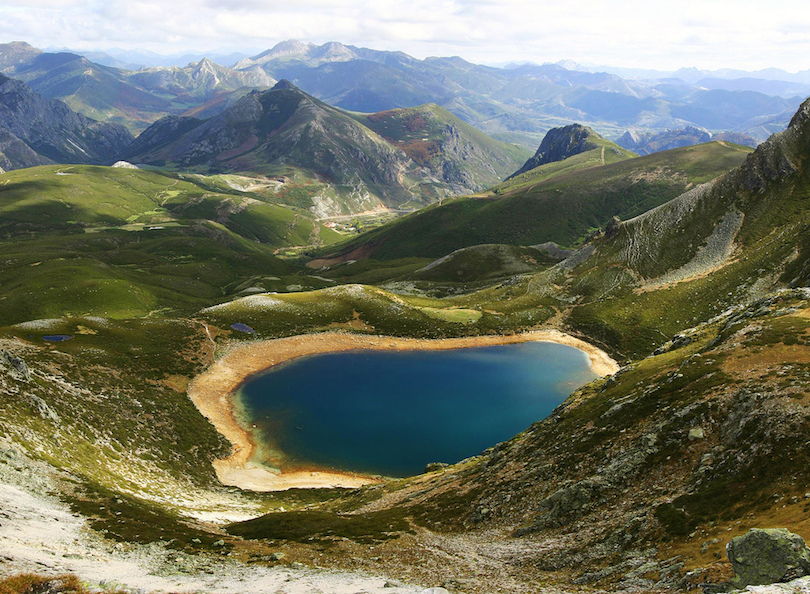
Picos de Europa National Park is Spain’s first national park, founded in 1918 when it was known as Montana de Covadonga National Park; its name was changed in 1995. The park’s high mountains and deep ravines appeal to hikers, who need to be alert for deep fog banks.
Snow is possible year ‘round. This biosphere reserve also boasts forests, oak groves and four rivers. Non-hikers may want to ride the Fuentede cable car that reaches more than a mile above sea level, providing stunning views of the park.
9. Santander [SEE MAP]

The beaches of Santander are the main attractions of this port city on the Bay of Biscay. With its wide stretch of golden sand, the long curving arc of the Playa el Sardinero is one of the most beautiful beaches in Northern Spain. Approaching the beach through the pathways of the beautiful Piquio Gardens enhances the experience.
Although Santander is an ancient city, much of the old quarter was destroyed by a fire in 1941. Since then, the Municipal Museum of Arts has been revamped to include local contemporary Cantabrian artists as well as old masters like Goya.
8. Rioja Wine Region [SEE MAP]
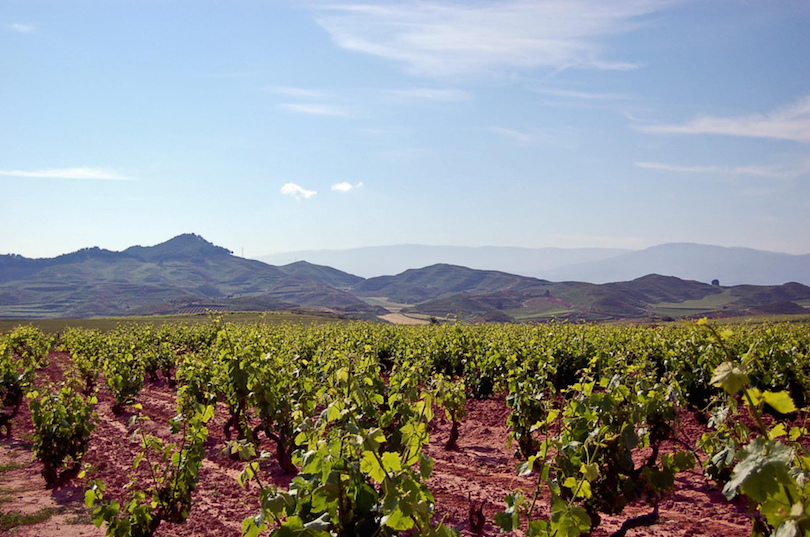
Travelers who enjoy their vino will definitely enjoy a visit to La Rioja Wine Region, home to more than 500 wineries. What makes these vineyards so unique is that some wineries allow horseback and all-terrain vehicle riding within the vineyards.
In addition to sampling their wines, some wineries offer classes on how to become a winemaker. With vineyards dotting the hills of northern Spain, vintners have perfected the art of making world-famous wines; after all, they’ve been doing it for more than a thousand years. The main wine regions are Rio Baja, Rio Alta and Rio Alavesa.
7. Oviedo [SEE MAP]
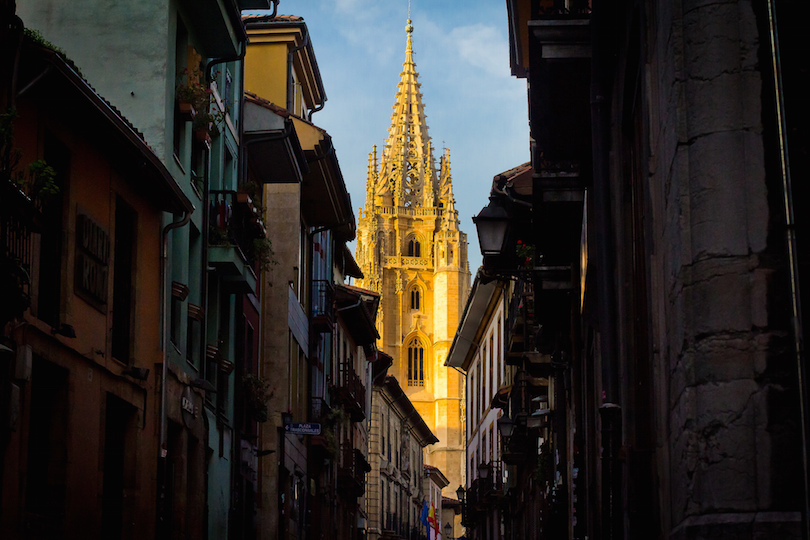
Oviedo, the capital of Asturias province, is well known for its religious monuments. Also a stop on the Pilgrims Road to Santiago, Oviedo has churches that date back to the eighth century, including the Cathedral of San Salvador and the well-preserved Basilica of San Julian de los Prados.
Another top architectural draw is La Foncalada, a ninth century pre-Romanesque fountain. Movie trivia fans may be interested to know Oviedo was featured in Woody Allen’s Vicky Cristina Barcelona.
6. Bilbao [SEE MAP]
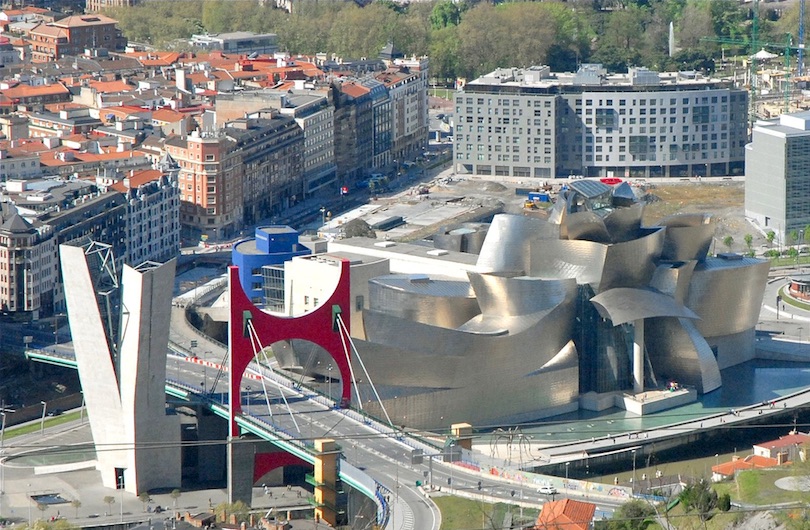
Once known primarily as an industrial port city, Bilbao has reinvented herself as a center for modern art and architecture. Set amidst the rolling green hills of Basque country, Bilbao is home to the Guggenheim Bilbao Museum, a gleaming, modernistic structure clad in titanium designed by famed architect Frank Gehry.
Bilbao’s historic architecture is a stunner as well, featuring many beautiful buildings like the 14th century Gothic Cathedral of Santiago and the Basilica de Begoña.
5. Gaztelugatxe [SEE MAP]
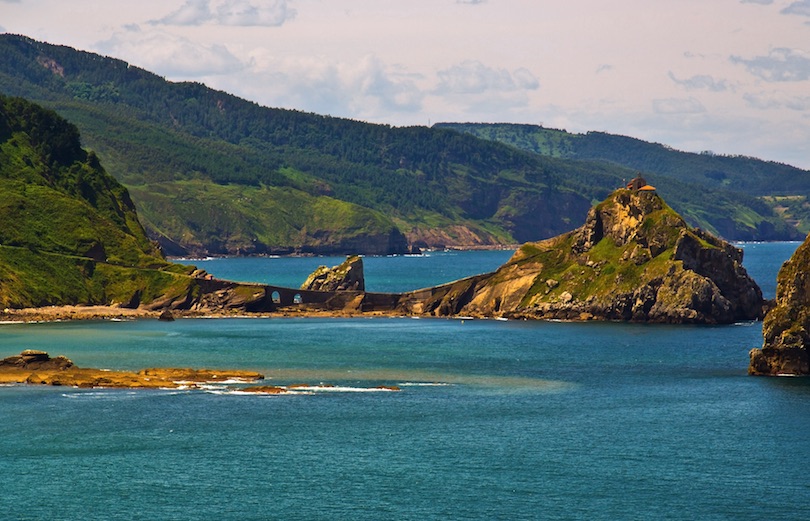
Gaztelugatxe is a small peninsular island in the Bay of Biscay that resembles a castle; in fact, its name translates as “castle rock.” It is accessible from land via a footbridge over the rocks. A small chapel dedicated to San Juan (St. John) sits atop the island.
The top of Gaztelugatxe is reachable by climbing 231 steps up a rocky slope. Past visitors recommend taking the steps slowly as rushing can be a pain; but, they say, the breathtaking views are well worth the exertion.
4. Pamplona [SEE MAP]
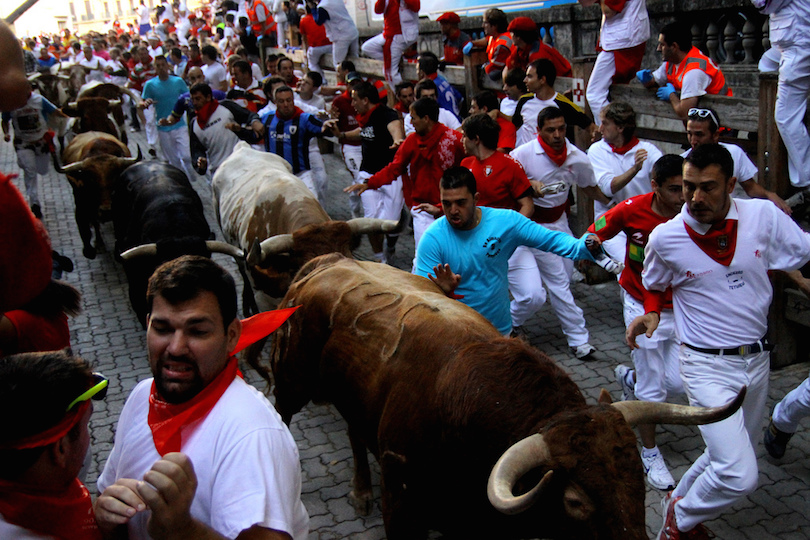
Pamplona is an historic city that once served as the capital of the Kingdom of Navarre. It is better known today for its annual San Fermin festival in which fearless souls try to outrun a herd of bulls through city streets; the festival takes place over six days in July.
Bullfighting is another popular activity here, with the city having the fourth largest bullring in the world. Pamplona also is the first city on the Camino de Santiago or Pilgrims Road to Santiago. Its many parks and historic buildings are just made for strollers.
3. Santiago de Compostela [SEE MAP]
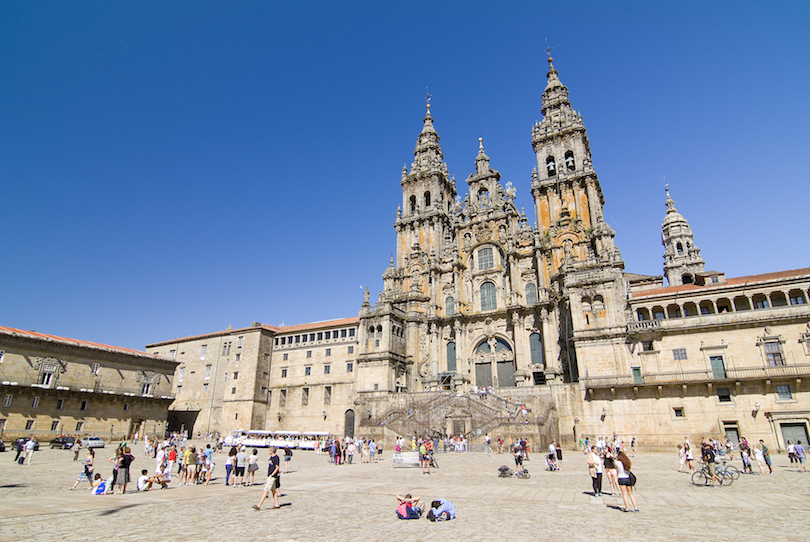
The capital city of Galicia, Santiago de Compostela is famous as the final destination of the traditional pilgrimage known as Camino de Santiago. Also called the Way of St. James, this pilgrimage dates back to Medieval times and is important to many because it is believed that Santiago de Compostela is where St. James, an Apostle of Jesus Christ, is buried.
The arriving point for most pilgrims is the main square. Situated in the heart of the city, this bustling plaza is the scene of many important landmarks, particularly the Santiago Cathedral where the tomb of St. James is located.
2. Santillana del Mar [SEE MAP]
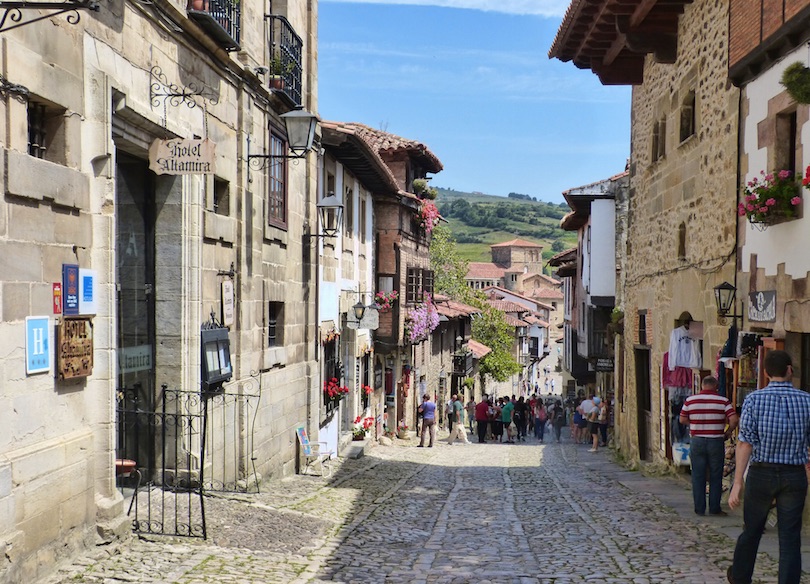
Comfortable shoes are a must for visitors to Santillana del Mar, a perfectly preserved medieval village that is limited to foot traffic. Located on Spain’s west coast, this Cantabrian treasure is less than 30 km (20 miles) from Santander and near the Caves of Altamira that are famous for its prehistoric paintings.
There is an old saying that Santillana del Mar is The Town of Three Lies, since it is neither a Saint (Santo), nor flat (llana), nor is it by the sea (Mar). However, the town actually takes its name from Santa Juliana who is buried here in the Colegata, the most famous church in Cantabria . Another top attraction is the Museum of the Inquisition with its instruments of torture.
1. San Sebastian [SEE MAP]
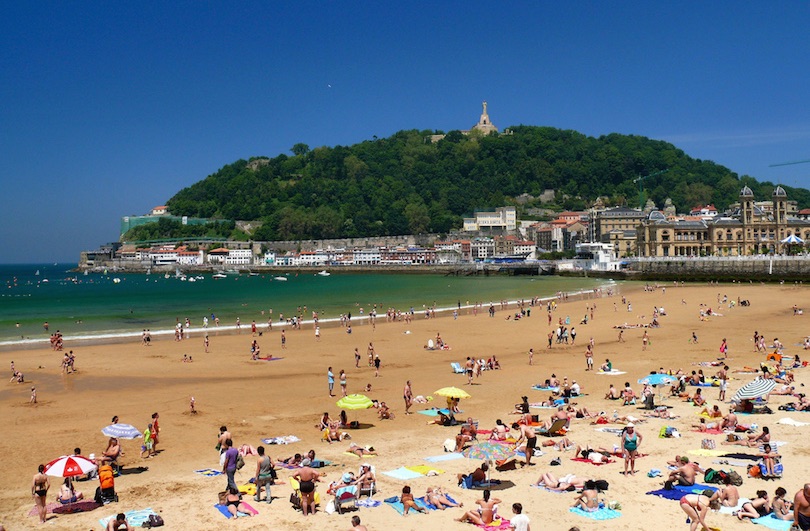
Found in Basque country, just 19 km (12 miles) from France, this popular beach resort is surrounded by hills that add to its beauty. San Sebastián’s most famous attraction is La Concha, one of the world’s best urban beaches. Parte Vieja or Old Town has many bars, making it popular with partiers.
Most buildings date from the 19th century, since San Sebastián was destroyed by the English and Portuguese in 1813. The city is well known for its July jazz festival, the oldest in Europe, as well as other festivals and cultural events throughout the year.
Map of Northern Spain
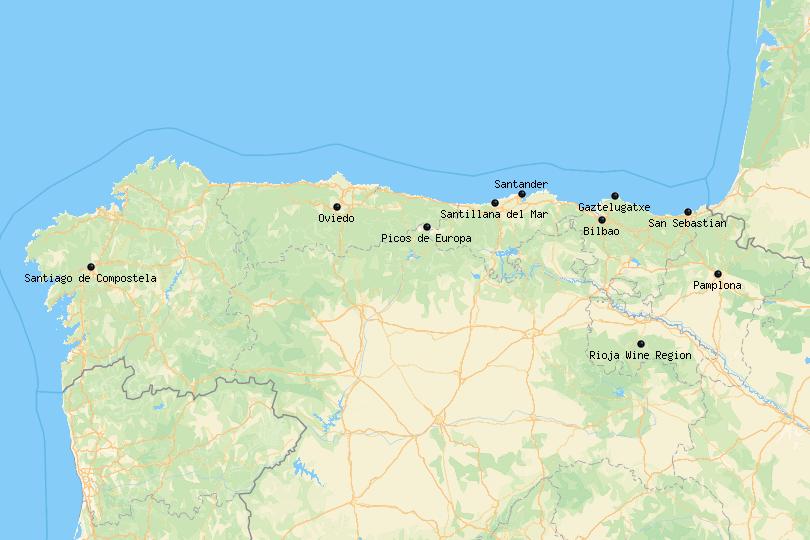
Share this post:
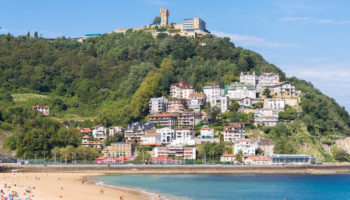
19 Top Tourist Attractions in San Sebastian, Spain
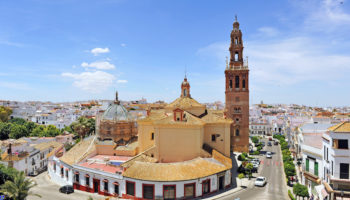
7 Best Day Trips from Seville
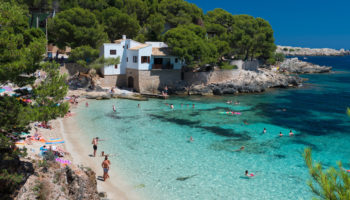
Where to Stay in Mallorca: 12 Top Destinations
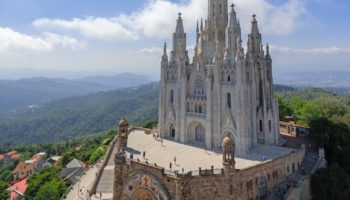
14 Most Amazing Churches in Spain
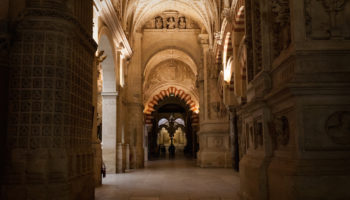
Mezquita of Cordoba: The Mosque in the Cathedral
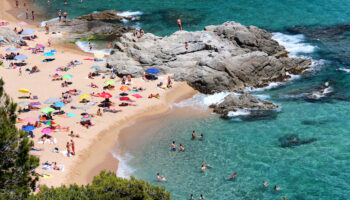
20 Best Beaches in Spain to Visit This Summer
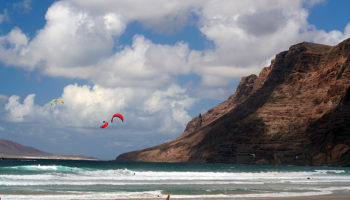
10 Best Beaches in the Canary Islands
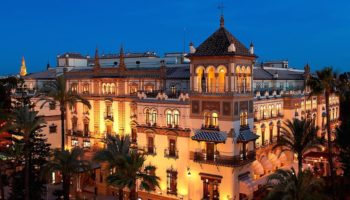
11 Most Amazing Hotels in Spain
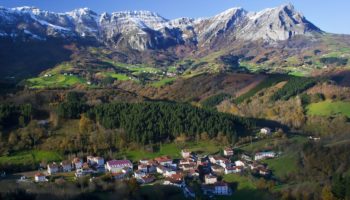
17 Most Beautiful Regions of Spain
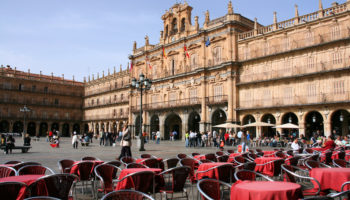
10 Most Underrated Destinations in Spain
Reader interactions.
May 9, 2017 at 7:09 am
Elizabeth, I suggest visiting the coast between Suances and Ribadesella for their beaches and cute cliffs. For a virtual visit use the coastal blue spots of the standard Goo.. map of North Spain. Also, within a few miles, for culture, visit Comillas, Santillana de Mar, Altamira, Picos de Europa from Potes, Covadonga and Cangas de Onis. A bit further, the cities of Gijon, Oviedo and Santander. Always check the weather forecast for good weather, it is humid otherwise. Enjoy.
August 11, 2016 at 5:24 pm
Where’s the best place in Northern Spain to go with my seven year old daughter in August that won’t be too touristy, some beach, some cultural/historical beauty, but relaxing and off the beaten path?
July 10, 2016 at 7:33 pm
Hola. Wife and I went to Madrid, then down to Toledo, Seville, Granada, Valencia, then back to Madrid. From Madrid came back home to LA. The idea, next, if possible, definitely we are visiting northern Spain.
April 27, 2015 at 11:29 pm
Rioja Wine Region is definitely on my list of places to visit – obviously! 😀 And lately I’ve been looking into Santiago de Compostela a fair bit as well.
Leave a Reply Cancel reply
Your email address will not be published. Required fields are marked *
This site uses Akismet to reduce spam. Learn how your comment data is processed .

20 Best Places to Visit in Northern Spain
Written by Lisa Alexander Updated Nov 26, 2021 We may earn a commission from affiliate links ( )
Northern Spain extends from the Mediterranean Sea to the Atlantic Ocean, bounded by the Pyrenees Mountains at the border with France. With its diverse landscapes and distinct provinces, this beautiful area of Spain offers something for every type of traveler.
The energetic, culture-packed city of Barcelona has fabulous art museums and fantastic architecture. San Sebastián is an elegant beach resort with a quaint Old Town and an outstanding restaurant scene. The ultimate destination of the medieval Way of Saint James pilgrimage, Santiago de Compostela immerses visitors in the spiritual ambience that has animated the city for a millennia.
Besides Barcelona's Gaudí monuments and Santiago de Compostela's historic center, other UNESCO World Heritage sites are scattered throughout northern Spain, including a breathtaking cathedral in Burgos , the Roman ruins of Tarragona , pre-Romanesque churches near Oviedo, and the Ordesa and Monte Perdido Natural Park in the Huesca province.
Travelers searching for a soul-inspiring experience should take a journey to the remote Monastery of Montserrat . For picturesque fishing villages and coastal scenery, the Costa Brava in Catalonia is sure to impress. Thrill-seekers flock to Pamplona for its annual Running of the Bulls event, but the town itself is an interesting place to visit any time of year, and the nearby Navarra countryside has wonderful hiking trails.
Plan your Spanish sightseeing itinerary with our list of the best places to visit in Northern Spain.
1. Barcelona
2. san sebastián & hondarribia, 3. santiago de compostela, 4. seaside resorts on the costa brava, 6. pamplona, 7. tarragona, 11. zaragoza, 12. monastery of montserrat, 13. santander, 15. heusca province, 16. ponferrada, 17. la coruña & rías altas villages, 18. santillana del mar, 19. picos de europa natural park, 20. la rioja region, map of places to visit in northern spain.
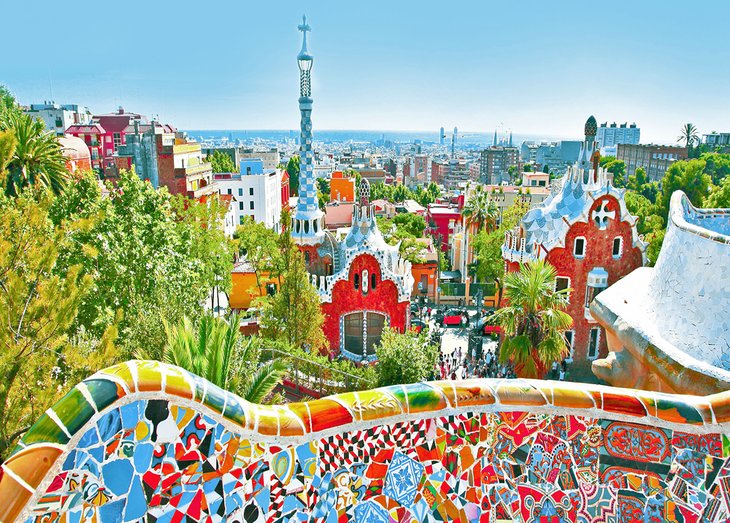
The sparkling crown jewel of Catalonia , the region's vibrant capital boasts an alluring seaside setting, fabulous Modernist architecture, and a delightful medieval quarter.
Visitors can soak up the city's ambience by strolling the bustling La Rambla boulevard, stopping at the colorful La Boqueria covered marketplace, getting lost in the narrow pedestrian streets of the Barri Gòtic , admiring the whimsical Gaudí monuments, and basking in the sun on sandy beaches.
Must-see tourist attractions include the Basílica de la Sagrada Família , created by Antoni Gaudí in his signature surrealistic style; the Picasso Museum in the Gothic Quarter ; the Casa Milà and the Casa Batlló , UNESCO-listed buildings designed by Gaudí; and the Parc Güell , with its splendid landscaping and sweeping city vistas.
Barcelona is also well known for its gastronomy. Near the Casa Batlló is Moments restaurant , an award-winning fine-dining establishment within the Mandarin Oriental, Barcelona that has earned two Michelin stars and specializes in contemporary Catalan cuisine.
Within walking distance of the Museu Nacional d'Art de Catalunya in Montjuic is a gourmet destination run by renowned chef Albert Adrià. This trendy restaurant serves tasting menus in an intimate dining room that channels a fantastical modern speakeasy.
The surroundings of Barcelona appeal to travelers in search of a beautiful coastline, cute fishing villages, and culture-rich medieval towns. Popular day trips from Barcelona are the majestic hilltop Montserrat Monastery , the seaside resort of Sitges , and the Costa Brava beaches.
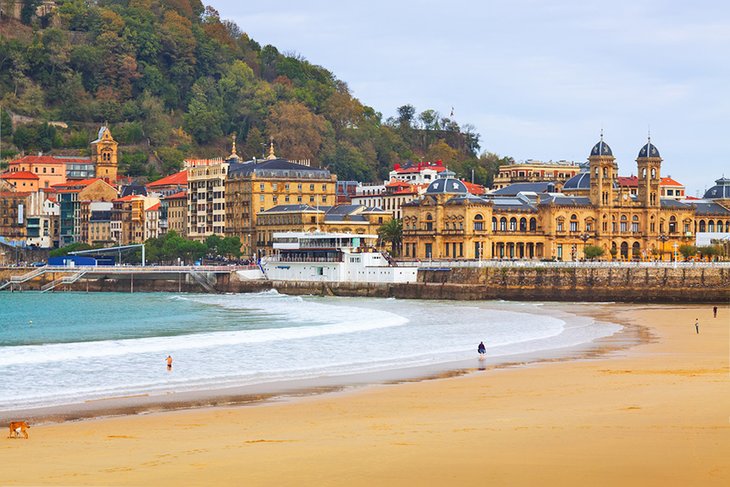
One of Spain's most stylish beach resorts, San Sebastián dazzles visitors with its dreamy natural scenery and refined urban elegance.
The town is ensconced along the Bahía de la Concha, a crescent-shaped bay that encloses a sheltered sandy beach, called La Perla . A spacious pedestrian promenade invites seaside strolls, while many shops and restaurants are found on the Alameda del Boulevard just steps away from the beach.
Among the highlights of San Sebastián are the 12th-century Castillo de la Mota on Monte Urgull, the Museo San Telmo (fine arts museum), and the Parte Vieja (Old Town), where locals and tourists enjoy wandering the cobblestone streets in search of authentic pintxo s (Basque tapas) restaurants. San Sebastián is well known for its superb gastronomy.
For exceptional meals and stunning sea views, the Mirador de Ulía is a wonderful choice. This Michelin-starred restaurant serves traditional Basque cuisine, as well as vegetarian and vegan menus prepared from seasonal ingredients.
A worthwhile detour (about 20 kilometers from San Sebastián) is the Basque filling village of Hondarribia , which has a walled medieval Old Town and an expansive beach that is popular during summertime.
Renowned for its cuisine, Hondarribia is brimming with excellent restaurants helmed by top chefs, and authentic pintxos bars that serve Basque tapas. (Most of the restaurants and pintxos bars are found in the seaside Marina neighborhood.)
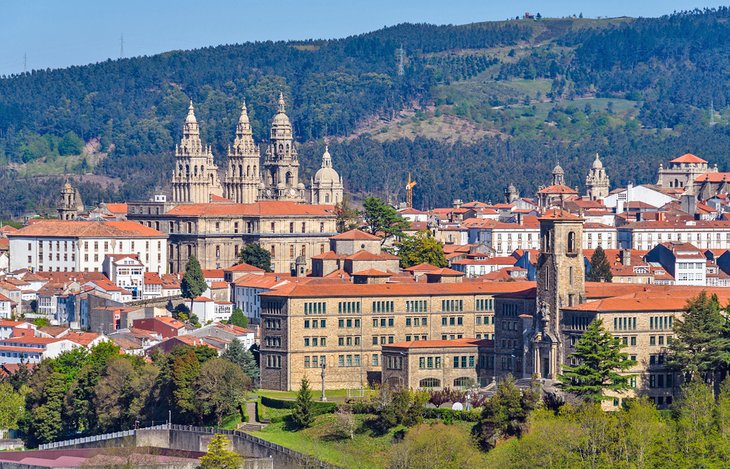
During the 11th and 12th centuries, Santiago de Compostela was Europe's most important pilgrimage destination. The faithful endured long, treacherous journeys by foot, from France, Spain, Portugal, and other European countries, to arrive at the hallowed Catedral de Santiago .
The Cathedral of Santiago de Compostela contains the Crypt of Saint James , the venerated tomb that is the ultimate pilgrimage object and explains why the pilgrimage routes are called the "Way of Saint James." Modern-day pilgrims still embark on the Camino de Santiago , following the medieval pilgrimage routes.
A marvelous example of early Romanesque architecture, the Cathedral of Santiago de Compostela is Spain's most important Christian monument. The ornate exterior blends the original 12th-century sculpted doorway with lavish Baroque twin towers, while the grandiose sanctuary offers a sense of serenity.
In the late 15th century, the Catholic Monarchs created the Hostal de los Reyes Católicos to provide lodging for pilgrims. Today, this gorgeous Gothic Plateresque building still welcomes overnight guests as the Parador Santiago de Compostela , considered to be the world's oldest hotel. This luxurious five-star hotel has magnificent reception halls, sumptuous guest rooms decorated in traditional style, and two restaurants that specialize in the cuisine of Galicia.
Other must-see attractions of Santiago de Compostela include the Old Town ( Casco Antiguo ) of Santiago de Compostela, around the Plaza del Obradoiro and the Hostal de Los Reyes Católicos. Designated as a UNESCO World Heritage Site , this pedestrianized area is an appealing jumble of narrow medieval streets, historic churches, and monasteries.
Santiago de Compostela is located in the Galicia region and is a good starting point to discover northern Spain's west coast, including La Coruña, Ferrol, and Cedeira.
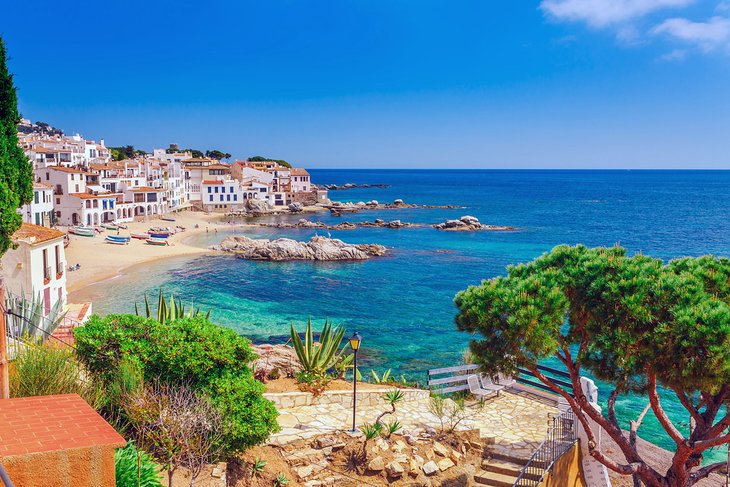
Rated as one of Spain's top beach destinations , the Costa Brava is a delightful stretch of coastline characterized by its rugged natural beauty and charming coastal villages. The Costa Brava extends along a hilly landscape for over 200 kilometers from Blanes to the border between Catalonia and France. Alongside the Mediterranean Sea, secluded golden-sand beaches are surrounded by cliffs and tucked into coves.
Popular beach resorts are found in Blanes , a historic town with expansive beaches; Tossa de Mar , a walled medieval town; Lloret de Mar , which has elegant gardens and pristine waters; and Santa Susanna prized for its wide sandy beaches backed by groves of fragrant pine trees.
Cadaqués is a quaint fishing village nestled on the Cadaqués Bay of the Cap de Creus (peninsula), a rocky coastline with sheer cliffs and peaceful coves. This historic whitewashed town attracted famous painters during the 20th century. Several art galleries and museums attest to the town's artistic heritage.
One of the houses in the Old Town of Cadaqués was the home of Salvador Dalí and is now the Salvador Dalí House - Portlligat Museum . Fans of Salvador Dali and surrealist art should also visit the Dalí Theatre-Museum in Figueres and the Gala Dalí Castle in Púbol .
Calella de Palafrugell has retained the feel of a small fishing village even though its sandy beaches get very crowded during summertime. Tourists also adore the old-world charm of the perched town of Begur overlooking the sea and L'Escala , which has an atmospheric historic quarter and Greek ruins from the 2nd-century BC at the Empúries archaeological site.
Water sports enthusiasts find plenty of things to do on the Costa Brava, from snorkeling to sailing and windsurfing. The uninhabited nature preserve of the Medes Islands (boat ride from L'Estartit) is a great place for snorkeling and scuba diving.
Perched on the Punta d'es Muts cliffs, a supremely picturesque spot on the Costa Brava, the Parador de Aiguablava (46 kilometers from Girona) affords panoramic vistas of the coastline and the Aiguablava Beach, where azure waters lap up against golden sandy shores. This contemporary-style resort hotel has an outdoor terrace, swimming pool, sauna, fitness center, and beachside restaurant that serves traditional cuisine of the region.
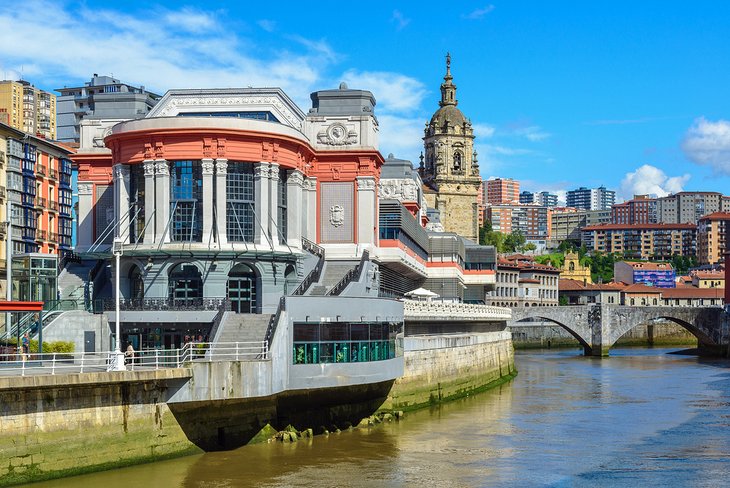
The spectacular modern architecture and avant-garde art of the Guggenheim Museum draw many visitors to Bilbao. This world-class museum was designed by the famous architect Frank Gehry. Masterpieces of modern and contemporary paintings and sculptures are presented in twenty galleries covering 24,000 square meters of exhibition space.
To learn about the art from an official guide, tourists can take a Guggenheim Bilbao Museum Private Tour , which covers many of the collection's highlights.
Another must-see museum among the top attractions of Bilbao is the Museo de Bellas Artes de Bilbao (Museum of Fine Arts), which displays a collection of European paintings from the 14th to 17th centuries. The Spanish Old Masters are well represented, including El Greco, Zurbarán, and Velázquez. There is also an assortment of paintings by Francisco de Goya.
Besides art and architecture, Bibao is renowned for its gastronomy. The city boasts six Michelin-starred restaurants, including Nerua at the Guggenheim Museum. For more casual and convivial dining, traditional pintxos (tapas) restaurants are the best choice.
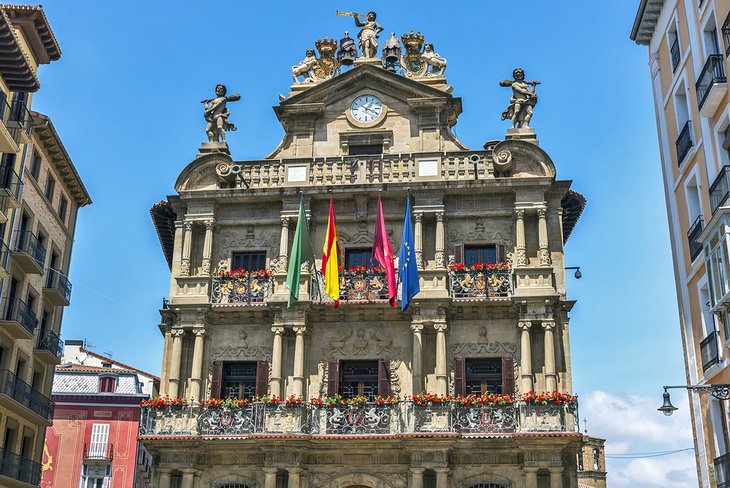
Pamplona owes its fame to the religious festival in July, the Fiesta de San Fermín , devoted to the patron saint of the Navarra province, San Fermín. Although the Fiesta de San Fermin begins with a Catholic Mass at the Chapel of San Fermín and includes a traditional procession, it is the Running of the Bulls (El Encierro) event during the festival that really put Pamplona on the tourist map. The legendary event draws thrill-seeking visitors from all over the world.
For those who want to watch the Running of the Bulls from the safe space of a private balcony, the five-star Gran Hotel La Perla is a perfect choice. Some of the hotel's exterior rooms overlook the Calle de la Estafeta, where a portion of the Running of the Bulls course takes place.
When the festival crowds leave town, it's worth exploring the attractions of Pamplona , especially the Casco Viejo . Partially enclosed by medieval ramparts, this warren of narrow cobblestone streets and elegant squares is brimming with historic monuments: the Gothic and Neoclassical cathedral ; the 16th-century citadel built by King Felipe II; the Plaza del Castillo , where locals hang out at sidewalk cafés; and the opulent Baroque town hall .
Outside Pamplona, the Navarra countryside is a paradise for nature lovers. The Parque Natural Urbasa-Andía (70 kilometers from Pamplona) is a lush mountainous terrain with scenic hiking trails.
Worthwhile detours in the Pamplona surroundings include the Museo Oteiza in the idyllic pastoral landscape of Alzuza (10 kilometers from Pamplona) and the 11th-century Monasterio de Leyre (50 kilometers from Pamplona), which holds church services, including Gregorian chants, and also has a small hotel, the two-star Hotel Hospedería de Leyre , with a traditional Spanish restaurant.
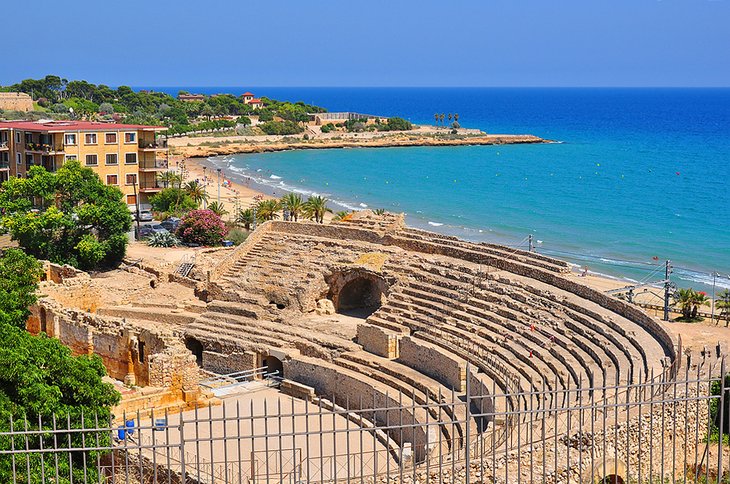
The sun-soaked seaside city of Tarragona seems to have it all: stunning coastal scenery, alluring old-world ambience, and fascinating historic monuments.
The setting couldn't get much better than Tarragona's, along the Catalonian Costa Dorada (the Golden Coast), named for its fine sandy beaches. Playa El Milagro is a lovely beach within easy walking distance of the historic center of town.
Tarragona has been designated as a UNESCO World Heritage Site , because of its archaeological structures. Modern-day Tarragona was built above remains of the Roman-era city of Tárraco. The Roman ruins reveal an ancient town that was well planned, with a port, forum, theater, aqueduct, and defensive fortifications.
The most impressive site is the 2nd-century AD Roman amphitheater that overlooks the Mediterranean. Built during the reign of Emperor Augustus, this enormous stadium was designed to seat an audience of 12,000 spectators.
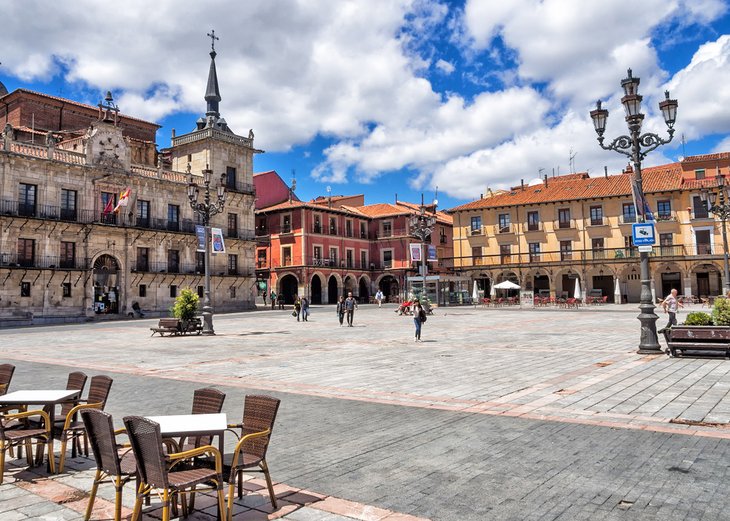
Remarkable historic monuments distinguish León , which displays its impressive heritage through architectural masterpieces such as a 10th-century Romanesque church, an Early Gothic cathedral, and a Spanish Plateresque monastery. In addition to the amazing landmarks, the charming Old Town ( Casco Antiguo ) and several top-notch museums provide enough cultural attractions to keep visitors busy.
For atmospheric dining, locals and tourists alike head to the Plaza Mayor (public square). Enclosed by 17th-century Baroque buildings, this elegant square is the center of the city and a hub of social activity. Within the square's arcaded buildings are several restaurants, many of which have terraces that spill out onto the sunny square.
The Plaza Mayor hosts a traditional, open-air farmers market on Wednesday and Saturday mornings.
Within a short walk from the Plaza Mayor is the Palacio del Conde Luna , a 14th-century Gothic-Mudéjar palace that was the residence of the valiant Count Luna. The palace served as a court during the Spanish Inquisition. Today, the Palacio del Conde Luna is a museum that presents exhibits of León's history.
A truly special place to spend the night is at the luxurious Parador de León . This five-star hotel occupies the 16th-century Convento de San Marcos , considered a gem of Spanish Plateresque style and one of the most important Renaissance monuments in Spain.
Since the 12th century, this convent has welcomed pilgrims on the way to Santiago de Compostela. However, the original building was reconstructed in the 16th century by the Catholic Monarchs. Hotel amenities include a concierge, garden, sun terrace, and a gastronomic restaurant that specializes in traditional cuisine of the Castile-León region.
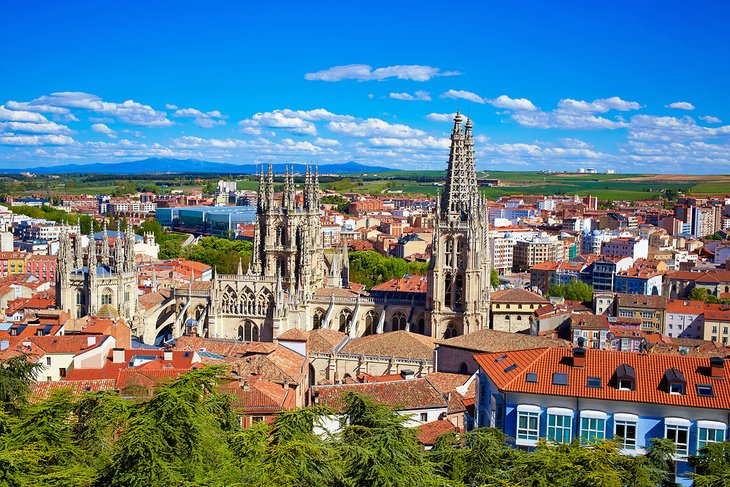
Spanish Gothic architecture finds perfect expression in the magnificent Catedral de Burgos . This soaring UNESCO-listed monument features an extravagantly decorated twin-towered exterior and an immense interior of breathtaking proportions, which makes it the third-largest church in Spain after the cathedral of Seville and Toledo.
Other must-see sights in Burgos include the ancient hilltop Castillo (castle) and the Monasterio de las Huelgas , an austere 12th-century Cistercian monastery built in the Mudéjar style and later converted to a Royal Pantheon.
Burgos has been welcoming visitors since the Middle Ages, when pilgrims stopped here on the Way of Saint James route to Santiago de Compostela. The town's legendary Christian heritage imbues the place with a special ambience, while historic buildings and cobblestone streets add to the old-world charm.
Along the riverbanks is a pleasant tree-shaded promenade, and nearby are many inviting restaurants.
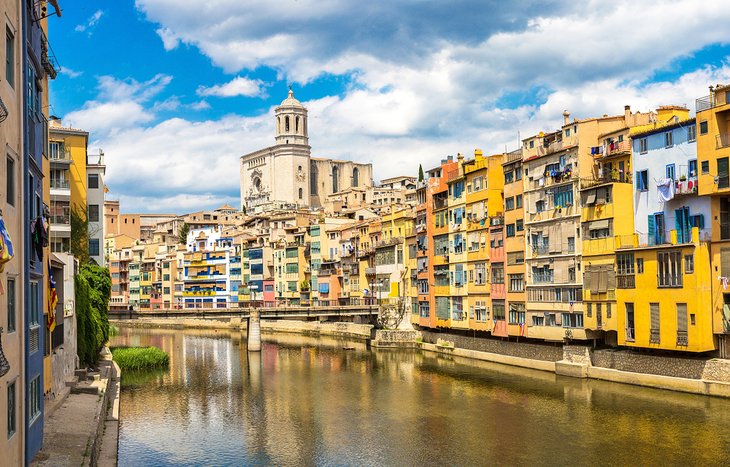
An enchanting medieval city in the Catalonia region, Girona packs an incredible wealth of attractions into the historic areas within its ancient walls. The Força Vella follows the outline of a Roman fortress dating to the 1st-century BC (portions of the ramparts are still visible), while the walled Medieval Quarter is a maze of narrow, winding pedestrian streets and hidden squares.
The rich multicultural heritage of Girona can be discovered through its remarkable monuments, including a Romanesque basilica, the Gothic convent of Sant Doménech , and 12th-century Arab Baths . Girona also has a well-preserved Jewish Quarter .
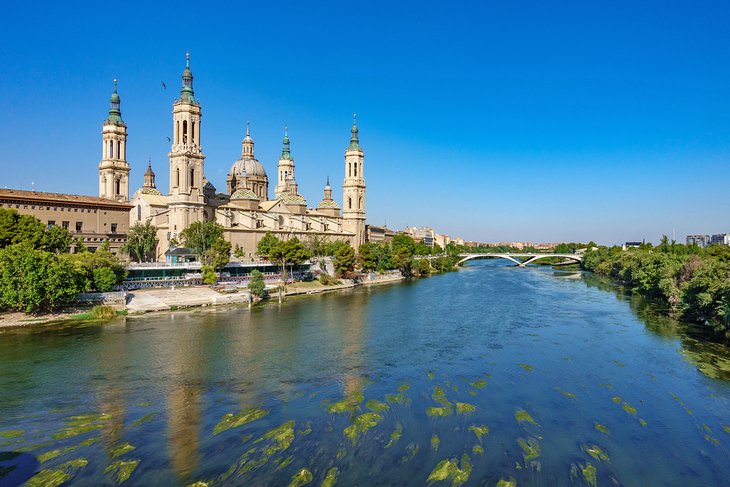
Steeped in two millennia of history, Zaragoza is the capital of the Aragon region and has a fascinating multicultural heritage. Splendid old monuments reveal the legacy of Roman, Moorish, Jewish, and Christian civilizations.
The remnants of ancient Roman walls are found in the city center, and two museums contain archaeological sites dating to the 1st century AD (including the Roman Theater and the Roman Forum ). Several historic churches exemplify Aragon Mudéjar architecture , influenced by the geometric details of Islamic design.
Presiding over the banks of the Ebro River, the Basílica de Nuestra Señora del Pilar is the city's most iconic landmark. This exuberant Baroque building was built in the 17th and 18th centuries. A noteworthy fresco by Goya titled Queen of Martyrs adorns the interior.
Zaragoza is also known for its cultural events and gastronomy. The local cuisine features hearty regional dishes such as pan-fried trout, huevos en salmorejo (baked eggs with sausage), and bacalao al ajoarriero (salted cod fish in tomato and garlic sauce).
The biggest festival, the Fiestas del Pilar , takes place in mid-October to celebrate the feast of the city's patron saint, the Virgin del Pilar. A mass is held on October 12th, and the festival continues for a week with music concerts, puppet shows, dance performances, fireworks, and a parade.
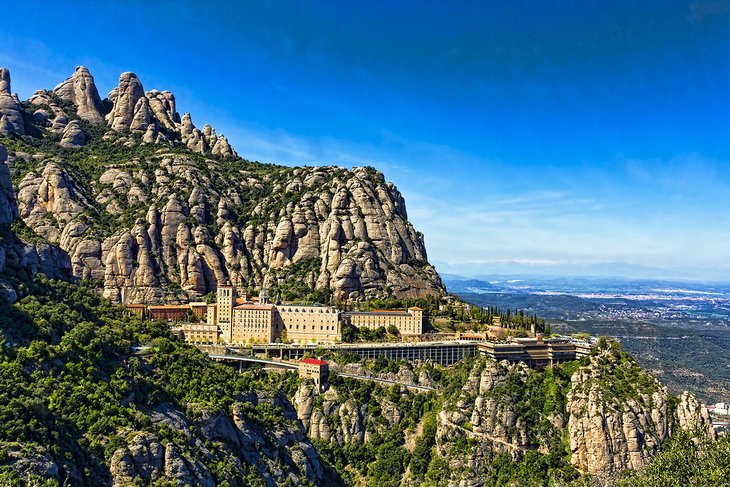
As early as the year 1025, Montserrat Mountain was the site of a little hermitage devoted to Santa Maria de Montserrat. Soon after it was founded, the monastery became associated with miracles. Faithful pilgrims have traveled here for a thousand years. The basilica's main object of adoration is the Romanesque Black Madonna ( Our Lady of Montserrat ), a 12th-century sculpture called La Moreneta.
The Monastery of Montserrat still functions as a working monastery (approximately 80 Benedictine monks live here) and continues to be an important pilgrimage site. The monastery's difficult-to-access location creates the sense of being a world apart. However, it is easy to get here thanks to a cable car (Aeri) that conveys visitors on a 1,350-meter journey to the top of the mountain.
As one of Catalonia's top tourist attractions, the Monastery of Montserrat is well prepared to welcome visitors. The monastery grounds include a basilica , a noteworthy art collection at the Museum of Montserrat , and several shops. Tourists will appreciate the meal options, including a food market that sells local products, two fine-dining restaurants , a casual cafeteria that offers buffet meals, and a picnic area .
For those who would like to spend the night at Montserrat, there is three-star lodging, the Hotel Abat Cisneros , and a budget-friendly hostel.
Listening to the Escolania boys' choir sing at the basilica (which occurs daily) is an essential experience at the Monastery of Montserrat. Visitors may also participate in prayer services (mass and vespers), which are held several times a day. One of the shops at Montserrat sells CDs of the choir's musical sessions.
Montserrat Mountain is a place of serenity and sublime natural beauty, protected as a natural park. Many scenic hiking trails begin at the monastery and offer spectacular panoramic views of the Catalonian countryside.
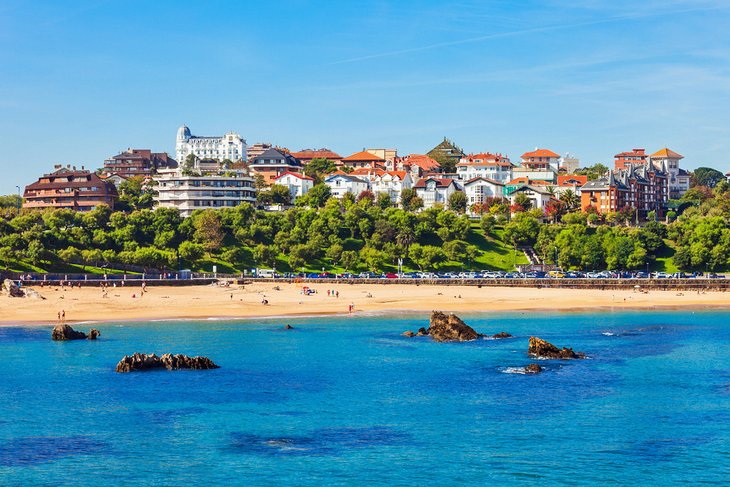
The sophisticated city of Santander nestles on a small peninsula between the Cantabrian Sea and a wide bay. This picturesque coastline is prized for its soft sandy shores and crystalline turquoise waters.
The city's main beach, the Playa del Sardinero , draws many vacationers during the sunny summer months. Another centrally located beach, the Playa del Magdelena has a shoreline of fine golden sand and an area for recreational sports.
Besides being a fun-loving holiday destination, Santander appeals to those who appreciate culture and history.
The Museo de Prehistoria y Arqueología has an exceptional archaeology collection, ranging from Paleolithic-era artifacts to Roman antiquities. Two other museums are dedicated to contemporary art: the Centro Botín and the Museo de Arte Moderno y Contemporáneo de Santander y Cantabria .
Santander's most beautiful architectural landmarks are the Palacio Real de la Magdelena (a royal palace built in 1911) and the medieval Catedral de Nuestra Señora de la Asunciónare . The cathedral features an exquisite 15th-century cloister and a somber 13th-century crypt.
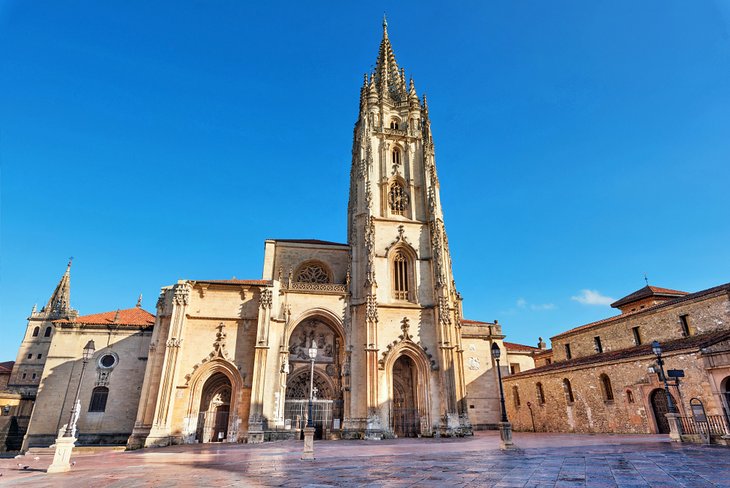
A remarkable number of pre-Romanesque churches sets Oviedo apart from other historic towns in northern Spain. The architectural heritage speaks to the importance of this city as the 9th-century capital of the Asturias kingdom.
King Alfonso II chose the location in the rolling hills of the Picos de Europa mountains because the remoteness made the town less vulnerable to attacks from the Moors of Córdoba.
Today, visitors enjoy the peacefulness of Oviedo's natural landscape, as well as the historic ambience of the Old Town with its pedestrian lanes and inspiring architecture. Oviedo's striking, single-towered cathedral is considered one of the finest Gothic monuments in Spain.
Outside of Oviedo's historic center are three UNESCO-listed pre-Romanesque churches (built in the 9th and 10th centuries): the Iglesia de Santa Maria del Naranco, the Iglesia de San Miguel de Lillo, and the Iglesia de San Julián de los Prados.
Oviedo has noteworthy museums of fine arts and archeology, and the town is equally renowned for its gastronomy. Local cuisine of the Asturias region includes delicious specialties such as bean stew and braised chicken with peppers.
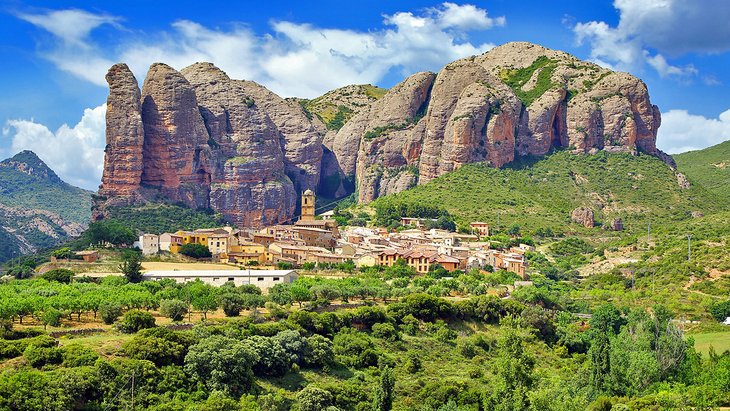
The medieval town of Heusca captivates visitors with its labyrinth of narrow, winding streets and historic monuments, including an impressive 13th-century cathedral and 12th-century Romanesque church.
Heusca is a good base for exploring the UNESCO-listed Parque Nacional Ordesa y Monte Perdido in the Pyrenees Mountains, which is a great place for hiking and other outdoor sports. This national park features rushing rivers, lush canyons, dramatic gorges, and soaring rocky peaks.
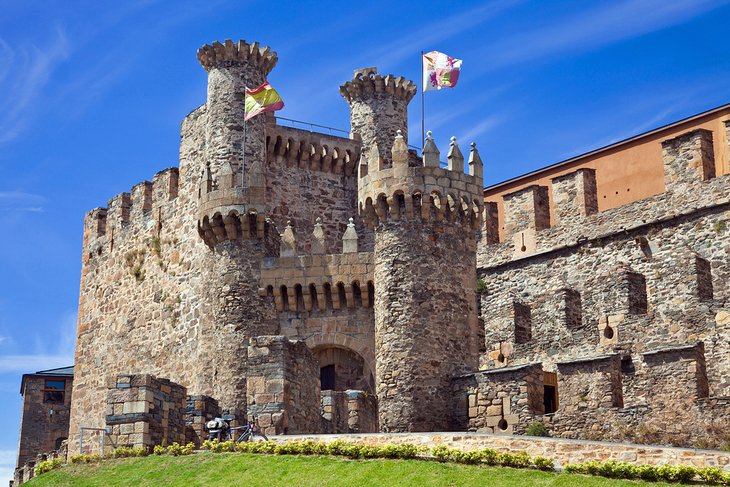
A formidable 12th-century castle stands guard over the historic town of Ponferrada, which was on the medieval pilgrimage route to Santiago de Compostela. The Knights Templar castle now houses a museum that presents the history of Ponferrada.
A short drive (20 kilometers) from Ponferrada in a tranquil valley is the ancient Monasterio de San Pedro de Montes , a rare example of pre-Romanesque architecture dating to the 7th century. The monastery's Romanesque church was renovated in the 18th century.
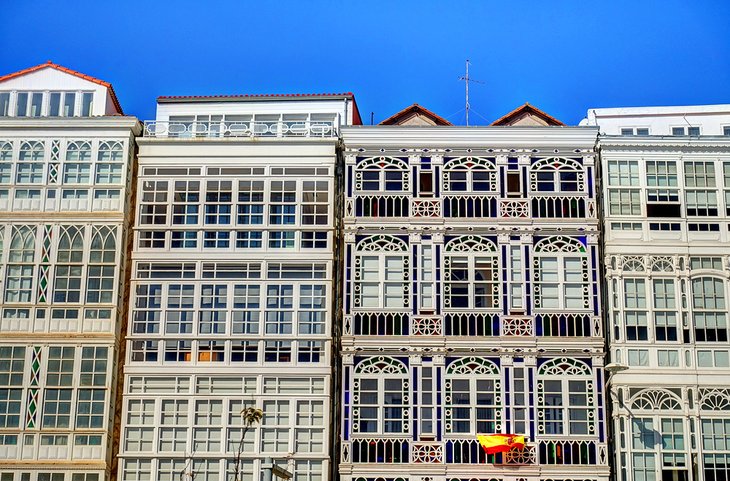
In the Galicia region, La Coruña is a historic port town with a bustling harbor and superb beaches. The city center, bordering the waterfront, is a captivating collection of winding streets, pleasant squares, and medieval churches.
The most iconic monument in La Coruña is the 1st-century Tower of Hercules , designated as a National Monument and a UNESCO World Heritage site .
La Coruña is also well known for its aquarium and restaurant scene. Many local establishments serve delicious meals, featuring regional cuisine based on fresh-caught seafood.
Nearby are the Rías Altas villages in the northern estuaries of the Galicia region. Some of the top destinations within easy driving distance are Betanzos , which has an interesting Old Town that is listed as an Historic-Artistic Site; Pontedeume , a picturesque seaside village; and Ferrol , a fishing village (and military port) that is known for its Easter celebrations.
For relaxing seaside accommodations, travelers will appreciate the Parador de Ferrol , which occupies a stately Galician-style mansion overlooking the waterfront. The traditional decor includes nautical touches. A gourmet restaurant treats guests to sea views and superb Galician cuisine, with specialties such as fish stew and filloas , a special type of crêpe prepared in the region.
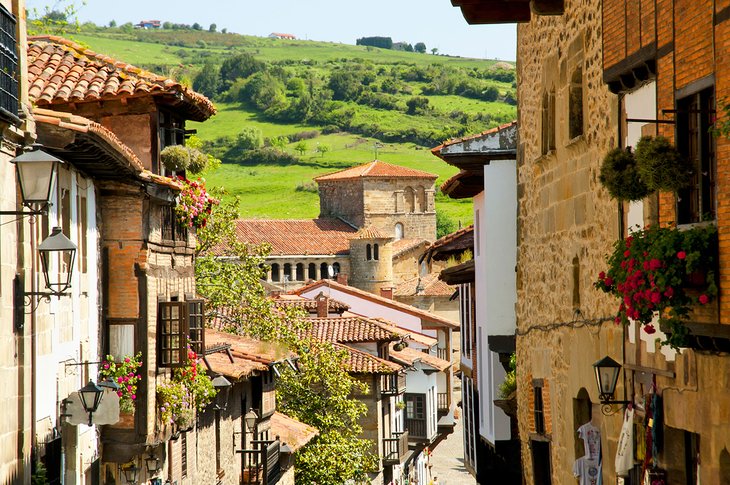
About a 30-minute drive from Santander is the lovely historic town of Santillana del Mar, which was a stop on the medieval pilgrimage route to Santiago de Compostela.
Santillana del Mar dates back to the 8th century, and the entire town center is designated as a National Monument . The 12th-century Collegiate Church of Santa María is remarkable for its sculpted facade and Romanesque capitals in the cloister.
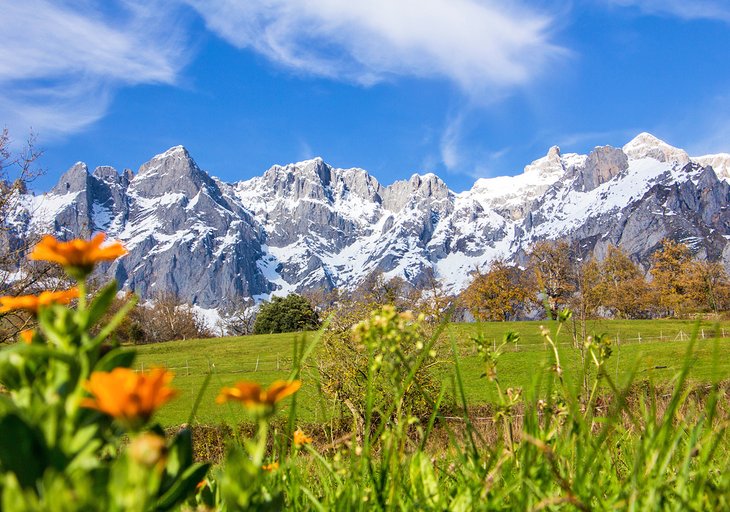
The Picos de Europa Natural Park delights visitors with its awe-inspiring scenery and refreshing mountain air. The Picos de Europa are the Cantabrian Mountains' highest peaks, and the 646-square-kilometer natural park covers terrain in the Asturias, Cantabria, and León provinces.
Dramatic alpine landscapes define the Picos de Europa. The terrain includes jagged mountain peaks, verdant valleys, deep gorges, pristine rivers and lakes, and dense woodlands.
Three distinct massifs form the Picos de Europa mountain range. The loftiest, Urriellu Peak (the central massif, also known as the " Naranjo de Bulnes "), reaches an elevation of 2,648 meters. The Urriellu Peak is a legendary destination for mountaineering and rock climbing in Northern Spain.
The enchanting mountain village of Bulnes on the Urriellu Peak may be reached by hiking up a steep pedestrian path or by taking a funicular railway from the town of Poncebos.
Another charming village in the Picos de Europa is Potes , built up along the rushing Quiviesa River. The village has many historic bridges that span the river, as well as old buildings that date back to the 14th and 15th centuries. The area around Potes is popular for hiking, fishing, and mountain biking.
Also not to be missed, the town of Cangas de Onís is nestled alongside the Sella River in the valley of the Picos de Europa. The town boasts an ancient Roman Bridge and a chapel that stands on the site of an 8th-century hermitage.
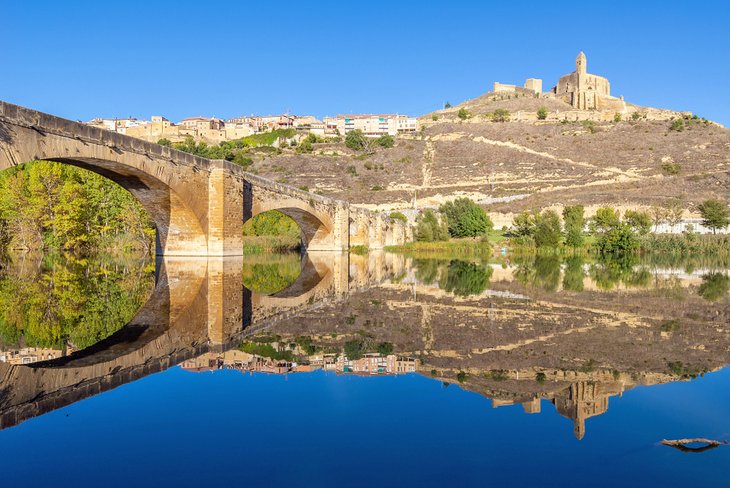
La Rioja is a gorgeous region in Northern Spain, prized for its idyllic scenery of vine-covered rolling hills and lush oak forests. The region also has a rich cultural heritage, linked with the medieval Camino de Santiago pilgrimage route to Santiago de Compostela.
The town of Santo Domingo de la Calzada reveals the legacy of the medieval pilgrims. In the 12th century, Santo Domingo de la Calzada offered lodging for pilgrims at a hostel (now converted to the four-star Parador de Santo Domingo de la Calzada ), and its cathedral provided a place for pilgrims to pray. The entire town, with its narrow stone-paved streets and attractive squares, is classified as a National Historic Interest Site .
Another destination tied to the Way of Saint James (Camino de Santiago) pilgrimage route is the town of San Millán de la Cogolla , tucked away in a valley traversed by the Cárdenas River. San Millán de la Cogolla has two UNESCO-listed monuments: the Monastery of Suso (built between the 6th and 11th centuries), which blends Visigothic, Mozarab, and Romanesque architectural styles, and the Monastery of Yuso , an 11th-century Romanesque monument.
More Related Articles on PlanetWare.com
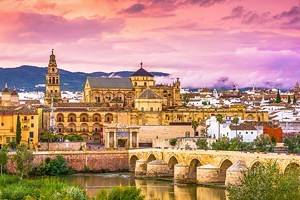
Other Top Destinations in Spain : With so many cultural treasures, Spain gives travelers endless reasons to extend a vacation. Among the best places to visit in Spain are the capital city of Madrid and the cultured port town of Valencia on the Mediterranean Sea. The UNESCO-listed Old Town of Segovia and the historic city of Toledo fascinate visitors with their marvelous Gothic monuments that seem out of a fairy tale.
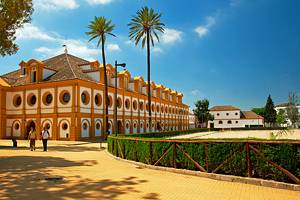
Highlights of Southern Spain : Steeped in the legacy of its multicultural past, Andalusia is an emblematic region famous for flamenco, festivals, and a sociable spirit. Granada boasts amazing Islamic architecture seen in the UNESCO-listed Alhambra palaces and Generalife gardens. Córdoba dazzles visitors with its 8th-century Great Mosque, another UNESCO World Heritage site. The romantic city of Seville is home to the largest Gothic church in the Christian world, as well as a medieval Moorish palace.

More on Spain

17 Best Things to do in Northern Spain (2024)
This post may contain compensated links. Find more info in our disclosure policy
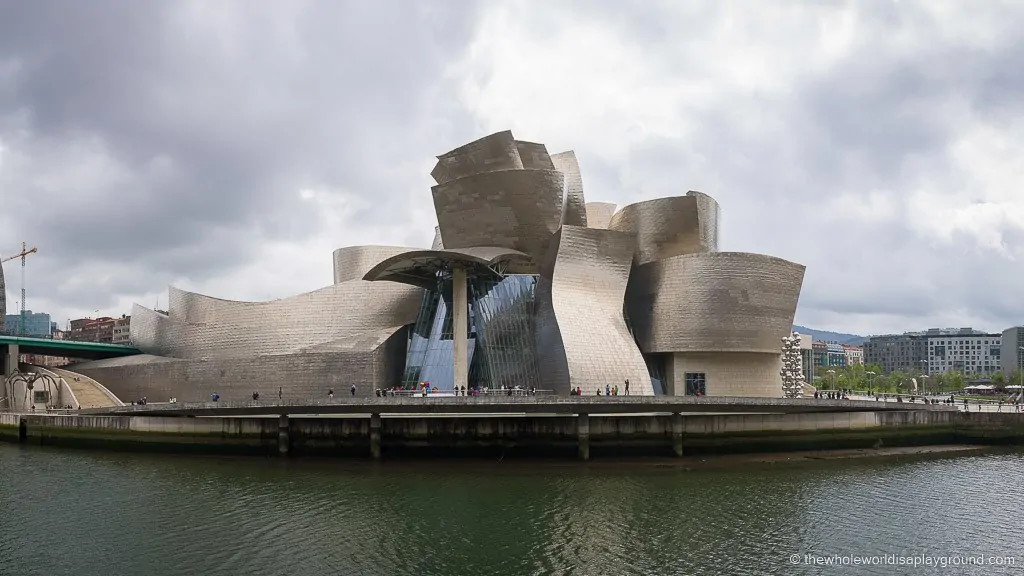
From Santiago de Compostela to Bilbao to Salamanca, a road trip along the coast of Northern Spain is an eclectic mix of quaint villages, stunning coastline, diverse cities, historic gems, world-class vineyards and gastronomical delights! We had an incredible time exploring all it has to offer on a road trip across the region and wanted to share our travel guide to Northern Spain: our favorite sights and the best things to do in Northern Spain.
Table of Contents
The Best Things to do in Northern Spain
There are so many highlights of Northern Spain that it’s impossible to list them all so we’ve included our favorites to help you plan your adventure! We recommend at least one week in order to see all the main sights, however, two weeks is ideal and allows more time to explore the bigger cities like Bilbao and San Sebastian as well as the Alpine landscapes of the Picos de Europa.
Getting to and around Northern Spain
We’re incredibly lucky that Northern Spain is easily accessible from the UK and Ireland by ferry which is perfect for traveling by our car on a road trip through the region.
If you arrive by air a rental car is the best way to get around. Renting a car in Spain is a great way to explore the country and with a world leading motorway network you can see a lot of the country in a short space of time. We use RentalCars.com , where we always find the best rental car selection and prices.
Book your Spain rental car now with RentalCars.com
Basque Country
Spain’s Basque Country is a unique region in the north that has its own language, local food delicacies and stunning landscape all of which are remarkably distinctive from the rest of the country. Our Basque Country favorites are Bilbao, San Sebastian and Juan de Gaztelgatxe together with some of the quaint little villages along the way!
At the heart of the Basque Country, Bilbao is known for its spectacular architecture, amazing cuisine and dramatic coastline which featured on Game of Thrones . The shimmering Guggenheim Museum, designed by Frank Gehry, is an architectural masterpiece and one of the stars of the city. Food is also at the forefront of Bilbao and Michelin Star eateries sit alongside Pintxos Bars, the Basque Country equivalent of Spanish tapas, and traditional family restaurants serving Basque dishes.
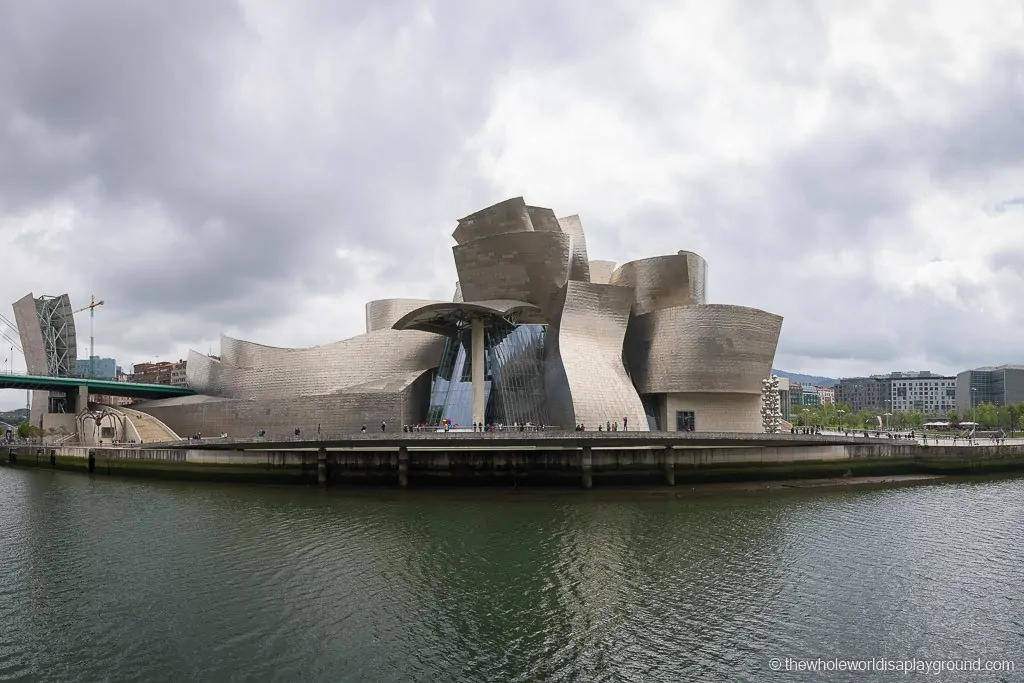
2 | San Sebastian
The picturesque San Sebastian on the Bay of Biscay is a world-renowned foodie destination with a charming Old Town and one of the best beaches in Spain. Foodies can rejoice as San Sebastian boasts the second-highest number of Michelin Stars than any other city, only Kyoto in Japan has more. The city has an incredible 17 Michelin Star restaurants, including three of the 7 Spanish Three-Star Michelin restaurants. San Sebastian was once the chosen holiday destination of Spanish Royalty and the beautiful mix of elegant buildings, cobblestone streets and stunning architecture continues to draw visitors today.
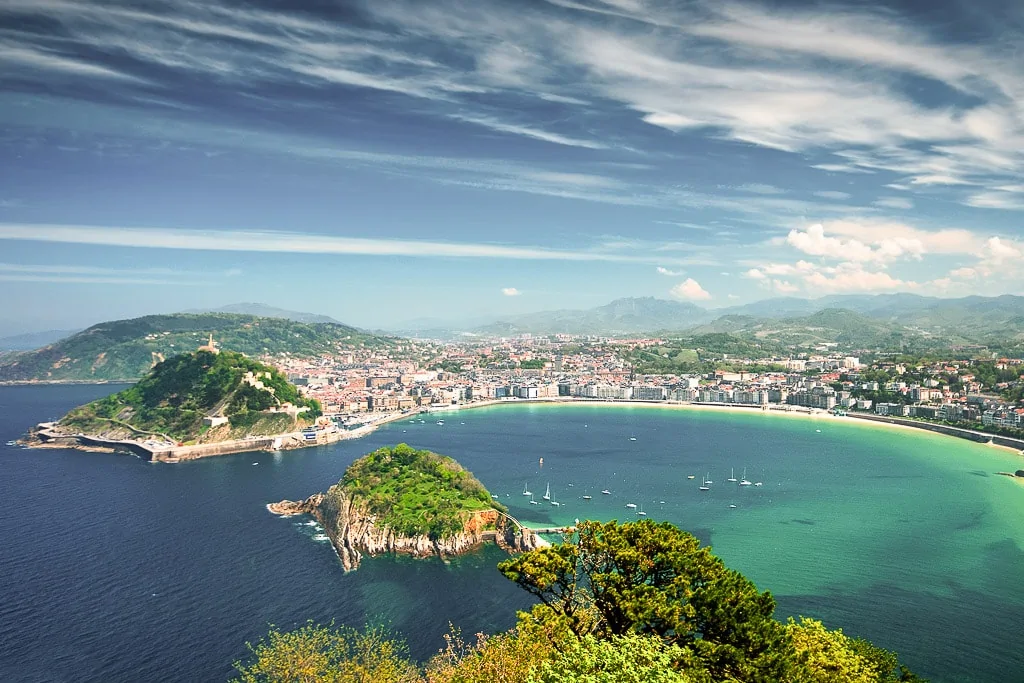
3 | Vizcaya Bridge
The Vizcaya Bridge, a UNESCO World Heritage site, connects the neighbouring towns of Getxo and Portugalete between which the Nervion River passes. It was the first bridge in the world to carry people and vehicles on a suspended gondola which is high enough to allow boats to navigate underneath. The Vizcaya Bridge is located close to Bilbao and is more than worth the trip to experience the gondola crossing!
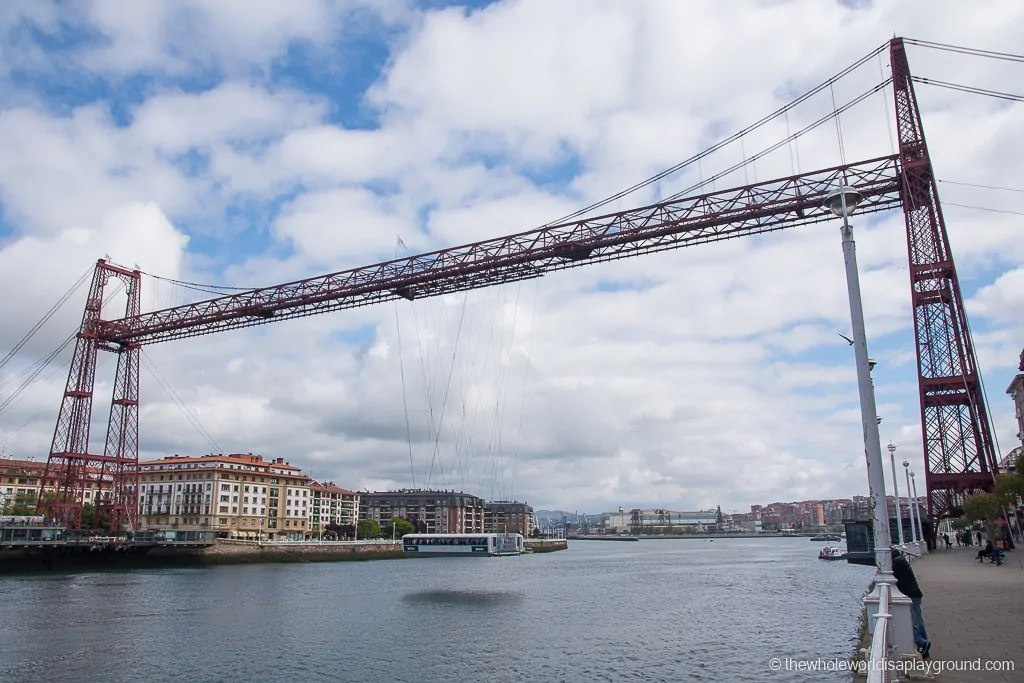
4 | San Juan de Gaztelugatxe
The tiny island of Gaztelugatxe is connected to the Basque mainland by 241 steps and a rugged stone bridge and is one of the most stunning sites in the region. Visitors to the island can explore the historic church, San Juan de Gaztelugatxe, where it’s common practice to ring the bell three times and make a wish. The picturesque island recently shot to fame after featuring in Season 7 of Game of Thrones where it doubled as Dragonstone.
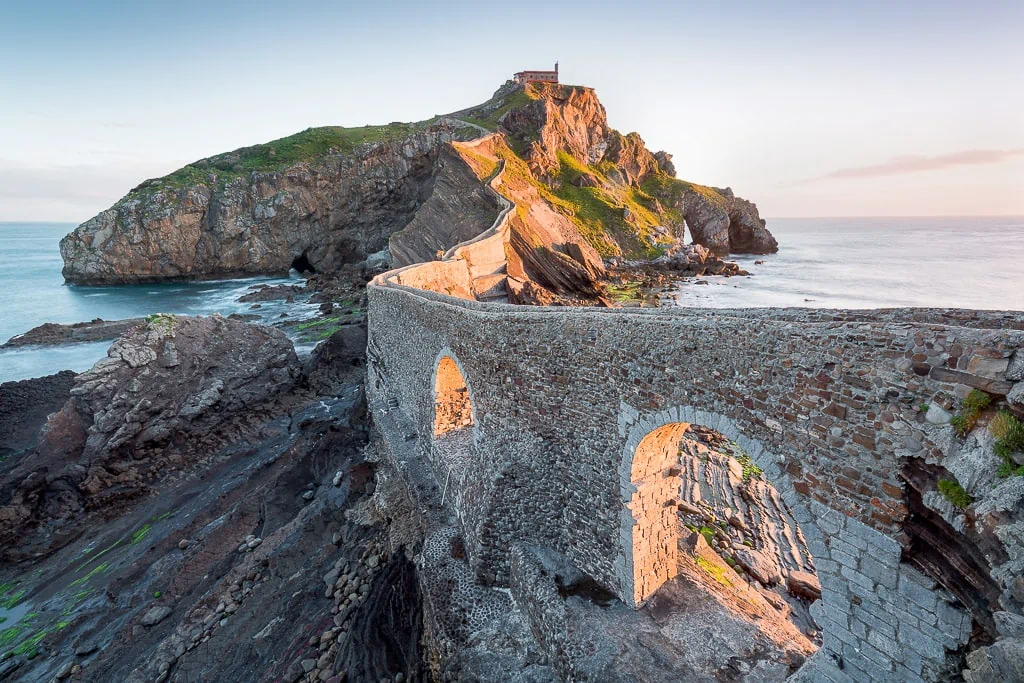
5 | Santiago de Compostela
The beautiful town of Santiago de Compostela is best known as the final stop of the world-renowned Camino de Santiago pilgrimage. The town is an intriguing mix of history and the vibrant energy brought by a jubilant stream of pilgrims arriving after completing the Camino. The Old town is a UNESCO World Heritage site and is considered one of the world’s most beautiful urban areas. It’s incredible to meander through its narrow streets, where wine and tapas bars spill out onto the lively squares, and visit the historic Cathedral de Santiago de Compostela where the remains of Saint James are said to be buried.
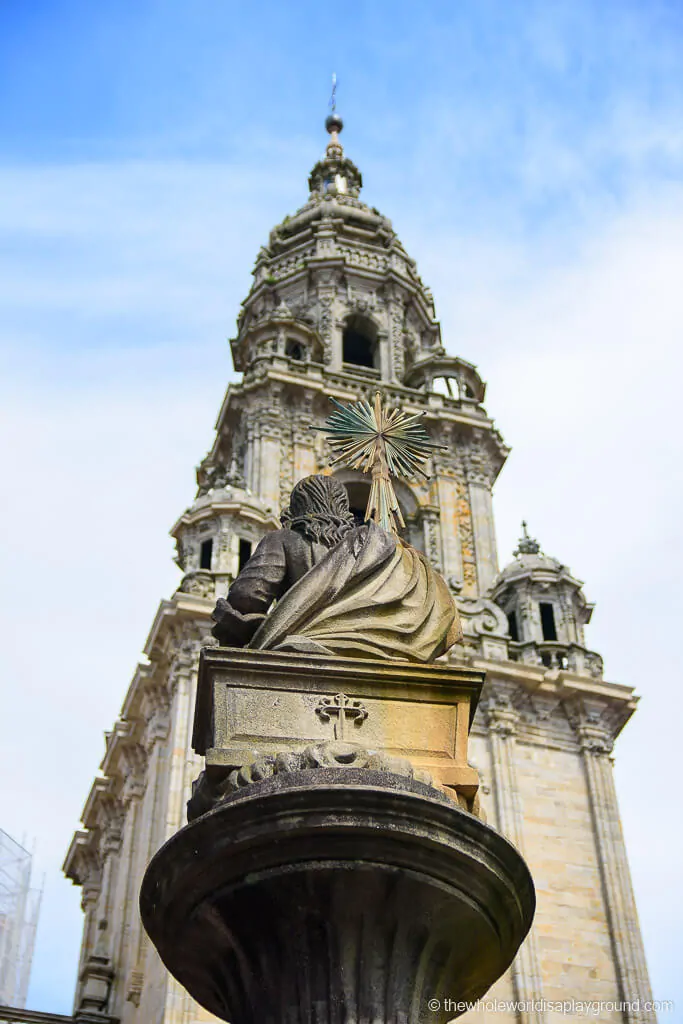
6 | Las Médulas
The burnt orange clay mountains of Las Médulas, once the most important gold mine in the Roman Empire, are one of the most fascinating sights we saw in Northern Spain. The Romans used a complicated aqueduct system to force the water through and, ultimately, rearrange the mountains and are believed to have extracted almost 1,000 tonnes of gold. The viewing platforms offer a stunning panorama of the area and it is also possible to explore the mines by guided tour.
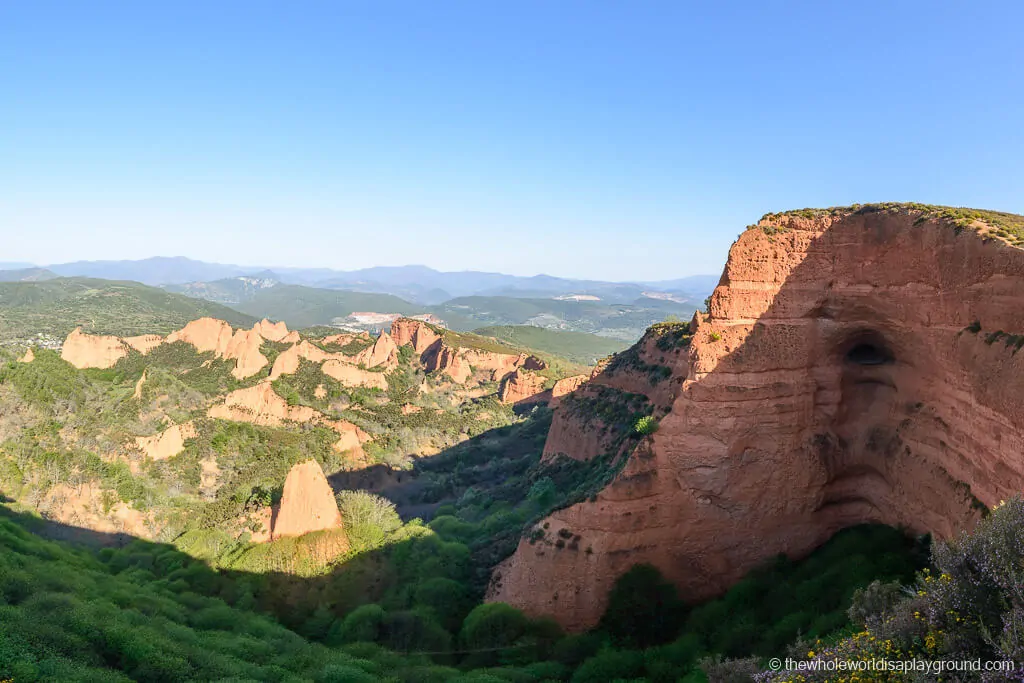
7 | Burgos
The charming city of Burgos is located just south of Bilbao and is one of the main crossroads of the Camino de Santiago pilgrimage. The stunning Gothic Burgos Cathedral in the city centre is designated as a UNESCO World Heritage Site and is one of the finest pieces of religious architecture you’re likely to visit.
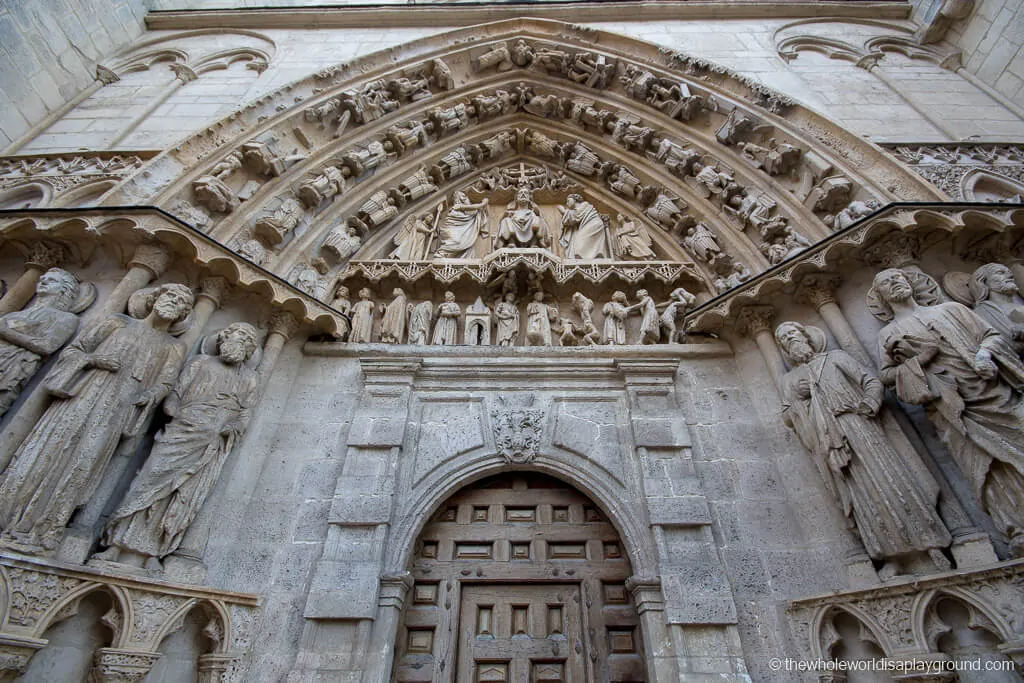
8 | Monasteries of San Millán de la Cogolla
The village of San Millán de la Cogolla is a short drive from Burgos and is home to both the Suso and Yuso Monasteries. Set in the middle of the La Rioja wine region and awarded UNESCO World Heritage status in 1997, the monasteries are a must for anyone visiting Northern Spain. Now uninhabited, tours of the monasteries take visitors through their ornate interiors and the monks living quarters. The first written Spanish and Basque texts have been traced to the Suso monastery.
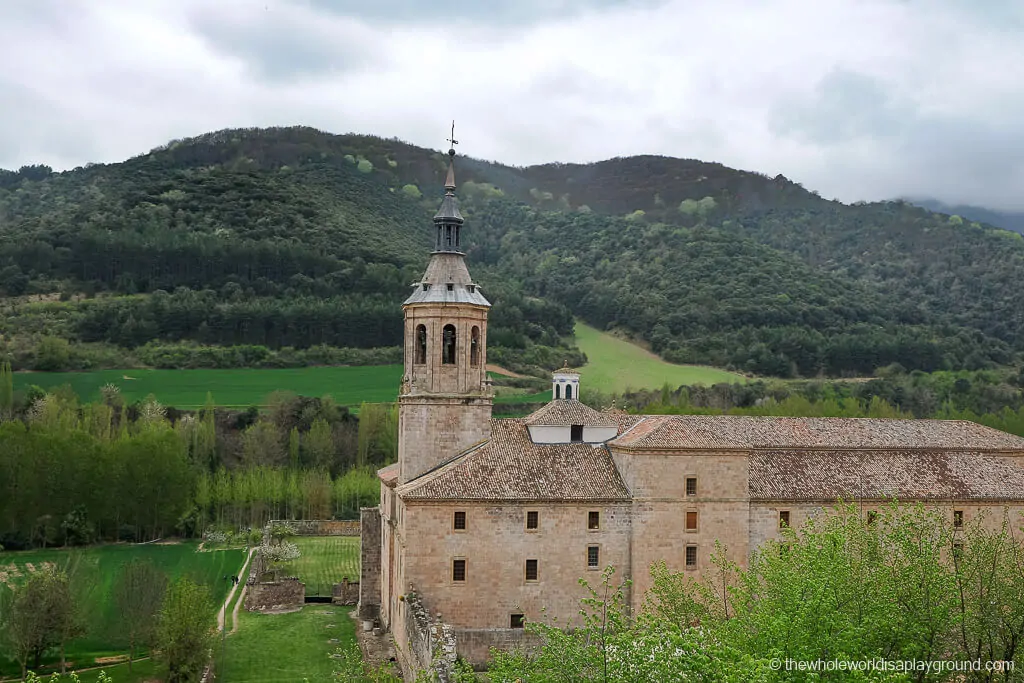
9 | Atapuerca
For the opportunity to explore millions of years of history, the Archaeological site of Atapuerca is a short drive from Burgos. It contains traces of hominid life from a million years ago and one of the major finds included a cave with bones of 32 male and female bodies of all different ages.
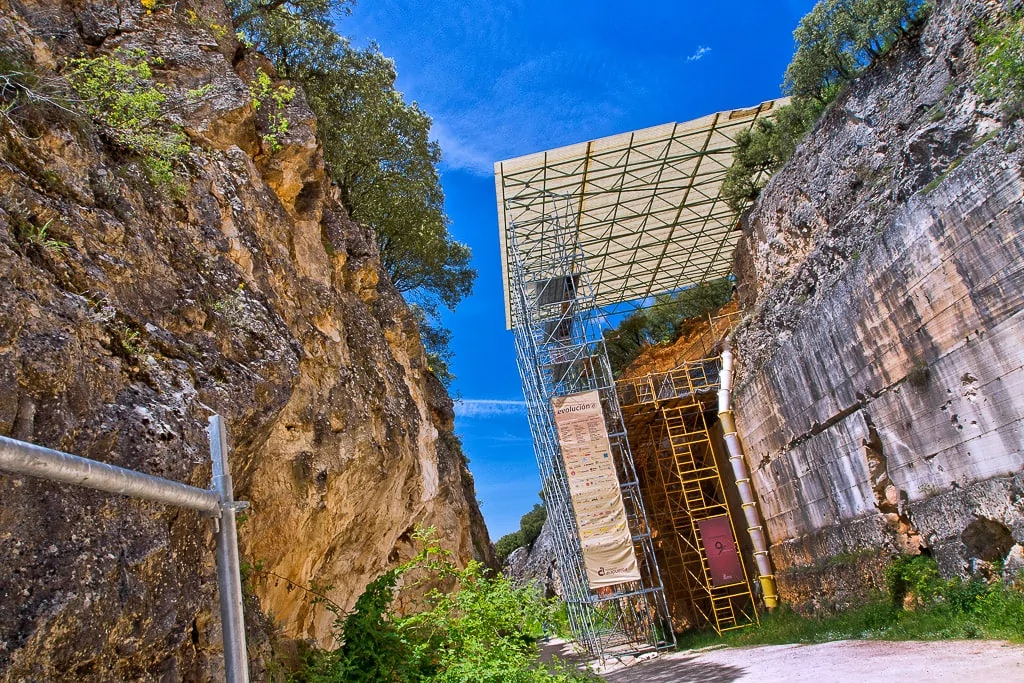
The Asturias region is one of Northern Spain’s hidden gems. From Oviedo, the capital, to the stunning Alpine landscapes of the Picos de Europa, to its renowned cider and cheese, Asturias has a lot to offer.
10 | Oviedo
Oviedo is a charming city and a lovely mix of Old Town and modern. It was founded in 761AD and is home to some of the oldest religious buildings in Spain. The streets are picturesque and there are sculptures dotted throughout the city: if you come across a Woody Allen sculpture it’s because he filmed the movie Vicky Cristina Barcelona in Oviedo! Make sure to sample the Asturian sweet treat Carbayones and get merry on Sidra, the local cider.
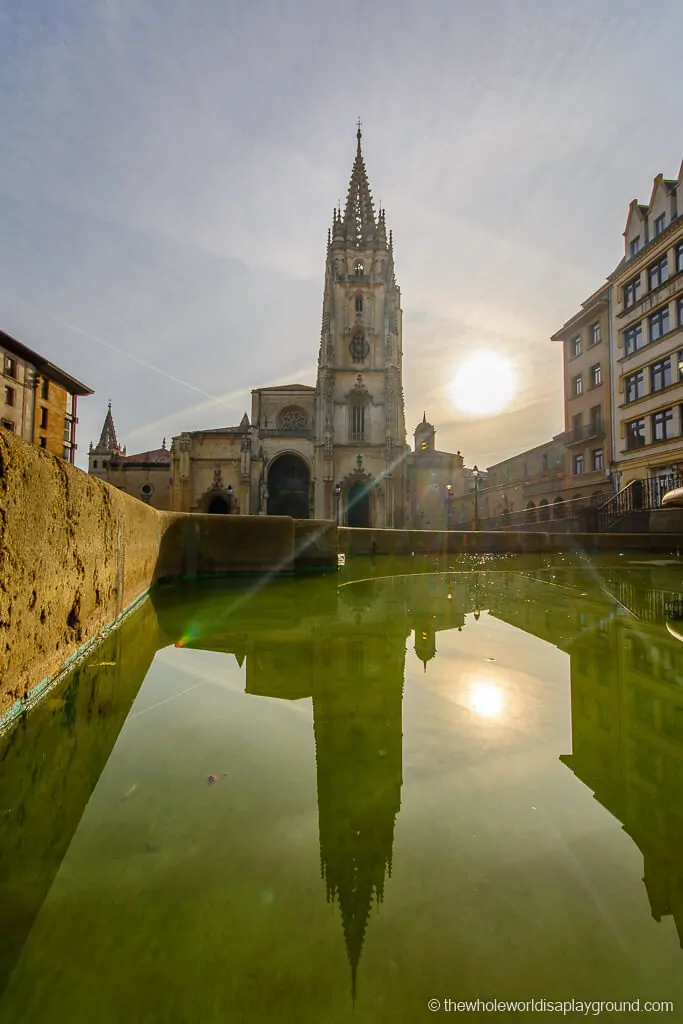
11 | Monuments of Oviedo and the Kingdom of the Asturias
Asturias, founded in 761AD, is credited with keeping Christianity alive in the Iberian Peninsula during the 9th Century and the monuments of Oviedo and the Kingdom are a series of pre-Romanesque constructions from the period. The Oviedo Cathedral and the hilltop Roman churches of Santa María del Naranco and San Miguel de Lillo are our highlights.
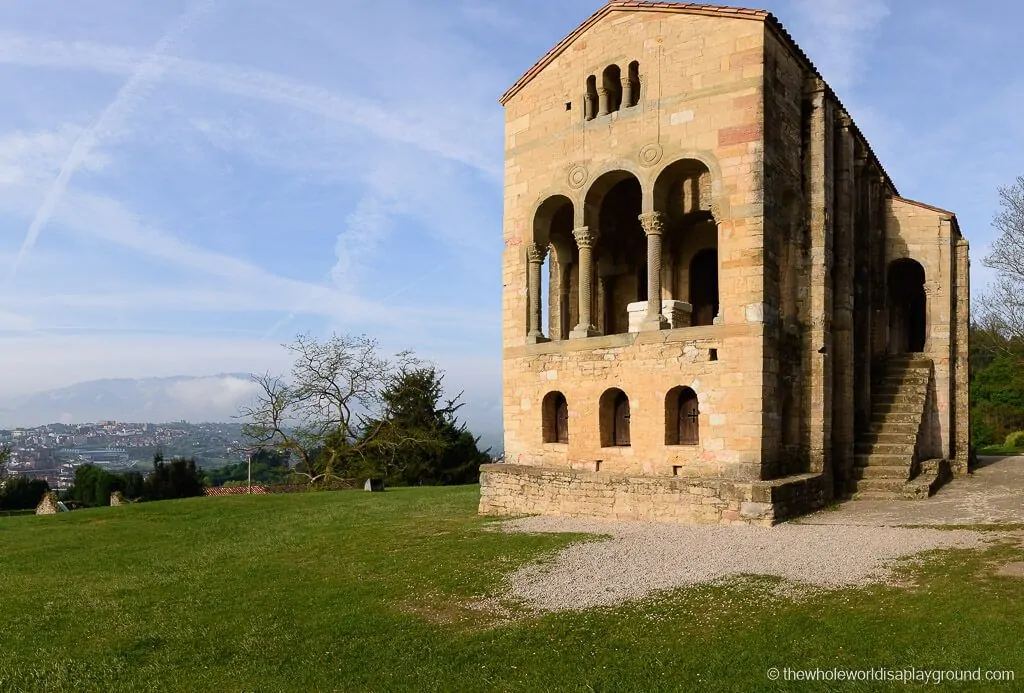
12 | A Coruña, Galicia
The beautiful coastal town of A Coruña boasts sweeping coastal views and incredible food due to its history as a major Spanish fishing port. A Coruña is definitely not to be missed and is most well known for its iconic lighthouse, the Tower of Hercules.
A UNESCO World Heritage Site, the Tower of Hercules towers 50metres above the harbour protecting the entrance to A Coruña. The Tower of Hercules is one of the oldest Roman lighthouses still in operation and is visible for miles.
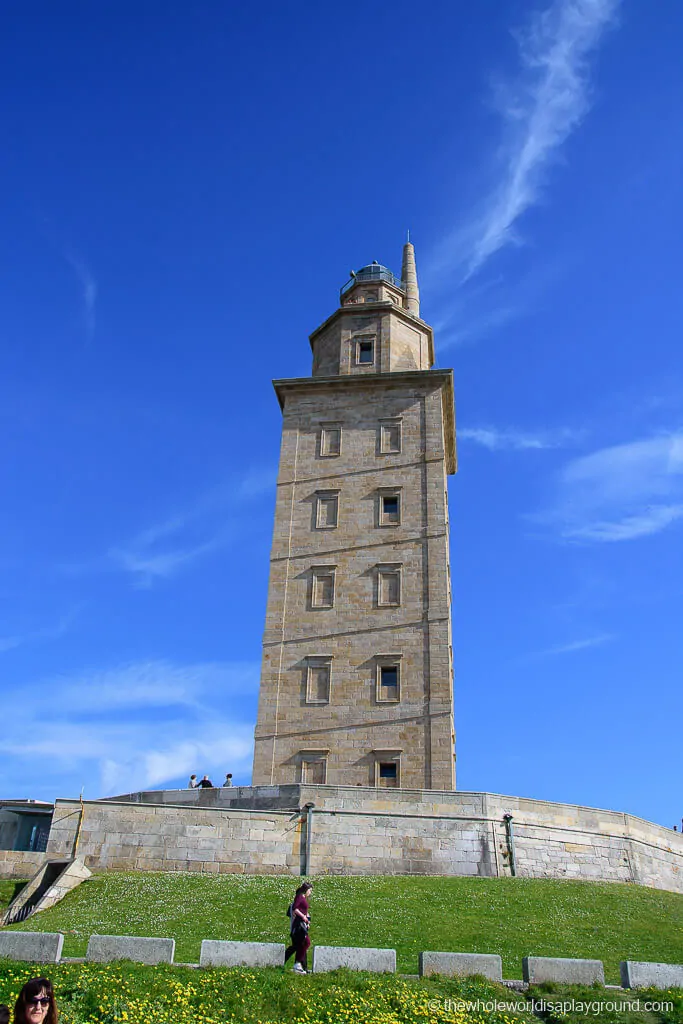
13 | Salamanca
The vibrant university city of Salamanca is a northern Spain gem and one of our favourite cities in the region. The magnificent main square, Plaza Mayor, is the heart of the city and its dramatic architecture is breathtaking. The Old and New Cathedrals dominate the city skyline and a climb up their towers rewards with panoramic views of Salamanca. The university, founded in the 15th Century, is the oldest in Spain and continues to attract a young population which adds to the vibrancy of the city.
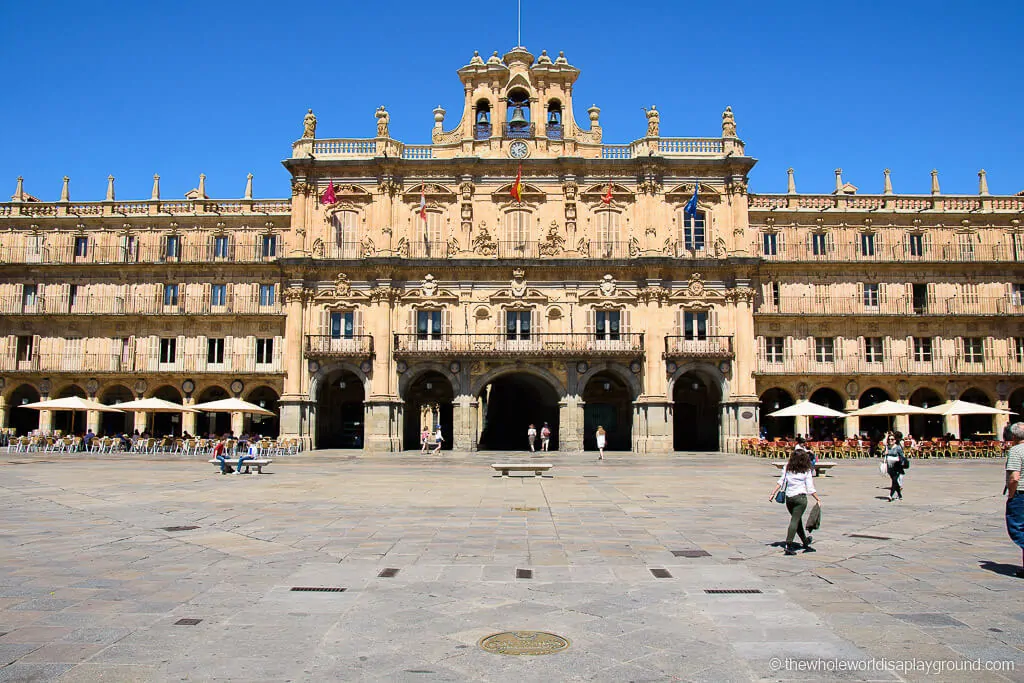
14 | Segovia
Segovia was a Spanish town that really surprised us with its charms! We spent an afternoon exploring the old Jewish quarter, the cathedral and chilling in the park which is overlooked by the beautiful castle of Alcázar de Segovia. Along with Neuschwanstein Castle in Germany, it’s believed that Alcázar de Segovia was the inspiration for Walt Disney’s Cinderella castle and it is easy to spot the similarities and inspirations! Segovia is most well known for the massive Roman aqueduct which runs through the town centre and, together with the old town, forms part of the Segovia UNESCO World Heritage Site.
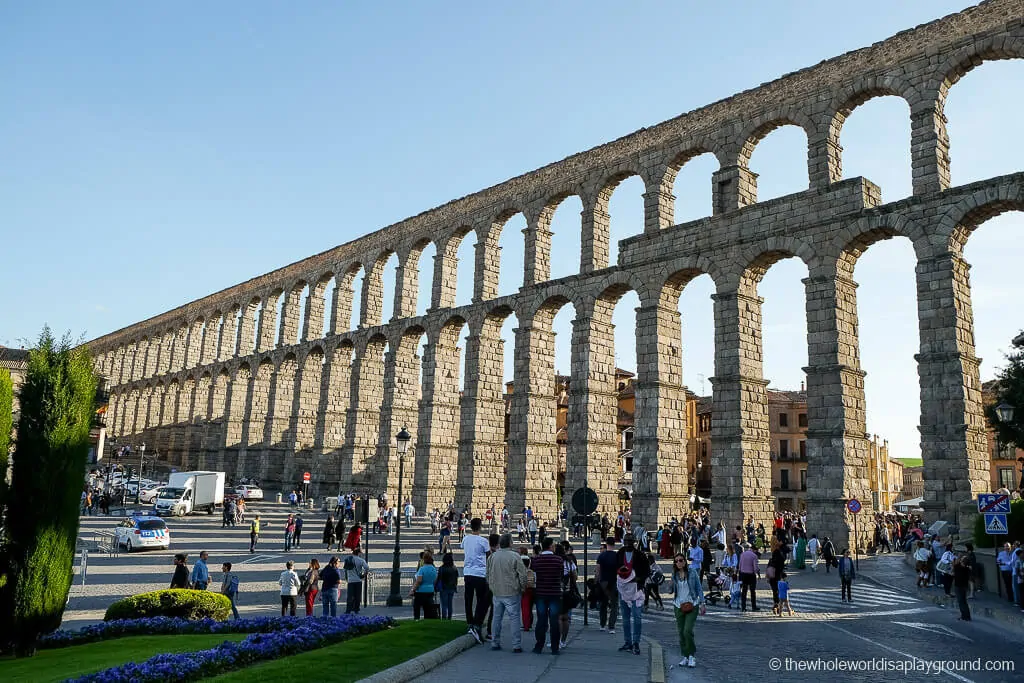
15 | Avila
The old town of Avila is spectacularly surrounded by towering city walls and it is one of the most remarkable and beautiful medieval cities in Spain. Construction of the walls began at the end of the 11th Century and are at their finest in the evening when they are bathed in light. Pilgrims flock to the Convent of St Teresa, a convent and shrine built at the birthplace of St Teresa.
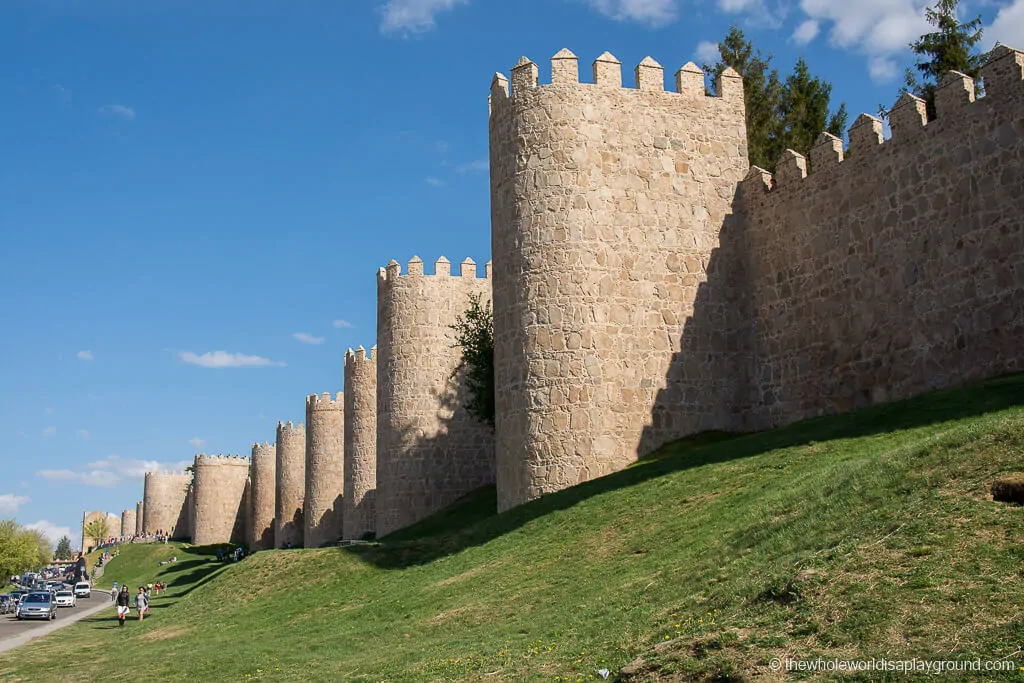
16 | Valley of the Fallen
The Valley of the Fallen is one of the most controversial memorials in Spain. The memorial, consisting of a huge basilica and a towering hilltop cross, was constructed on the orders of the military dictator Franco as a burial place and tribute to those who died in the Spanish Civil War.
Over 30,000 people from both sides of the war are buried in the valley alongside Franco: his tomb is located in the basilica and he is the only person buried in the Valley of the Fallen who did not die in the Civil War.
The monument was completed in 1959 and continues to provoke controversy for a number of reasons: the memorial was constructed through the forced labour of political prisoners some of whom who died as a result, the presence of Franco’s corpse and the lack of a proper burial for so many of those resting in the Valley.
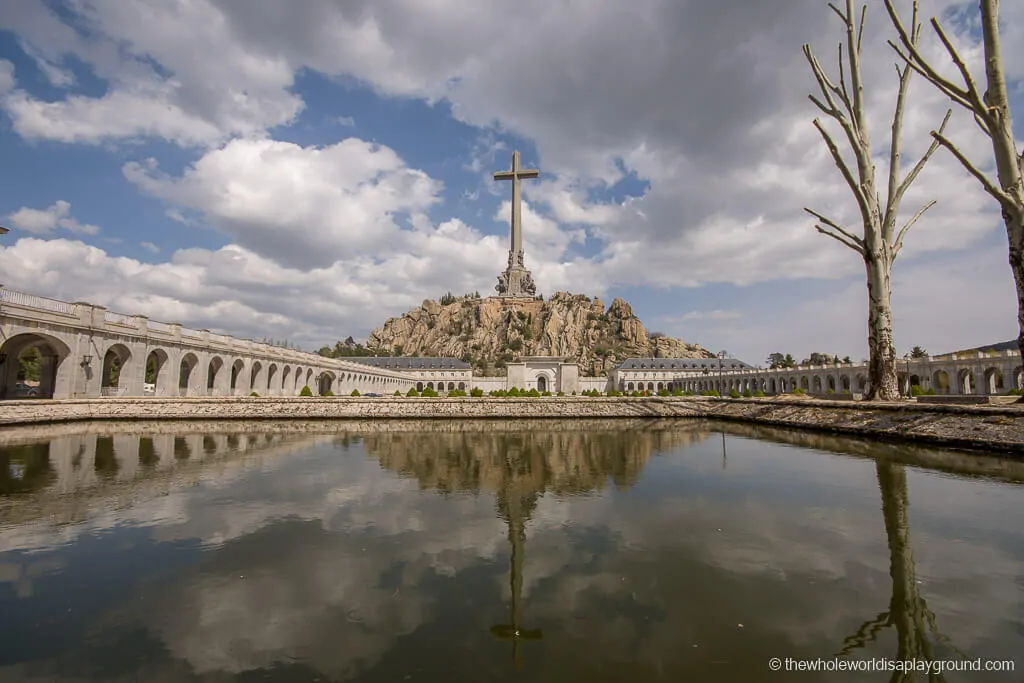
17 | San Lorenzo de El Escorial
Visitors flock to the Monastery of El Escorial in the quaint little town of San Lorenzo de El Escorial. The stunning monastery houses an incredible art collection and boasts stunning frescoes.
The library has a collection of over 40,000 books and the Royal Parthenon contains 26 gold and marble tombs of former Spanish Royalty, both of which are highlights of a visit. The surrounding hills offer some nice hiking opportunities and the town is full of quirky shops and traditional restaurants.
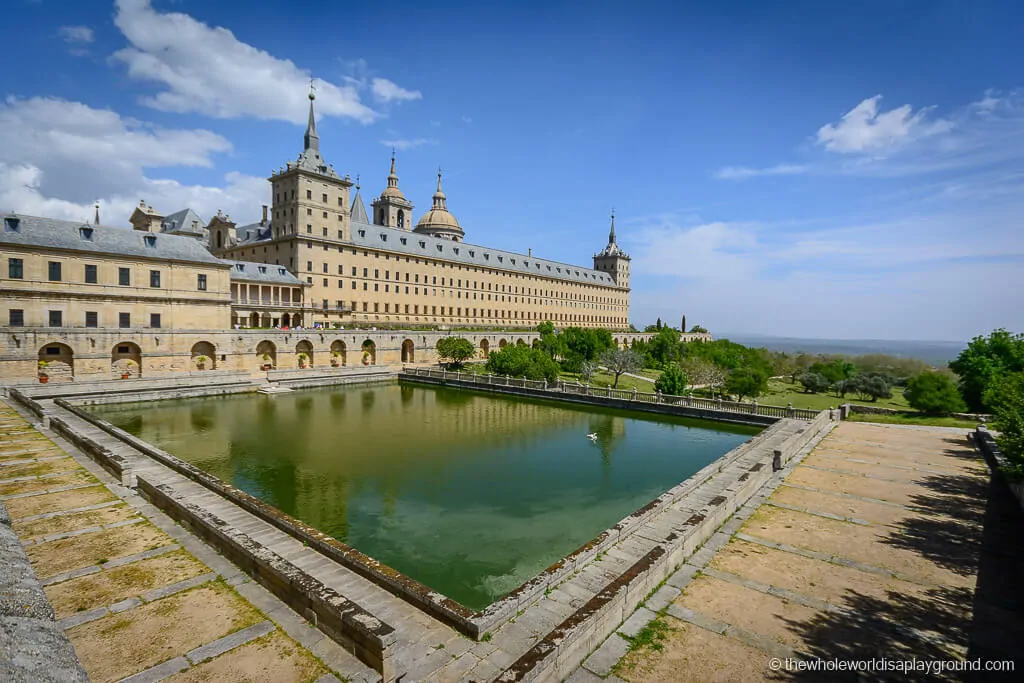
Disclaimer: As an Amazon Associate I earn from qualifying purchases.
- Cities in Spain
Cities in Northern Spain: 12 locations and best spots to visit

Win a FREE Trip to Spain!
Exciting Announcement! For the first time, we're thrilled to offer exclusive trips to the heart of Spain - an experience like no other. This isn't your typical tourist journey; it's a unique opportunity to immerse yourself in authentic Spanish culture, alongside real locals and our passionate team.
But there's more! Simply by requesting information about this amazing trip, you'll be entered into a special draw to win a Fully Paid Trip to Spain for Two. And that's not all - everyone who inquires will receive an exclusive bonus gift, valued at $500, available only now.
Click Here ↑ to Request Information & Enter the Draw!
Mountains, Vulcans, forests, rivers, valleys, beaches, lakes… Everything that you could ever imagine we have it in Spain.
I’ll tell you everything about Northern Cities in Spain on this post. Places to go, landmarks, famous historical locations, and gastronomy to discover! And you’ll agree with me that Spain is blessed with incredible nature, landscape, paradisiac views, surprising and diverse places you only see in movies (literally).
BUT, I want to focus on the Northern Cities for this one… since there’s a misconception that the North zone is full of cold people, cold places, nothing to do, and most individuals might think that anything worth visiting limits the big and southern cities .
You’ll have to see some places for yourself to believe it, and dishes will leave you drooling. Everyone always says that the North has delicious gastronomy (and some generous portions too!)
So… let’s take a trip to the upper part of the Iberian Peninsula .
Table of Contents ▼ ▶
1. San Sebastián, País Vasco
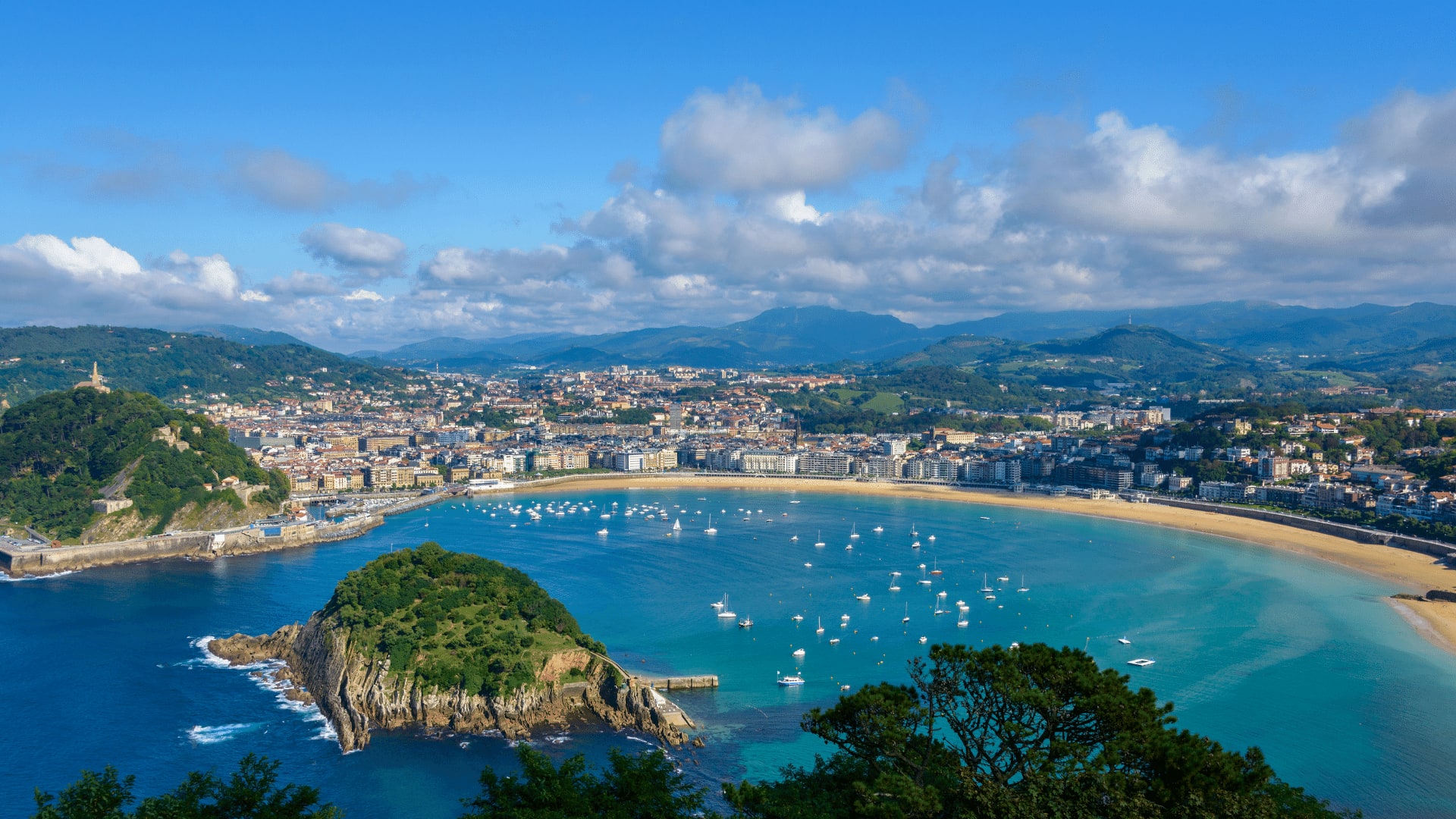
San Sebastian (Donosti in Euskera, their language) is a cosmopolitan but relatively small city of approximately 186.700 inhabitants.
This city is unique thanks to its delicious gastronomy, stunning urban beaches, and French architecture. It has complete leisure and cultural offer, allowing visitors and tourists to have an excellent time in this city. It’s ideal for a weekend getaway or a “bridge” during a national holiday, so you grasp the idea of everything it has to offer.
Beaches you MUST visit if you ever go to San Sebastian are:
- La Concha Beach / (Playa de la Concha): perfect for spending a lovely afternoon walking on the sand.
- Zurriola Beach: Best for surf lovers!
- Ondarreta Beach
Landmark and Historical Places to visit:
- Iglesia San Vicente
- Artzain Onaren Katedrala
- Old town hall
- Castillo de la Mota
- Plaza de la Constitución
San Sebastián is also known for The International Film Festival in September, where international stars arrive in the city! And if you’re lucky like me, maybe you can find Chris Hemsworth at the entrance of the emblematic Maria Cristina Hotel! (I have proof at the back of this post :) )
Moreover, this city is also the world capital of gastronomy and pintxos!!! (which are basically the same as Spanish tapas, but how they call it in the north). San Sebastian is home to the highest concentration of Michelin stars per capita in the world!!
I suggest you continue your visit by tasting the traditional pintxos in the so-called “Parte Vieja.” BUT good pintxos are in almost any corner of the city! -Not only in the old town.
We could talk about ages about ideal places for pintxos and restaurants in San Sebastian, but let me highlight some of my favorites:
- La Cuchara de San Telmo: “Pintxo de Foie”
- La Viña: This place has the BEST Cheesecake or “Tarta de Queso” ever. Recognized internationally by many… including the New York Times, as the “Flavor of the Year.”
- Ezkurra: Try the “Ensaladilla Rusa”
- Atari: Solomillo
Order any Pintxo that says “Foie” or “Solomillo,” and you’ll thank me later!
2. Santander, Cantabria

The charming city of Santander is the capital and largest city of the Autonomous Community of Cantabria. It’s on the north coast and has many beaches, ferries from Great Britain, and a small historic center. Santander can be considered small. The distance from one end to the other is about 4 miles. And, within the city center, everything is basically within walking distance.
Landmarks and Historical Places:
- Palacio de la Magdalena
- Prehistoric and Archaeological Museum of Cantabria
- Maritime Museum of Cantabria
- “Nuestra Señora de la Asunción de Santander” Cathedral
- Centro Botin
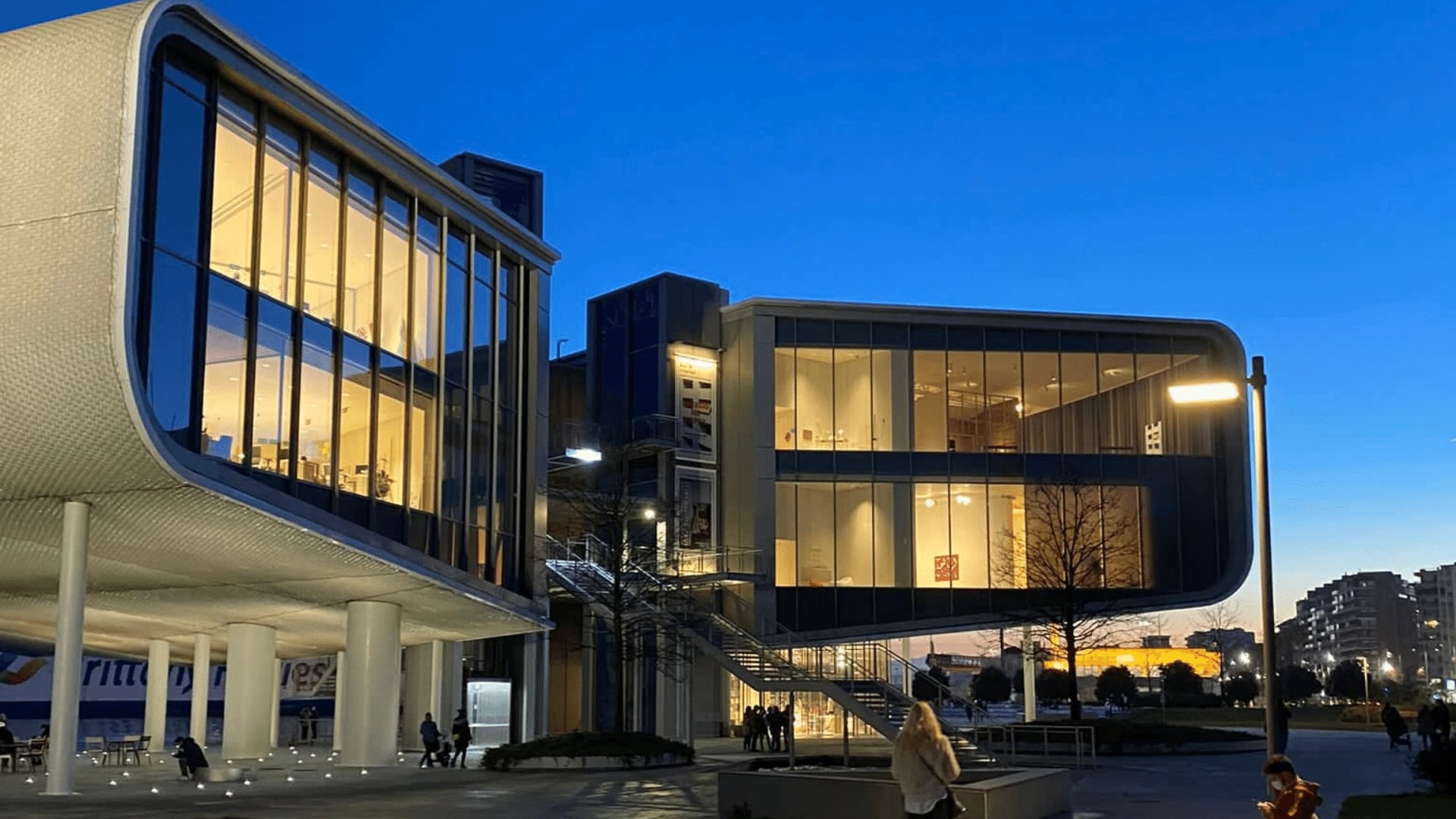
Important info for art and architecture lovers: Centro Botin is the city’s most important art center. The gallery is in a futuristic building, highlighting art in many different forms, from videos and photography to painting and sculpture. Visitors can explore some of the works of many international artists, such as Carlos Garaicoa, Mona Hatoum, and Joan Jonas.
Streets to visit:
- “Plaza de José Antonio (Plaza Pombo)”
- “Paseo de Pereda”
- Castelar Street
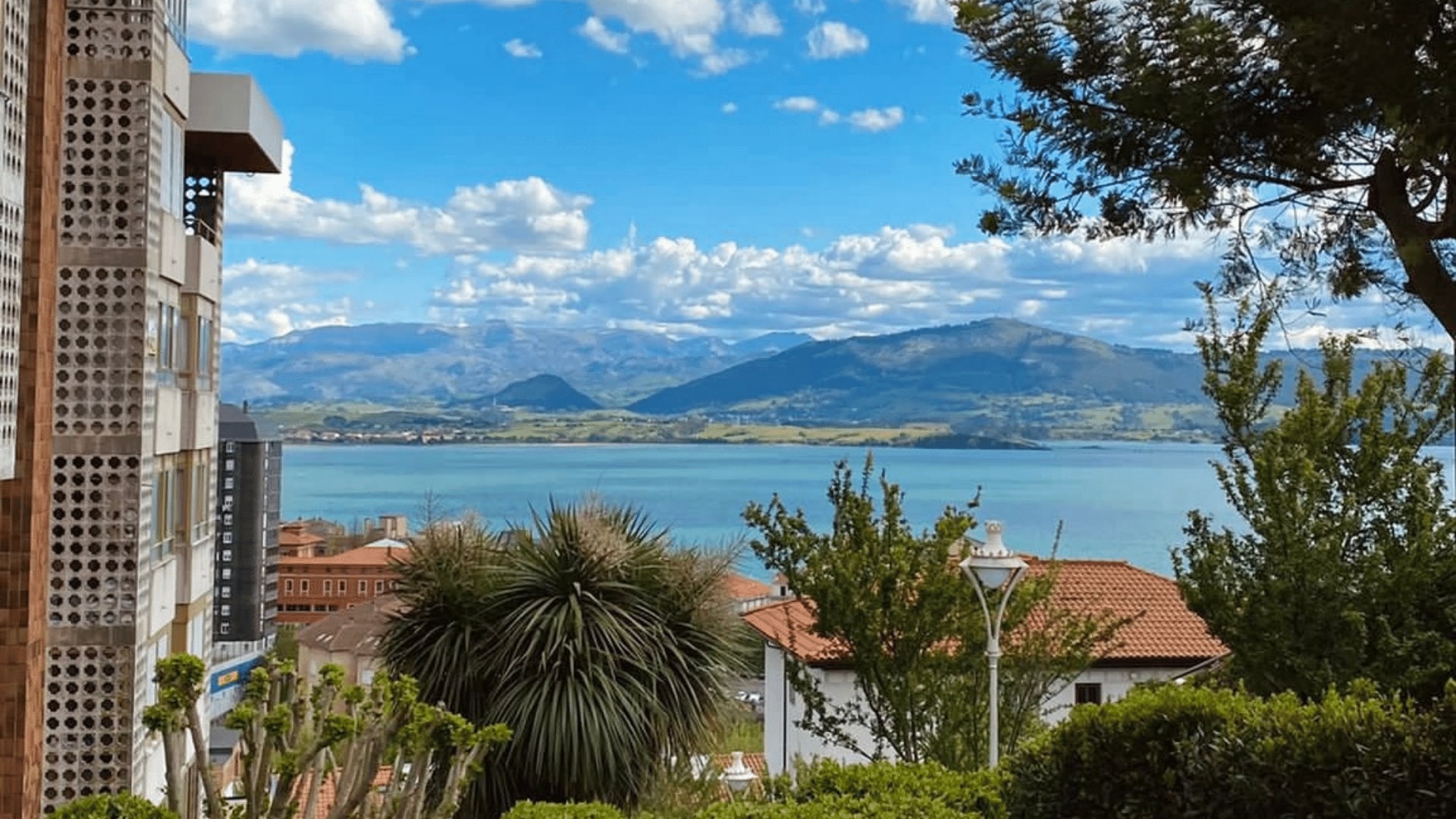
Beaches to visit:
- Magdalena Beach
- Sardinero Beach
- Camello Beach
3. Santiago de Compostela, Galicia
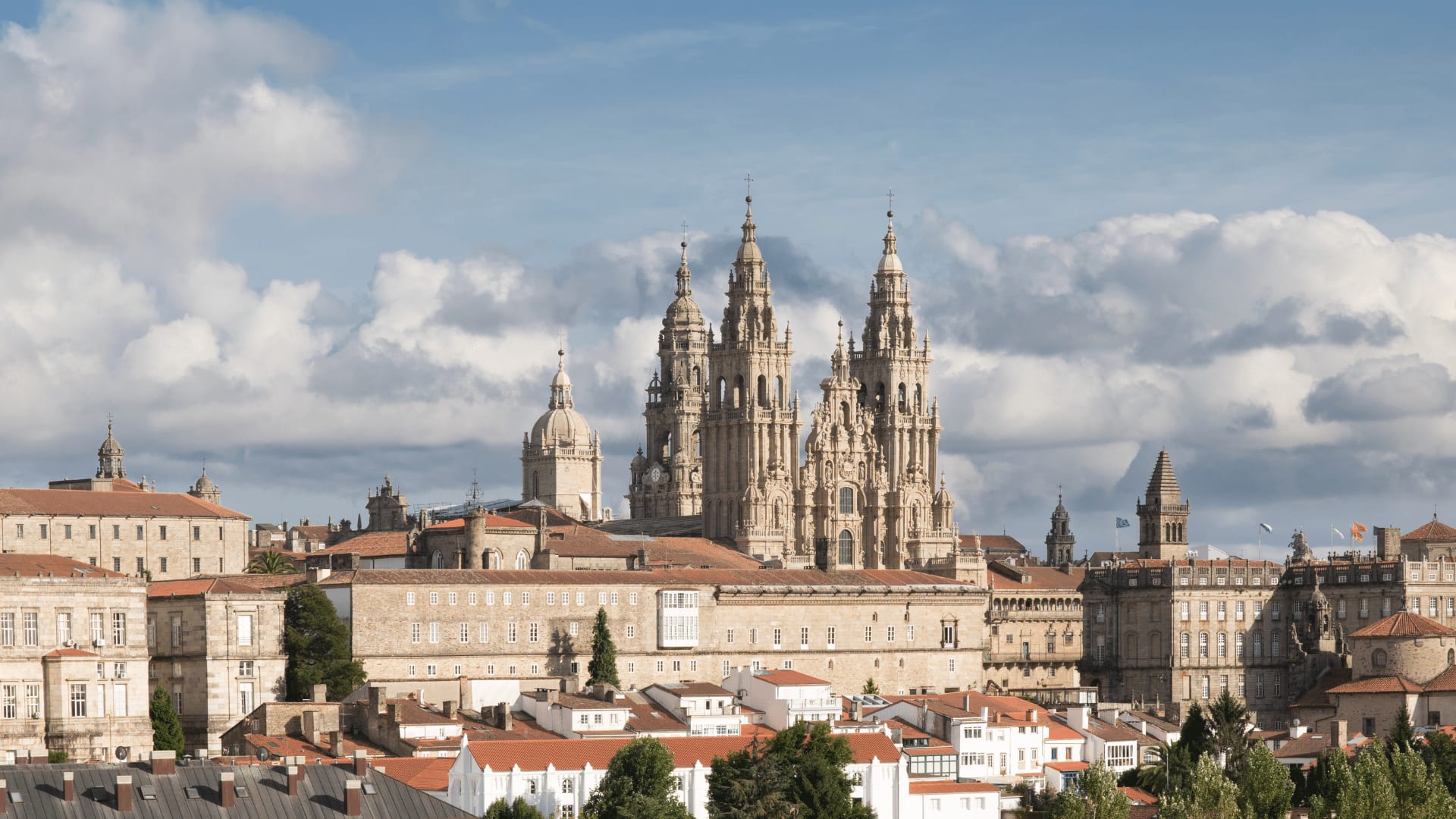
Santiago de Compostela is the capital city of Galicia, in the northwest of Spain. It’s well-known for having many historical sites, and the city is also one of the most important places in Catholicism, where one of the 12 Apostles of Jesus was buried. It’s famous for the Way of St. James, or “Camino de Santiago,” a Christian pilgrimage route ending in Santiago.
The city’s official languages are Galician, which has many similarities to Portuguese since it’s so close to the border, and Spanish.
Landmarks and Historical Places to visit:
- Praza do Obradoiro
- “Santiago de Compostela” Cathedral
- Rajoy Palace
- Quintana Square
- Catholic Kings Hostal
- Cathedral Museum
- Galician Center of Contemporary Art
Gastronomy:
Santiago de Compostela is well-known for having fantastic gastronomy and a wide variety of plates and dishes to die for!
You should definitely try the following:
- “Vieiras Gratinadas”
- “Caldo de Grelos Gallego”
- “Pulpo a la Gallega”
- “Empanada Gallega”
You might wonder what “Gallego” means that you have never eaten it before… Me neither! :p That word refers to natives from the Autonomous Community of Galicia. They’re called Galicians or “Gallegos” in Spanish.
4. Oviedo, Asturias
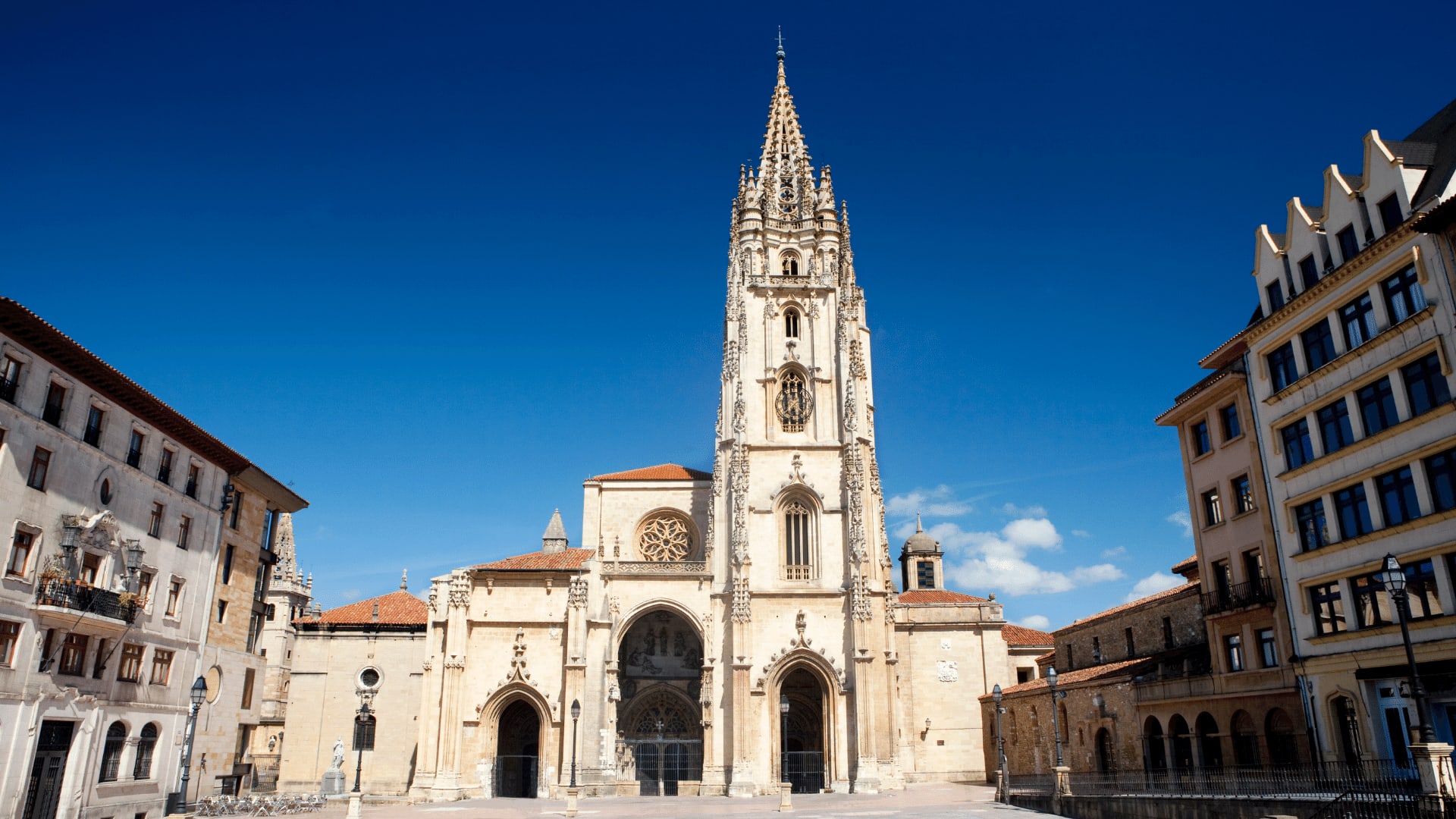
The city of Oviedo, located in the heart of the province of Asturias, is known for many historical monuments, Pre-Romanesque art, gastronomy, nature, and culture.
The old town of Oviedo, The “Casco Antiguo,” has some beautifully restored buildings and squares. Most of the city center can only be visited by walking. (Like many other cities in Spain) because cars are not allowed in the streets.
Some of the most outstanding landmarks in Oviedo are:
- Cathedral of San Salvador
- Museum of Fine Arts
- Monte Naranco, where you’ll find Santa María del Naranco and San Miguel de Lillo
- Plaza del Fontán
- El Campo de San Francisco
As for the culture, many activities and local festivities highlight local food, folk groups, and local costumes, so keep these dates in mind if you really want to get to know Asturias’ culture.
Traditions and Culture in Oviedo:
- “La Hoguera de San Juan” - June 23 , they have bonfires all over the city and in the Square of the Cathedral.
- “Fiestas de San Mateo” - September 19. A procession takes place through the main streets in honor of the Asturian emigrants in which, at the end of the day, people can enjoy watching some fireworks in Parque de Invierno.
- Fair of La Ascensión - May. It’s a fair dedicated to the Spanish countryside . Many arts and crafts markets, local producers, and folk groups play music in the streets.
- La Balesquida or Countryside Tuesday - First Tuesday of Whitsun. They do a procession in front of the Cathedral, and then they hand out traditional f ood.
5. Bilbao, País Vasco
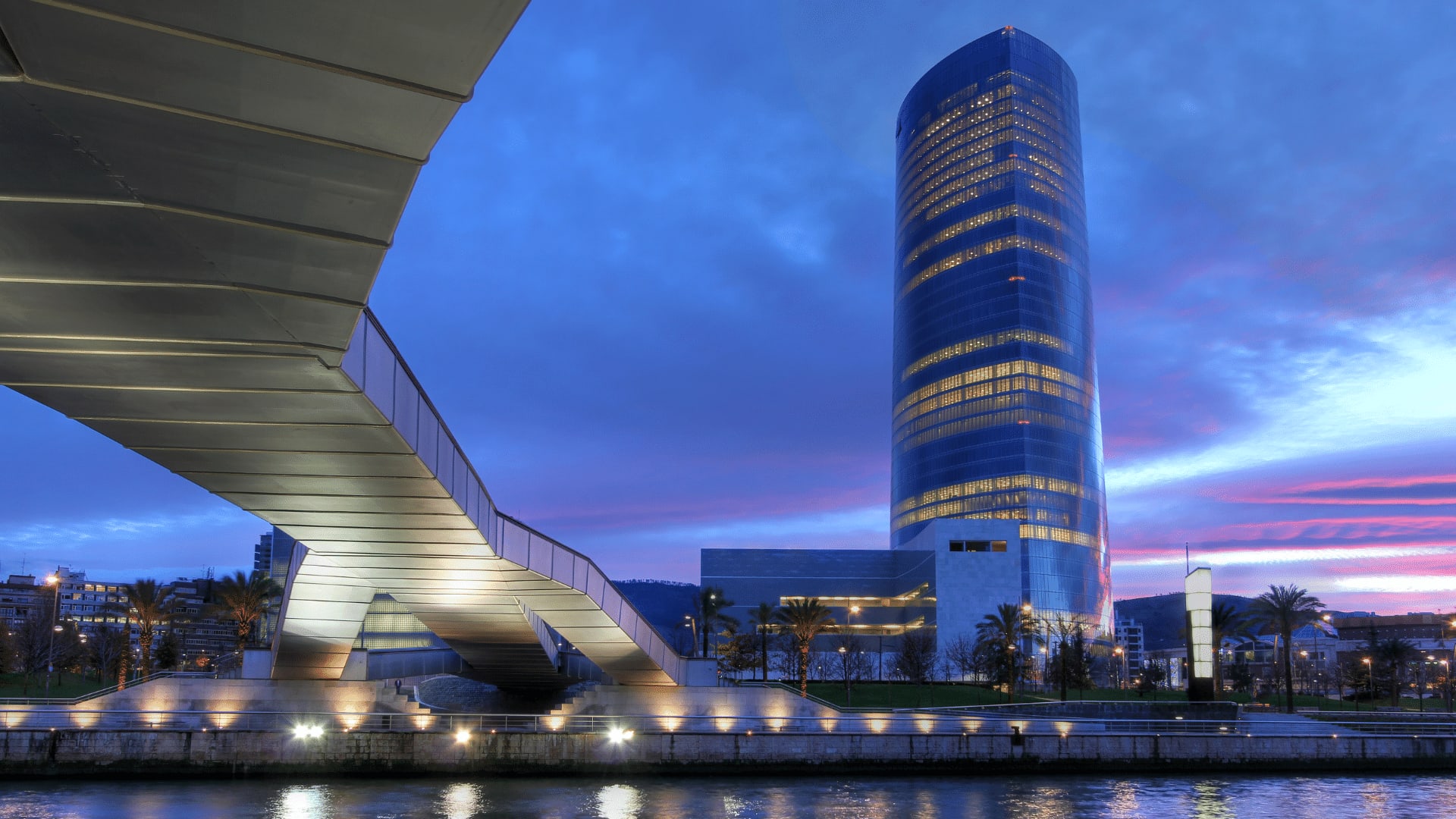
Bilbao is the largest city in the Basque Country. It has a population of about 350,000 people. It’s actually one of the best places to deeply understand and experience the ancient culture and language of the Basque people .
Places to visit:
- Guggenheim Museum - It is a MUST for modern art fans!
- Bellas Artes Museum
- Begoña basilica
- Basque Museum
- Moyua Square
- St. James Cathedral
- Church of San Anton
- Maiona stairs
The only UNESCO World Heritage site in Spain listed in the industrial category is found in Bilbao! It is called the Vizcaya Bridge -Also known as Puente Colgante. The city offers tons of things to do. It has world-class museums, mouthwatering food, mesmerizing history and culture, and friendly locals. But I must say Bilbao is a gloomy city, though the weather is never an excuse for Spaniards to enjoy life to the fullest.
I suggest you take a nice walk through the city since it has impressive modern architecture surrounded by green countryside. And, if you get hungry, remember what we talked about, pintxos! They are excellent in Bilbao as well. They eat pintxos either for breakfast, mid-morning snacks, before lunch, or even starters. Pintxos are for whenever you crave them!
6. Zarauz, País Vasco
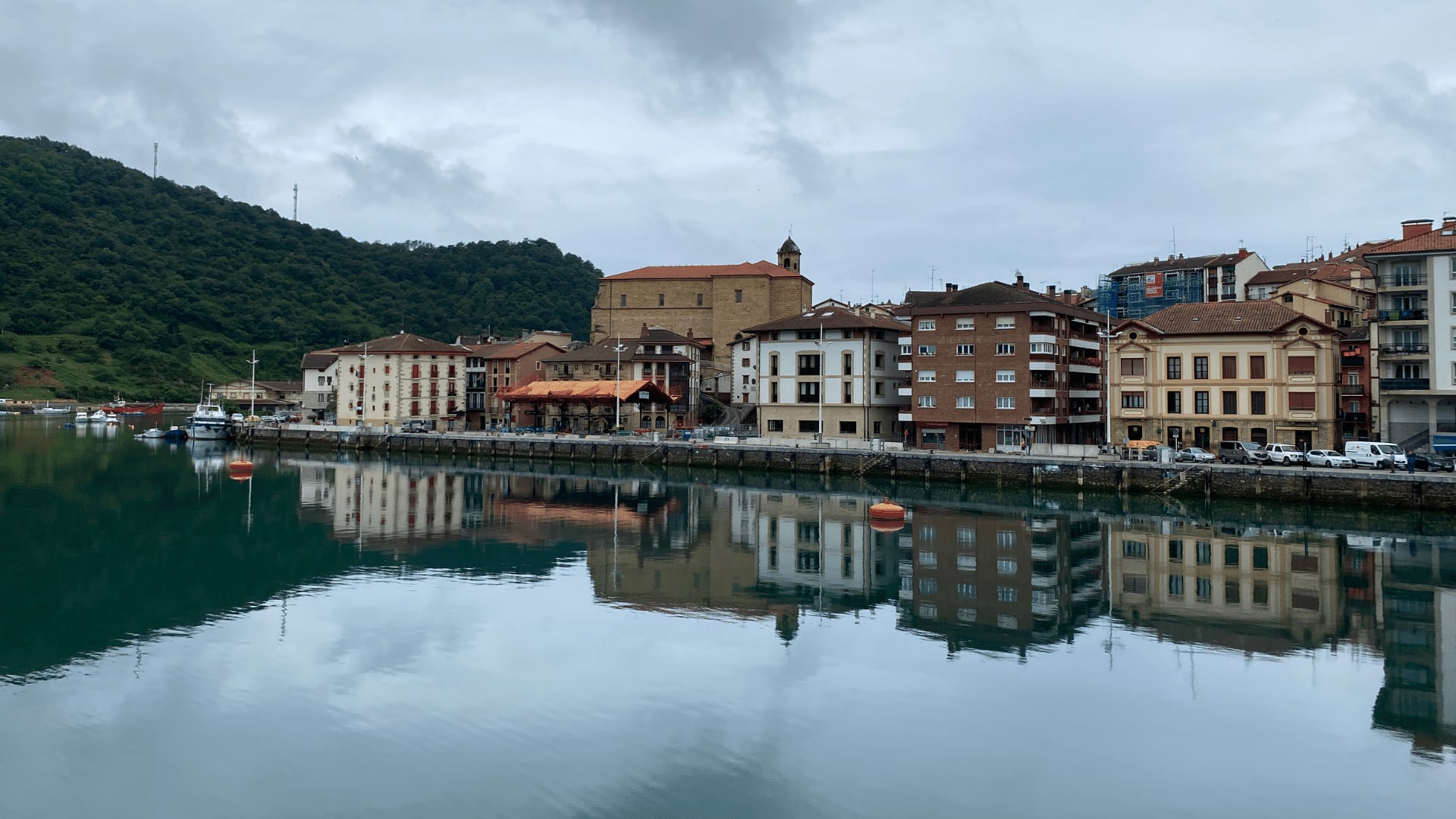
Zarauz (Zarautz in Euskera, the official language) is located in Northern Spain in Guipúzcoa, (in the Autonomous Community of the Basque Country). This tourist village is the perfect destination for surf lovers, and the main thing to see is Zarauz Beach, the longest one on the coast of Guipúzcoa. The city has approximately 25000 inhabitants, considered part of the metropolitan area of San Sebastian, and it’s pretty easy to get to Zarauz from San Sebastian or Bilbao.
Best Parks to visit:
- Park of Pagoeta
- Vista Alegre
- Torre Luzea
Best Places to visit:
- Palacio de Narros: The summer spot of the Queen Isabel II of Spain and the Queen of Belgium, Fabiola!!! This place is located in front of the main beach.
- The old town
- Church of Santa María la Real
- Luzea Tower
- Bay of Biscay - Perfect beach for surfing!
Zarauz offers a broad range of accommodation and hospitality services so everyone can enjoy local gastronomy! Fish is the base of every typical dish and the best time to visit this place is June or August since festivities around those dates take place, and the city welcomes lots of people!
7. Hondarribia, País Vasco
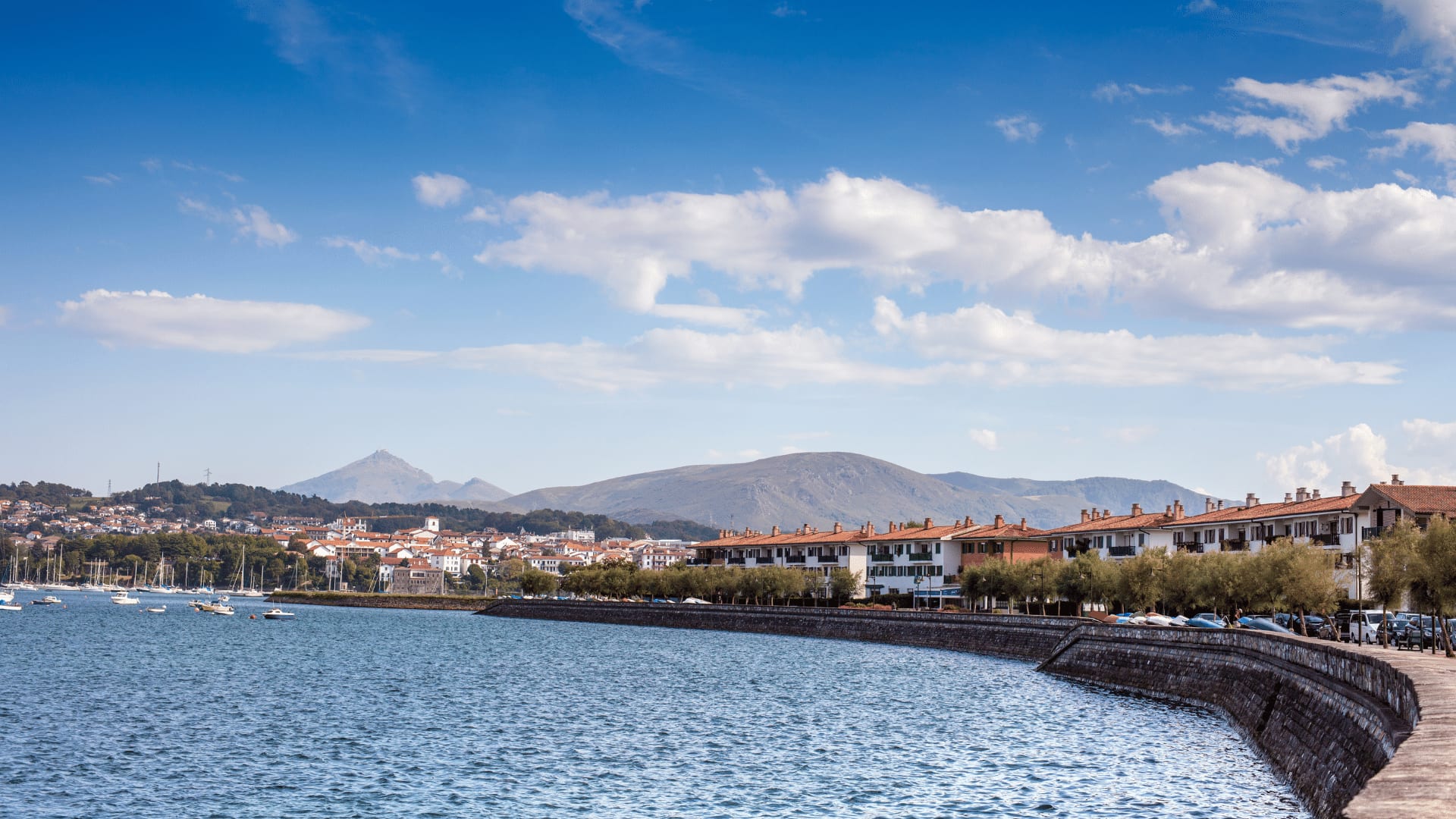
The fascinating city of Fuenterrabia (officially Hondarribia, in Euskera) is a city and municipality in the Basque Country. It’s in the extreme northwest of the province of Guipúzcoa. And also a place where you can enjoy a nice dip at the beach while looking at France!
Yes, you’ve heard that right! The bay is formed by the mouth of the Bidasoa River in the Bay of Biscay, basically the international border between Spain and France .
The city is mainly a tourist and residential location, perfect for a daytime getaway.
- Beach of Fuenterrabía
- The Old Town
- Zuloaga Palace
- Calle Mayor (Main Street)
- Plaza de Armas
- Iglesia parroquial de Santa María de la Asunción y del Manzano
- Ermita de Santa Engracia
- Santuario de Nuestra Señora de Guadalupe
- Ermita de Santa Bárbara
Valeria, 23 years old from Ecuador: Hondarribia is one of those places that makes you fall in love when you get there. It has the most incredible views ever, a fantastic atmosphere, and it’s the perfect place to see the “best of both worlds” (France and Spain). The city feels like a combination of a modern beach town with old and influential historical culture. I’m sure it surprises anyone that goes there!
8. Vigo, Galicia
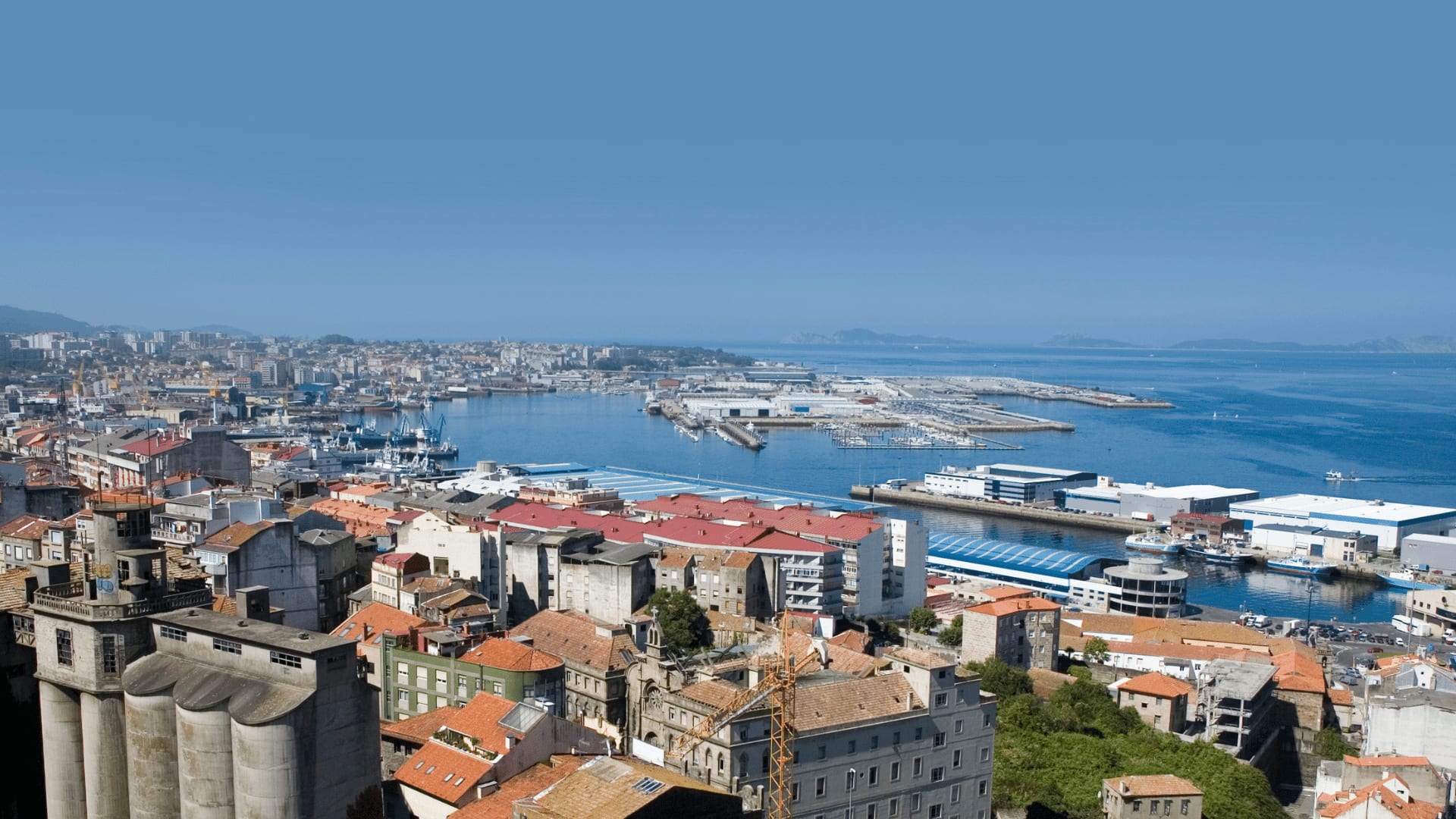
Vigo is known for being one of the most important Roman centers in Pontevedra and one of Galicia’s most significant industrial cities. Many Roman ruins remain in multiple neighborhoods and parishes.
Romanesque churches to see:
- Santa María de Castrelos
- Santiago de Bembrive
- San Salvador de Coruxo
Remarkable buildings:
- Museum of Contemporary Art
- San Sebastian Fortress
- Santa Maria Church
- Porta do Sol
- Jules Verne Monument
- Municipal Museum of Vigo
Places to go:
- Barayo Natural Reserve: (Beach, Estuary, River, and Cliff)Senda Costa Naviega
- Playa de Flexulfe
Interesting fact: In the municipality of Vigo, we can find The Cíes Islands. A paradisiac place for nature lovers! The islands are one of the most visited tourist places in Galicia. And make the National Park of the Atlantic Islands of Galicia formed by 3 islands: Monteagudo, Do Faro, and San Martiño. In this gorgeous paradise, we can highlight “Playa de Rodas,” which was awarded “The Best Beach in the World” by the well-known newspaper “The Guardian.”
9. Pamplona, Navarra
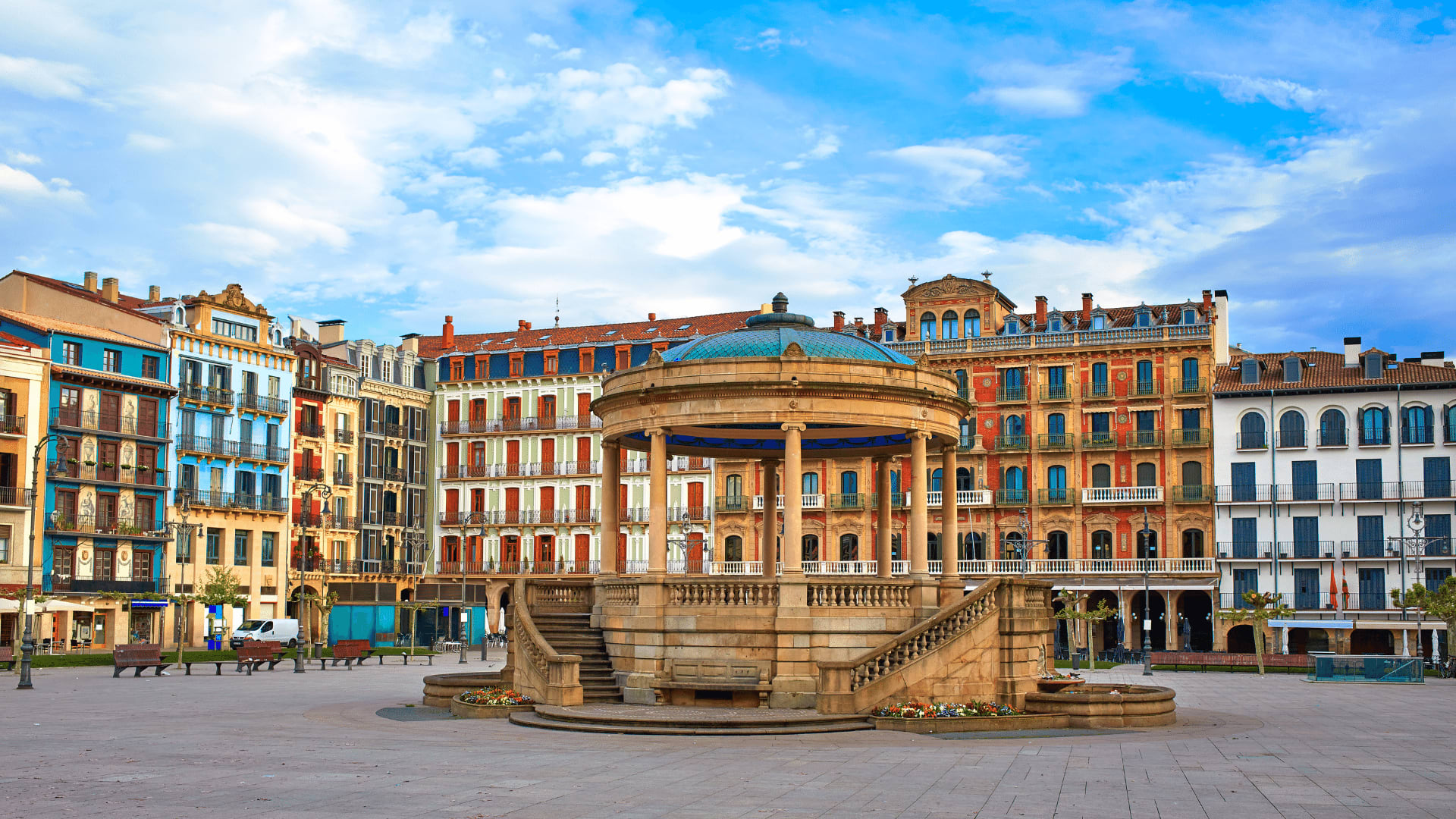
Pamplona is a comfortable, welcoming, green and safe city in the Autonomous Community of Navarre. It is ranked the highest in environment and recycling cities in Spain & Europe. The city has lots of beautiful parks, historical buildings, and rivers. (a good place for hiking with lots of walking routes!) Also, The Way of St. James (“El Camino de Santiago”) begins in this city.
Pamplona is famous for the “San Fermín Festival” or the running of the bulls. This traditional celebration and festivity take place the first week of July. And is probably one of the reasons why everyone has the stereotype of Spaniards being all bullfighters .
Around these dates, the city is driven by music, drinking, and an unbelievable number of people celebrating in the streets. However, Pamplona is very peaceful and quiet for the rest of the year. Although there are lots of places to visit and good food to eat!
The gastronomy in Pamplona really represents the variety of Navarran products. Lots of traditional recipes have been adapted and modernized to delight our palates! -I must mention that roasted peppers and veggies from Navarre really hit differently.
Landmarks and sights:
- Plaza del Castillo
- Ayuntamiento de Pamplona
- Museum of Navarre
- Plaza de Toros: the bullring, which still used for bullfights.
- Pamplona Cathedral: A gothic cathedral constructed during the 14th and 15th centuries. The history and architecture of the building can be found in the Museum next to the Cathedral.
- Ciudadela Park: a public park and a fortress with exhibits.
Places you must give a try:
- Bar Gaucho: “Pintxo de Foie"“Pintxo de Foie”.
- Baserriberri
- Asador Katuzarra
- Asador Martintxo
An absolute MUST if you ever go to Pamplona is trying the famous “Pastas Beatriz,” which are basically the best puff pastries filled with chocolate you’ve ever have in your entire life.
Dishes you should try:
- Espárragos de Navarra
- Cogollos de Tudela
- Cochinillo Asado
- Alcachofa de Tudela
- Pimiento del Piquillo de Lodosa
As for the hikes and cycling routes in Pamplona:
- Pamplona - Puente La Reina
- Fuerte San Cristóbal
- Sierra del Perdón
Valentina, 27 years from Argentina: I lived in Pamplona for 5 years to study, and I’ll tell you a bit about my experience as a student. I come from Argentina, and this town has something special regarding security and living standards. They are excellent, and I always felt very safe while living in that city. I was surprised that it was so small and more like a “town” in terms of stores, available places to eat, international spots, and so on. However, there was always something fun to do and beautiful landscapes to watch! The University is one of the main highlights of the city. It has an extensive and incredible campus awarded one of the most promising green campuses in all of Spain. So, in my experience, this city is excellent for students looking for an outstanding education. Since Pamplona gives the perfect setting for enjoying and having a proper learning environment.
10. Laredo, Cantabria
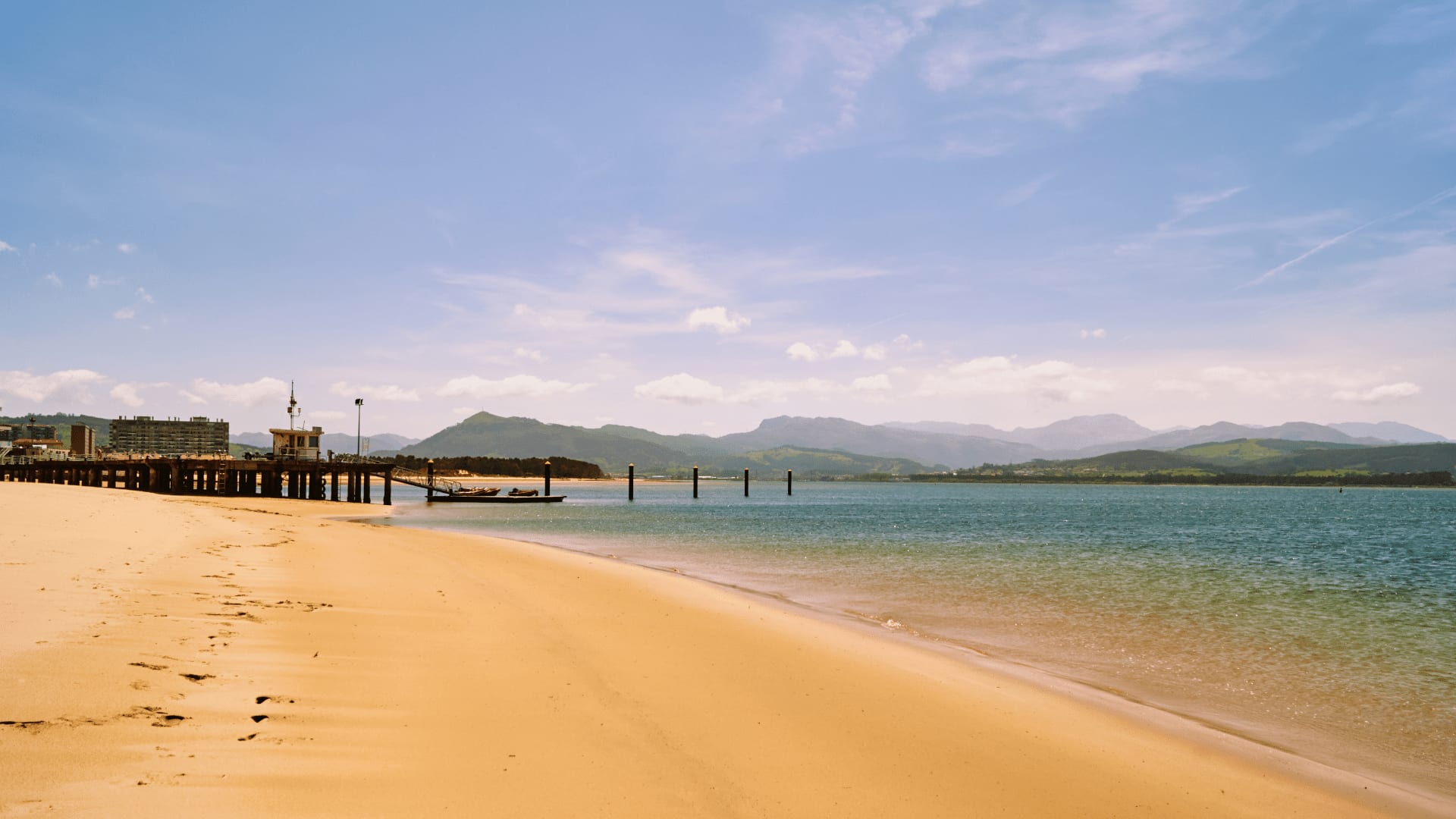
Laredo is located in a privileged spot of the province of Cantabria, specifically in the oriental coastal side. It is surrounded by mountains and refreshed by the Cantabrian Sea. And has beautiful sandbanks and Natural Protected Areas.
The city is one of the “Four Sailor Villages” with San Vicente, Castro Urdiales, and Santander.
Beaches worth visiting:
- Playa de La Salvé
- Playa de Aila
- Playa de Regatón
It becomes a tourist spot in summer, attracting 90.000 visitors while there are only 13.000 inhabitants regularly.
- Santa María de la Asunción Church
- Puebla Vieja
- Carlos VI Square
11. Cudillero, Asturias
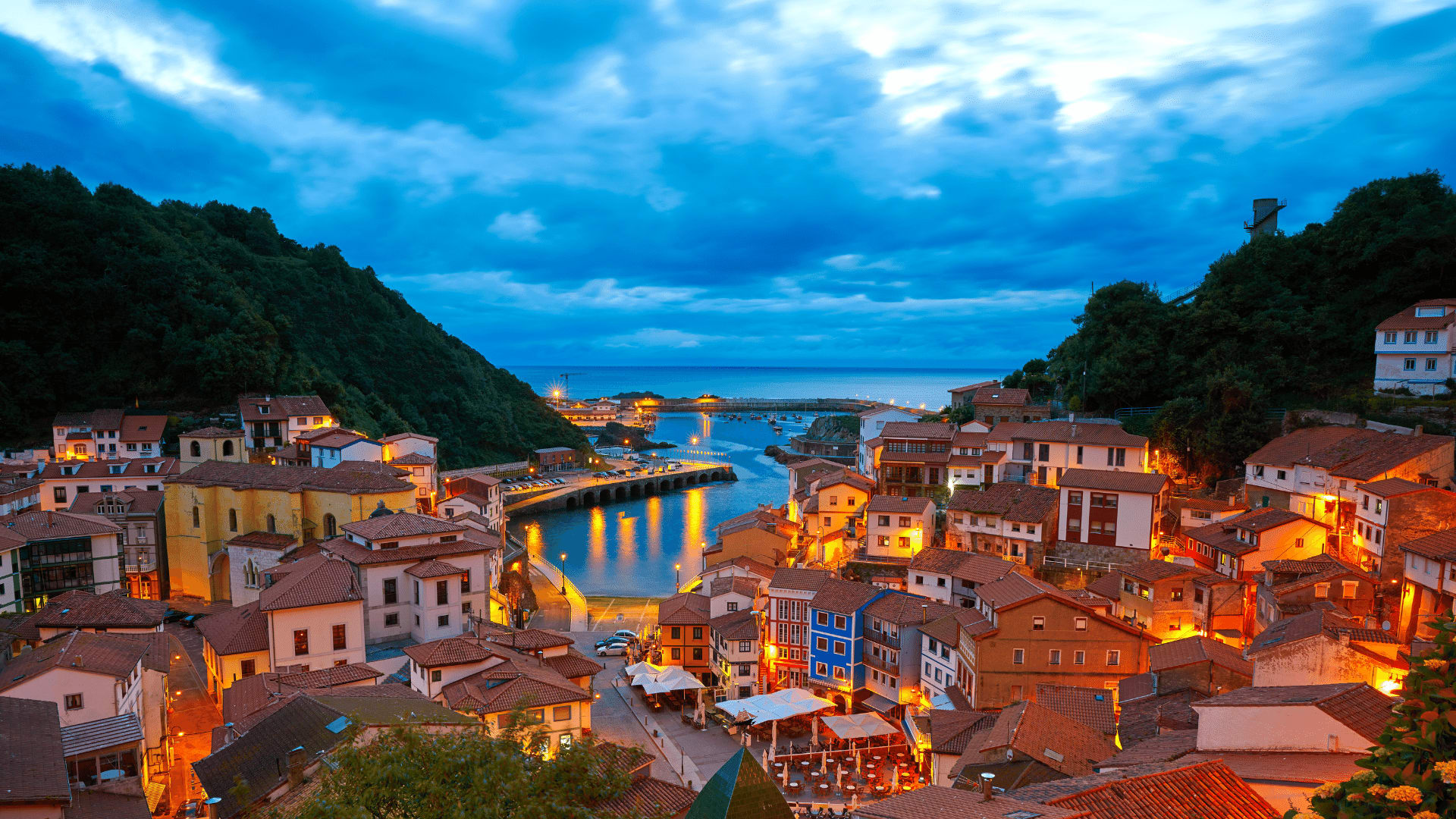
Cudillero is a beautifully colored town that makes you feel like you were in a fairy tale while visiting. The best place to see it is in Summer! When the sun is out, and rain is no longer present. Here’s when residents and visitors bring the streets and squares to life. The first thing you should do as soon as you arrive is walk to the top of the hill to get a view of the village.
- Plaza de la Marina.
- The Lighthouse
- The chapel of Humilladero
- The fishermen’s taverns
- Architectural Site of Los Selgas
- Church of Santa María in Soto de Luiña
- Gothic parish church
12. La Rioja, Logroño
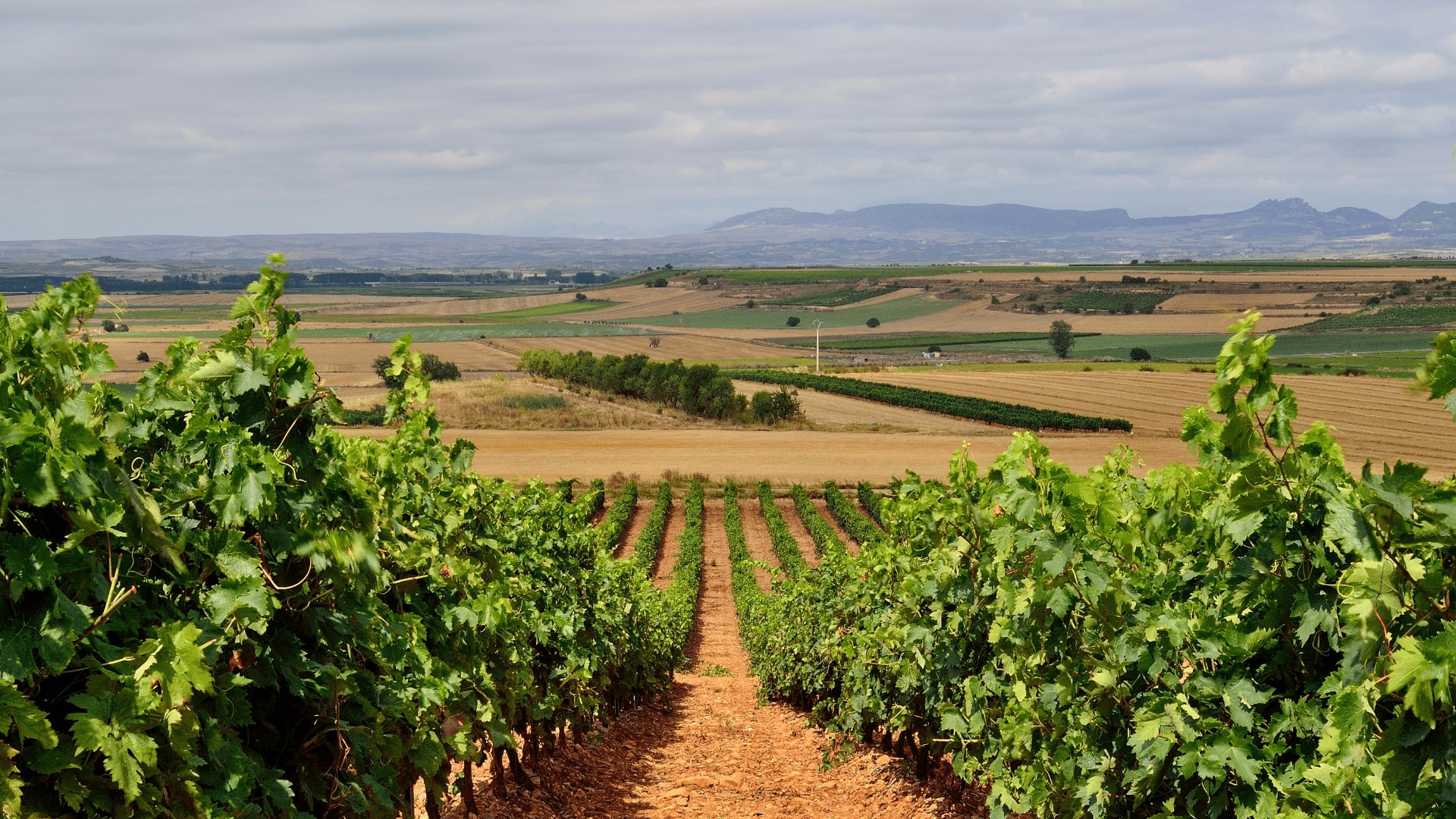
La Rioja is widely known for being the Best Wine Region in Spain and locates near the Ebro river while occupying different municipalities of La Rioja, the Basque Country, and Navarra and can be divided into Rioja Alta, Rioja Baja, and Rioja Alavesa.
The authorized grape varieties of the Rioja Qualified Designation of Origin are: “Tintas,” “Blancas,” and “Tempranillo.”
La Rioja is the first official denomination of Origin (D.O) since 1925. This guarantee seal proves it was produced entirely in a specific wine region. And ensures that the production process meets officially regulated quality criteria. (in short terms, it is formally recognized as an excellent land for producing high-quality wine).
Vineyards in La Rioja:
- Bodegas Muga
- Bodegas López de Heredia
- Bodegas y Viñedos Tritium
- Bodegas Lecea
- Bodegas Campo Viejo
- Bodegas Campillo
- Bodegas Marqués de Murrieta
- Bodegas Marqués de Cáceres
See? I told you that Northern Cities in Spain have a LOT to offer. And don’t worry… I didn’t forget about Chris Hemsworth’s picture in San Sebastian. ;)

Let me know if you bump into another artist during the International Film Festival too! :)
READ NEXT: Lovely Southern Spain Cities to Add to Your Bucketlist!
Rating: No ratings yet. Leave a comment!

You might also like...
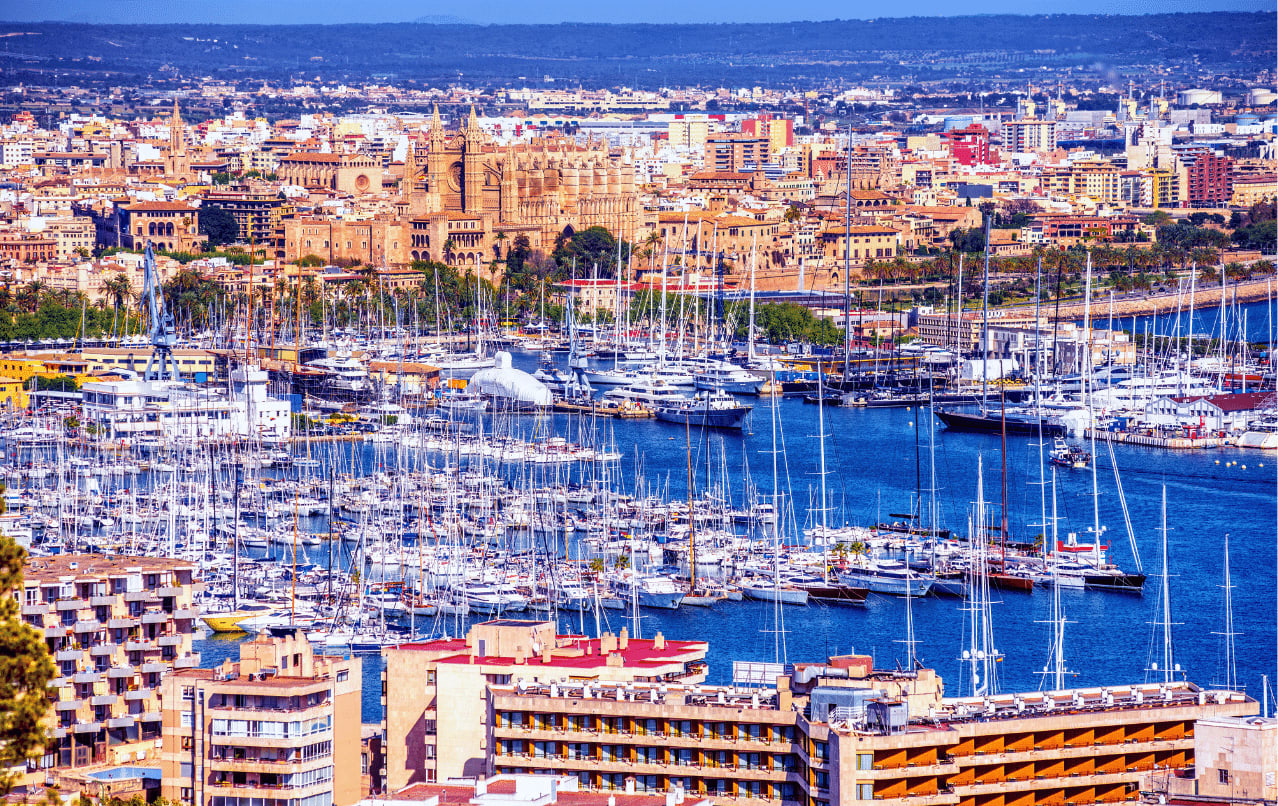
Rising Next to the Sea? Fall in Love With Spanish Beach Towns
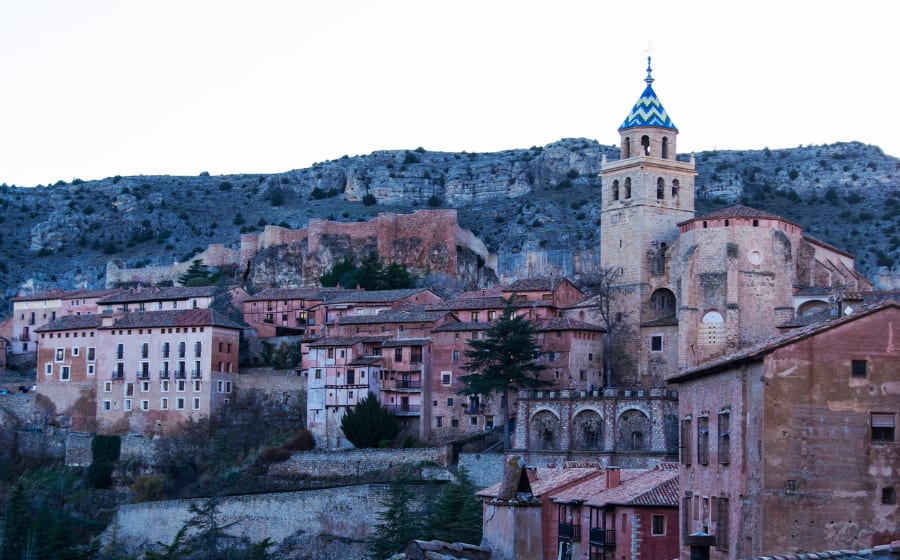
11 Spanish Villages to Add to Your Vision Board
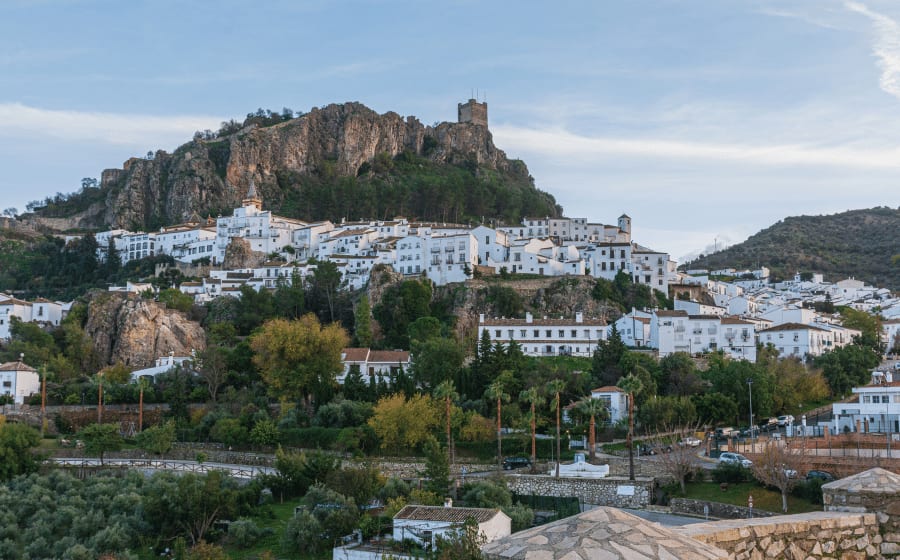
"Pueblos Blancos": The 13 Most Fascinating White Cities in Spain
Email address (optional), star rating (optional).
Be the first to comment!

Millions of people como to Spain every month! But many never get to experience the SENSATIONAL SPAIN!!
We're both born and raised Spaniards and our goal is to give you all the resources to plan a perfect trip to Spain.
Take a look! 👇
FYI! Some affiliate links may be sprinkled throughout the post. We'll receive a small commission when you purchase from our links (at no extra cost to you), which will help us keep creating content.
Join the waitlist
I'm about to release my City Guides for Madrid, Barcelona, Sevilla and Mallorca.
They're going to have everything you need to plan the perfect trip. From hotels and transport, to restaurants, attractions, activities, & a lot (A LOT!) of tips & tricks.
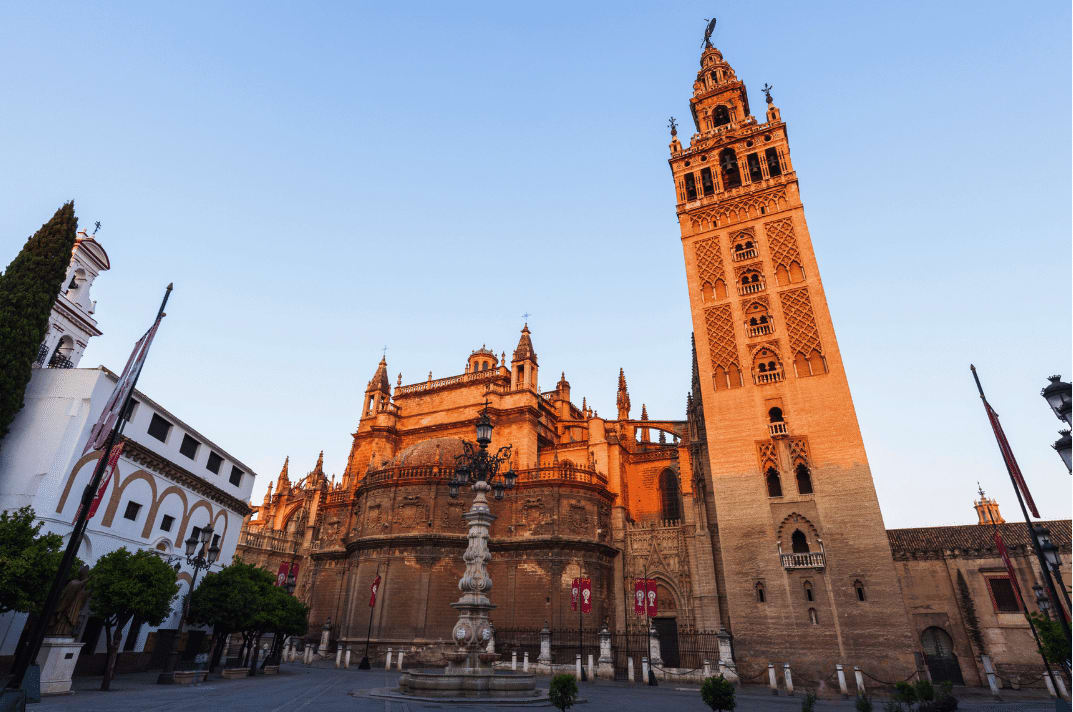
Lovely Southern Spain Cities to Add to Your Bucketlist!

What do Spanish People Think of Americans?

What Song Are You Listening To? MADRID

What is the Best Show to Learn Spanish?

Things People Should NEVER do Dating in Spain

Can Foreigners Adapt To The Spanish Lifestyle?

The Ultimate Northern Spain Road Trip: Routes, Sights, Guides, Maps And More
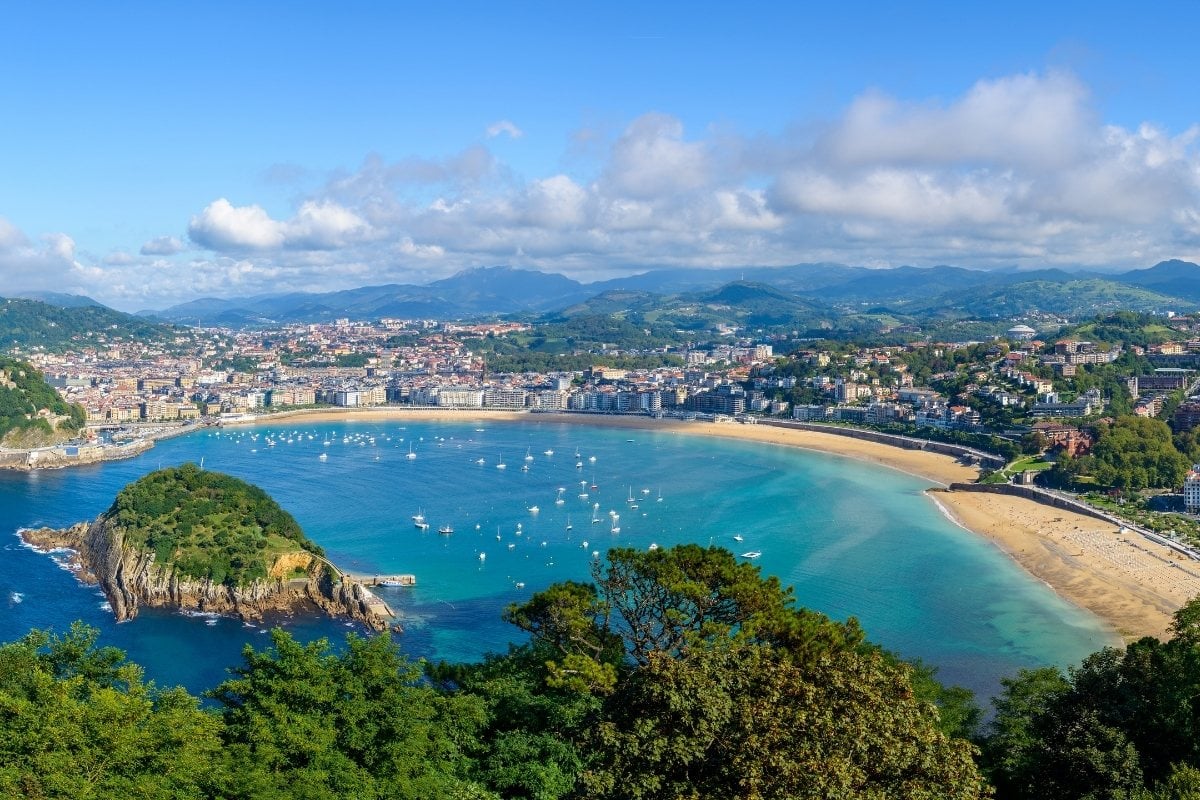
From Catalonia’s unspoilt coastline and Aragon’s scenic architecture to quaint cities in the Basque Country, this northern Spain road trip offers something for everyone.
Is there any better way to see a country than grabbing a set of car keys and having the freedom to explore at your own pace? If this is your favourite way to travel, then how about exploring the north of Spain?
Often it’s when you decide to travel slowly and go off the beaten track, you start stumbling across hidden gems. You’ll take a wrong turning and end up in an authentic Spanish town that isn’t in any of the tourist guide books!
While this road trip through northern Spain takes you to a few famous places, it also gives you the opportunity to explore lesser-known regions. You’ll experience spectacular vineyards a short drive from San Sebastian, the hiker’s paradise that is Ordesa y Monte Perdido National Park and stop by some truly underrated Spanish cities.
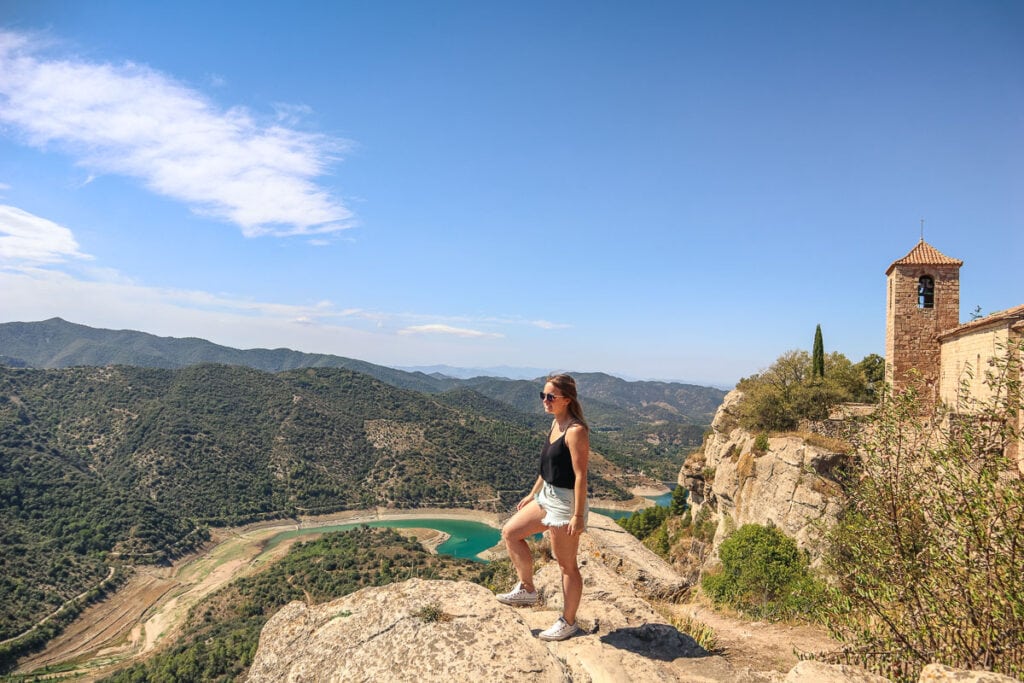
A road trip here through the north of Spain offers so much. Spend your time admiring the scenic coastlines in Catalonia and Asturias, before marvelling at the architecture of Castille and León.
If you’re a foodie, you’ll fall in love with the culinary scene in the Basque Country. It’s absolute pintxos heaven! Meanwhile, if you’re keen on the great outdoors, there are plenty of gorgeous green spaces and natural wonders to explore.
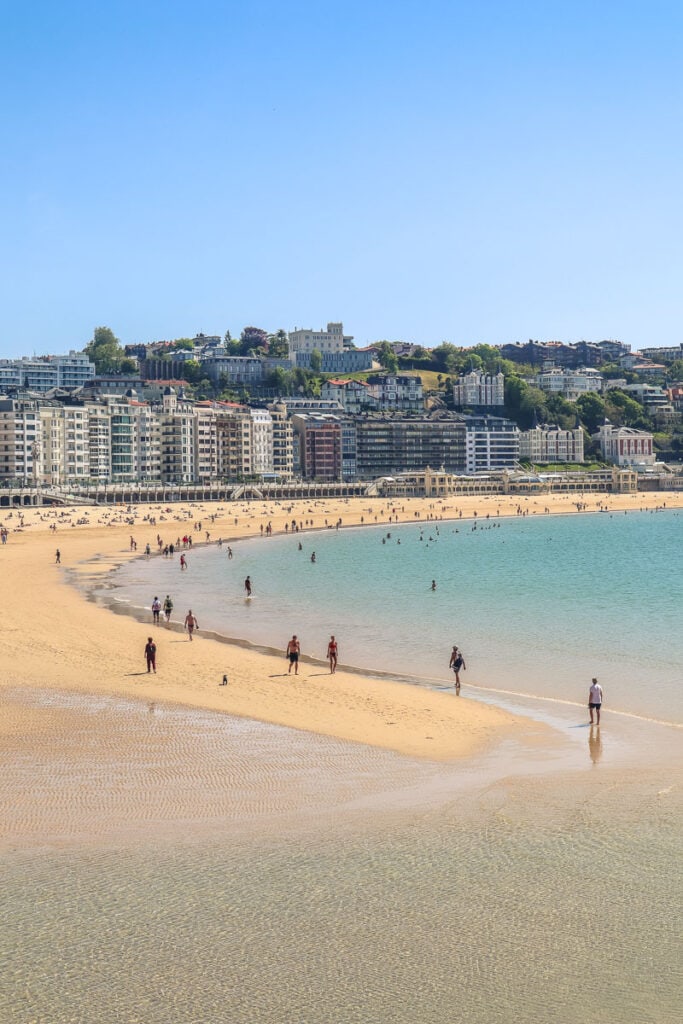
Spain is often associated with summer beach holidays, but it’s worth remembering that many of the interior parts of the country offer just as much natural beauty, with vineyards, mountains, canyons, olive groves and picturesque towns! This road trip itinerary will introduce you to several authentic experiences.
So, whether you’re looking for travel inspiration or you want to start planning your itinerary, this guide will cover all of the best places to visit in Northern Spain on a road trip.
Weather in Northern Spain
This region of Europe has warm summers and cool winters. The majority of people visit during the summer holiday season, when the weather is warmest.
If you want to make the most of the great outdoors, time your trip between May and September. It’s the ideal time for beach days or countryside hikes. During this time, temperatures range between lows of 16°C (61°F) and highs of 26°C (79°F). If possible, I’d suggest avoiding the peak summer (July and August) and travel in May, June or September. You’ll enjoy cheaper prices and won’t be battling against big crowds at the big attractions!
It gets pretty chilly in Spain in winter , but there’s a bit of magic to it! Between January and March the temperatures in the north of Spain range from 4°C (39°F) to 15°C (59°F).
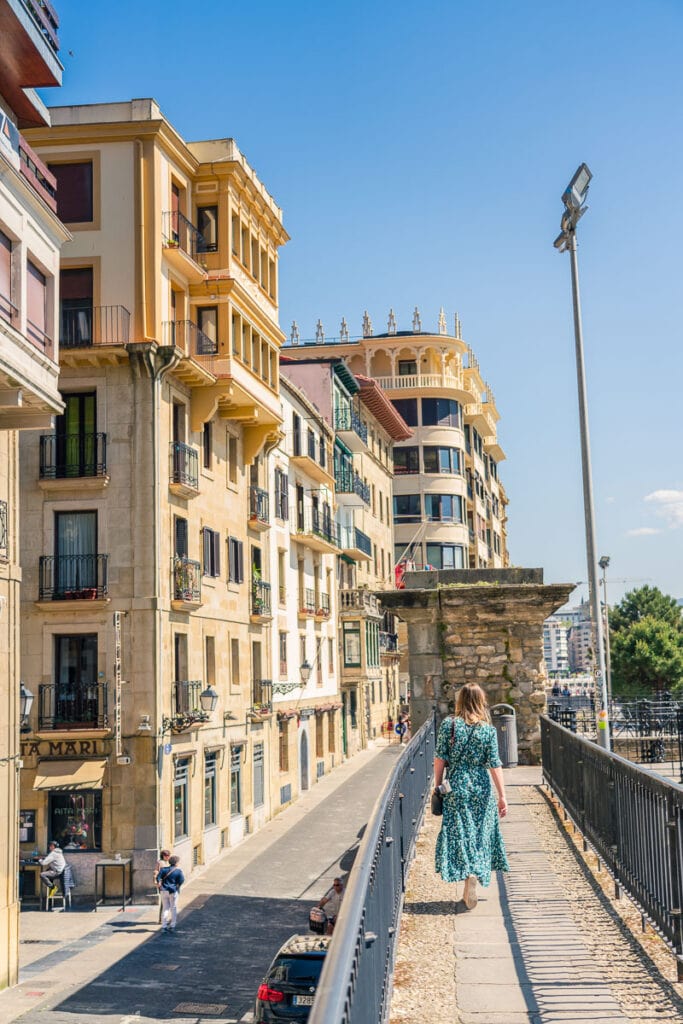
Northern Spain Road Trip Map
If you’re happy to move at a pretty moderate pace, moving on every single day, you could just about fit this itinerary into one week.
However, I’d recommend moving a little slower so you can soak up all the little details in each destination.
Here’s a handy map to go with this northern Spain road trip itinerary, which you can save to make your planning stress-free.
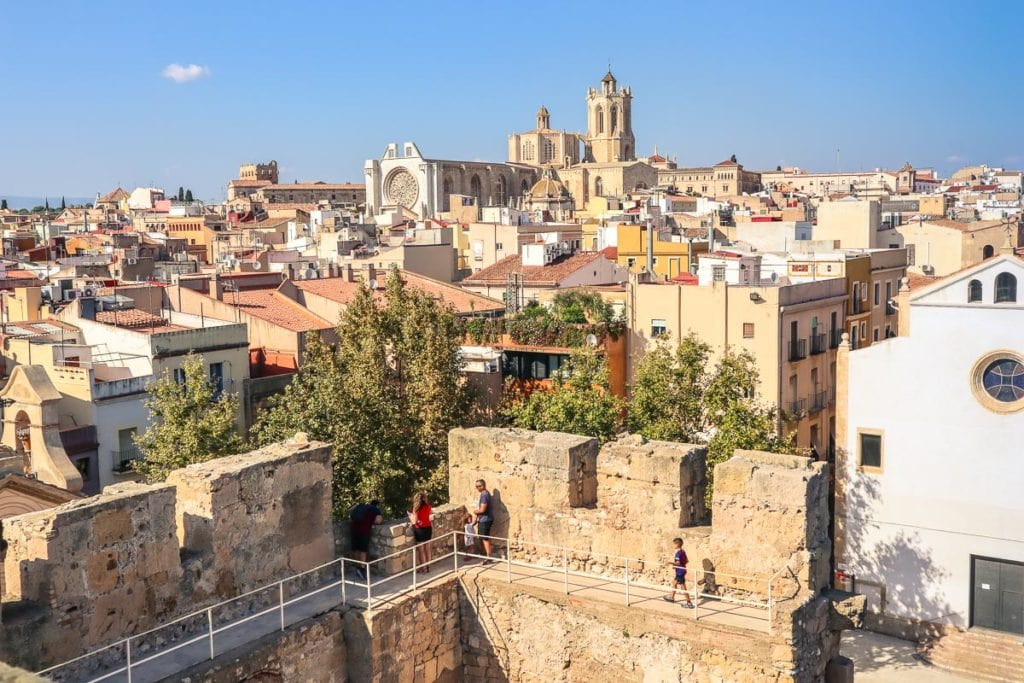
What to pack for your road trip
If you’re wondering what to pack for your trip, this guide to road trip essentials has you covered. From portable chargers to ways to stay entertained on long journeys, it’ll help you create your road trip packing list.
Northern Spain Road Trip Itinerary – Places to Visit in Northern Spain
Northern spain road trip: stop 1 – barcelona.
Barcelona is a great city to start your road trip from. Not only is it an incredible destination in its own right, but it’s also easy to reach by plane. There are lots of car rental options too, both from the airport or the city centre.
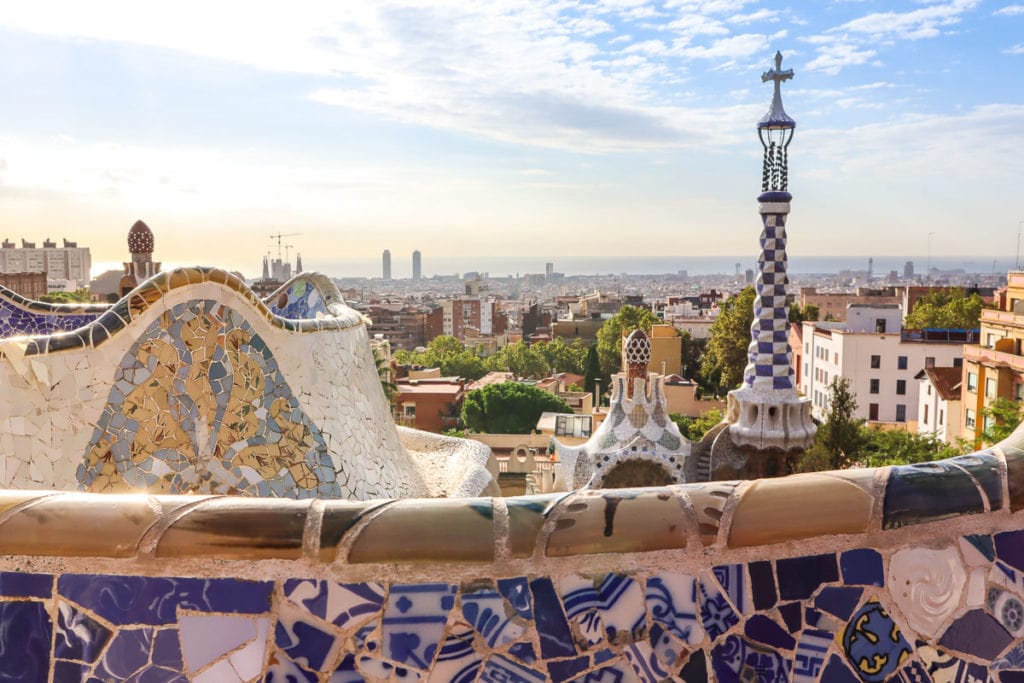
Marking the start of your Catalonia road trip , you’ll quickly fall in love with Barcelona’s scenic shoreline with sweeping views of the Balearic Sea. Enjoy the city’s unique ambience courtesy of street musicians and tapas bars dotted in the atmospheric Gothic Quarter’s narrow streets. I challenge you not to get lost in this mini maze – it’s very easily done, especially after a few glasses of Cava!
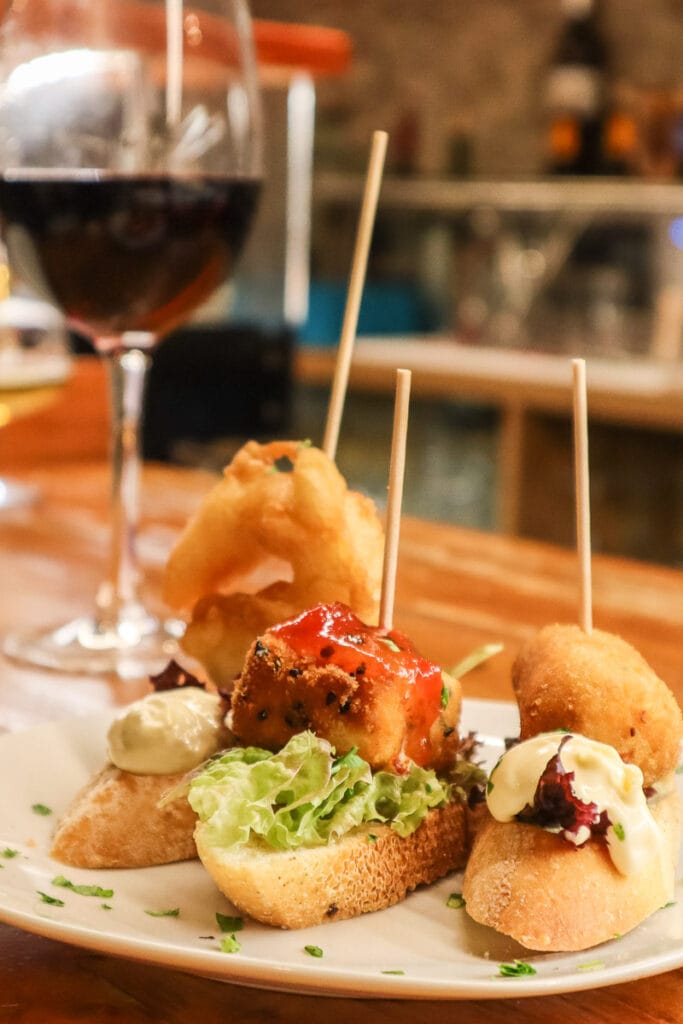
At the centre of Barcelona’s bustling social scene is tree-lined La Rambla, which boasts restaurants, cafés, and avant-garde architecture. It’s always busy with tourists, but I’d avoid most of the restaurants around here! Many are classic tourist traps, serving vats of low-quality paella at inflated prices. You’ll find more authentic dining experiences in the small bars in the Gothic Quarter.
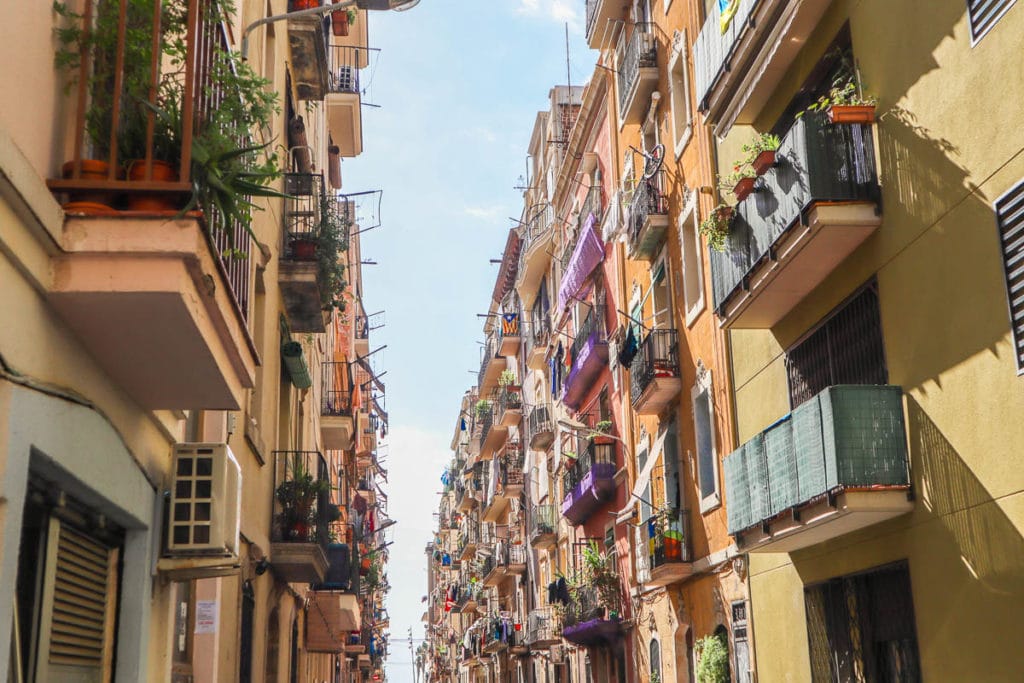
La Boqueria food market is located just off this main street and is an excellent place to take in the amazing ingredients of Catalonia. For a very special meal, book in for a tasting menu experience at Michelin-starred Disfrutar . I’ve been lucky enough to visit twice and I would regard these meals as the best meals I’ve ever eaten! Genuinely!
If you’re interested in art there are lots of great attractions in Barcelona. You could visit the Picasso Museum , the Museu Nacional d’Art de Catalunya or the Fundacio Joan Miro . Oh, and don’t miss a visit to one of Gaudi’s many masterpieces. His unique style is visible throughout the city at locations such as La Sagrada Familia and Parc Guell. I was enchanted by these spots – I’m sure you will be too!
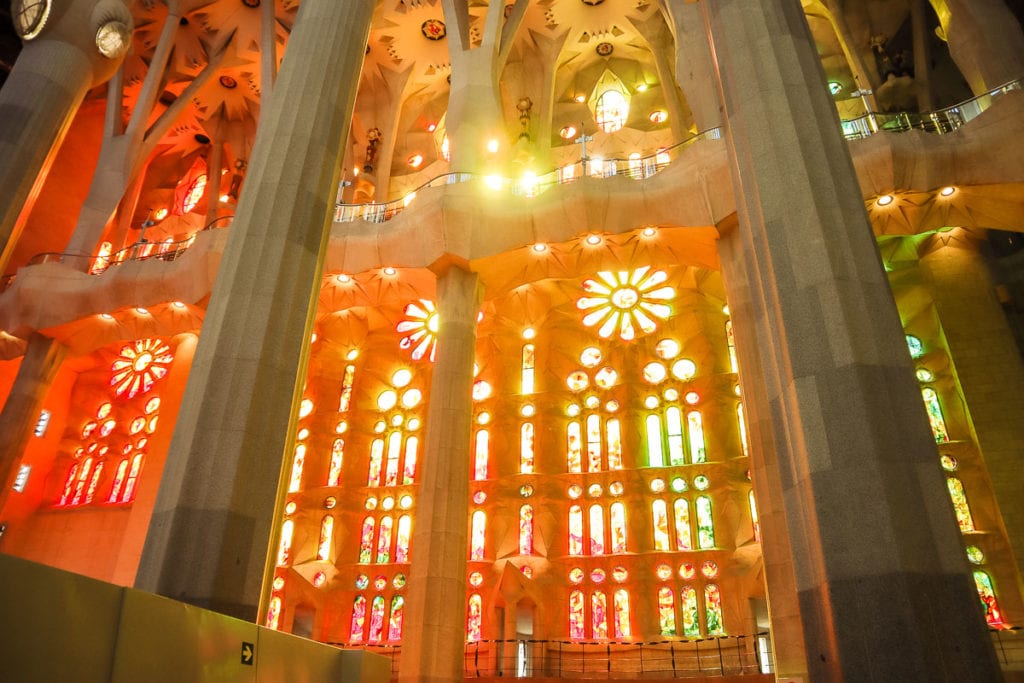
If you fancy a beach day, there’s also a large beach in the city centre, lined with beach bars. It’s amazing how much there is to do in this Spanish city. There really is something for everyone!
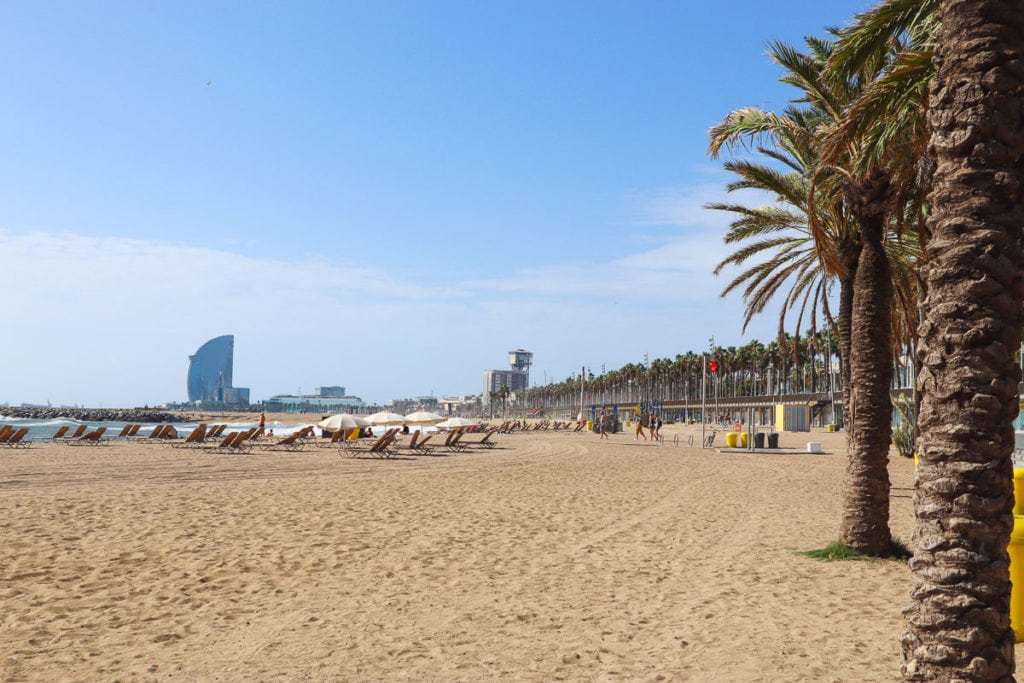
Northern Spain Road Trip: Stop 2 – Costa Brava or Catalonia
If time permits, you might want to head north of Barcelona to Costa Brava, before heading to Montserrat. One of Spain’s most mesmerising coastlines, the area oozes charm with its whitewashed towns and fishing villages.
Alternatively, I loved the area south of here, which includes the underrated Tarragona, Reus and Siurana.
Siurana was a new discovery for me on one of my most recent trips. It’s one of the prettiest villages in Spain and sits on top of a hill in the Prades Mountains. I’d recommend spending a couple of hours there. It’s pretty small so you can wander the streets looking at the Moorish castle, the pretty houses and perhaps stop for a coffee.
The best part about Siurana? The views! Head towards the rocky cliffs and look out over the huge gorge which is filled with a bright turquoise reservoir. I’d suggest visiting first thing in the morning and you should have it all to yourself!
If you want to learn more about Gaudi, but don’t fancy tackling the crowds in Barcelona, I’d suggest stopping by Reus. This small city is where Gaudi was born. You can learn all about his life and architectural wonders at The Gaudi Centre , before checking out some of the city’s buildings which inspired him.
You can read my detailed guide on how to tour this region by car in my Catalonia road trip post.
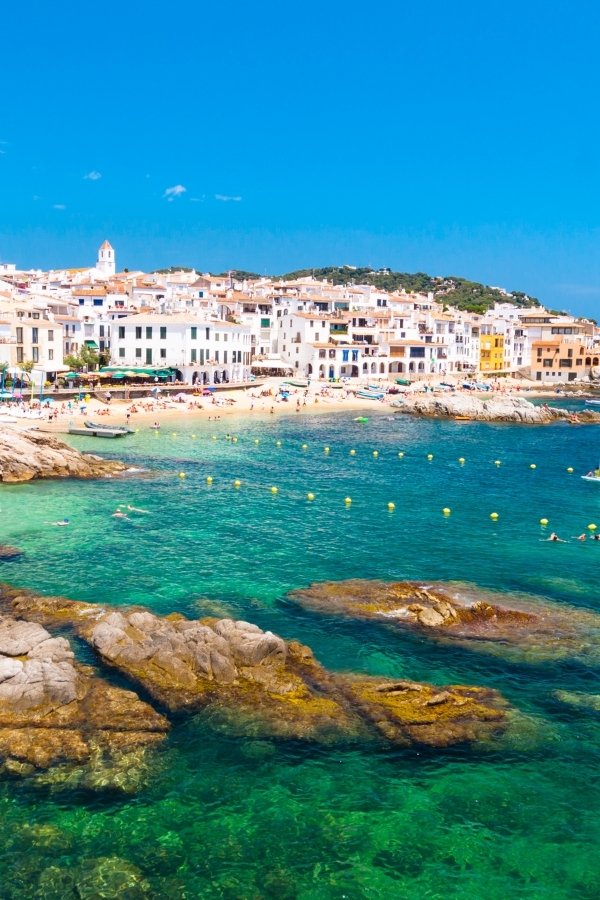
Northern Spain Road Trip: Stop 3 – Montserrat
Montserrat is another must-visit on your road trip through Northern Spain. The area’s top attraction is the Benedictine Montserrat Monastery, perched on a rocky crag surrounded by magnificent cliffs.
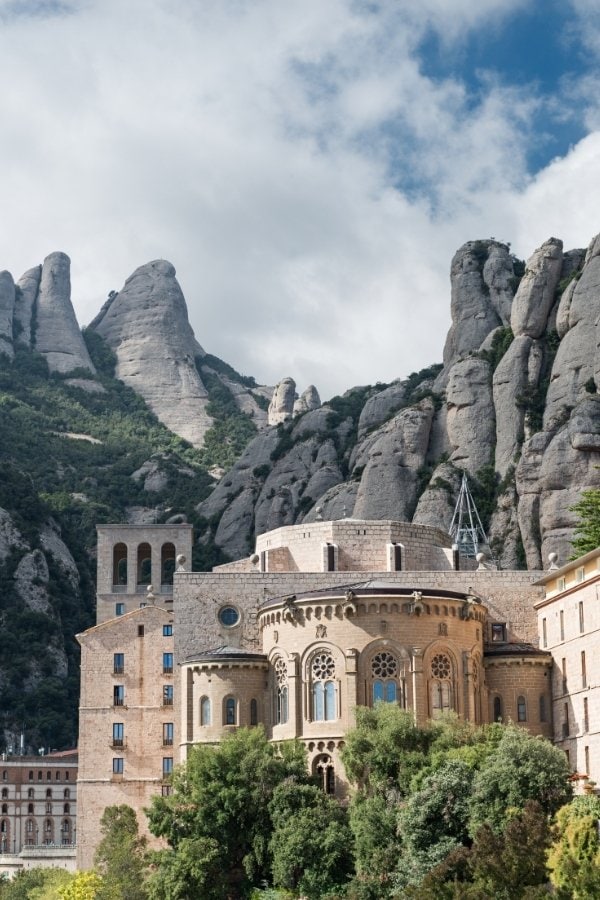
Just getting there is a bit of an adventure, as you reach the monastery via cable car! Once there, enjoy panoramic views of the Catalonian countryside while soaking in the sights and history of the monastery.
Montserrat to Zaragoza: 266 km / 2h 46min approx.
Northern Spain Road Trip: Stop 4 – Zaragoza
Next stop on your journey from Montserrat is Zaragoza, the capital of the Aragon region. This is a great place for museums, architecture, and historical monuments, including the Basílica de Nuestra Señora del Pilar .
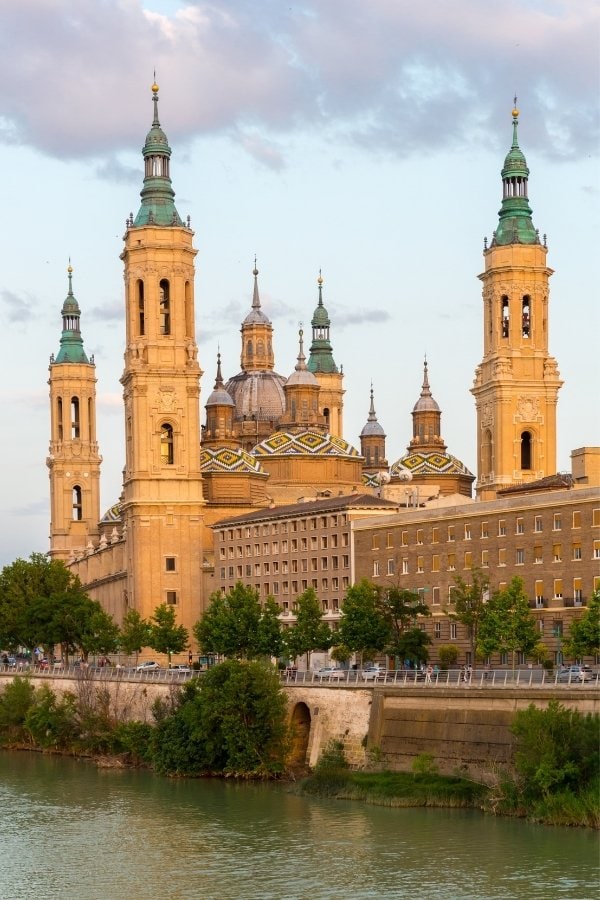
In between sightseeing, I’d recommend a bit of restaurant-hopping at Plaza del Pilar so you can taste some authentically Spanish delights. For a real flavour of the region, sit down to dinner at Restaurante La Borde de Chema . This rustic restaurant offers Aragonese dishes including roast goat, along with plenty of regional wines.
Northern Spain Road Trip: Stop 5 – Ordesa y Monte Perdido National Park
Step away from the glitz and glamour of city life with a visit to the Ordesa y Monte Perdido National Park. This hiker’s paradise has several trails to choose from, each leading to sweeping views of the mountains.
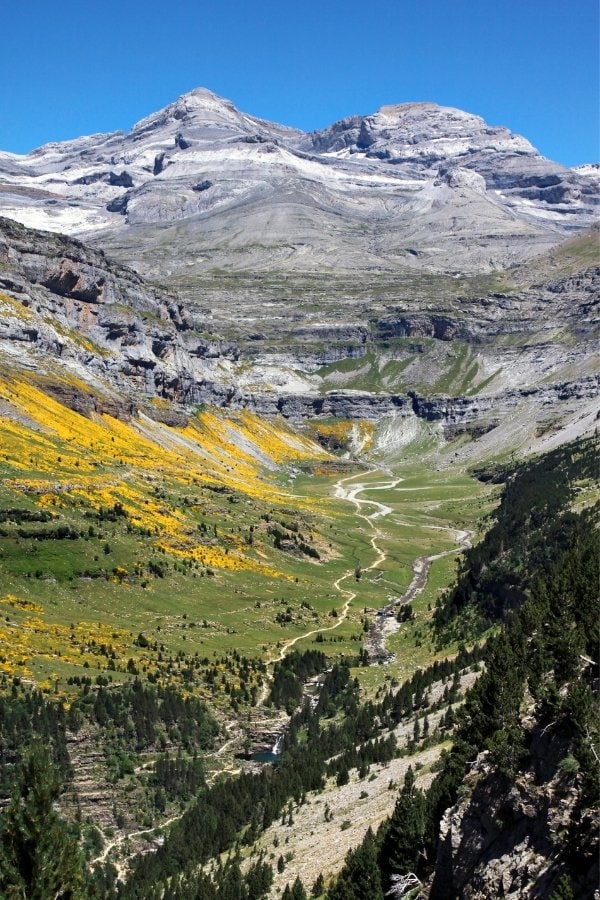
Be sure to pack your camera for this stop on your road trip! It’s one of the most photogenic places on this itinerary, so no doubt you’ll want to snap a lot of photos!
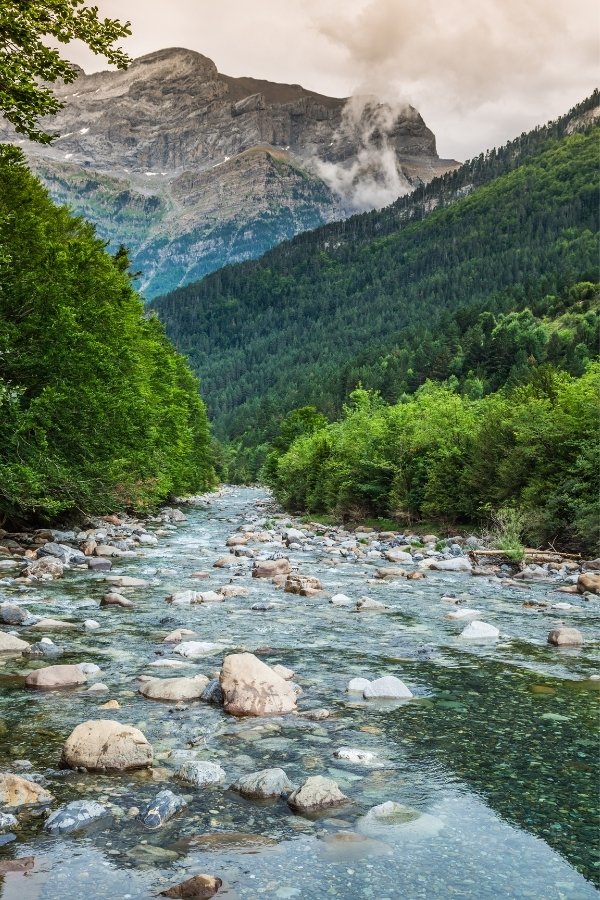
Ordesa y Monte Perdido National Park to San Sebastian: 252 km / 3h 10 min approx.
Northern Spain Road Trip: Stop 6 – San Sebastian
The Basque Country is renowned for its food scene. Every year, many people visit Northern Spain (myself included!) purely for a wining and dining experience like no other. It’s hardly surprising, after all San Sebastian in the Basque Country has the most Michelin-starred eateries per capita in Europe! In fact, there are more in this one city per capita than in London, and that’s really saying something!
The Basque Country even has two restaurants with ‘Green Stars’, Azurmendi and Enoko, which have been recognised for their sustainable, ethical and environmental approach.
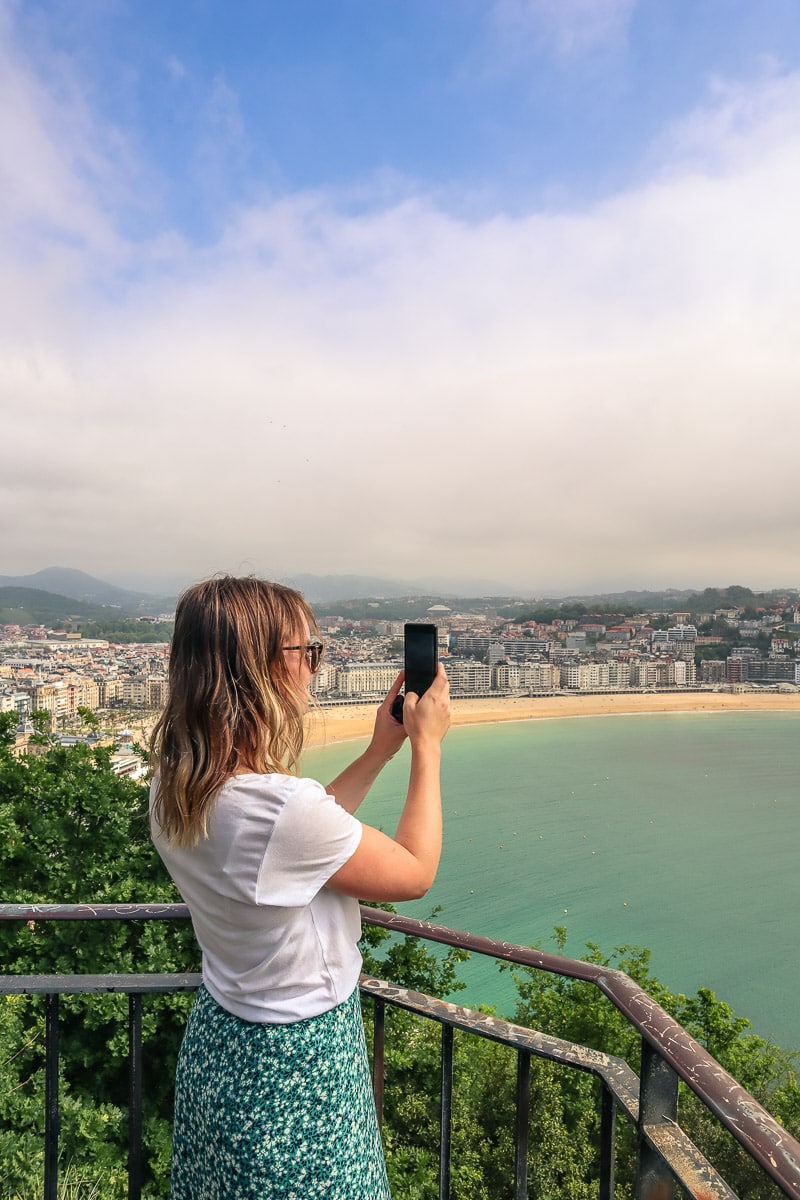
There are two sides to eating out in San Sebastian. You can either go high end with Michelin starred tasting menus, or eat the local way with dish after dish of pintxos (small dishes).
The old town of San Sebastian is filled with tiny restaurants specialising in individual dishes such as Spanish tortillas, prawns on skewers and slow cooked pork. The best way to enjoy a trip like this, is by stopping for food and drinks at multiple bars across an evening – like your very own pintxos tour .
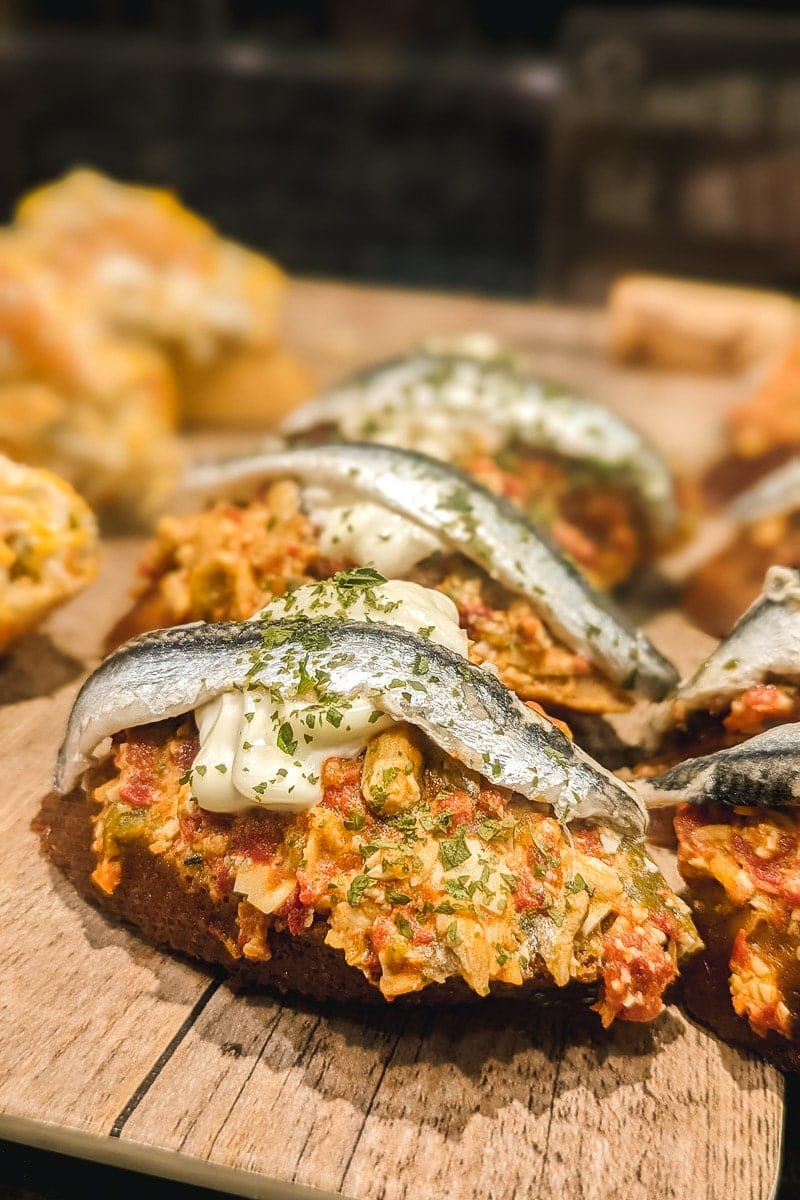
It can be difficult knowing what to eat at each place, so I’d thoroughly recommend a pintxos tour like this one . The guide will give you tips on what to order, how to eat it and all the insider knowledge to make the most of your time in San Sebastian.
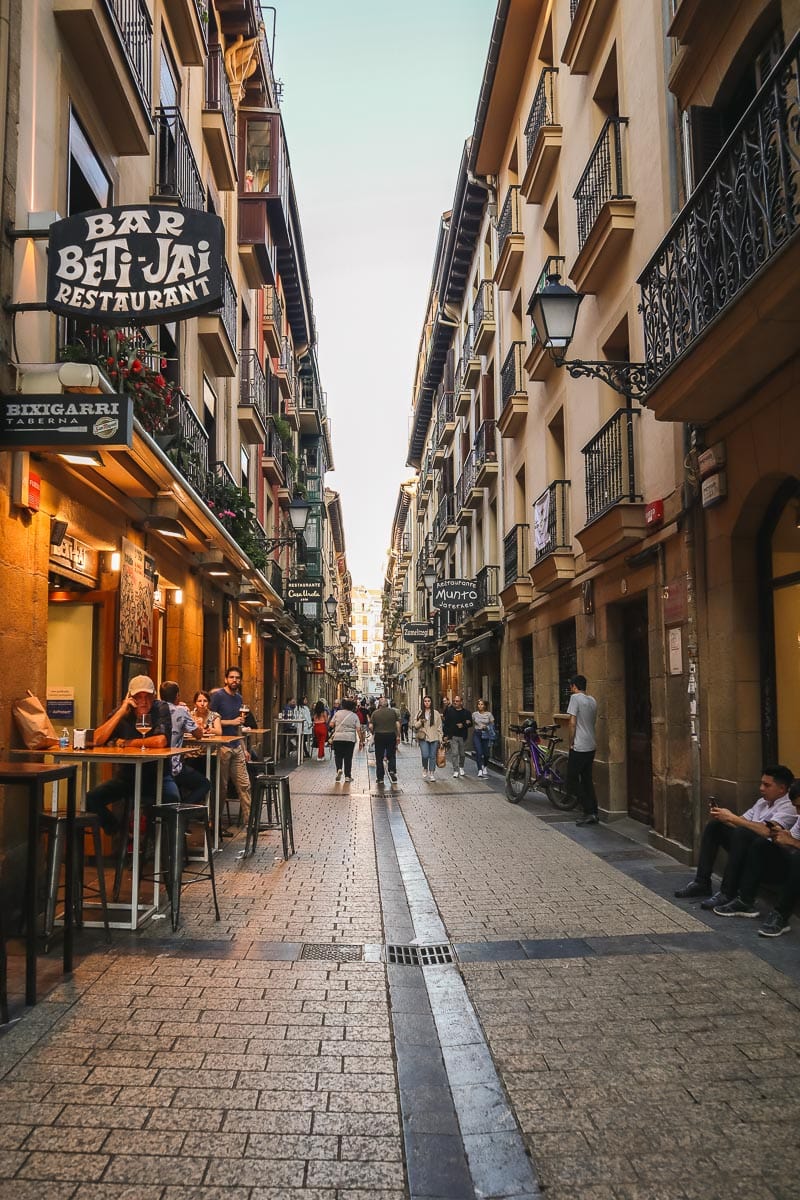
While you can’t go wrong with most restaurants here, I’d recommend the incredible steak, tomatoes and fried padron peppers at Bar Nestor as well as the famous San Sebastian cheesecake at La Viña! I popped all my top recommendations together in my post about the best pintxos in San Sebastian .
Also, if you’re looking for an extra special meal, how about going for a Michelin Starred meal with a view at Mirador de Ulia? We had a very memorable meal there!
San Sebastian is also a great beach destination, with turquoise waters, white sand and some great surf spots too!
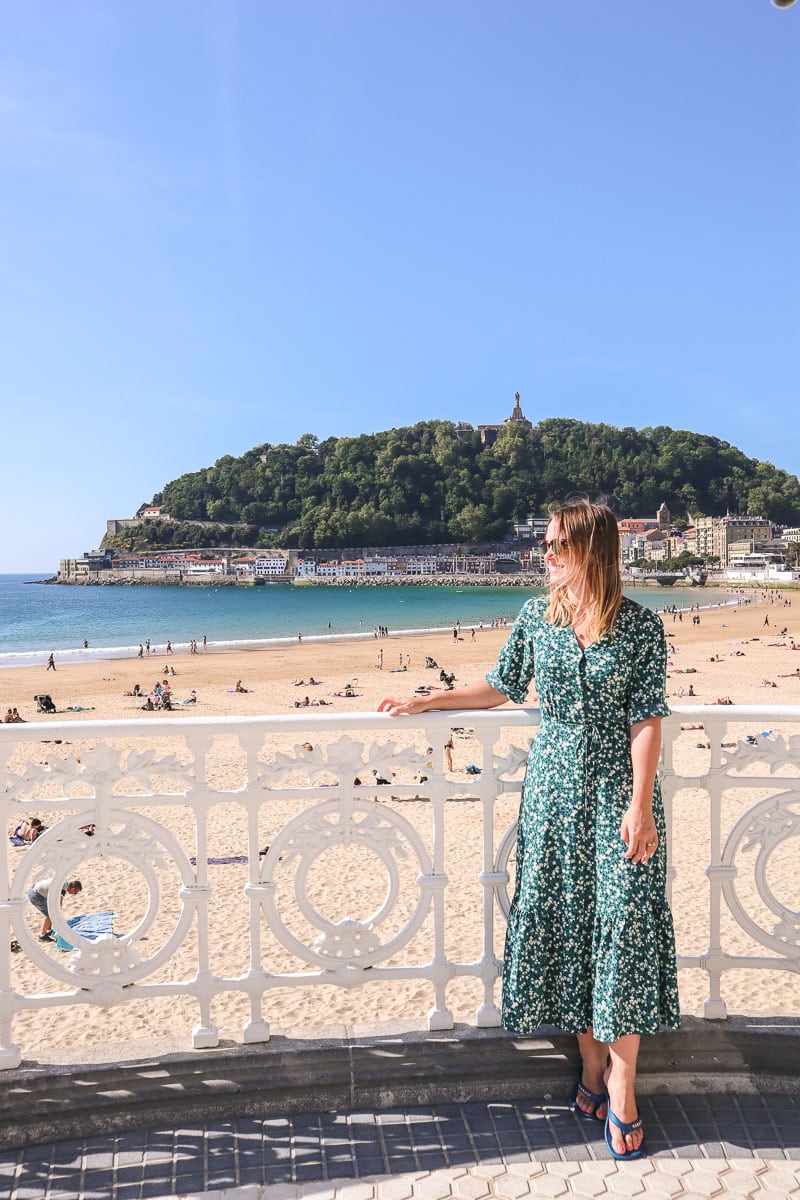
If you want to get off the beaten track in this region, how about spending a day wine tasting? Just 30-minutes away by car you’ll find wineries including Hirutza , where the local Txakoli wine is produced. This is a dry and lightly sparkling white wine, which is absolutely delicious!
The vineyards are in a really spectacular location too, with huge mountains and lush green valleys all around. Once you’ve toured the winery, you’ll get to taste some of the wines for yourself, paired with a few pintxos of course!
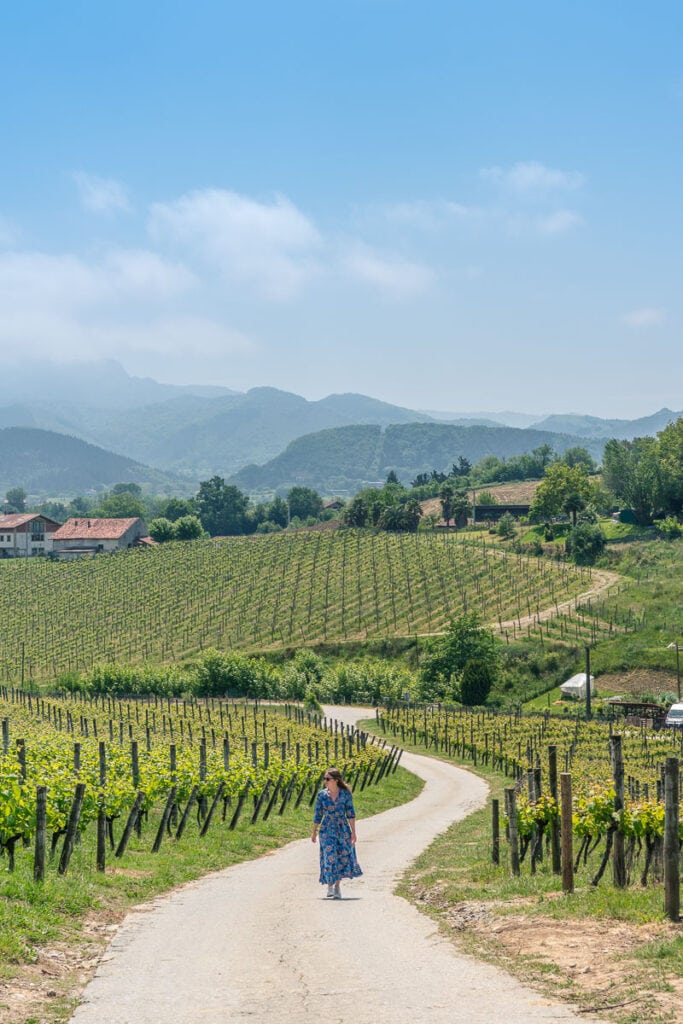
Northern Spain Road Trip: Stop 7 – Bilbao
Bilbao, the capital of the Basque Country, is home to centuries-old alleyways and modern-day architecture. The bustling city is small enough that you can explore it on foot, but big enough to keep you entertained for many hours.
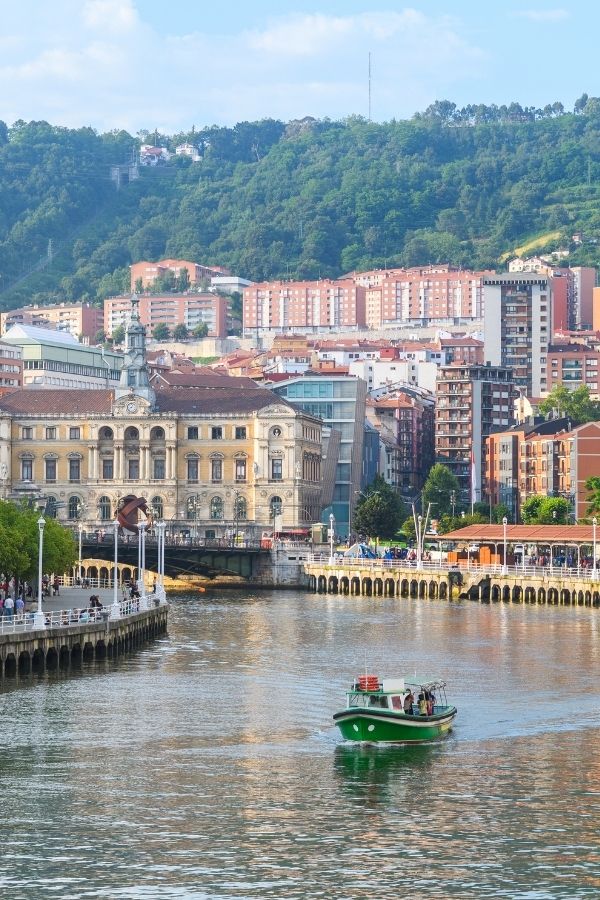
One place you simple have to visit is the world-famous Guggenheim Museum , set by the Nervión River. This art gallery has an incredible collection, as well as being housed inside a curved metal masterpiece by one of my favourite architects, Frank Gehry.
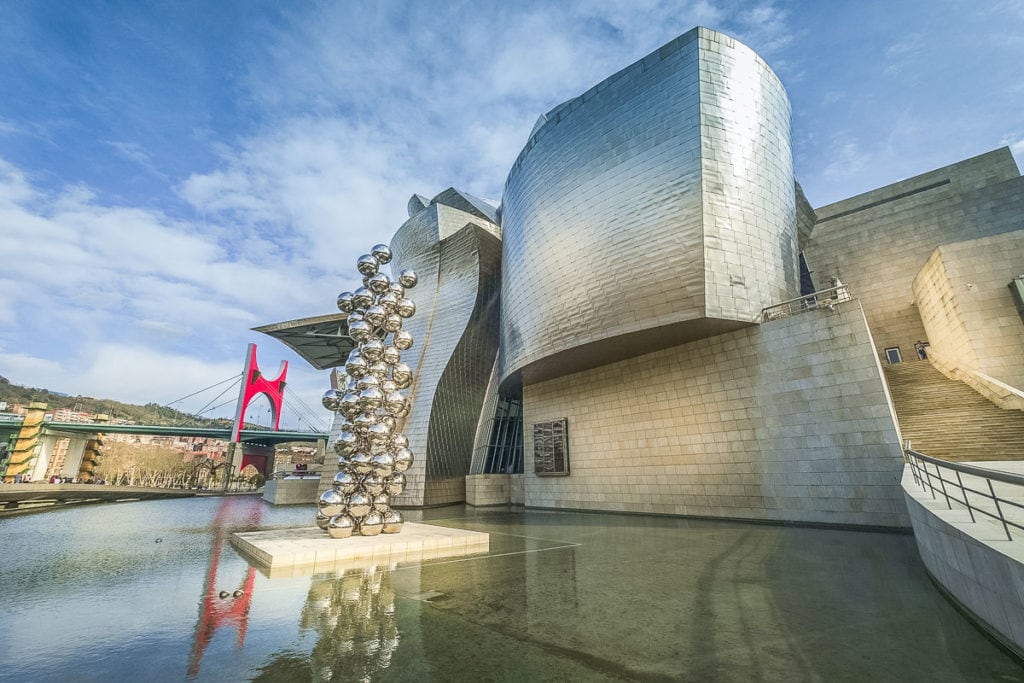
This is another great city for pintxos, so be sure to spend some time in the Old Town refuelling. You could also dine at one of the many Michelin-starred restaurants in Bilbao.
For one of the best viewpoints in the Basque Country, make your way to Gaztelugatxeko Doniene, made famous by Game of Thrones. The scenic hike is around 3km and features several fortified viewpoints. The views are worth the tired legs, I promise you!
Northern Spain Road Trip: Stop 8 – Santander
Afterwards, stop by Santander, where you can enjoy some seaside fun on the small town’s myriad of beaches. Dive into the water or enjoy a trek to the Cabo Mayor Lighthouse.
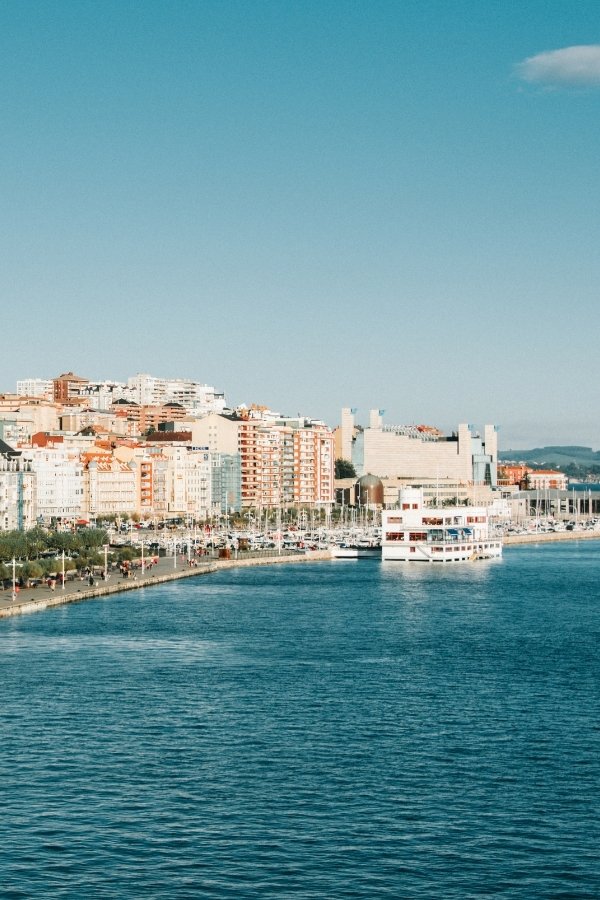
Away from the coastline, grab a bite at Plaza de Canadio before exploring Santander’s Cathedral. It features two churches built on top of one another.
Santander to Llanes: 89 km / 56 min approx.
Northern Spain Road Trip: Stop 9 – Llanes and Piloña
As you drive from Bilbao to Llanes and Piloña, the road trip scenery really steps up a notch! Take in the views of the mountains and rolling hills which serve as the ultimate driving backdrop!
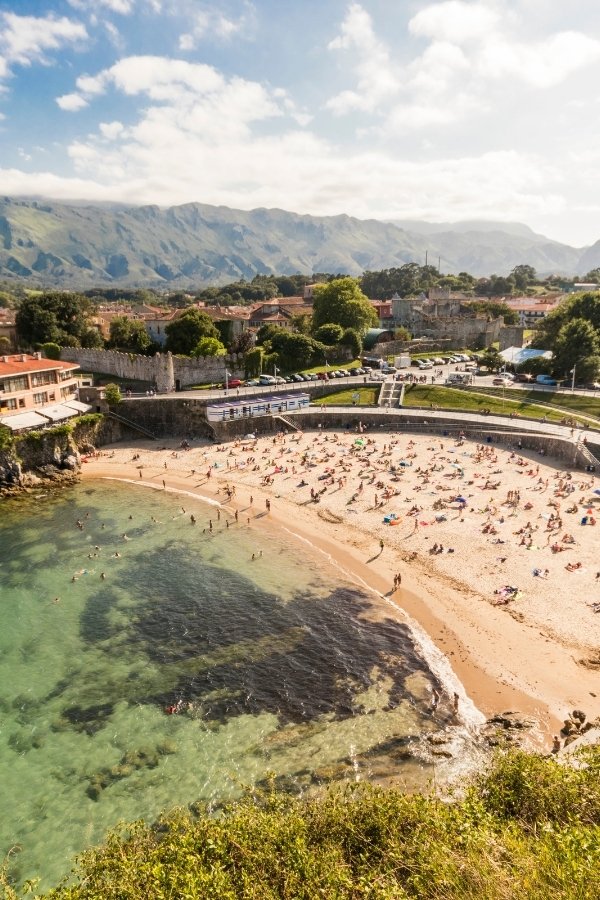
Llanes is a small-town region boasting medieval magic at every corner, as well as beautiful beach views. After some of the more touristy stops on this trip, this area is more chilled out and authentic.
Once in Piloña, you could hike up to the Area Recreativa del Monte Cayon, where sweeping views over Asturias’ Picos de Europa await. Alternatively, opt for a more strenuous hike at Picos de Europa, a green paradise surrounded by mountains.
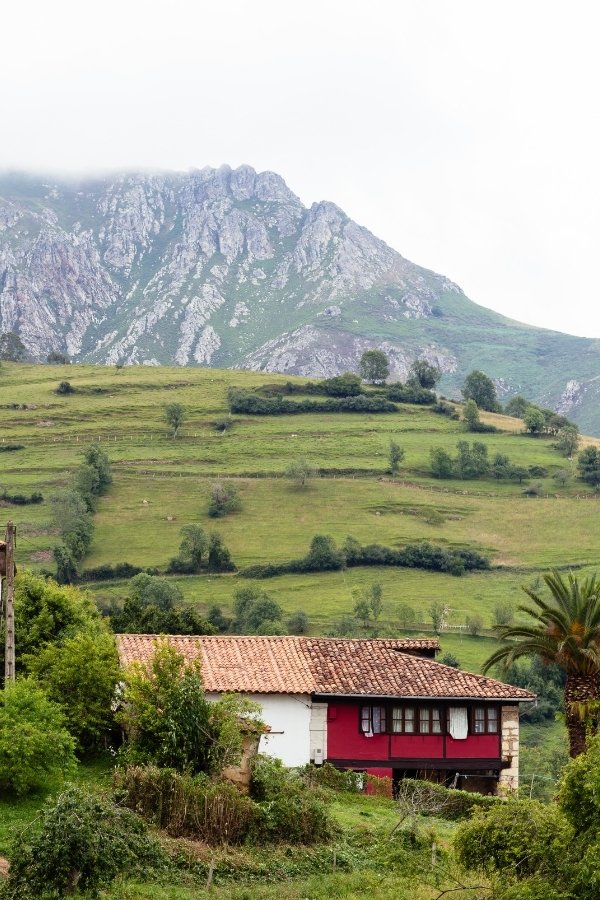
Northern Spain Road Trip: Stop 10 – Gijon and Oviedo
Gijon has a whole load of charm! The city’s old town, nestled on top of a cliff, is filled with a mix of fine-dining and casual eateries and boasts iconic Roman baths and a scenic promenade.
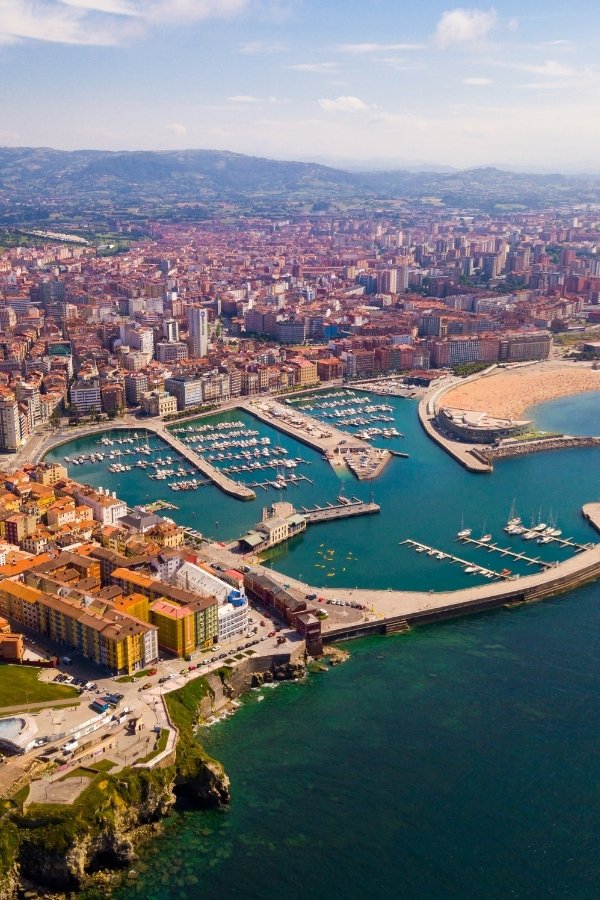
Oviedo, the region’s capital, is a compact city with a lively atmosphere owing to its student population. Enjoy a culinary extravaganza at the city’s many tapas bars ( Gloria Oviedo isn’t to be missed) and fine dining spots. There’s plenty more to do in Oviedo too, including shopping, museum-hopping, and marvelling at the city’s architecture.
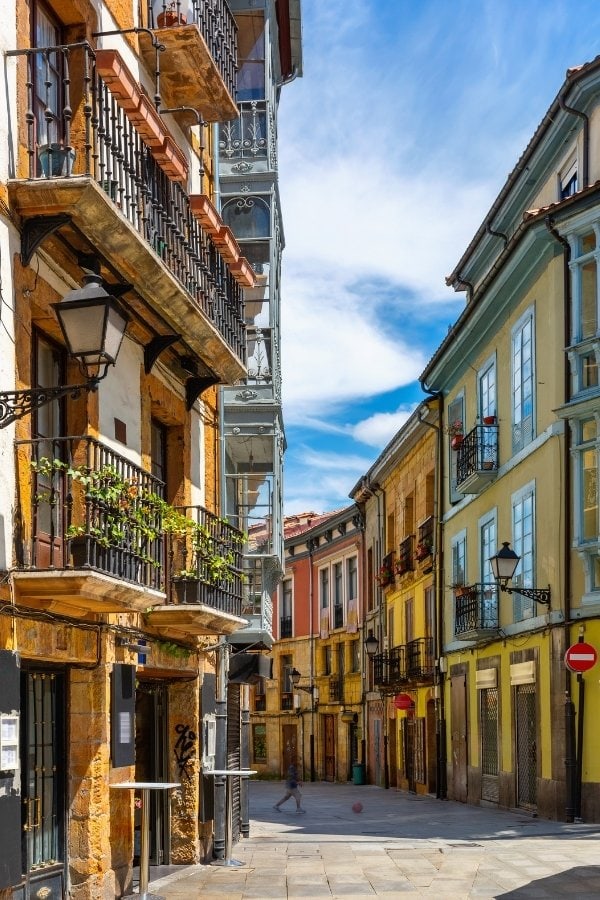
Oviedo to León: 125 km / 1h 28 min approx.
Northern Spain Road Trip: Stop 11 – León
León, the northernmost city in the region, is ready to welcome you with open arms. Top of the list of attractions here is the Catedral de León, which boasts impressive towers and colourful windows.
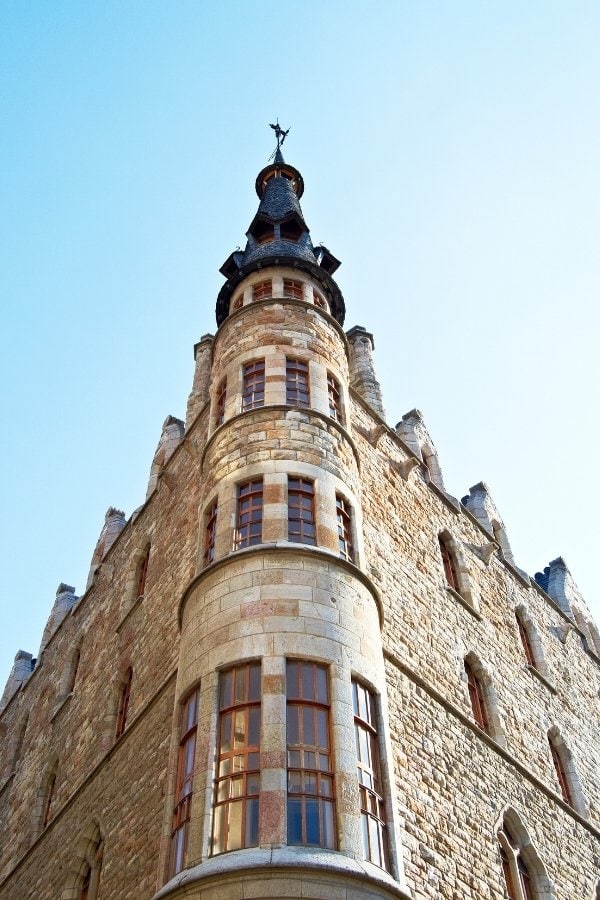
For a quintessential Leon experience, stroll through Plaza Mayor and enjoy a bit of people watching. This is also a great area for trendy restaurants, tapas bars, and impressive architecture.
Northern Spain Road Trip: Stop 12 – Valladolid and Salamanca
South of León is Valladolid, a small city famed for its architecture. The Cathedral of Valladolid is a sight to behold, as is the Museo Nacional de Escultura and the exhibits inside.
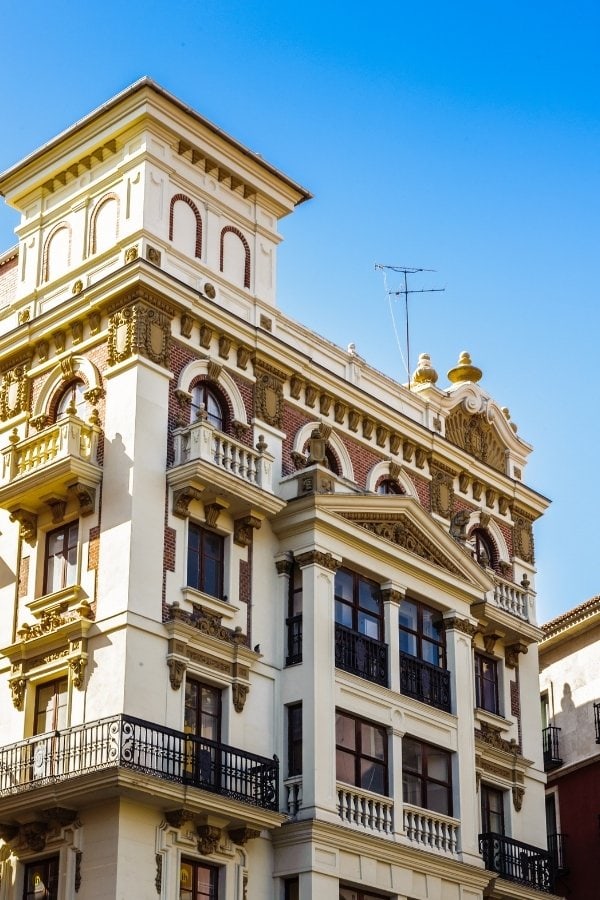
The final stop in the region is Salamanca, which has a burgeoning foodie scene that really delivers the heart and soul of Northern Spanish cuisine. In between the culinary experiences, enjoy visits to the Old and New Cathedral , Clerecía Church, and the Convento de San Esteban’s plateresque. For incredible viewpoints over some of the city’s attractions, be sure to visit the Roman Bridge.
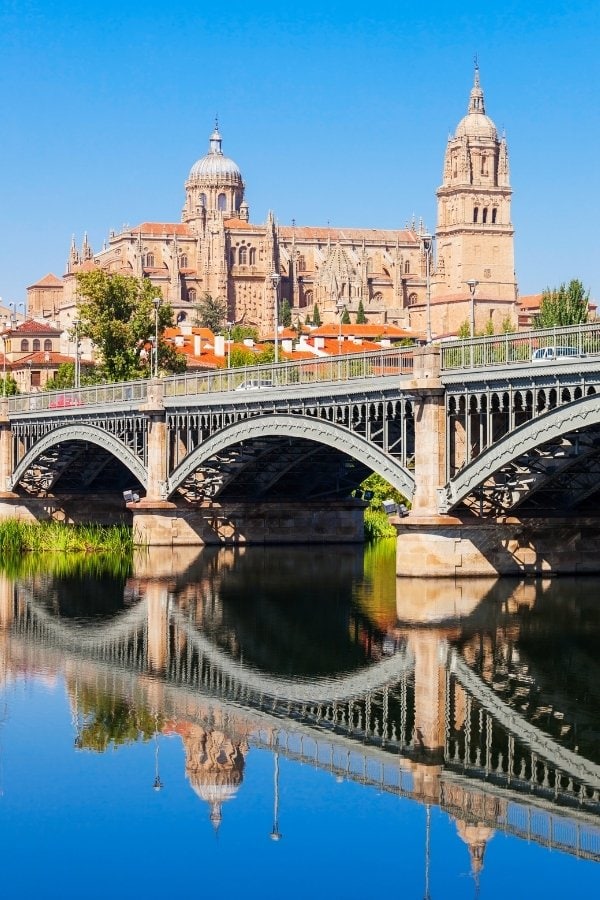
Where to Stay on a Northern Spain Road Trip
If you’re wondering where to stay in northern Spain, here are a few of my top choices along this route.
Hotel Palafox , Zaragoza
This is a great luxury hotel, offering sweeping city views from the rooftop pool.
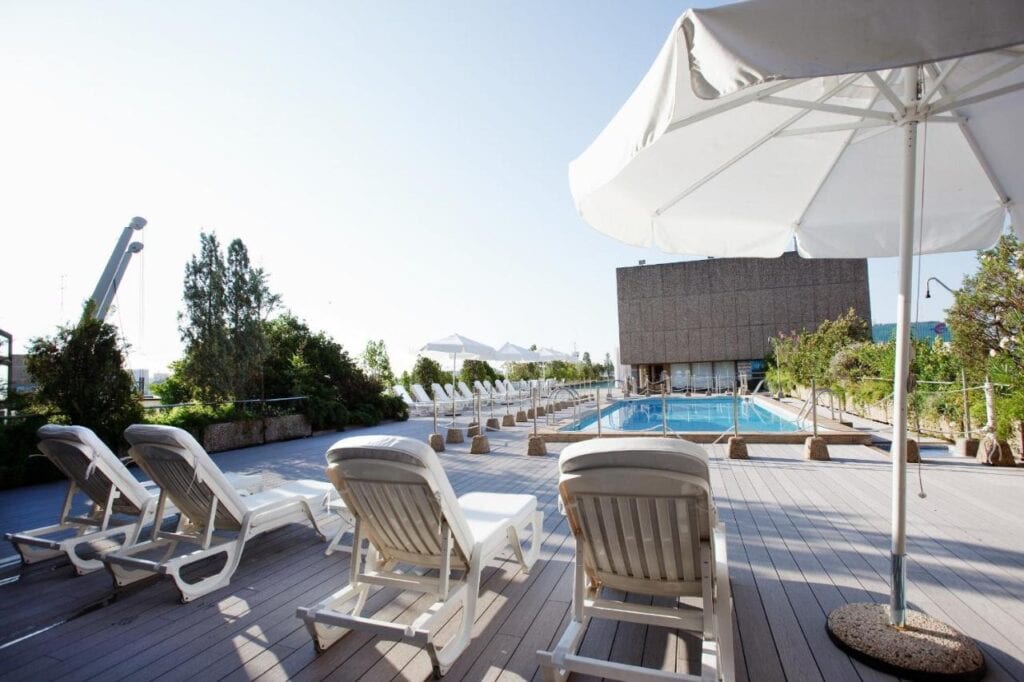
Hotel Carlton , Bilbao
This grand hotel in Bilbao offers spacious rooms with chic decor and a great restaurant serving regional delicacies.
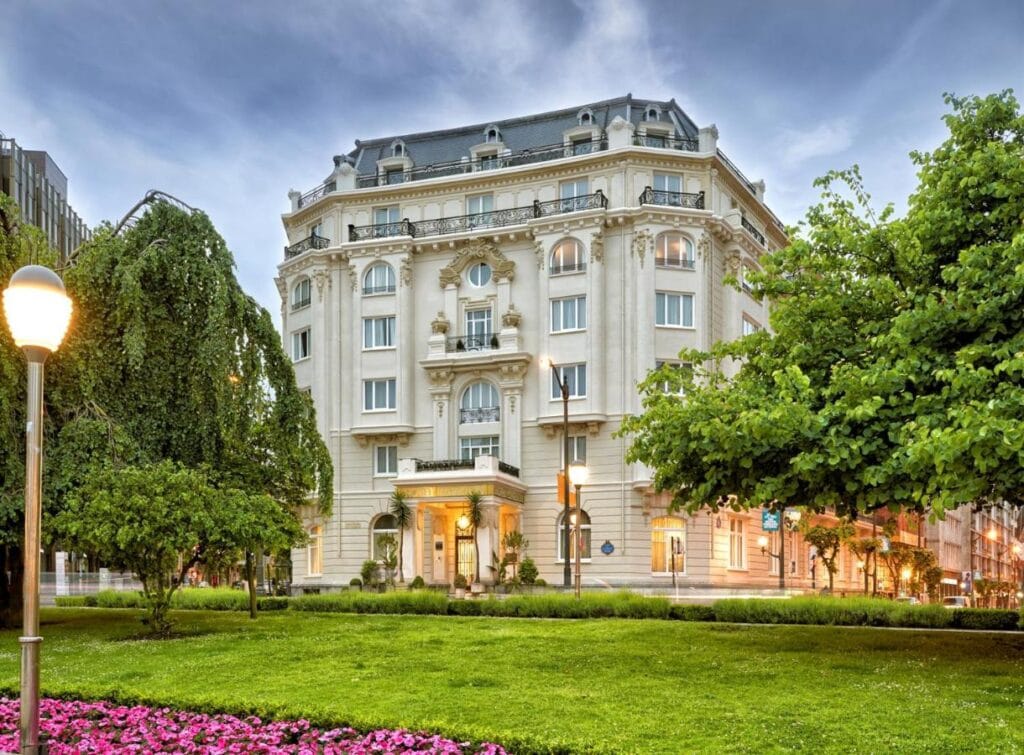
Hotel Villa Soro , San Sebastian
Enjoy a tranquil and chic hotel stay, just a short walk from the old town. This smart villa offers a country-house feel for your foodie city trip. Wondering how to get around? This hotel offers free bikes, making it easy to get around and see the sights.
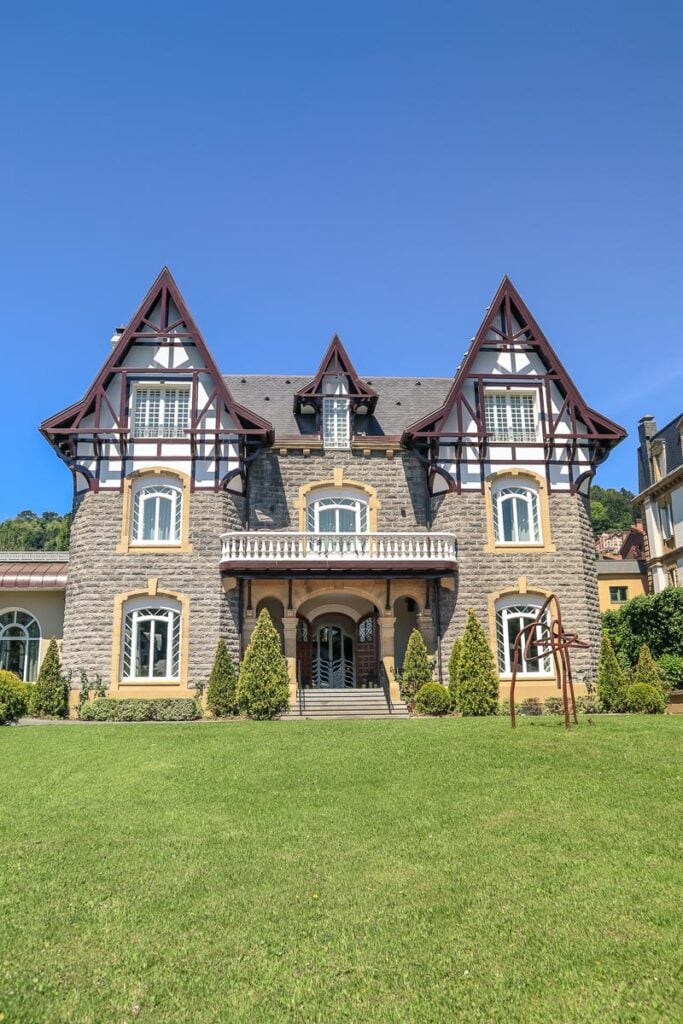
Parador de Turismo de León , León
This luxury hotel’s rooms feature antique furnishings and a balcony. There’s also a restaurant serving the region’s top wines.

I hope you’ve enjoyed reading my Northern Spain road trip itinerary. There are so many great places you could visit, it’s been hard to narrow it down to just a handful.
My best advice is to use this guide as a starting point, but don’t be afraid to add some extra spots along the way too. If you’re wondering where else to visit in Spain, check out my southern Spain road trip itinerary .
For more great road trip itineraries, check out my detailed guides to driving northern Italy and southern Italy .
Chloe Gunning
With a passion for food, fun and adventure, Chloe is the content creator behind one of the UK's top travel blogs Wanderlust Chloe. From volcano boarding in Nicaragua, to sailing around Sicily and eating her way around Japan, her travels have taken her to some of the coolest spots on the planet. Named Travel Influencer of the Year in 2022, Chloe regularly works with a number of tourism boards, producing inspirational travel content across multiple platforms. Find out more about Chloe here.
Leave a comment Cancel reply

Best Places To Visit In Northern Spain
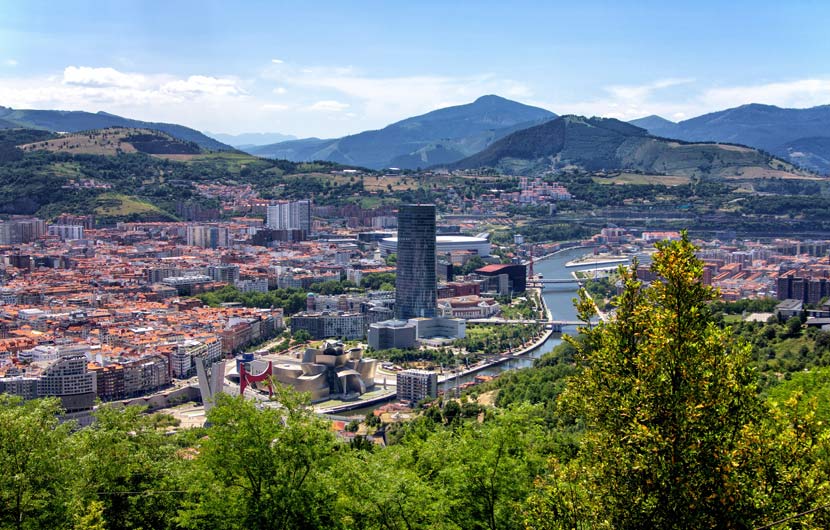
Northern Spain offers extraordinary cultural, culinary and natural diversity for visitors within its four main regions: Galicia , Asturias, Cantabria and Basque Country.
Each area provides unique attractions and beauty spanning lush forests to rugged coastlines.
Galicia is one of the best places to visit in Northern Spain. The stunning city of Santiago de Compostela draws pilgrims to its ornate cathedral and lively old town.
Seaside towns like A Coruna punctuate the wild, rocky coastline while vineyards thrive inland.
Asturias captivates with its mountain wilderness and vibrant cities like Oviedo which blends pretty plazas with pre-Romanesque architecture. Trying cider poured from great heights is a must.
Cantabria flaunts elegant belle epoque beach towns like Santander and Santillana del Mar alongside spectacular caves and the towering Picos de Europa mountains.
The cute capital of Santander provides a gateway to quiet coastal villages and lush nature reserves perfect for hiking.
The Basque Country tempts with fantastic food from San Sebastian , a world-class culinary capital.
Vitoria's medieval old town and show-stopping modern Guggenheim Museum in Bilbao demonstrate the region's diversity.
Basque Country coastal villages like Getaria and Zumaia lend charm.
From the peaks of the Picos de Europa to the tapas bars of San Sebastian , northern Spain promises astonishing culture, nature and cuisine of the typical Spanish tourist trail but worth discovering.

5 Interesting Facts About Bilbao
1. Bilbao is home to an impressive fine arts museum housing works from Gaugin to Goya, entrance is FREE every day from 6 pm to 8 pm. 2. The Mercado de Ribera market , located by the estuary, built in 1929 covering over 10.000 m2 is the largest indoor market in Europe. 3. The two impressive Izosaki twin towers which soar 23 stories and 83 meters above the Bilbao skyline were created by Japanese architect Arata Isozaki. 4. The Basque language ( Euskara) is the oldest European language and has been traced back to a language spoken 20,000 years ago in Europe. 5. Basque cuisine is highly regarded with numerous Michelin-starred Restaurants .

Bilbao is set amid green hills where the Nervion River meets the Bay of Biscay. Once focused on heavy industries like shipbuilding, today Bilbao has transformed into a cultural and architectural gem where historic sites mingle with modern masterpieces.
The city is most famous for the Frank Gehry-designed Guggenheim Museum, an architectural marvel clad in curving titanium that draws art aficionados from around the world.
Antoni Gaudí also left his mark with buildings like the Algoibar House. Casco Viejo, the atmospheric medieval quarter, charms with bustling plazas and pintxos bars crowding its narrow lanes.
Bilbao enjoys an outstanding dining scene centered around the countless pintxos bars offering creative bite-sized creations and Txakoli wine.
The city provides easy access to the Rioja wine region to sample its famed Tempranillos. Outdoor life thrives along the scenic Nervión River threading through town.
While smaller than Spain’s major hubs, Bilbao provides huge cultural offerings with galleries and museums showcasing everything from maritime history to fine arts.
World-class architecture both historic and modern makes exploring Bilbao's neighbourhoods an architectural feast for the eyes.
With its seamless blend of culture, cuisine and natural beauty, Bilbao emerges as one of Spain’s most compelling and progressive cities.
The colourful La Salve Bridge is sure to catch your eye, and once you cross it to the other side of the river you will be right by the entrance to the famous Guggenheim Museum Bilbao . This is one of the most famous attractions in the entire city so don’t miss a chance to explore it.
Next up you will definitely want to see the gorgeous stained glass windows at the Abando Train Station which depict parts of the city’s history.
Consider taking an evening stroll through the Doña Casilda Iturrizar Park which is filled with walking paths, statues and fountains.

Spain's northern Cantabria region hugs the Bay of Biscay, stretching from the towering Picos de Europa mountains to vibrant seaside towns dotted along the coast.
With its abundance of nature, culture and cuisine, Cantabria entices visitors seeking an authentically Spanish experience away from major tourist hubs.
The quaint capital Santander boasts an elegant waterfront promenade, a lively old town, and excellent museums like the Cantabria Maritime Museum honoring the region's shipbuilding heritage.
Nearby, Santillana del Mar enchants with stone architecture that earned it a 'town of historical importance' designation.
Cantabria's rugged shoreline provides opportunities for beachgoing, surfing, and coastal hikes to picturesque whitewashed fishing villages. Inland, the jagged limestone peaks of the Picos de Europa offer spectacular hiking and mountain refuges.
Descend into the magical Cuevas de El Soplao, a complex of caves adorned with geological formations.
Cantabria's rich natural bounty translates to excellent regional cuisine. Try smoked anchovies, sobaos sweet pastries, and hearty stews that use the fresh meat, seafood and produce from this lush corner of Spain.
With an alluring blend of history, culture, cuisine and outdoor adventure set amid stunning landscapes, Cantabria provides a chance to experience a more authentic side of Spain.

The verdant Principality of Asturias enchants visitors with its wild landscapes, fabulous food and drink, and traces of an ancient Celtic past.
With Spain’s highest coastal mountains and a scenic shoreline dotted with fishing villages, Asturias promises pure natural magic.
The capital Oviedo displays elegant palaces and lively cider bars around its beautifully preserved medieval core.
Towering mountain ranges like the Picos de Europa contain excellent hiking trails past glacial lakes and soaring peaks. The plunging Cares River gorge threads through mountains over a mile high in places.
Asturias’ wild coastline yields delicious seafood, especially pintxos of just-caught octopus and shrimp. Inland, the region’s legendary bean and meat stew known as fabada asturiana warms body and soul.
Don't leave without sampling Asturias' famous cider, poured from bottles held overhead to aerate the dry, funky brew in proper sidreria fashion.
From prehistoric cave art to crumbling Roman ruins, Asturias’ history and culture come alive. Quaint coastal villages like Cudillero and Llanes resemble the colourful fishing hamlets of the Basque Country further east.
With its own distinct traditions and landscapes, Asturias unveils a unique corner of natural and cultural riches waiting to be discovered in northern Spain.

Galicia enchants visitors with its rugged Atlantic coastline, famed pilgrimage route, and traces of Celtic heritage that infuse its architecture and bagpipes. The remote landscapes here feel far removed from Spain's sun-baked southern coasts.
Santiago de Compostela draws pilgrims from across the globe to its lavishly decorated cathedral honouring the apostle Saint James.
Visitors also flock to Galicia's sublime beaches and charming medieval towns like Pontevedra nestled into the Rías Baixas ria inlets. Quaint coastal villages pepper the coast, from fishing hamlets to beach resort towns.
Galicia's cold, deep Atlantic waters yield extraordinary seafood, from spider crab to goose barnacles.
Albarino white wines grown near the coast have put Galicia on the viticulture map for their balanced fruit and acidity.
Locals wash down piles of steamed mussels and shrimp with refreshing glasses of crisp white wine.
Ancient Celtic traditions woven into Galicia's music, dance, bagpipes and superstitions reveal its shared roots with neighbouring Celtic nations Ireland, Scotland, Wales and Brittany in France.
With its fusion of incredible coastal and mountain scenery, heady seafaring culture and singular traditions, Galicia offers travellers an enchanting look into Spain's mystical northern soul.

The Rioja region, located in northern Spain, is renowned worldwide for its exceptional wine production, breathtaking landscapes, and rich cultural heritage.
Here's an overview of this captivating region:
Wine Heritage: Rioja is synonymous with fine wine. It's one of Spain's most celebrated wine regions, known for its red wines made primarily from Tempranillo grapes.
Rioja wines are categorised into several quality levels, including Crianza, Reserva, and Gran Reserva, each representing different ageing requirements.
The region is dotted with prestigious wineries, known as bodegas, where visitors can explore centuries-old cellars and indulge in wine tastings.
Scenic Beauty: Beyond its vineyards, Rioja boasts stunning natural scenery. The Ebro River meanders through the region, flanked by picturesque towns and rolling hills covered in vineyards.
The Camino de Santiago pilgrimage route also crosses through Rioja, attracting hikers and history enthusiasts.
Charming Towns: Rioja is home to charming towns and cities, such as Logroño, the regional capital, known for its lively atmosphere and tapas bars.
Haro, the wine capital of Rioja, hosts the famous Batalla del Vino (Wine Battle) each year. Briones and Laguardia are enchanting medieval villages with well-preserved architecture.
Culinary Delights: Rioja's gastronomy perfectly complements its wines. The region is famous for its succulent lamb dishes and a wide range of local produce, including peppers, asparagus, and artichokes.
Dining in a traditional Riojan restaurant is an opportunity to savour the flavours of Spain's northern cuisine.
Culture and Festivals: Rioja is steeped in cultural traditions, with festivals and events celebrating the region's heritage.
The Batalla del Vino, mentioned earlier, is a unique wine fight where participants douse each other with wine. Rioja also hosts numerous wine-related festivals and cultural events throughout the year.
Rioja is a captivating destination that caters to wine aficionados, nature lovers, history buffs, and food enthusiasts alike. Its unique blend of wine culture, natural beauty, and cultural heritage makes it a must-visit region in Spain.

Navarra captures the essence of diversity and scenic beauty. It's a place where vibrant cultures, stunning landscapes, and a rich tapestry of traditions converge.
The Navarra region is a mosaic of landscapes. To the north, the majestic Pyrenees Mountains paint a dramatic backdrop with verdant valleys, beckoning hikers and nature enthusiasts. In contrast, the southern region transforms into a fertile plain, where vineyards and orchards thrive in the Mediterranean climate.
The region is celebrated for its wine production, notably its acclaimed rosé wines crafted from Garnacha grapes.
Here, you can explore local wineries, known as bodegas, where tastings offer a delightful journey through the region's winemaking heritage. Complementing the wines, Navarra's cuisine is a treat for the senses, featuring traditional dishes like Pochas a la Navarra and the flavorful Chistorra sausage.
Pamplona, the capital of Navarra , is a city steeped in history. Its medieval old town, enveloped by ancient walls, exudes an enchanting charm.
The Pamplona Cathedral, a striking example of Gothic architecture, is a prominent landmark.
The city is also famous for hosting the San Fermín festival, renowned worldwide for its exhilarating Running of the Bulls event.
Beyond its urban treasures, Navarra showcases the mesmerising Bardenas Reales, a semi-desert region designated as a UNESCO Biosphere Reserve. Its arid landscapes, reminiscent of cinematic westerns, draw photographers and adventure seekers.
Navarra celebrates its rich cultural heritage through a myriad of festivals. The San Fermín festival is just the tip of the iceberg, with traditional music, dance, and folklore events that honour the region's Basque and Navarrese roots.
Navarra's tapestry of natural beauty, cultural depth, and culinary excellence offers an authentic Spanish experience. Whether you seek outdoor adventures, cultural immersion, or simply a taste of the local way of life, Navarra welcomes you with open arms, inviting you to explore its captivating tapestry.
The Cities of Northern Spain

Here are the main cities located within the regions of Northern Spain:
Bilbao (Basque Country): Bilbao is the largest city in the Basque Country and is renowned for its modern architecture, most notably the Guggenheim Museum. The city is an industrial and cultural hub with a vibrant arts scene and a thriving culinary tradition.
Vitoria-Gasteiz (Basque Country): As the capital of the Basque Country, Vitoria-Gasteiz is known for its well-preserved medieval old town and green spaces. It's often cited as one of the greenest cities in Europe.
San Sebastian (Basque Country): San Sebastian, or Donostia in Basque, is certainly one of the best places to visit in Northern Spain. It is famous for its stunning beaches, culinary excellence, and the annual San Fermín festival. Its picturesque old town and beautiful La Concha Beach are major attractions.
Pamplona (Navarra): Pamplona is famous for the San Fermín festival and its historic old town. It's a city steeped in tradition and history, with a charming atmosphere.
Logrono (La Rioja): As the capital of La Rioja, Logroño is at the heart of Spain's wine country. The city is known for its tapas culture and is a great base for exploring the local wineries.
Oviedo (Asturias): Oviedo is the capital of Asturias and is celebrated for its historic architecture and lively arts scene. It's a city where tradition meets modernity.
Gijón (Asturias): Gijón is Asturias' largest city and offers a vibrant coastal experience with beautiful beaches and a thriving nightlife.
Santander (Cantabria): Santander is a picturesque coastal city with elegant architecture, beautiful beaches, and a relaxed atmosphere. It's a popular destination for beachgoers and tourists.
A Coruna (Galicia): A Coruña, or La Coruña, is known for its stunning waterfront promenade, historic old town, and the Tower of Hercules, a Roman lighthouse and UNESCO World Heritage site.
Santiago de Compostela (Galicia): Santiago de Compostela is the spiritual and cultural heart of Galicia, famous for its cathedral and the Camino de Santiago pilgrimage route. Its historic old town is a UNESCO World Heritage site and one of best places to visit in Northern Spain.
Best Places To Say in Northern Spain

Whether you seek cultural immersion, natural beauty, or coastal relaxation, Northern Spain has something for everyone.
Here is our pick of the best places to stay in Northern Spain:
San Sebastian:
Nestled along the Bay of Biscay, San Sebastian , or Donostia in Basque, is a coastal jewel celebrated for its exquisite beaches, including La Concha and Zurriola.
The city's crown jewel is its Old Town, where narrow cobblestone streets lead to delightful pintxos (tapas) bars, showcasing the Basque culinary prowess.
San Sebastian is an ideal destination for beach lovers, foodies, and those seeking a cultural and culinary odyssey.
Bilbao, the largest city in the Basque Country, has undergone a remarkable transformation from an industrial hub to a cultural epicentre.
The iconic Guggenheim Museum, designed by architect Frank Gehry, has become a symbol of modern architecture and contemporary art. Beyond the museum, explore the lively neighbourhoods, sample Basque cuisine at local restaurants, and stroll along the banks of the Nervión River.
Santiago de Compostela:
The capital of Galicia , Santiago de Compostela, is synonymous with the Camino de Santiago, a medieval pilgrimage route that culminates at its stunning cathedral.
The historic old town is a UNESCO World Heritage site, boasting charming squares, centuries-old buildings, and a vibrant atmosphere.
Pilgrims and travellers alike are drawn to the city's spiritual and cultural allure.
Santander , the capital of Cantabria, is an elegant coastal city offering a perfect blend of urban sophistication and natural beauty.
Playa del Sardinero is a pristine beach where you can soak in the sun, while the Palacio de la Magdalena, a grand palace overlooking the bay, is a testament to the city's aristocratic past.
As the capital of La Rioja, Logroño is the epicentre of Spain's renowned wine region. The historic centre is a labyrinth of charming streets, where you can enjoy exquisite tapas and local wines. Stroll along Laurel Street, known as the "Path of the Elephants," and savour the tastes of La Rioja's cuisine.
Pamplona , the capital of Navarra, is famous for the San Fermín festival and its exhilarating Running of the Bulls.
The city's historic quarter is a treasure trove of Gothic architecture, including the Pamplona Cathedral. Beyond the festival, Pamplona offers a rich cultural experience, making it a compelling destination year-round.
The capital of Asturias , Oviedo, is a city of contrasts. Its historic old town is a testament to centuries of history, with striking architecture and charming squares. The city's modern side boasts a vibrant arts scene, world-class restaurants, and a welcoming atmosphere.
Bardenas Reales:
This semi-desert region in Navarra is a geological wonderland, characterized by eerie rock formations and rugged landscapes.
Bardenas Reales is a paradise for adventure seekers, offering opportunities for hiking, biking, and photography.
Rías Baixas:
In the heart of Galicia, Rías Baixas is a coastal haven defined by its picturesque rías (estuaries) and vineyard-covered hillsides.
The region's Albarino wines are celebrated, and visitors can explore charming seaside towns like Sanxenxo and Combarro while indulging in fresh seafood.
Picos de Europa:
Spanning multiple regions, the Picos de Europa mountain range is a haven for nature enthusiasts.
Towering peaks, lush valleys, and pristine lakes define this stunning natural landscape.
Hiking, wildlife watching, and exploring traditional mountain villages are among the many activities available.
Recommended Hotels in Northern Spain

Luxury Hotels:
- Hotel Maria Cristina (San Sebastian): This iconic luxury hotel, part of the Luxury Collection by Marriott, exudes elegance and is located in the heart of San Sebastián. Guests enjoy opulent rooms, gourmet dining, and views of the Urumea River.
- Gran Hotel Domine Bilbao : Situated right next to the Guggenheim Museum in Bilbao, this 5-star hotel combines contemporary design with comfort. Its rooftop terrace offers panoramic views of the city.
- Parador de Santiago de Compostela : A historic Parador (luxury state-run hotel) located next to Santiago de Compostela Cathedral, this establishment is steeped in history and offers lavish rooms and top-notch dining.
Mid-Range Hotels:
- Sercotel Hotel Las Rocas (Santander): Overlooking the Bay of Biscay, this mid-range hotel provides comfortable rooms with sea views. It's an excellent choice for travellers seeking affordability and a beachfront location.
Budget-Friendly:
- Albergue Jakue (Pamplona): Pilgrims and budget-conscious travellers can find comfortable accommodations at this pilgrim hostel in Pamplona. It's a great choice for those walking the Camino de Santiago.
Best Beaches in Northern Spain
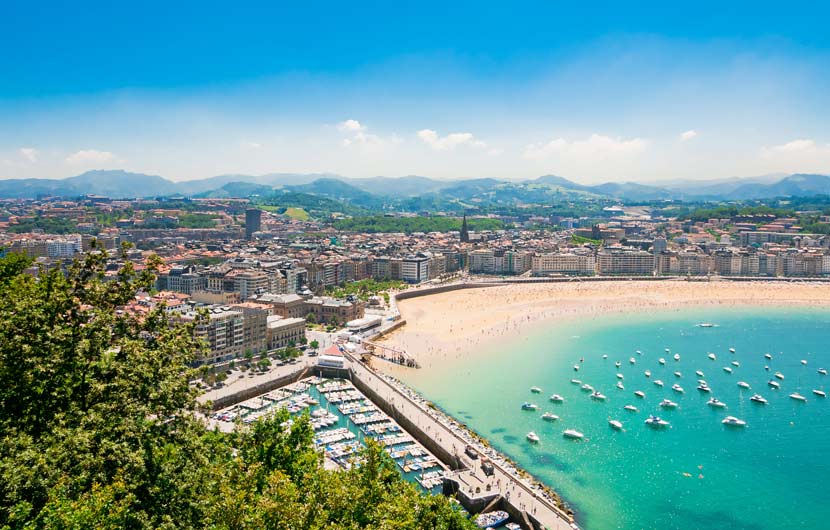
- La Concha Beach (San Sebastian): La Concha is renowned for its pristine crescent shape, soft sands, and crystal-clear waters. It's ideal for swimming and water sports while offering views of the city and the Urgull and Igeldo mountains.
- Zurriola Beach (San Sebastian): Known for its surf-friendly waves, Zurriola attracts surfers from around the world. The beach is lively and has a youthful atmosphere, making it a hotspot for beachgoers.
- Playa de Orza n (A Coruna): A spacious urban beach with fine golden sand, Orzán is perfect for long walks and sunbathing. The beach promenade offers a range of dining options and bars.
- Playa de las Catedrales (Ribadeo): This beach is famous for its unique rock formations and natural arches. During low tide, visitors can explore these geological wonders.
- Playa de Somo (Santander): Somo Beach is a haven for surfers, known for its consistent waves and surf schools. The long stretch of sandy shore is perfect for beach games and relaxation.
- Playa de Gulpiyuri (Llanes): A hidden gem, Gulpiyuri Beach is an inland beach with freshwater from underground streams. It's a surreal and beautiful spot for a unique beach experience.
- Playa de Silencio (Cudillero): Also known as "Silent Beach," this secluded cove is surrounded by cliffs and offers a tranquil escape. It's a great place for a peaceful swim and enjoying the rugged beauty of Asturias.
- Playa de Noja (Noja): Located in Cantabria, Noja Beach is known for its family-friendly atmosphere, golden sands, and clear waters. Water sports enthusiasts can enjoy activities like windsurfing and kayaking.
- Praia das Catedrais (Ribadeo): This Galician beach is famous for its breathtaking rock formations and natural arches. Visitors can explore these geological wonders during low tide.
- Playa de Samil (Vigo): Samil Beach in Vigo is a popular urban beach with fine sands and a wide range of facilities. It's an excellent place for families to relax and enjoy the sea.
- Playa de Rodas (Cíes Islands): Often called one of the best beaches in the world, Rodas Beach offers stunning white sands and clear turquoise waters in the Cíes Islands, part of the Galician coast.
- Playa de Los Quebrantos (San Juan de la Arena): Located in Asturias, Los Quebrantos Beach is known for its wild beauty, rocky formations, and surfing conditions.
FAQs - Frequently Asked Questions
Where is the best place to go in northern spain.
The best place to go in northern Spain depends on your preferences. San Sebastián is a top choice for its stunning beaches and culinary scene, while Bilbao offers modern art and architecture. Santiago de Compostela is a cultural gem, and Asturias is perfect for nature lovers.
Is northern Spain worth visiting?
Northern Spain is definitely worth visiting. It offers diverse landscapes, rich culture, delicious cuisine, and welcoming locals.
Which is better Santander or San Sebastian?
Santander and San Sebastián each have their charm. Santander is known for its elegance and beautiful beaches, while San Sebastián is famous for its culinary delights and La Concha Beach.
Are there nice beaches in northern Spain?
Yes, there are stunning beaches in northern Spain, especially in San Sebastián, Santander, and Galicia. The region's coastline is diverse and beautiful.
What is the best food city in northern Spain?
San Sebastian is often considered the best food city in northern Spain, known for its pintxos (tapas) culture and Michelin-starred restaurants.
What is the north of Spain famous for?
The north of Spain is famous for its diverse landscapes, rich history, and vibrant culture. It's also known for the Camino de Santiago pilgrimage route.
What is the best month to visit northern Spain?
The best month to visit northern Spain depends on your preferences. Spring and early autumn are pleasant, while summer is great for beachgoers. Autumn is ideal for wine enthusiasts.
Why is Santander so popular?
Santander's popularity is due to its stunning beaches, elegant architecture, and relaxed atmosphere. It's a beloved coastal destination.
What is the food capital of northern Spain?
San Sebastián is often considered the food capital of northern Spain, famous for its culinary innovation and delicious pintxos.
Is it worth visiting Oviedo Spain?
Yes, Oviedo is worth visiting for its historical charm, cultural attractions, and lively arts scene.
Is it worth visiting Bilbao?
Bilbao is worth visiting for its modern art, stunning architecture, and unique urban transformation.
Is it better to stay in Gijón or Oviedo?
Choosing between GijOn and Oviedo depends on your preferences. GijOn offers a vibrant coastal experience, while Oviedo is known for its historic charm.
Is Asturias worth visiting for tourists?
Asturias is definitely worth visiting for tourists, offering a mix of natural beauty, fantastic beaches, green pastures, rich culture, and delicious cuisine.
What is the prettiest village in Asturias?
Cudillero is often considered one of the prettiest villages in Asturias, known for its picturesque harbour and colourful houses cascading down the cliffs.
- About Author
- Latest Posts

Hey there! I'm Matt, your friendly neighbourhood explorer extraordinaire! For the past 15 years, I've been gallivanting around Spain, soaking up all its wonders and uncovering hidden gems like a modern-day Indiana Jones (minus the hat and whip, unfortunately). So, buckle up, amigos! It's time to dive straight into the heart and soul of Spain. Welcome to my world of Spanish wonders!
Latest posts from Matt
- A Guide to Luxury Family Holidays in Ibiza - August 25, 2024
- Best Hidden Gems of Aragon in Northern Spain - August 24, 2024
- Discover Spain’s Urban Jewels: From Barcelona to Seville - August 22, 2024
Recent Posts

Why the Balearic Islands Are the Ultimate Destination for Luxury Villa Holidays

A Guide to Luxury Family Holidays in Ibiza

Best Hidden Gems of Aragon in Northern Spain

Discover Spain’s Urban Jewels: From Barcelona to Seville

A Traveler’s Guide to Staying Safe in Spain

Hiking in Spain – The Best Trekking Trails

Best Neighbourhoods in Benidorm For Your Holiday Accommodation

Why Spain Rocks for Remote Working
Leave a reply cancel reply.
Your email address will not be published. Required fields are marked *
This site uses Akismet to reduce spam. Learn how your comment data is processed .

Travel Smarter - Not Harder
Download free e-guides and travel tips.
Start your Journey today and get access to exclusive FREE content.
Disclosure: Please note that some of the links included in the above content may be affiliate links. We may earn a commission if you make a purchase at no extra cost to you. Rest assured, we only recommend products and services that we personally use or have used and are happy to recommend. Any commission we earn helps toward the site's running costs.
Username or Email Address
Remember Me
- WHY VISIT SPAIN?
- TRAVELLING TO SPAIN
- SPAIN ON A BUDGET
- TRAVEL REQUIREMENTS – ETIAS
- SPAIN ENTRY REQUIREMENTS
- SPANISH CUISINE
- SPANISH FOOD
- HOLIDAY IDEAS
- PUBLIC HOLIDAYS
- TOURISM BOARDS
- AIRPORT GUIDE
- DRIVING IN SPAIN
- WEATHER IN SPAIN
- FREE WEB CAMS
- BEST BEACHES SPAIN
- FESTIVALS & FIESTAS
- MUSEUMS IN SPAIN
- CAMPING IN SPAIN
- MARINAS IN SPAIN
- SKIING IN SPAIN
- WATER PARKS
- UNESCO WORLD HERITAGE SITES
- 80 BEST ATTRACTIONS
- 71 BEST PLACES TO VISIT
- REGIONS OF SPAIN
- COSTA DEL SOL
- CANARY ISLANDS
- SAN SEBASTIAN
- Complete List:
- SAGRADA FAMILIA BARCELONA
- BARCELONA FC STADIUM TOUR
- BARCELONA FLAMENCO SHOW
- SEVILLE FLAMENCO SHOW
- SEVILLE CATHEDRAL
- GAUDI`S CASA BATLLO
- THE ALHAMBRA GRANADA
- SANTIAGO CATHEDRAL
- CITY OF ARTS & SCIENCE VALENCIA
- MOSQUE-CATHEDRAL CORDOBA
- CAMINITO DEL REY
- PRADO MUSEUM MADRID
- REINA SOFIA ART MUSEUM
- SCUBA DIVING
- BEST TAPAS TOURS
- BEST WINE TASTING TOURS
- TOUR GUIDES
- HOTELS IN SPAIN
- LUXURY HOTELS
- LUXURY BEACH HOTELS
- HOLIDAY RENTALS
- PARADOR HOTELS
- CHEAP FLIGHTS
- TRAVEL INSURANCE
- FREE TRAVEL BROCHURES
- WIN FREE HOLIDAYS


One Week In Northern Spain, The Perfect Itinerary For “Green Spain”
Planning a vacation in northern Spain? Here’s my guide to an epic one week road trip in northern Spain.
This itinerary starts and ends in the exciting cultural and culinary city of Bilbao. It covers all the top must visit attractions, towns, and historic landmarks in the Basque, Cantabria, and Asturias regions of Spain.
I fell utterly in love with northern Spain on a recent geographical cure. It earns its nickname of the “Natural Paradise.”
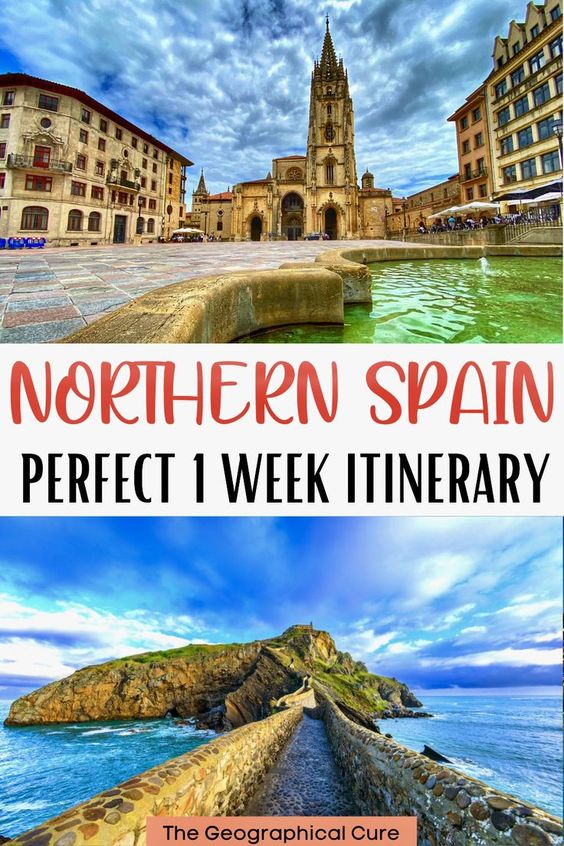
I’ve written about Barcelona in many other posts.
This itinerary focuses on the less touristy and drop dead gorgeous regions of natural beauty — the Basque country, Cantabria, and Asturias.
If you’re an “is it pretty?” person, northern Spain is for you.
Overview Of One Week In Northern Spain
Here’s a quick snapshot of my recommended one week itinerary for a self drive road trip in northern Spain. It’s a loop that starts and ends in Bilbao.
You’ll have two bases, Bilbao and Oviedo. I give you tips on where to stay in each city.
- Day 1 : Explore Bilbao
- Day 2 : Day Trip To San Sebastian
- Day 3 : Day Trip To San Juan de Gaztelugatxe
- Day 4 : Drive To Oviedo, stops in Santillana del Mar and Comillas
- Day 5 : Explore Oviedo
- Day 6 : Day Trips to Cudillero and Gijon
- Day 7 : Drive Back To Bilbao, stop en route in coastal villages
One Week In Northern Spain Itinerary
I drove to northern Spain by car from southern France .
If you’re doing the same, I stopped in two idyllic little towns on the way, the elegant town of Pau France in the French Pyrenees and the colorful Basque town of Hondaribbia just over the Spanish border.
READ : 10 Day itinerary for Southern France
Because I don’t like to switch hotels or Air Bnbs every night, I based myself in two cities in northern Spain, Bilbao and Oviedo.
From there, I could access the best sites — spectacular coastlines and natural wonders, tiny medieval villages that seem stuck in time, and the cultural hotspots of the two cities.
If you’ve been to sunny Andalusia in southern Spain, you’ll find that these two regions of Spain are utterly different. You’d hardly believe you were in the same country.
Andalusia is sunny and sand-baked with Moorish goodies galore. In contrast, Northern Spain is a glossy green, with mountains reaching to the sky and rocky coves and crescent beaches that beckon.
READ : Most Beautiful Towns in Andalusia
Here’s my step by step guide to touring northern Spain by car in one week. A car will give you much more flexibility. It’s not that expensive, if you can drive a clutch.
And it’s perfectly safe and easy to drive, as long as you don’t venture into a busy city center or a tiny medieval village with one way lanes. Most of the places on my itinerary can be accessed by bus, but it won’t always be easy.
READ : Tips for Renting a Car and Driving in Europe
Here’s how you should spend 7 blissful days in northern Spain
Day 1: Bilbao: Art and Starchitecture
On day 1, explore your starting point, Bilbao, pronounced Bilbow.
It’s the cultural hotspot of the Basque region. Bilbao is beautifully situated amid rolling green hills and tucked between mountain ranges.
It’s a surprising and avant garde place, casually combining historic Spanish flair with modern starchitecture.
Bilbao is no longer the industrial city that people think of from past decades, though it’s still agreeably down to earth.
READ : Complete Two Day Itinerary for Bilbao
Bilbao is a great Spanish city to explore if you fancy art, culture, and ancient cobbled lanes. It’s alive with local energy.
Bilbao is a hip haven for foodies, overflowing with fantastic restaurants, many of the Michelin variety.
While you’re there, visit the iconic Gehry-designed Guggenheim Museum, stroll the “seven streets” of the historic center (Casco Viejo), and indulge in the inventive tapas.
Click here to book a guided walking tour of historic Bilbao. Click here to book a skip the line ticket and tour of the stunning Guggenheim Museum. Bilbao is also a fantastic place to take a guided gourmet food tour .
I have big love for Bilbao. Here’s my complete guide to the must see sites in Bilbao .
Day 2: San Sebastian: International Culinary and Beach Capital
Bilbao is a great base for day trips in northern Spain . Your first point of call is San Sebastian.
This Basque city is objectively beautiful, and tourists flock there. It’s renowned as a foodie resort town and beachy playground. Its stunning beach, La Concha, is world famous and considered one of Europe’s best beaches.
If you’re a food traveler, you’ll be in seventh heaven.
San Sebastian is frequently called the “ food capitol of the world. It boasts three restaurants with the rarest of accolades: a three star Michelin rating.
San Sebastian also has a thriving pintxos scene. Pintxos are the Basque version of tapas.
You can spend the day wandering around and indulging in these haute cuisine mini meals.
San Sebastian’s historic center, Parte Vieja, is picturesque, though I found it fairly underwhelming. It’s much tinier than Bilbao’s Casco Viejo and the sites will be quickly exhausted.
It’s also quite touristy. If you don’t like crowds, try to visit San Sebastian in the off season.
While you’re in San Sebastián, you may want to book a guided walking tour of the old town . If your’e a foodie, you should definitely consider a guided food tour when you’re there. I booked this 3 hour I Travel Food Food tour and loved it.
You can get from Bilbao to San Sebastian by train or bus. You can also book a full day guided day tour from Bilbao . Or book a guided day tour that includes San Sebastián and winery visit .
Day 3: Gaztelugatxe: a Natural Wonder
On day 3 of your on week in northern Spain itinerary, take an easy day trip to the absolutely jaw dropping San Juan de Gaztelugatxe .
It’s a magical spot only about 45 minutes from Bilbao. Gaztelugatxe is really a must see destination in the Basque Region. And now it’s TV-famous.
In the wildly popular HBO series Game of Thrones, Gaztelugatxe appears as Dragonstone — the haunting ancestral home of Daenerys Targaryen, the Mother of Dragons.
In real life, Gaztelugatxe is a fantastical ancient stone foot bridge winding up to a tiny hermitage chapel on Spain’s Bay of Biscay.
Here’s my complete guide to visiting Gaztelugatxe , and hiking to the chapel.
It’s easiest to drive to Gaztelgatxe. But you can also book a guided day tour from Bilbao .
When you’re done with your hike, head to nearby Bakio beach to cool off. But if you want a more beautiful beach, drive a little further to beautiful Sopalena Beach. It’s one of the best beaches in Basque Country, where cliffs drop into the ocean.
When you’re done gasping over the ethereal place, head back to Bilbao. Tuck into some nummy food at one of its fine restaurants. Bilbao has 22 Michelin starred restaurants.
Like San Sebastian, it’s considered a foodie haven. Azurmendi is the jewel of Bilbao and this restaurant alone is worth a trip to city. Restaurant Mina is also quite wonderful. You can also book an evening guided food tour .
Where To Stay In Bilbao
Bilbao has some beautiful hotels. Check out Vincci Consulado de Bilbao , a Riverside landmark with a nautical theme and views of the Guggenheim. The Occidental Bilbao has smart guest rooms and a massive swimming pool.
For a real splurge, check out the Hotel Carlton , a five star beauty with old world charm.
There are some nice boutique hotels too, like the artsy designer-styled Hotel Miro near the Guggenheim Museum. Gran Hotel Domine has sleek modern decor and views of Jeff Koon’s Puppy sculpture.
Day 4: Drive to Oviedo with Beautiful Stops En Route
Now, it’s time to head to your next base, Oviedo.
The distance between Bilbao and Oviedo isn’t that far, about 2:45. So if you start early, you’ll have time for two stops along the way.
To my mind, the best two places to spend half a day are Santillana del Mar and Comillas in the Cantabria region.
Cantabria is spectacularly beautiful, dotted with rolling hills and cows. It’s so verdant and eye catching, you can almost imagine that you’re in a Van Gogh painting.
1. Santillana del Mar: a Magical Medieval Village
There’s a car park right outside Santilla del Mar. Park and take your pedestrian only stroll in the jewel of Cantabria.
Santillana del Mar is Cantabria’s most charming hamlet and one of the prettiest villages in all of Spain.
It’s a “living museum” — a delightful warren of dreamy cobbled streets, caramel colored architecture, and romantic wrought iron Juliet type balconies.
At the end of its main drag, Calle Santa Dominga, is the Collegiate Church, which is the most important religious Romanesque monument in Cantabria.
Here’s my complete guide to Santilla del Mar . To see all the sites and secret spots, you may want to book a 2 hour guided walking tour .
By northern Spain standards, the town is somewhat touristy. But, hey, it’s in rural Spain and nothing like busy Barcelona , so don’t be put off. I wasn’t even remotely fazed.
2. Comillas: Unexpected Architectural Gems
After you’ve fueled up on some hot chocolate and churros, it’s time to head to Comillas.
The town isn’t as picturesque as Santillana del Mar, though it has a wide beach for you to sun bathe when you’re done site seeing.
But mainly it’s impressive for its architecture. You’d never expect to fin such treasures in an unassuming, almost unknown, small town in Spain.
Comillas has two main sites, both architecturally interesting — Gaudi’s El Capricho and Sobrellano Palace.
El Capricho is a rare Gaudi building outside his more well known Modernist architecture in Barcelona .
I like to think of El Capricho as Gaudi’s sunflower villa. El Capricho was a youthful project for Gaudí.
In 1883, Máximo Díaz de Quijano commissioned Gaudí to build him a summer villa. Quijano, an amateur musician and botanist, chose the lilting name El Capricho, which means whim or folly in Spanish.
Gaudí designed the villa. But he’d also begun work on his famous opus, the Sagrada Familia . So his fellow architect Cristóbal Cascante supervised the villa’s construction.
The villa became a museum in 2010. When you enter, you can sit down and watch an orientation video with English subtitles.
A short walk up the hill, not far from El Capricho, you’ll find Sobrellano Palace.
The rather over the top Neo-Gothic palace was commissioned by Antonio López, the first Marques of Comillas, and designed by Juan Martorell.
The palace was a vanity project. It was the fashion for aristocrats to have fancy country estates. Interestingly, Sobrellano Palace was the first building in Spain to have electricity.
You can only visit the palace on a guided tour. There’s hourly tours (in Spanish) that last 40 minutes.
But you can cast your eyes on Gaudi-designed furniture, magnificent fireplaces, paintings, and stained glass. Outside the palace is a beautiful chapel-pantheon, also Gothic in design.
Day 5: Fairytale Oviedo: Sculptures & Cider
I just loved storybook Oviedo. The sparkling clean capitol of the Asturias region of Spain is a vibrant and enchanting place.
Like a giant museum, it’s filled with beautiful architecture and dotted with whimsical sculptures. It’s surely one of the most beautiful and historic places in northern Spain. To see it all, you can book a guided walking tour .
Woody Allen famously loves Oviedo, which he describes as “a delicious, exotic, beautiful, clean, pleasant, tranquil and pedestrianised city, like it didn’t belong to this world, like it didn’t exist … Oviedo is like a fairy tale.”
Allen filmed portions of his 2008 film Vicky Cristina Barcelona in Oviedo. There’s a statue-monument to him on Calle Milicias Nacionales, created by the Spanish artist known as Santarúa.
Founded in the 8th century, Oviedo is also an ancient place. It’s delightful old town makes you want to stroll endlessly through its parks and plazas, gazing in admiration at its colorful terraces and balconies.
During your walkabout, be sure to take in Oviedo’s must see sites — the flamboyant San Salvador Cathedral, the Romanesque churches, the stately Plaza Alfonso II, and the university.
Of special note is the San Miguel de Lillo chapel, just outside Oviedo. It’s a pre-Romanesque royal chapel from the 9th century used by King Ramiro I.
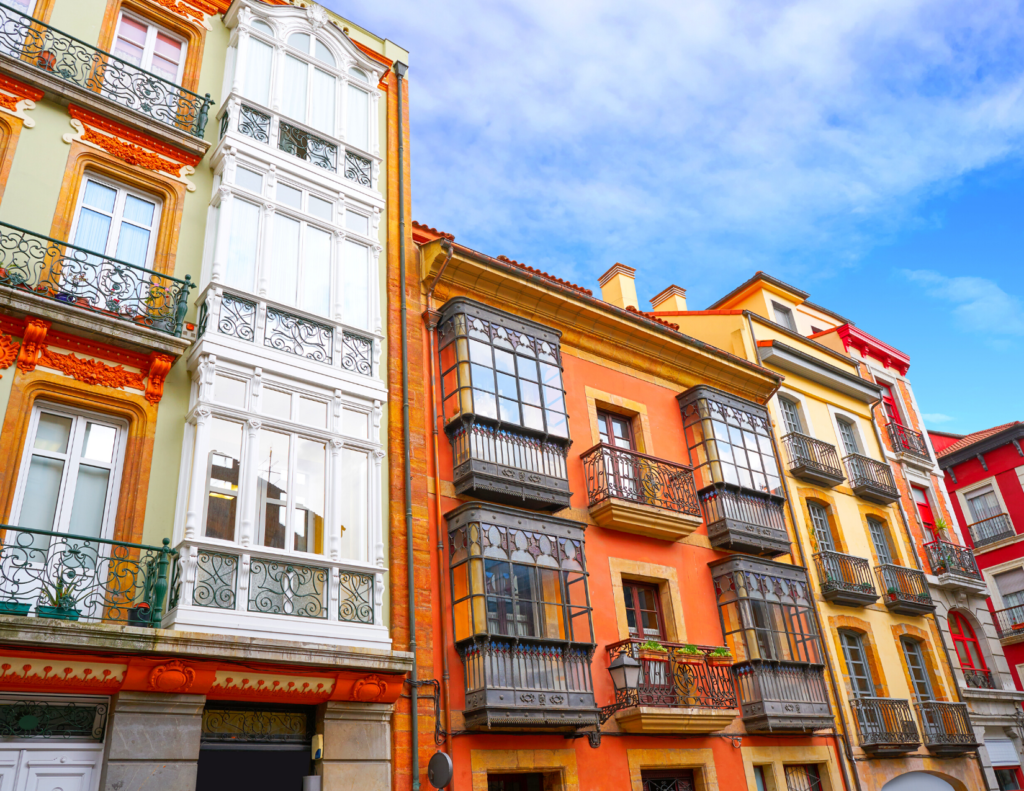
It was designated a UNESCO heritage site in 1985. It’s a 30-40 minute uphill walk or 10 minute drive from the Oviedo city center.
Be sure to indulge in the local Asturias cuisine while in Oviedo. It’s hearty, to say the least. Think meat, fish, and strong stinky cheeses.
Be sure to try fabada, which is a local dish made of beans, sausage, bacon, and ham. Oviedo has many fine restaurants. But I recommend La Corte de Pelayo or La Genuine de Cimadevilla.
Try the the local tipple, Asturias cider. For a proper Sideria, head to Calle Gascona to best sample the local drink. Cider is poured from an impressive height — performance art style — and meant to inject effervescence into a flat drink.
To me, it seemed a little bitter and acidic. I think it’s best sipped with food.
Day 6: Cudillero: Color by the Sea
The next day you’re off to the ridiculously eye catching fishing village of Cudillero, which might be Spain’s prettiest seaside village.
Cudillero is just 40 minutes from Oviedo and well worth the detour. A place of hills, you’ll have to park outside the teeny tiny town and walk in.
In Cudillero, white and pastel houses are piled in a mishmash on top of each other.
There’s a pleasingly startling contrast between the terra cotta roofs and the blue sea. It’s said that each house in the village matches the color of the owner’s fishing boat.
There are ample cafes to rest your feet, feast on seafood, and take in the sweeping views of the village and the sea.
Picture perfect Cudillero is really a must see gem in northern Spain. Don’t miss it; it only takes a half day.
If you’re feeling ambitious, you can add nearby Gijon to your itinerary for Day 6. It’s less than 40 minutes from Cudillero. Spend a half day there or relax over cocktails and dinner.
Or you can book a guided day tour from Oviedo that includes Cudillero and other villages in Asturias .
Gijon is a handsome oceanfront city. It’s packed with buzzy cider bars, cafes, and fishing village vibes.
It doesn’t have the crumbling old world charm of Cudillero. But it’s definitely worth a visit.
If you have enough time, take a walk along Gijon’s coastal path. Hugging the crystal clear Bay of Biscay, it goes from Playa de San Lorenzo, Gijon’s main beach, towards La Nora.
Where To Stay In Oviedo
The Eurostars Palacio de Cristal is a luxury hotel with minimalist modern architecture and great city views. The Hotel and Spa Princesa Munia is a hotel fit for royalty. It has beautifully decorated rooms and a stunning spa.
Hotel Fruela is more low key luxury in the historic heart of Oviedo. Barcelo Oviedo Cervantes is in a handsomely restored mansion. It boats designer rooms and an excellent superfood oriented breakfast.
Day 7: Oviedo To Bilbao
On day 7 of your one week in northern Spain, you’ll drive back to Bilbao. Ah, what a beautiful drive this is. The coast is spectacular.
My flight back to the US was from Bilbao, a much more central hub than Oviedo.
I stopped in 3 villages — Llanes, Ribadesella, and St. Vicente de la Barquero.
They were all incredibly lovely in their own distinct way. You could easily plop yourself down for a week to admire them, preferably in Llanes.
1. St Vicente de la Barquera: a Town Awash in Water
The beautiful village of St. Vicente de la Barquera had my heart at first sight. The drive toward the town is breathtaking.
The ancient Puente de la Maza, with its 28 arches over the river, welcomes you. St. Vicente is surrounded by gorgeous beaches — Meron, Tostadero, and Oyambre.
The pretty village dates from Roman times. For centuries, St. Vicente de la Barquera was a stop on the pilgrimmage to Santiago de Compostela.
Step back in history at the Castillo del Rey, San Vicente’s 13th century medieval castle. From atop the hill, you have beautiful views of the town and, on a clear day, the Picos de Europe mountain range.
2. LLanes: Sophisticated Beach Resort
You don’t necessarily expect sophisticated charm in Asturias, a Spanish region known mostly for its incredible natural beauty.
But LLanes is a cosmopolitan European town. In fact, I was quite captivated by Llanes.
Others adored the beachy town too, judging from the number of people strolling through the vibrant old center, eating and drinking at the many restaurants and cider houses.
Try Covadonga Restaurant on Street Manuel Cue, if you’re hungry and need a lunch break.
Llanes boasts a well preserved medieval city with ancient palaces, still housed within the remains of crumbling city walls. It has a doughty defensive tower, an active harbor, fantastic beaches, and top notch views.
LLanes would make a good base for Asturias, if you want to settle in and relax. It has 32 beaches within its jurisdiction.
Walk out to the breakwater to see Los Cubos de Memoria or The Cubes of Memory. It’s an installation of 66 cubes designed and painted by famous Basque artist Augustin Ibarrola.
The brightly colored work (which was a bit faded when I clapped eyes on it), is the artist’s Andy Warhol -like unsettling contrast between art and nature.
3. Ribadesella: Pretty Port Town
Ribadesella is an old port city, and also very picturesque. Its beautiful broad beach makes it a popular holiday spot.
For a little history, take the 10 minute stroll inland to the UNESCO-listed Cueva de Tito Bustillo .
It’s a series of connected caves with a veritable feast of prehistoric drawing. They date back 35,000 years to the Palaeolithic era.
More Than One Week In Spain?
If you have more than 7 days in northern Spain, there are some great things to add to your itinerary.
1. Picos de Europe
If you have extra time before landing in Bilbao or elsewhere, take a day or two to explore the Picos de Europe, a national park.
The park’s quite large, covering the Asturias, Cantabrian, and Castilla regions. With its breathtaking scenery, it attracts mountaineers and regular adventurers alike.
There are mountains, gorges, verdant valleys, and the stunning Lakes of Covadonga. You may think you’ve fallen into Switzerland.
The atmospheric villages in the Picos de Europe are worth visiting too — Covadonga, Canga de Onis, and beautiful medieval Potas.
If you’re brave, take the Fuente De cable car, named Teleferico Fuente De. You’ll ascend to a rocky plateau, at an elevation of over 6200 feet.
Once there, from the Miradour del Cable, you’ll have epic panoramic views over the Picos (if it’s not a foggy day).
You can book a guided day tour to the Picos from Oviedo or Dijon.
2. Bilbao To Barcelona
Since you are landing in Bilbao at the end of this one week in Spain itinerary, you can keep on driving to Barcelona.
I have a 10 day itinerary that takes you from Barcelona to Bilbao . You can reverse the itinerary and trek from Bilbao to Barcelona.
3. Basque Spain
Alternatively, from Bilbao, you can explore more of Basque Spain.
Basque Spain is unexpectedly and energetically diverse. Every time I’ve traveled there, I’ve been seduced by its breathtaking landscapes, art-filled museums, and UNESCO landmarks, north to south.
This 10 days in Basque Spain itinerary coves Bilbao and San Sebastián. But it also take you to some beautiful small towns and wine regions in Basque Spain.
I hope you’ve enjoyed my one week in northern Spain itinerary. You may enjoy these other Spain travel guides and resources:
- 30+ Hidden Gem Towns in Spain
- 3 Day Itinerary for Barcelona
- 3 Day Seville Itinerary
- 2 Day Itinerary for Madrid
- 10 Day Road Trip From Madrid to Seville
- 10 Day Road Trip in Basque Spain
- Six 1 Week Itineraries for Spain
- 25 Famous Landmarks in Spain
- 10 Day Itinerary for Andalusia
If you’d like to visit northern Spain, pin it for later.
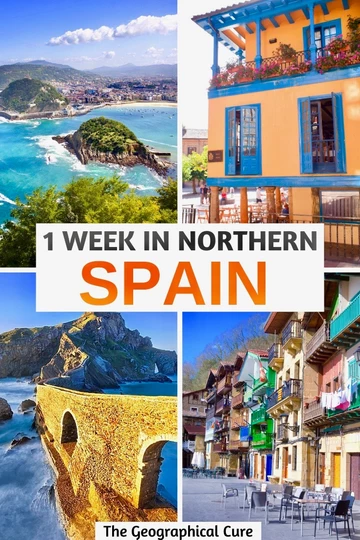
5 thoughts on “One Week In Northern Spain, The Perfect Itinerary For “Green Spain””
Hello! I’m really enjoying your Basque and Northern Spain posts but I’m curious – why don’t you mention the Rioja wine country as somewhere to stay/visit? Is it not that popular for tourists? (I live in Northern California and the wine country is a huge travel destination here!) I’m curious if you have insights about the Rioja area as a place to spend a few nights between Bilbao and San Sebastian.
Yes, it’s popular. I think I mentioned it in my Basque Spain article and in my article on day trips from Bilbao.
Hi! I am curious to know if you had any encounters with the asian hornet (vespa velutina) on your trip? At what time (and year) did you go?
No, I didn’t. I was there in late June to early July.
Leave a Comment Cancel reply
Save my name, email, and website in this browser for the next time I comment.
Last Updated on March 21, 2023 by Leslie Livingston
Road is Calling
Northern Coast of Spain Travel Guide – Best Places to Visit, Things to See & Do
For a long time, I wanted to visit the northern coast of Spain. I know, a lot of people prefer the southern region with its Moorish sights, flamenco, stunning beaches, whitewashed villages, milder winters, and fiestas.
But I feel that cities like Barcelona , Madrid , Valencia , or for example Seville have taken all the attention. Plus, from late spring to fall when everyone goes to southern Spain, that region becomes very crowded.
Mark and I spent a good chunk of time going on road trips from Barcelona to Valencia , from Valencia to Malaga , visiting vineyards in the south of Spain , and exploring Costa Brava Region. There we wandered to small inland villages and walked the streets of busy cities. And we seriously loved it.
Yet, for some reason, it didn’t leave a feeling that we wanted to return, perhaps rent an apartment for a longer period of time and discover more of the region. Maybe the reason was that the scenery and nature reminded us a lot about Southern California where our life was too stressful, I am not sure. But the southwest of Spain didn’t impress us as much as the north.
In northern Spain, we also had much more time to spend since we decided to come for a couple of months and turn into locals for a bit. And that long holiday left a lasting impression. The north Spain coast actually made us change our perception of Spain completely. The more time we were spending there, the more we were falling in love with it.
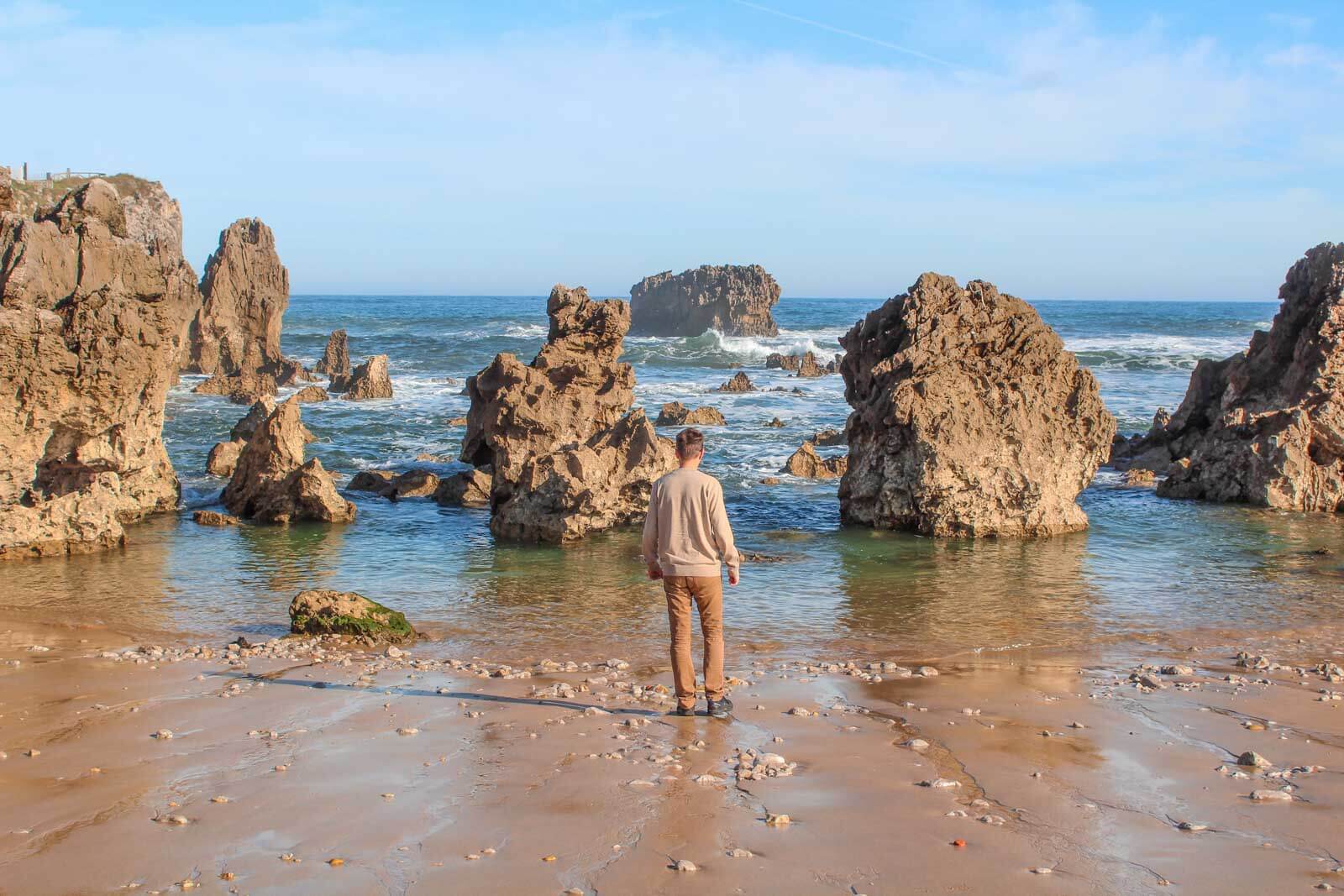
So I wanted to write this post and share our favorite north Spain places and attractions. If you are visiting Spain for the first time and wondering if the northern region is worth your time, it definitely is! Because it’s simply impossible not to enjoy it. See below why!
Northern Spain Beaches Are Simply Mind-Blowing And Warm To Swim
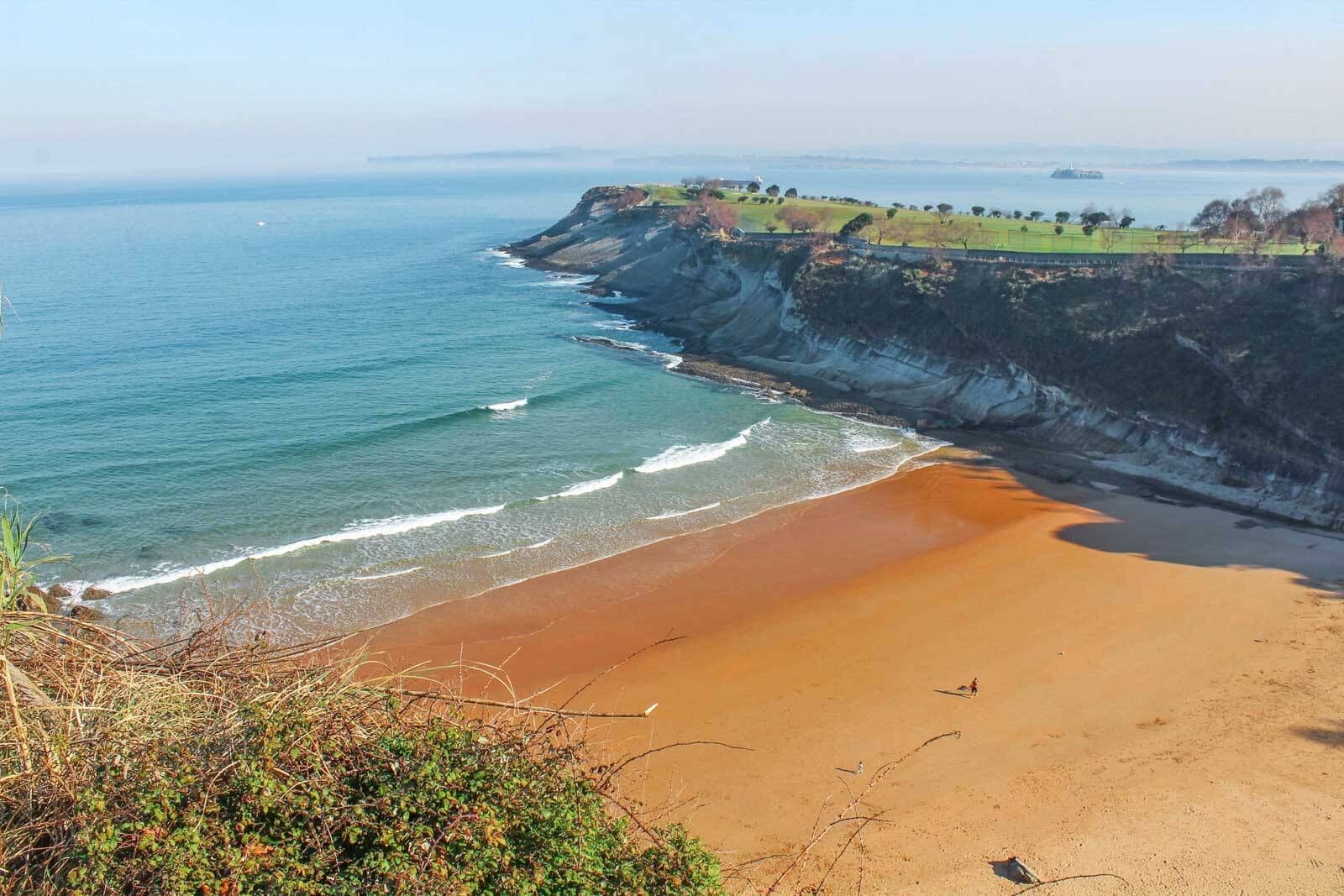
To be honest, I underestimated the beauty of the north coast of Spain. I expected it to be dramatic and impressive but had no clue it would be that spellbinding. Every time Mark and I go to visit a new coastal city or town we follow the rule of stopping at the local beach, walking around it for a bit, taking a few pictures, and looking at waves crashing on the shore.
And every beach we visited so far looked so different from the previous and from the next one. Some beaches are wide with calm and sheltered waters perfect for swimming while others are narrowly nestled between rocky coastal formations.
There are beaches with white or bright yellow sand and those with shells and pebbles. It doesn’t matter what type of beach along the north coast we go to. Every single one of them captivates us so much that we are ready to run in the water despite the fact that it is early spring.
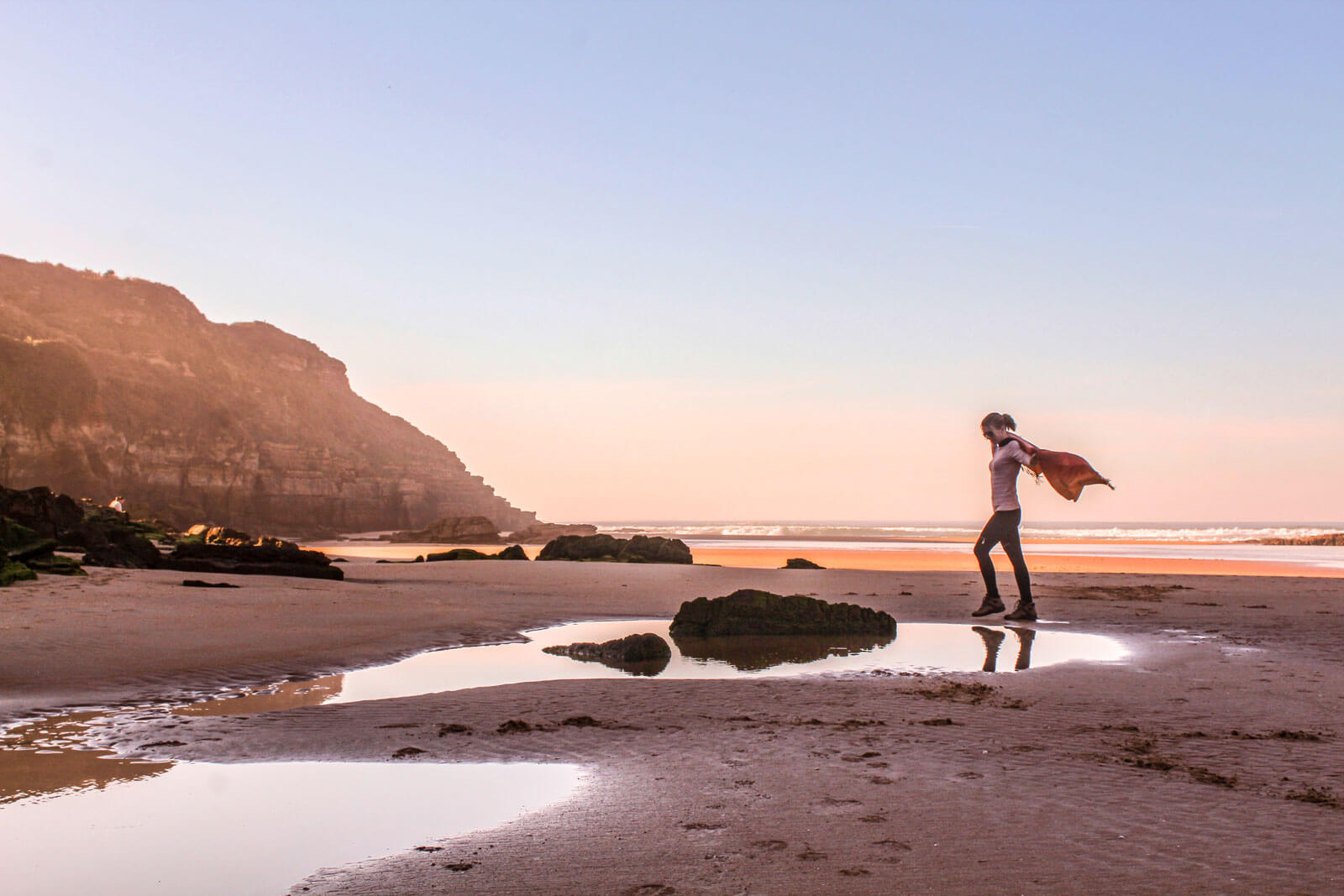
And what’s interesting – the ocean along the northern coast of Spain is not cold. There are many nice sunny days to sunbathe on the beach and even go for a quick dip (for those from the north).
The Northern Coast of Spain Has Some of the Finest Cheeses and Cider
For cheeses….
Did you know that Spain is actually a producer of some of the finest cheeses in Europe? I always thought it was France which remains famous worldwide until this day. When we visited the Cabrales Cheese Cave in Las Arenas we learned that Spain produces more types of cheeses than France. However, since their production is directed mainly at a local market than international, Spanish cheese is not as well-known and popular around the world as their neighbors in France.
Each region in northern Spain makes some type of cheese. Asturias is famous for Cabrales cheese – a blue cheese made with a mixture of sheep, goat, and cow’s milk. Cantabria produces a creamy cheese with a bitter flavor called Nata de Cantabria. Galicia makes a few types of cheeses. One is Tetilla cheese – a creamy one with a salty flavor using cow’s milk only.
Another one is Arzula Illoa – a handmade soft mild cheese made with cow’s milk also but has a bit oily taste. The Basque country is home to Idiazabal cheese – raw sheep’s milk cheese with a hard and smooth crust with an intense aroma and high calcium content. It comes with smoke and creamy flavors.
A visit to a cheese farm is an interesting experience that you can get in any part of northern Spain. And you don’t need to plan it as a separate trip. It is very easy to stop by one of the farms (or stores where they can tell you a bit about the production too) on the way to a hike, beach, national park, or when visiting villages or smaller towns. There are quite a few of them scattered along the coast. Just don’t forget about the siesta time when most businesses close for a few hours.
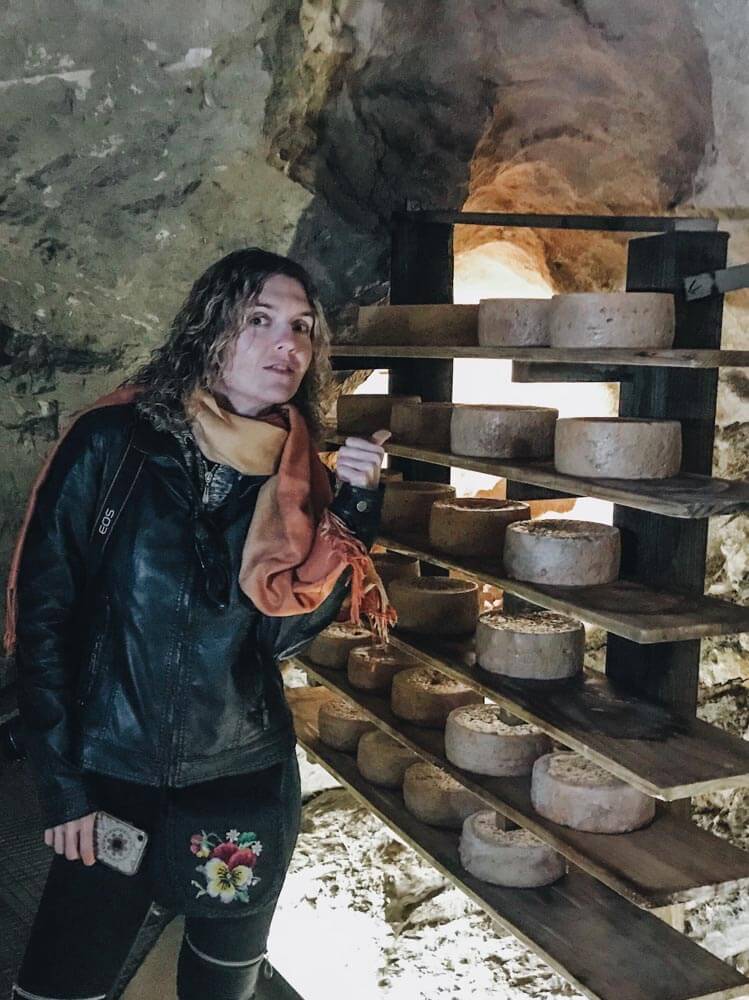
FOR A CIDER…
Cider is a drink that takes a special place in the lives of local people from Galicia to Basque county. It is an absolute must-try, especially when in Asturias. This region, being home to cider, is full of cider farms (called Sidras.) Some are bigger, some are smaller but all of them tell about the process of making cider and the most interesting part of how to drink and pour it.
When being on a road trip anywhere between Unquera and Cudillero , put in Google maps the word “Sidra” and you’ll see lots of options for where to stop for such a unique experience. By the way, the Cabrales Cheese Cave mentioned above includes a cider tasting after the cheese tour.
For a more authentic and entertaining experience , I recommend visiting one of the Taverns or Bars (they can also be called Sidrerias.) There, you’ll get a taste of cider beverages and witness the process of pouring and drinking it.
If you happen to drive in the evening from Santander to Gijon or back, stop in the tiny town of Villaviciosa. It has a lovely cafe de Vicente Pasteleria with a very friendly barman and a homey feel. The town itself is pretty unremarkable but its location right near the highway makes it easy to detour. And drinking cider there is an absolutely delightful experience. One big bottle is more than enough for two people.
Sometimes It Feels Like Ireland or Switzerland
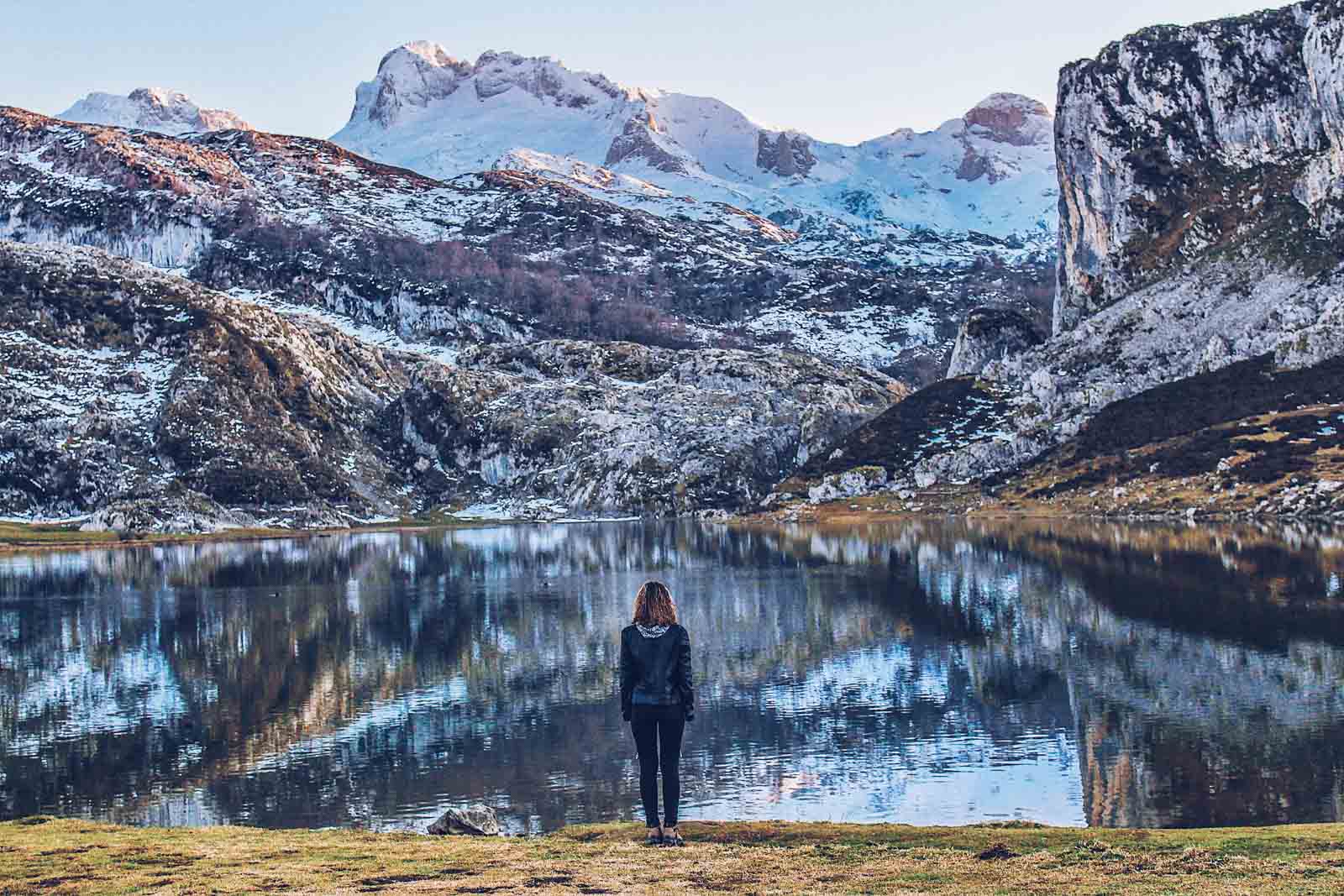
Neither of us has been to Ireland (yet) but we definitely have seen many pictures of the Irish coast . On many occasions, when traveling along the Northern coast of Spain we get the impression that the scenery is very similar to that one on Ireland postcards.
Especially regions like Galicia and Asturias, known for its verdant and lush green landscapes, remind of Ireland. The abundant rainfall in these areas contributes to the vibrant vegetation, creating a picturesque countryside similar to Ireland’s. And both regions feature stunning coastal cliffs and a rugged shoreline that adds to the scenic beauty of the coastline.
At the same time, driving away from the coast towards the mountains changes the scenery in many ways. Irish motifs slowly turn into Swiss. Some parts of the northern region, particularly the Cantabrian Mountains, reminded me of the Bernese Oberland in central Switzerland . However, the mountains in Spain of course do not reach the same heights as the Swiss Alps.
Food in Northern Spain is Something To Travel For
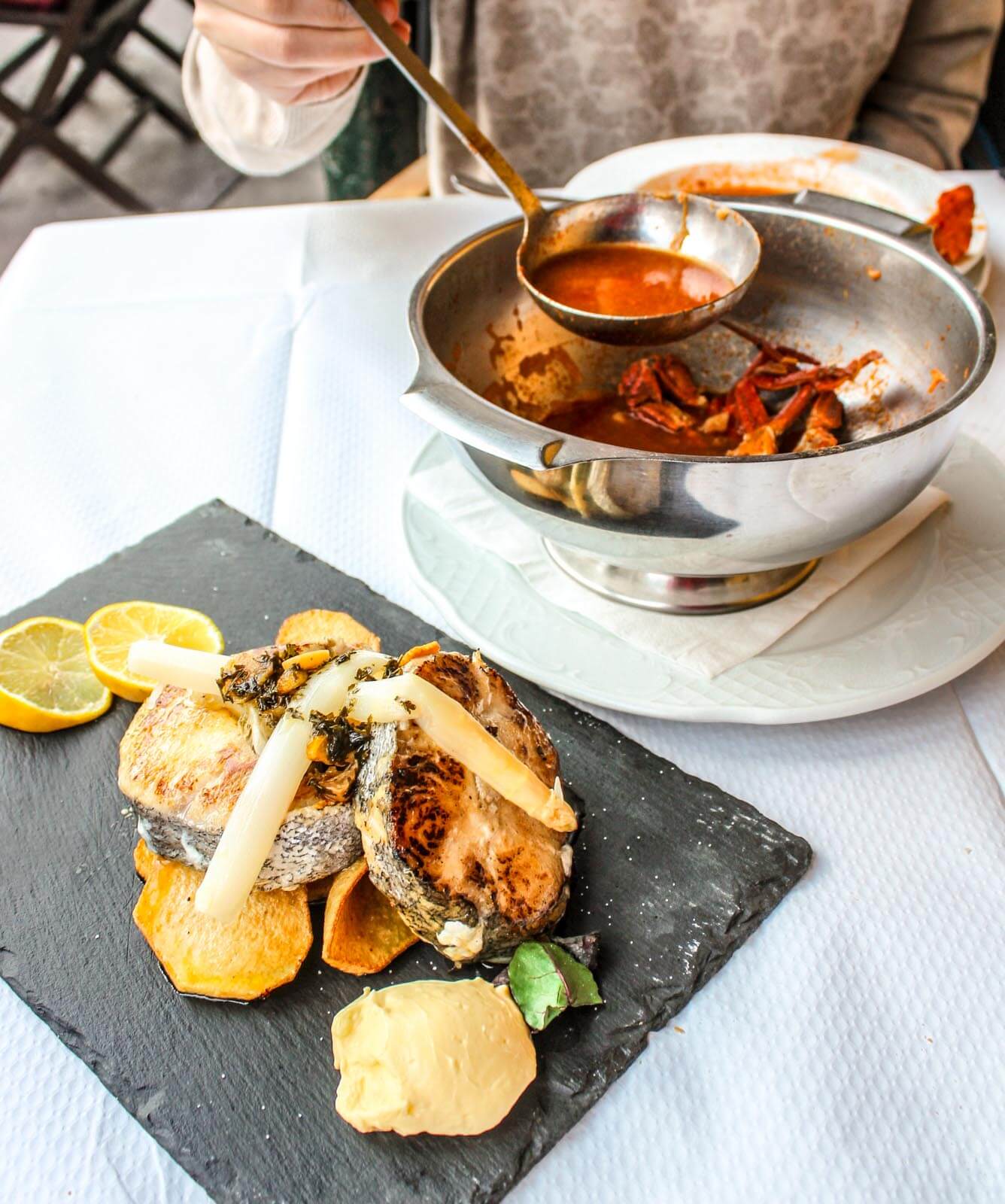
The culinary richness of the north coast of Spain is represented by a variety of seafood dishes, meat, fresh vegetables and fruits, excellent cheeses, and wines. The choice of seafood is so wide that it’s easy to get lost when in the store or restaurant.
You can also be sure that foods there are always fresh and organic. There are no chemical additives, artificial coloring, or preservatives to make it last longer and taste better. The entire northern coast of Spain has a clean environment and high-quality natural foods.
Cocido montañes , a thick soup made from white beans, meat (pork, ham), cabbage, and blood sausage, is a traditional dish of the region, especially in mountain areas. Paella with seafood and mussels in white wine broth are very popular too.
It Is One of The Least Populated and Touristy Regions
Northern Spain is perfect for those who appreciate quietness, serenity, and a slower pace of life. In general, the region is not heavily populated, so it never feels too busy. Even in larger cities you rarely get disturbed by a hectic lifestyle. During the high tourist season (which is usually summer) you won’t find nearly as many tourists as in southern Spain.
A small population and the absence of a large number of visitors, a competent policy of local authorities in respect of nature and the environment have allowed this region to remain almost in its original state.
The majority of tourists to northern Spain are people who have traveled quite a lot around Spain and Europe. They can compare and understand the advantages of different regions. These people appreciate organic foods and high-quality beverages, can distinguish between natural and manmade beaches, and love nature in its original state.
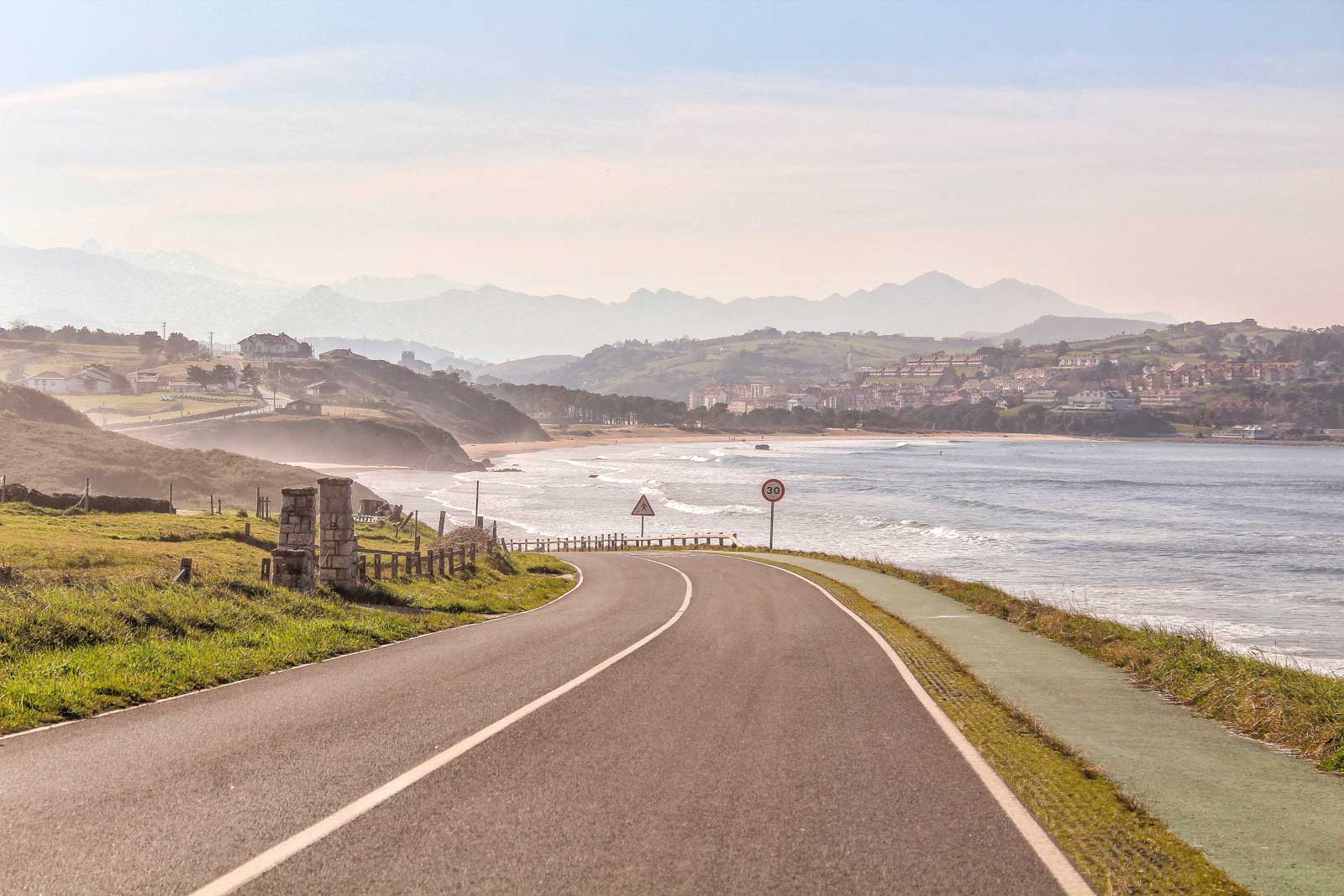
So you won’t find many tour buses there with tourists standing in line to take photos of a certain landmark. You also won’t find crazy wild nightlife or completely stuffed beaches as in the southern regions of Spain.
Tourists do not come to party here at night and bake under the sun during the day. Northern Spain attracts travelers who appreciate slow pace travel and road trips, and who love nature in its pristine form, quiet beaches, and medieval villages.
How to Travel Around Northern Spain
We traveled by rental car that we hired in Madrid in January and I believe this is the best way to see the north of Spain as the whole country in general. In our experience, the best company to rent a car in Spain is RecordGo and Centauro .
They are very easy-going in terms of a drop-off (especially if you don’t buy insurance) and pretty much always have the lowest prices. It is possible to find a car for hire with them in multiple cities in northern Spain, but a bigger fleet and better prices are in Bilbao. You can browse all available options and prices here .
North Spain Weather & Best Time to Visit – Quick Overview
Contrary to the popular belief that north Spain is always wet and cold, in reality, its climate is ideal for visiting the area in any season of the year including winter. It just depends on what you are looking to do on a trip.
While winters in the north may not be as warm as those in the south , storms and strong winds do not constantly ravage the region day and night.
The oceanic climate, which extends from the coast of Galicia to the Pyrenees, is mild in winter and relatively warm in summer. Although the temperature does not vary much from season to season as in southern Spain.
Summers are rather cool with an average temperature of 22°C. But over the last few years San Sebastián, Santander, A Coruna and even Vigo saw 30°C in July and August which is warm enough for swimming in the Bay of Biscay.
Spring and fall have similar temperatures, always around 20°C, so this may be the best season for excursions, visits to national parks and farms, hiking and city tours.
Rainfall and strong winds are frequent on the coast, especially in winter, but this does not prevent you from visiting this area, as the average annual temperature is around 15°C. Just don’t forget to pack an umbrella if traveling to this part of Spain from December to February .
Overall, all seasons in northern regions of Spain offer a wide variety of activities, so it just all depends on what you want to do – either to be able to hit wide beaches, rest quietly in the natural landscapes, visit food festival in San Sebastian or go skiing. You choose what to do and north Spain has a perfect season for that!
Best Places to Visit in Northern Spain
Below you’ll find a list of the best cities in northern Spain and must-sees that include some hidden gems , natural wonders, and interesting museums. I include a map of the northern Spain coast with all the places to make it easier to understand the location of each of them.
Map of Northern Spain Holiday Destinations
The Best Cities in Northern Spain
There are so many beautiful cities and smaller towns to visit in this part of the country. It gets challenging to describe them all in only one post. So for the beginning, I would love to start with the cities to give a better idea of where to go in northern Spain.
And if you’d love more inspiration, then don’t miss my other post about the most beautiful coastal towns and villages from Basque country to the Galicia region!
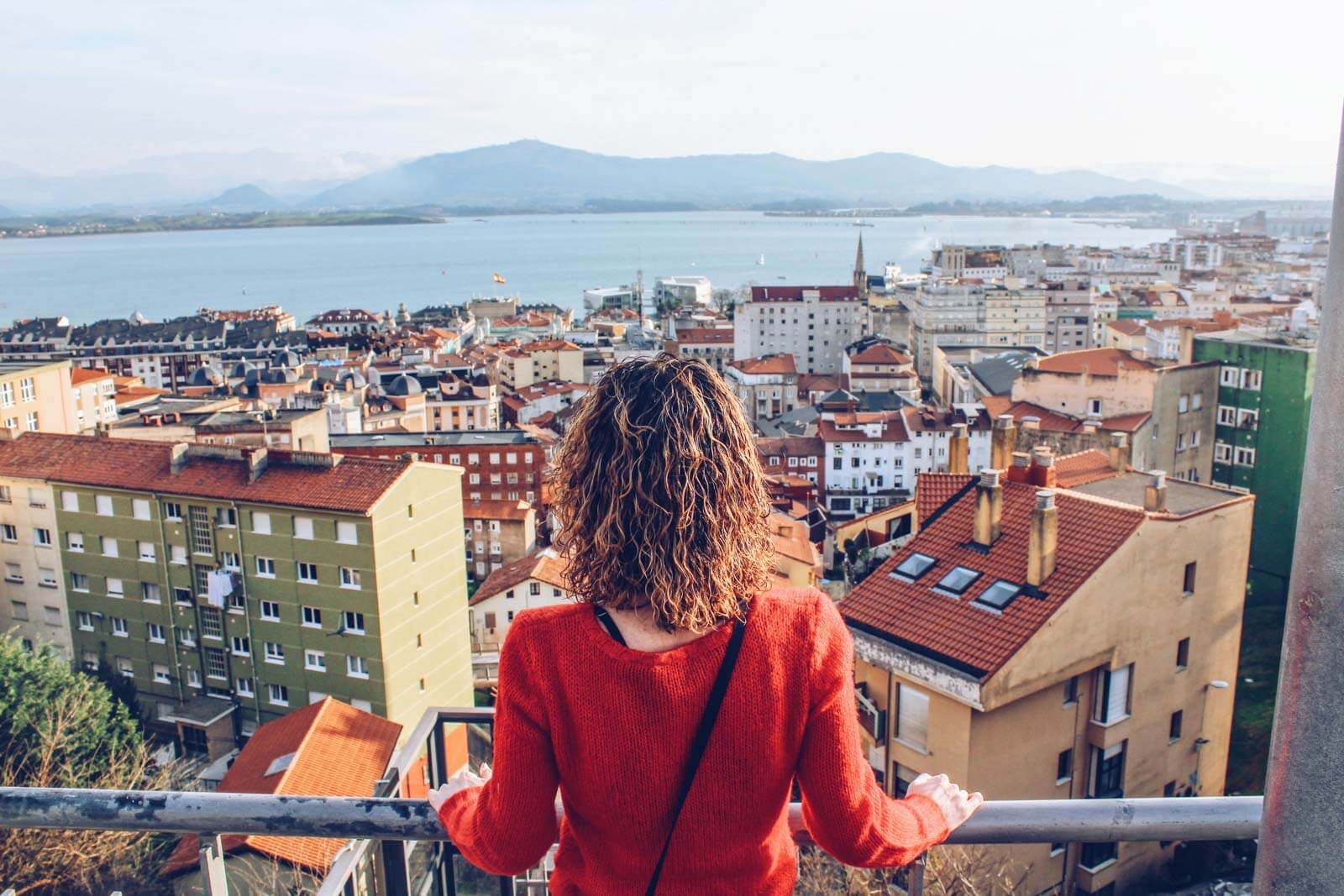
Oh Santander, my love. I am going to praise this city so much because it became a temporary home. Or perchance it is really worth the hype.
Santander is a port city with incredibly beautiful beaches that can be a real attraction on their own.
The ancient white-marble buildings on the streets are interspersed with modern new buildings. And historic palaces rise among areas with urban landscapes.
Modern Santander with a population of only 180,000 people is a large port in Spain with a well-developed infrastructure. Since the beginning of the XX century, due to the fact that the royal family began to come here on vacation, this city has become a fairly fashionable resort.
These days it is not too popular because many tourists don’t know how beautiful nature here is, how clean beaches are, and how many interesting sights are around.
The wide-spread golden sandy beach of El Sardinero is one of the most beautiful beaches in northern Spain. The nearby Piquio gardens compliment the fabulous view of this area.
Visit Santander for ancient architecture, interesting museums, amazing views of the city from above, and some of the best ice cream.
If you’ll have a few days in Santander, I highly recommend visiting Cabarceno Natural Park . This is a unique park with almost 150 species of animals from the five continents that live in a semi-freedom there.
When booking accommodation and thinking about where to stay in Santander, look into the area surrounding hotel Santemar . It is a very lovely quiet area with dramatic views.
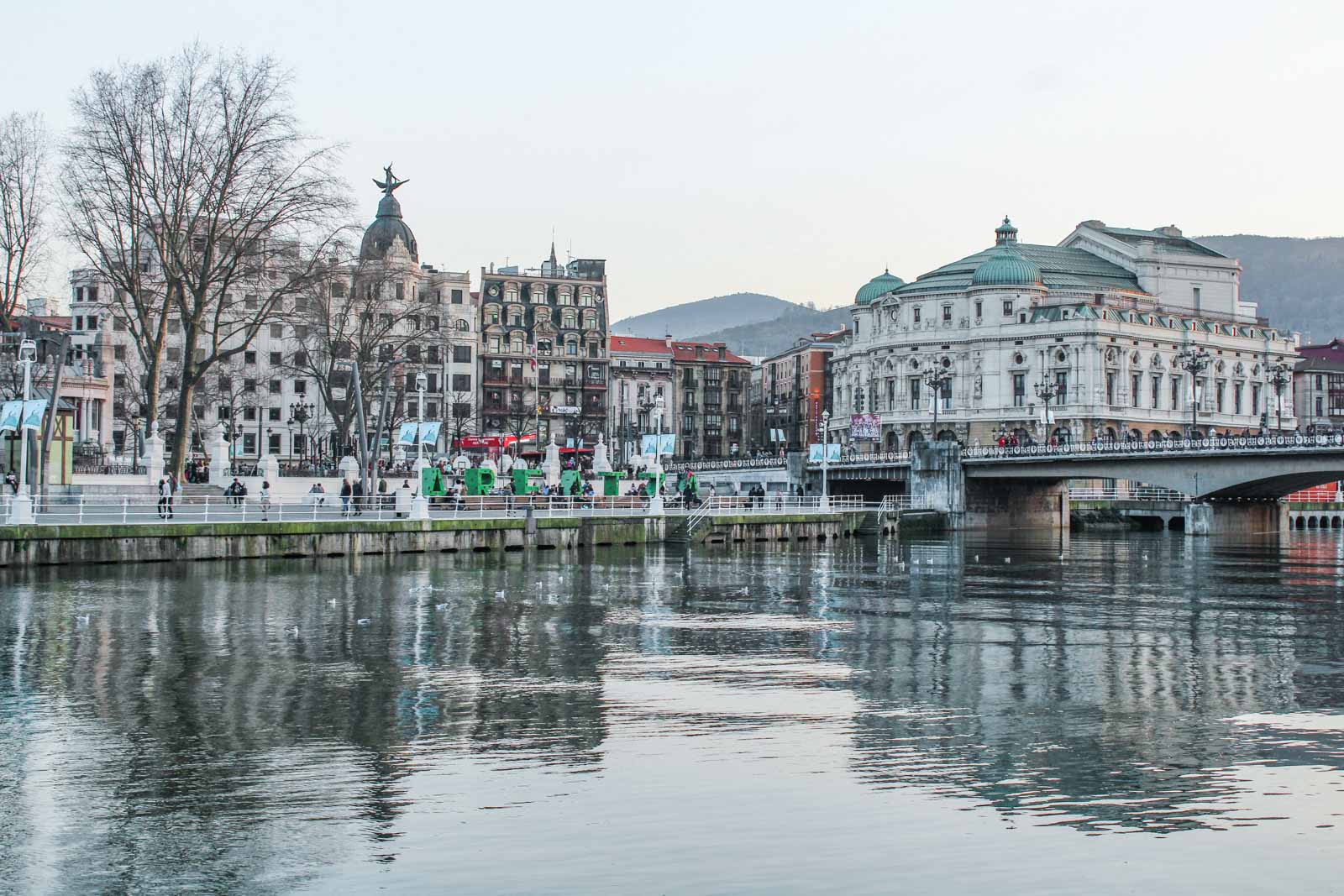
The largest city in the Basque Country Bilbao is literally a treasury of world modern culture. Combined with pleasant green surroundings and nearby beaches, it is a perfect city for long visits.
It got famous for its port industry and fishing. However, over time, the city became a center of modern art and architecture. With all the museums, innovative cuisine, and avant-garde architecture Bilbao can’t leave anyone indifferent. It is filled with beautiful old churches, gardens, bars, and the atmosphere of the old city.
Another thing, Bilbao is definitely for art lovers. Famous Guggenheim Museum , which presents contemporary art to the audience, elements of historical architecture tell an interesting story.
There is a subway in the city that reduces traffic jams and makes the city even more comfortable.
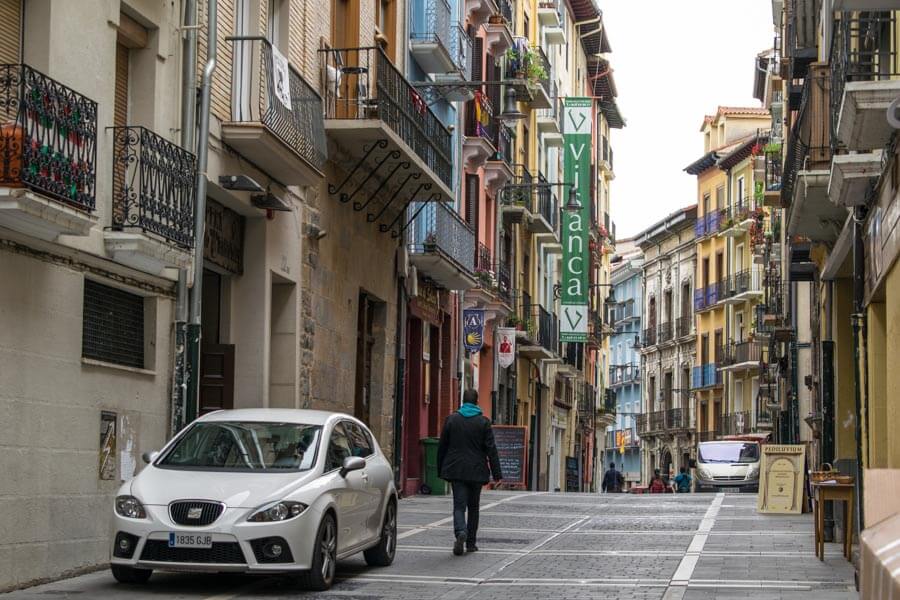
Pamplona is a city with a rich history, which was once the capital of the Kingdom of Navarre.
Today, a lot of people know it for the festival of San Fermin when fearless souls tend to get ahead of the herd of bulls running through the city streets (crazy!)
If you are looking to see this type of show with your own eyes then come to visit in July. The festival lasts for 6 days. Just make sure to rent accommodation in advance and check it faces the street where bulls run. Another popular activity that attracts tourists here is bullfighting.
Also, Pamplona is the first city on the Spanish Pilgrim Road. Here you can see many parks, historical monuments, and other fascinating sights.
San Sebastian
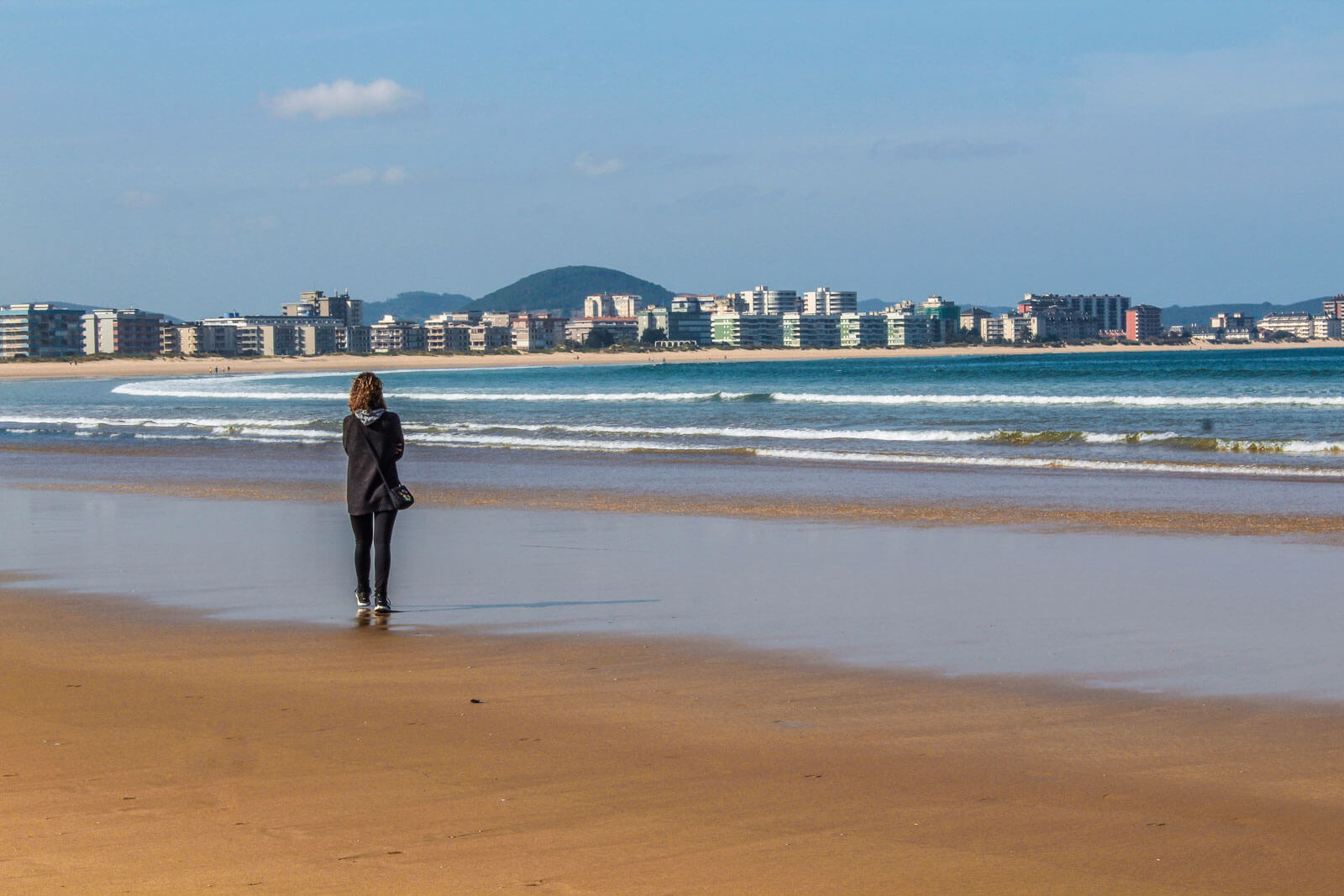
Many times San Sebastián was recognized as the most beautiful city in Spain. With its layout and architecture, in some way it resembles Paris. At the same time though, it is quite simple in style, with 5-6 story buildings that look alike. Most of the local buildings belong to the XIX century since in 1813 the city was completely destroyed by the British and Portuguese. It is always very pleasant to go for a stroll and get lost on its pretty streets.
The aristocratic and comfortable San Sebastian has everything you need for a good vacation. It captivates with a developed infrastructure, magnificent beaches, high waves for surfing, interesting sights, one of the best centers of thalassotherapy in La Perla , and very tasty food.
By the way, it is also famous for its huge number of pubs and bars, each of which has its own unique vibe. Thus, for the best experience, try to go on a food tour. Especially popular are pintxo and wine tours.
Speaking of the beaches. Three of the most picturesque beaches La Concha , Ondarreta , and Zurriola make San Sebastián a popular resort city. With easily accessible mountains nearby the coast looks even grander.
Despite the fact that San Sebastian is a small city, a significant international film festival takes place here every year. In July the city hosts a jazz festival and a few other festivals take place throughout the year too.
If you try to stay away from crowds on your travels, it is better to avoid visiting during the festival time.
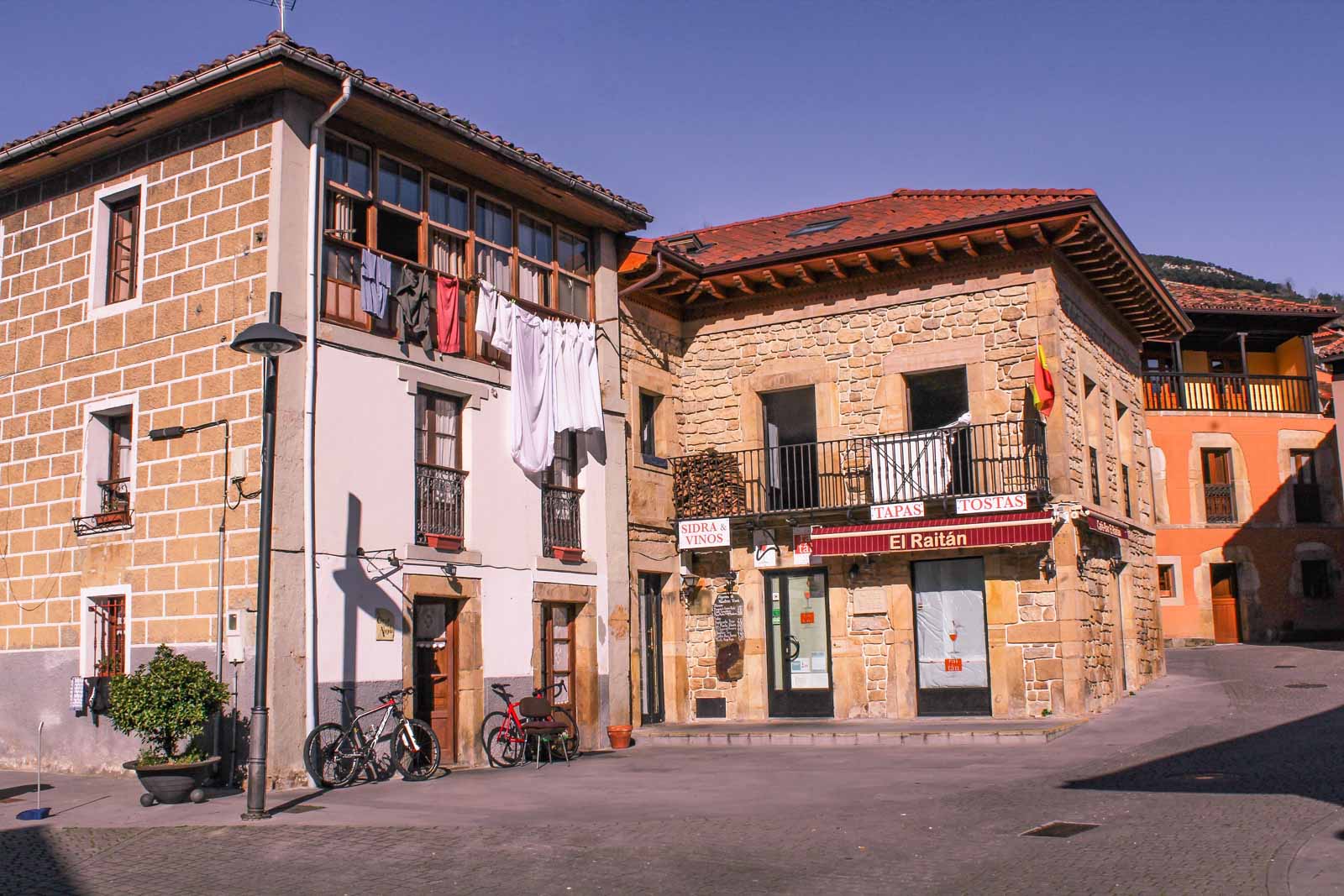
Oviedo is the capital of the province of Asturias. People from all over Spain know this city well enough due to its religious traditions and many religious monuments.
Pilgrim Road to Santiago goes through Oviedo. Here, truly ancient churches that date back to the eighth century still operate to this date, including the Cathedral of San Salvador and the well-preserved Basilica of San Julian de Los Prados .
Another attraction that you should definitely see is La Foncalada fountain of the 9th century. It represents the Romanesque style and has survived to our days.
Undoubtedly, Oviedo is one of the best cities to visit in Spain. It takes some time to walk through it and visit attractions (and eat local tapas of course,) so I advise you to try to come for at least a day.
Santiago de Compostela
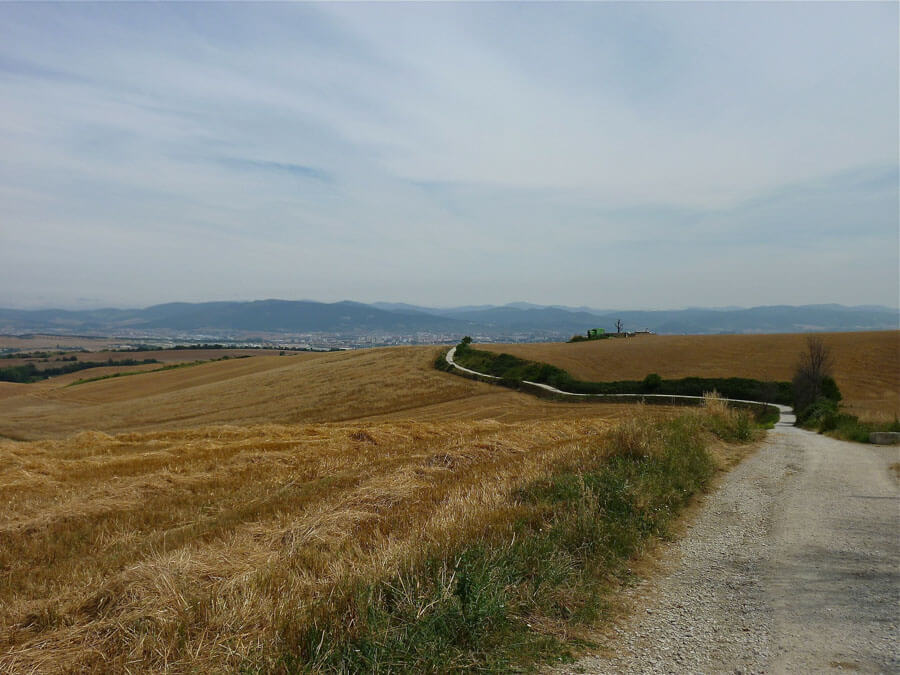
Santiago de Compostela is a small but very interesting city in the northwest of Spain which is the capital of the Galicia region.
First of all, the world knows it as the final point of a long pilgrimage route for many Christians. The route begins in France but ends here. This place is extremely important since one of the apostles of Jesus Christ Saint James is buried there.
In the Middle Ages, Santiago de Compostela in its significance for the Christian world was equal to Jerusalem and Rome.
Today, it is famous for the historical center and a combination of ancient streets and architectural styles with Romanesque, Gothic, and Baroque churches. In the center of the city, a magnificent cathedral is one of the most outstanding masterpieces of sacred architecture in Spain.
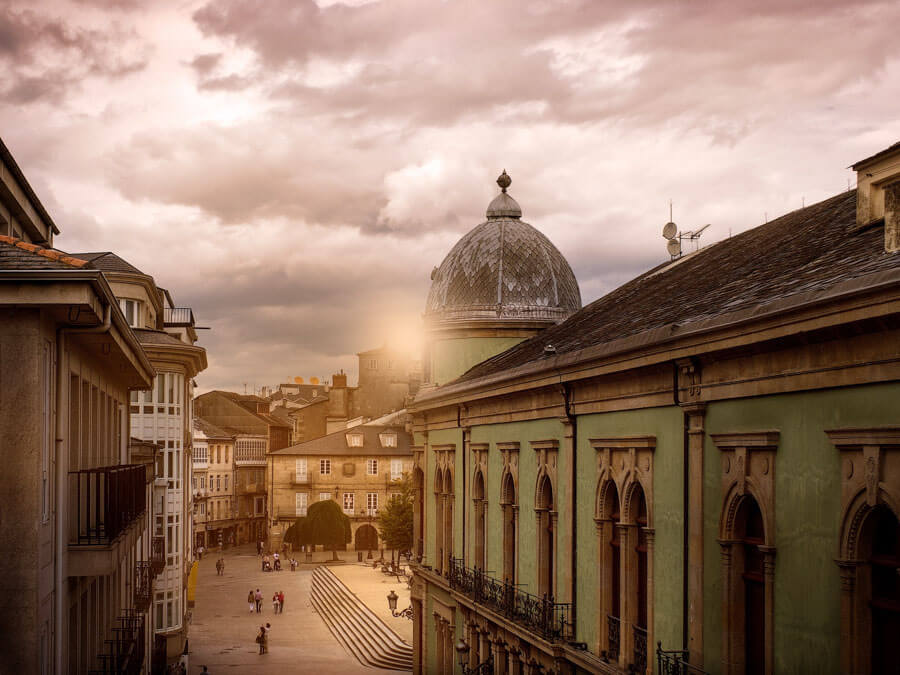
Lugo is one of the oldest cities in the Galicia region that became famous throughout the world for the city wall of the ancient Roman era, erected in the late III – early IV centuries BC. This is the oldest of the defensive walls in Spain. Its length is more than 2 km and width 6 meters. You can walk along the high ridge of this wall, admiring the views of the city.
This ancient city on all sides is surrounded by magnificent landscapes, pine, and eucalyptus forests. The air here is always so fresh and clean.
The old part of Lugo preserved many monuments of architecture of different times.
The two main points in the city are Plaza Santa Domingo and Plaza de Espana. On the second square is a governmental building dating back to 1740 with an interesting Baroque-style facade and clock tower of the 19th century.
Among the architectural sites, it is worth noting the monastery of St. Domingo of the XVIII century (which houses a museum), the Cathedral of Lugo (1129), and the Church of St. Pedro .
In addition to architectural monuments, the center is famous for local bars and taverns on narrow, winding streets. This city in northern Spain offers an excellent selection of traditional tapas with a glass of wine or beer.
Also, Lugo is an excellent place to enjoy traditional Galician cuisine. This is one of those destinations in the Galicia region where, along with traditional seafood and fish, meat dishes are also popular. And many restaurants offer great local wines.
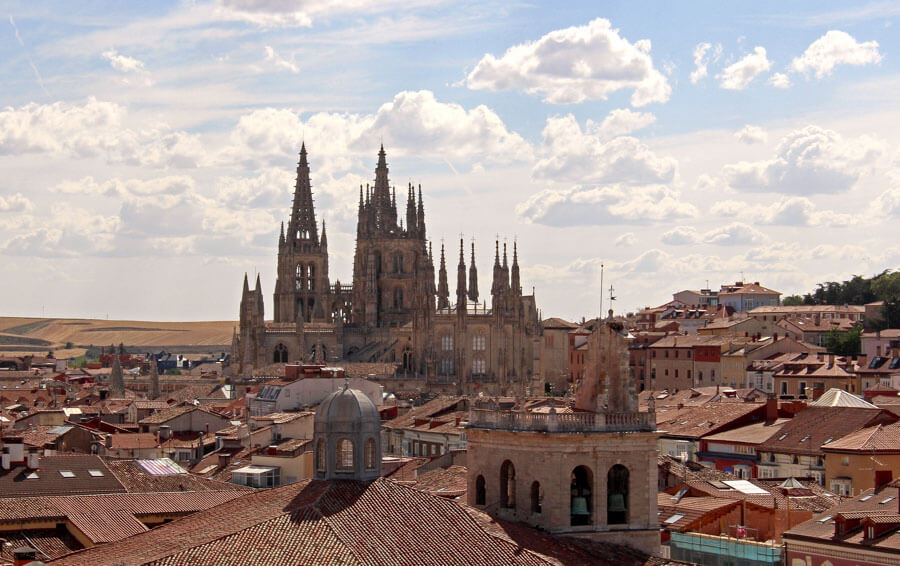
Burgos is one of the newer beautiful cities in Spain , built in 884. It’s great to visit it on a road trip from Madrid to Bilbao or on a day trip from Santander or Bilbao. This city is considered to be the capital of Castilian Gothic, and the local Burgos Cathedral was among the first on the UNESCO World Heritage List.
The center has this unique charm of Spanish antiquity. A beautiful Plaza Mayor , narrow streets, palaces, and temples fascinate every guest to the city. A medieval fortress Casa del Cordon with underground tunnels is connected to the cathedral with a picturesque promenade.
The modern and many-faced Burgos can offer its guests everything that you may think of – delicious food and wine, the medieval atmosphere, many parks and boulevards full of greenery, shops for every taste, nightlife, and even a beach on the Arlanzon River.
To fully enjoy Burgos and get a feel of its strict Castilian character, a few hours of time is not enough. You’d need at least a full day to see everything and relish the lively atmosphere.
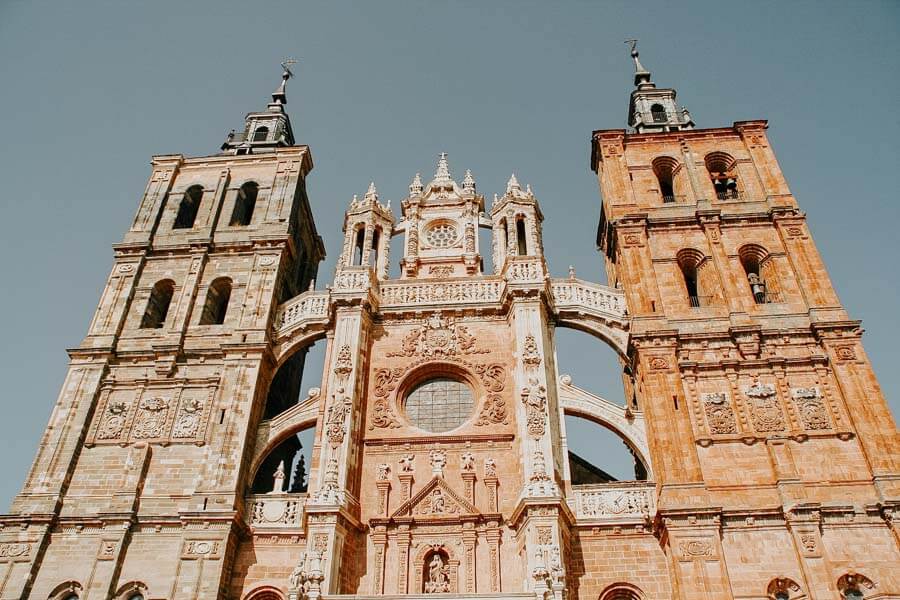
Astorga, in the province of Leon, is one of the important cities in northern Spain with a two-thousand-year history. There are countless sights here telling about the great historical past.
Besides them, there are no less impressive villages scattered around the city. All of them have ancient stone houses and a unique feel. It is worth exploring them if you are visiting the region for a longer period of time.
During the Roman Empire, the city was considered the largest center of Christianity in western Spain. The modern bishop’s palace here is the work of Antonio Gaudi. And, until this day the pilgrimage route, Camino de Santiago is passing through Astorga too.
In the city, you’ll find the ancient Roman walls with the ruins of therms, aqueducts, and Roman Forum. Astorga Cathedral is magnificent, combining Gothic, Renaissance, and Baroque styles. A fabulously beautiful symbol of the city, the Bishop’s Palace has the spirit of a medieval French castle.
Astorga is often called the “Red City” since most of the buildings are built with local bright red bricks.
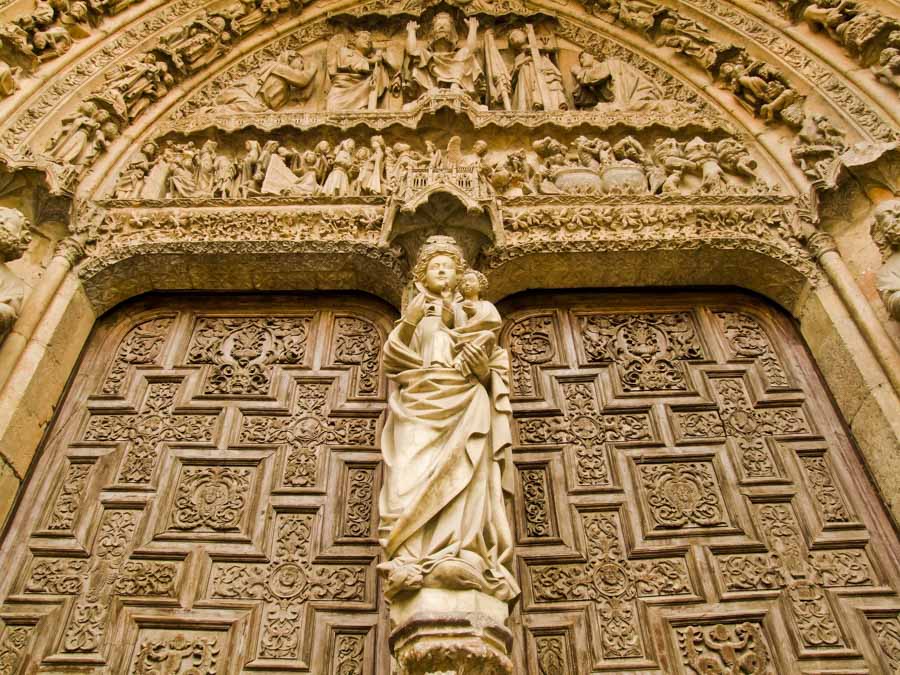
The city of Leon is the cradle of democracy and an important pilgrimage point on the way to Santiago de Compostela. Nowadays, it is a place with a rich history, many attractions, and the opportunity to get a good university education.
Leon was founded on the site of an ancient Roman military camp. However, there is not much left of the ancient era, only the ruins of Roman structures in the dungeon under the Leon Cathedral.
This city is small and not many tourists visit even though the old center has several gems of architecture.
The historical part brings travelers to the atmosphere of the Middle Ages. The main attraction here is the Cathedral, a huge early Gothic church of Santa Maria de Leon . Also, Leon is home to another magnificent work of Antonio Gaudi – Botines House , built in a medieval spirit with elements of Art Nouveau style.
The most striking masterpiece of contemporary architecture is the Museum of Modern Art, MUSAC . This building with a futuristic multi-colored facade has become a unique art object that brought Leon international fame.
Other Must-See Places in Northern Spain
Bardenas reales natural park – for martian landscapes & nature .
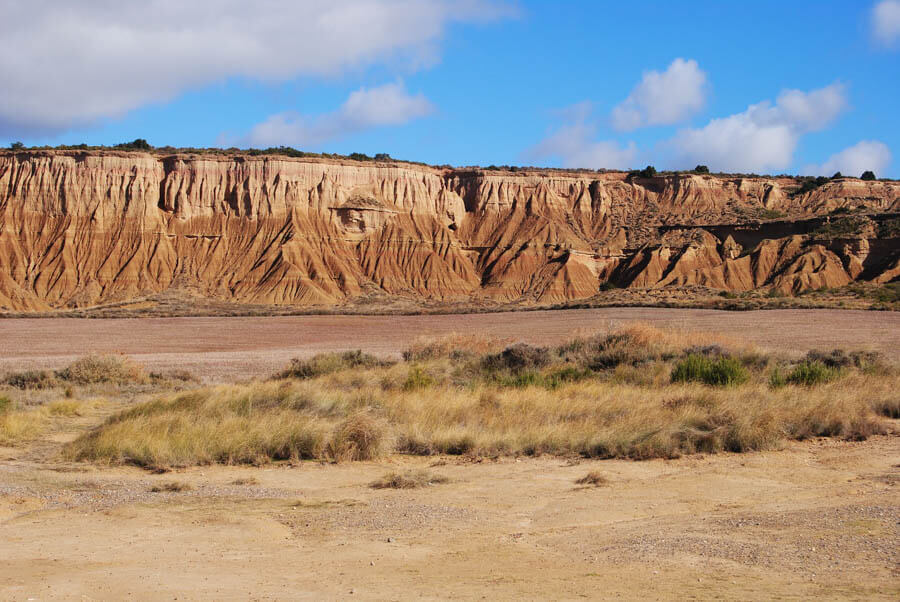
One of the top places to visit in northern Spain is Bardenas Reales Nature Park . This place is so incredibly unique with its lunar and Martian landscapes that you may wonder if you are still on the planet Earth. In fact, the scenery in the park is somewhat reminiscent of American Arizona.
Many videos, films, and even the Game of Thrones series were filmed here.
The Bardenas Reales Nature Park and Biosphere Reserve is a huge semi-desert area in the southeast of the Navarra Kingdom. You can move around the park by car, by bicycle or on foot. Due to many cars and rather narrow roads, going on foot may be the best option.
There are several entrances to the park but the main one is on the N-134 highway, which connects the towns of Tudela and Arguedas. By the way, if you have time, I advise you to visit Tudela – a small town founded by Muslims in 802.
At the entrance to the park (at 15 km N-134) there will be an information and tourist center. There, you can get a map and information about the park, its history, flora, and fauna. Entrance to the park is free, opens at 8 am, and closes an hour before sunset . A leisurely road trip in the park will take at least a few hours but you can spend the entire day there.
Feel free to park your car in designated areas and explore this amazing park on foot. The most interesting thing for some people is that on the territory of this biosphere reserve there is an active military training ground.
Thus expect to see restrictive signs everywhere, military attributes, and landscapes dotted with scars from training bombings. But honestly, it only adds up to the atmosphere.
Urdaibai Nature Reserve – For Cave Paintings & Coastal cities
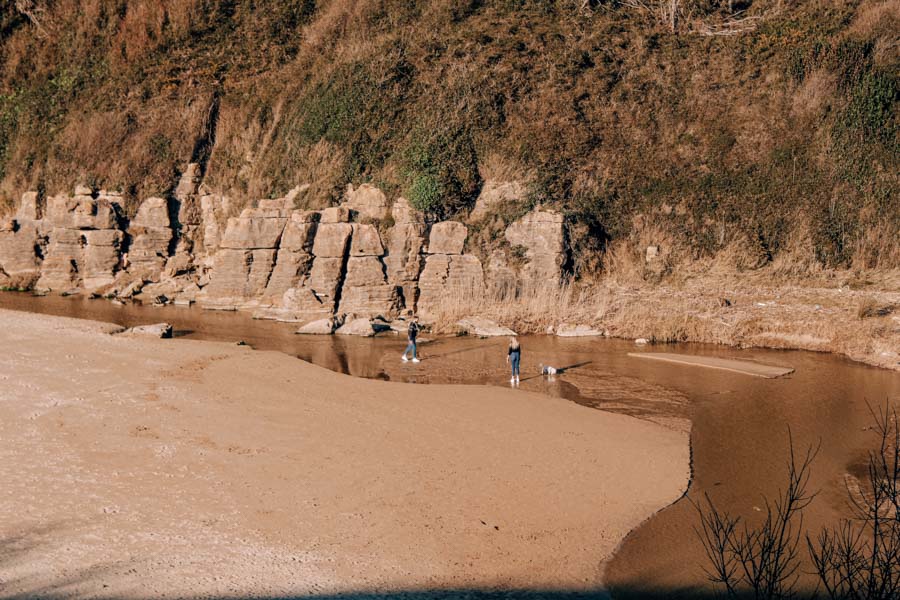
Urdaibai Nature Reserve is another unique place in northern Spain that don’t many international travelers know about. It is a wetland habitat that comprises the Cantabrian oak forest, marshland, cliffs, and beaches.
Among many interesting things to do in this nature reserve, the Oma forest with painted trees and Santimamine Cave are the most famous. Oma forest has a somewhat magical atmosphere (Spanish fairytales insist this forest is hiding witches and elves) and Santimamine Cave offers free excursions on Thursdays.
On the territory of the biosphere reserve Urdaibai, there are also many coastal towns where you can spend a day or two on the cozy beaches.
We visited quite a few of them but the most favorite became the town of Bermeo, Mundaka, and Sukarrieta . It’s simply because there we could rent a mini boat, visit the botanical park, go on a few short hikes and enjoy beautiful views of the bay.
WHERE TO STAY IN URDAIBAI NATURE RESERVE: Urdaibai is easily accessible on a day trip from Bilbao, Santander, or San Sebastian. Yet, if you get a chance, it’s better to stay in this nature reserve instead of a city. Views, fresh air, and serenity help to completely distract and unplug.
We loved Casa Rural Ozollo for clean rooms, budget-friendly prices, and the most magical view over the delta. But there are many more guest houses in other towns along the river, see them all here .
Guernica – Museum of the World and Ceramic Reproduction of Picasso
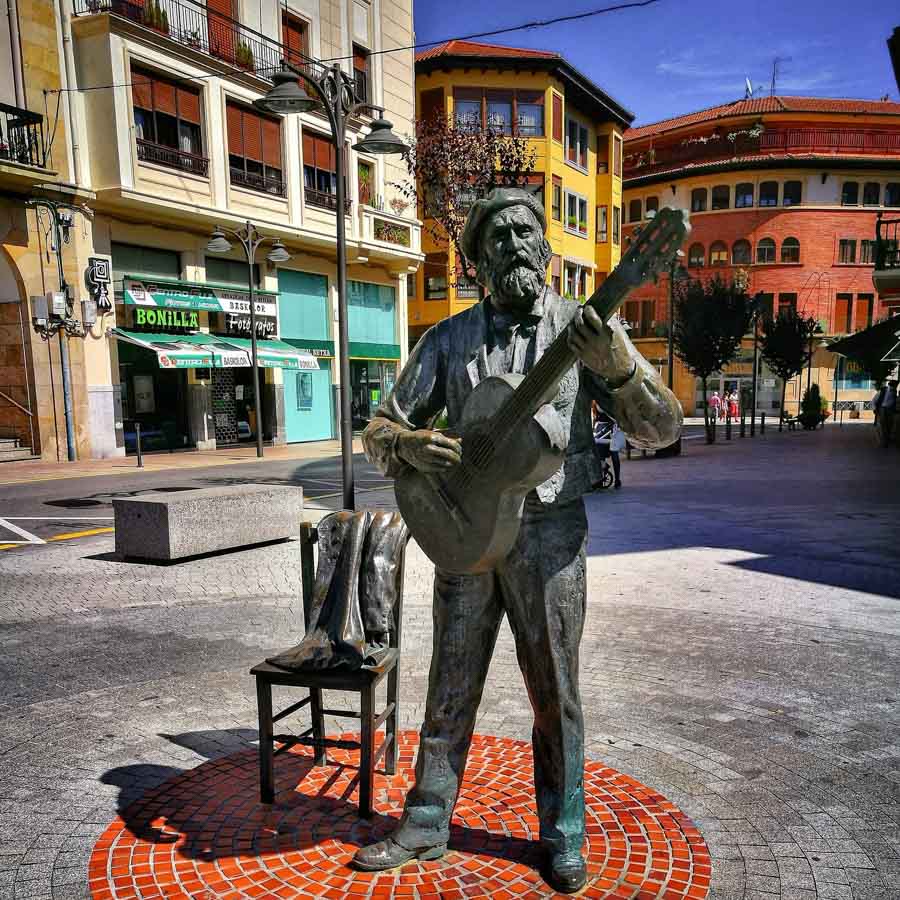
In the same Urdaibai nature reserve that I mention above is an interesting town Guernica. One of the best-known Pablo Picasso paintings, bearing the name of this city, is undoubtedly more famous than the town itself. Simply because most people don’t know what it has to offer.
A small town Guernica in Basque Country has fantastic museums.
So the main museum here is the Peace Museum (Foru Plaza, 1). In addition to it, there is also the regional museum Euskal Herria Museoa (Allende Salazar Kalea, 5) which tells in an interactive form about the Basque Country, the Basque people, its traditions, and culture.
Next to it is a European park where you can relax and enjoy the entertaining sculptural compositions by Eduardo Chillida and Henry Moore.
On Pedro de Elejalde street, there is a ceramic reproduction of the famous Picasso painting.
To effectively and quickly explore Guernica, I advise you to head straight to the tourist office (Artekalea, 8). There, you can get a map of the city with the main attractions. By the way, in addition to the museums mentioned above, the Guernica tree (a symbol of Basque autonomy) and bomb shelters scattered in different parts of town are also worth seeing.
Gaztelugatxe
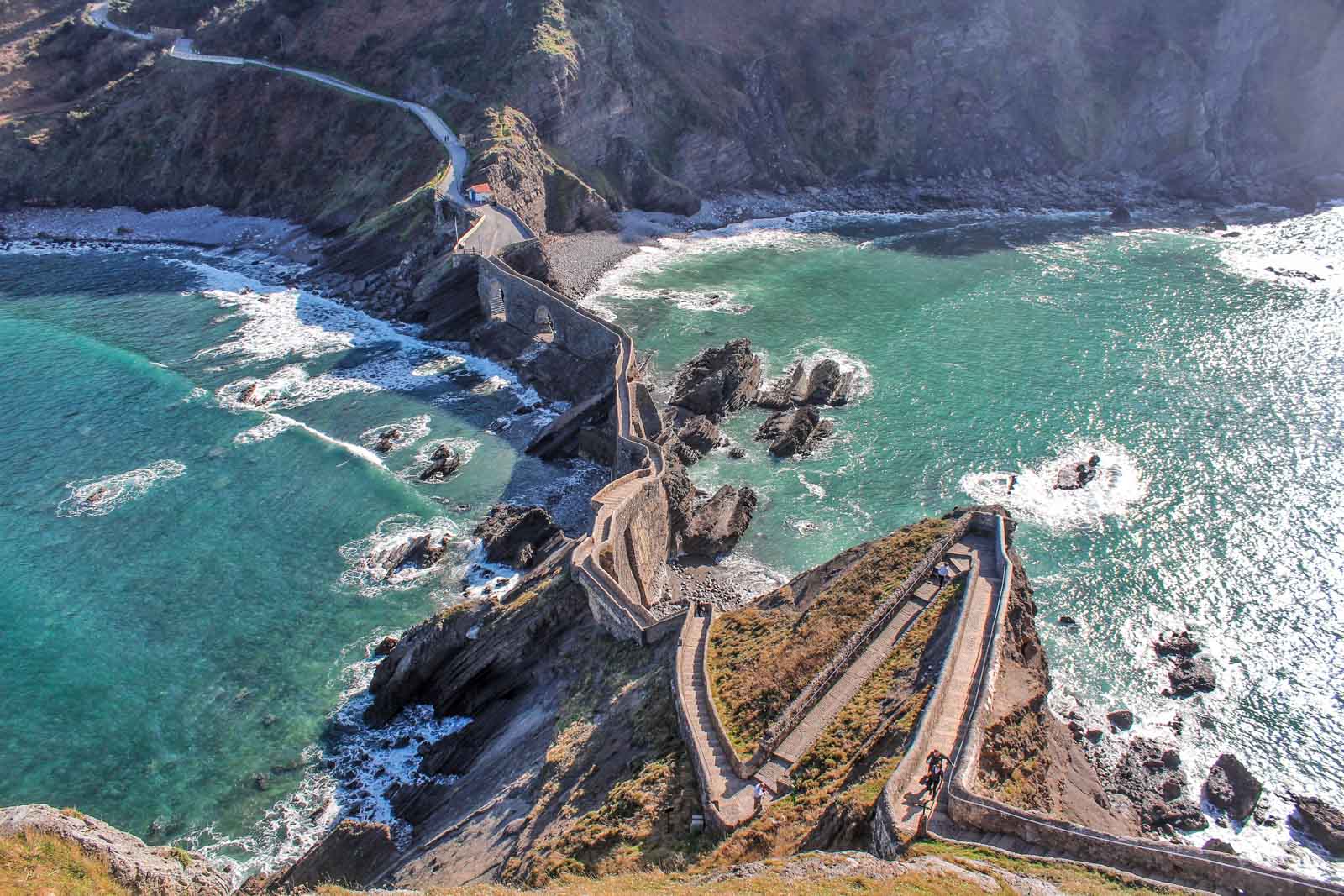
One of the best things to do in northern Spain is to visit Gaztelugatxe, a small peninsula in the Bay of Biscay which resembles a castle. Its name literally translates as Castle in the Rock. If you have been watching the Game of Thrones show, you may recognize this landmark. The location appears in the scenes of this show.
There is a pedestrian bridge that goes through the peninsula all the way to the top of the rock where a small but very beautiful chapel is.
The highest point is at an altitude of 231 meters above sea level. And the views from anywhere around the castle as well as from the top of the rock are breathtaking.
The best way to visit Gaztelugatxe is by car or on a tour. Game of Thrones fans will love this half or full-day guided tour from Bilbao since it discovers the most spectacular filming locations from Season 7.
Picos de Europa
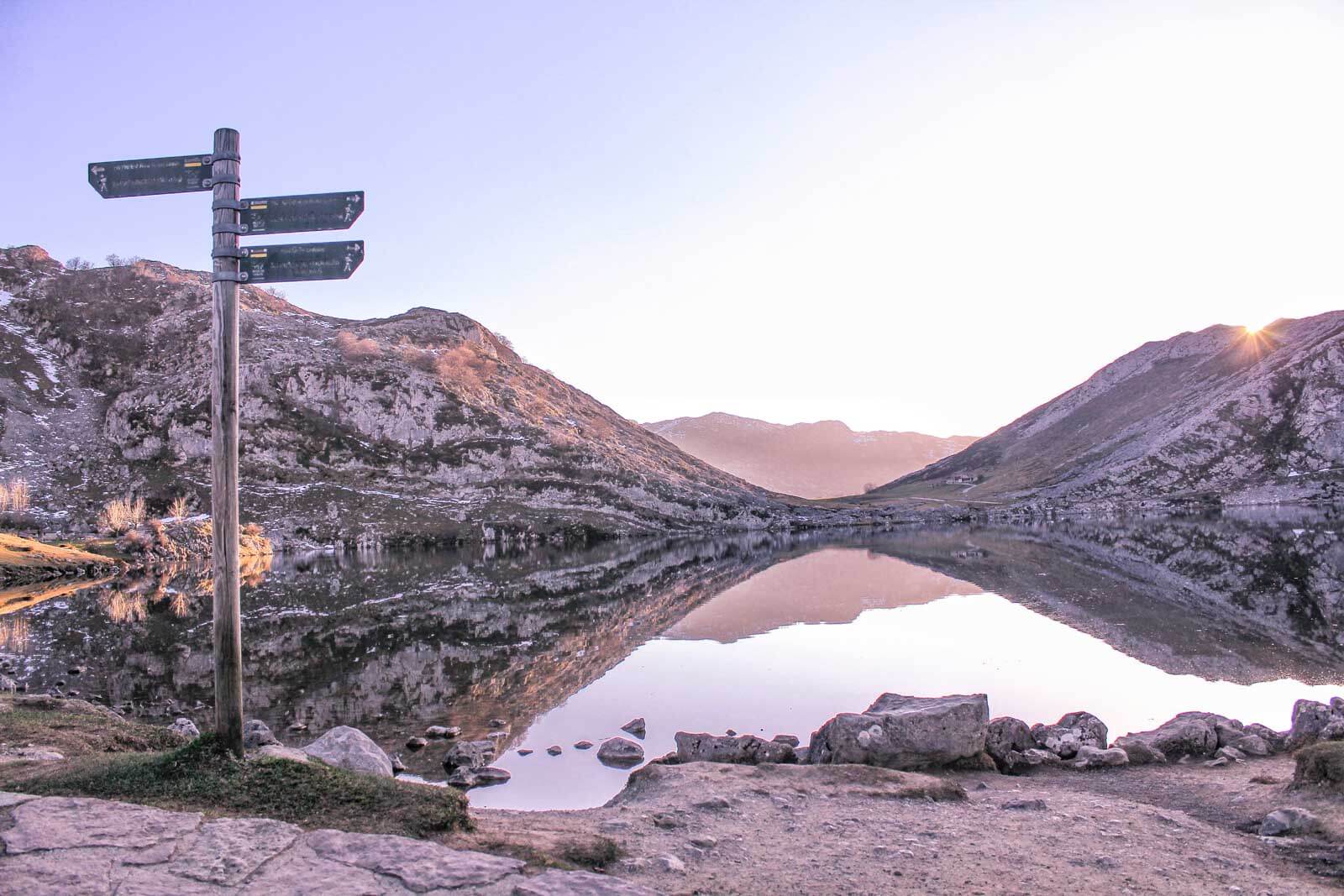
Picos de Europa is the first park in Spain to receive national status. This is one of the two most famous sights of the north of the country along with Santiago de Compostela.
To get the most out of your visit, you’d need to spend at least 3 days in the park. We went there a few times on our day trips from Santander but still didn’t cover everything we planned.
Besides multiple hiking opportunities and road-tripping, you can also travel around the park by canoe, mountain bike, and even snowshoeing. A variety of excursion programs include cable descents into ravines, rock climbing, paintball games, horseback riding, and many other types of adventures.
If booking a tour, choose the one which also includes a visit to the caves and mountainous villages, like this private 11-hour long tour .
If the hiking type of recreation is not your thing, you can also use the cable car to the top of the mountain on 1800 meters above sea level. Observation decks provide a unique opportunity to view all the greatness of a mountain valley. High in the mountains, the snow stays on the ground up to six months.
Entrance to the park is free, you’ll need to pay only for parking (€3 per car per day).
In the high season (from June 1 to October 6), cars are allowed only until 08:30 in the morning or after 21:00. If you are late and don’t enter the park before 8:30, then leave your car at the transshipment parking lot (there are four in total) and take a bus from there (a ticket costs around €10 round-trip).
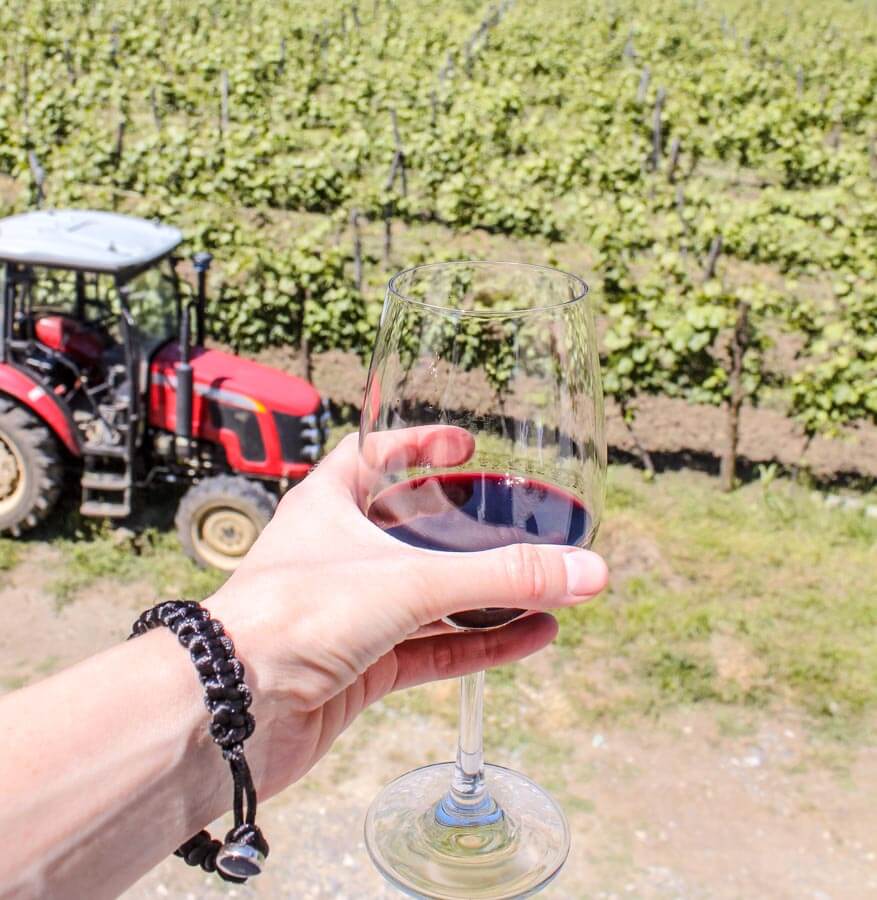
Travelers who appreciate good wine and are on their way from Zaragoza to San Sebastian (or back) absolutely must visit the Rioja wine region and add it to their northern Spain itinerary. It is home to more than 500 wineries.
The unique climate helps to make the wine very tasty and unique. Some wineries offer their visitors a trip around the vineyards in special carts and shuttles. While others run masterclasses that introduce visitors to the art of winemaking.
With so many vineyards that dot the hills of north Spain, vintners improved the art of creating world-famous wines. The main wine areas to visit are Rio Badia, Rio Alta, and Rio Alavesa. If you don’t have a car and plan to visit San Sebastian, look into an organized tour that includes wine tastings in San Sebastian and visits to a few wineries .
Rioja is one of the best winemaking areas in the world. Definitely add it to your north Spain holiday.
Santillana Del Mar
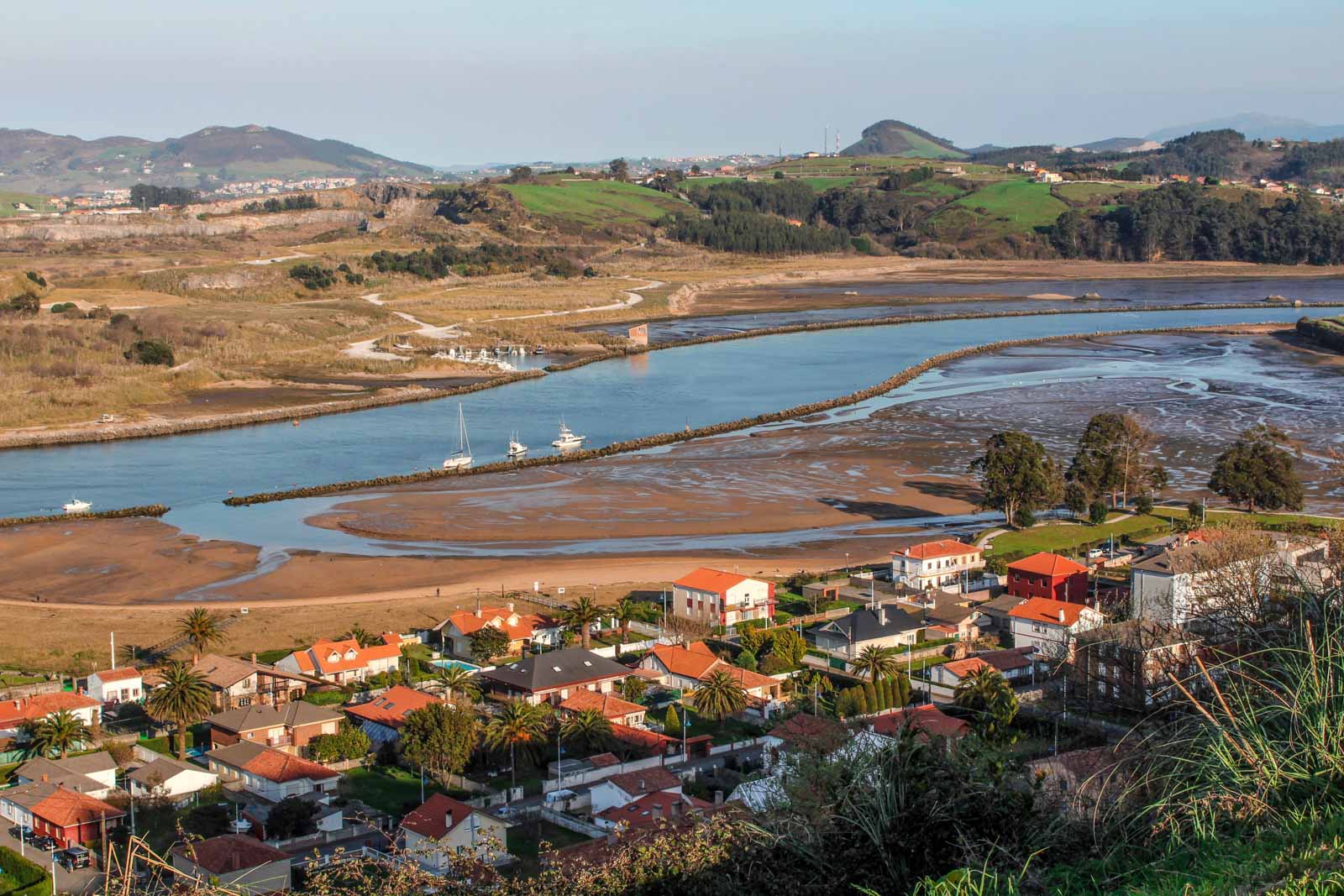
Santillana Del Mar for many years was on many lists of the most beautiful small towns in Spain. Set amidst green hills, just 4 km from the ocean, this village inspires artists, poets, philosophers, and writers.
The historical buildings, starting from the Collegiate of the 11th century and ending with residential buildings of the 14th and 17th centuries, impress with their charm and grandiosity.
In the 17th century, the rulers of Santillana del Mar decided that the city was good enough and didn’t need any other construction. Since then, the authorities have stuck to the same point of view and didn’t change anything.
So if you want to plunge into a medieval fairy tale with narrow cobblestone streets and try fresh local cheeses, Santillana del Mar is a good pick.
In addition to the charming architecture and atmosphere of the town, in the vicinity of Santillana Del Mar, be sure to check out the famous Cave of Altamira , a cave complex with charcoal drawings of Paleolithic art. The historic center of the town and the Cave of Altamira are included in the UNESCO World Heritage List.
When visiting Santillana del Mar, don’t forget to take comfortable shoes. This beautiful medieval village offers lots of walking.
These caves are famous for their prehistoric paintings, and the name of the city comes from the name of Saint Julian.
Overall, various Renaissance palaces and churches make this cute little village an important historical area in Cantabria province.
More Posts About Travel in Spain
Traveling to southern Spain any time soon as well? Check out my posts in that area!
- Weekend in Malaga – how to see all main highlights if you have only 2 days
- Car hire in Malaga Airport vs City Center – where is better
- Places to Visit in Andalusia by car – ideas for a road trip in southern Spain
- Barcelona to Andorra drive – unique road trip you didn’t know about
More Similar Posts Around Europe
- Most Beautiful Places in Northern Norway – together with a few travel tips
- Best Things to Do in Turkey – for a bucket list experience
- Beautiful Places to Visit in Northern Tenerife – travel tips & things to do
I hope you will enjoy the Northern coast of Spain even more than we did! If you have anything to add or ask, drop me a comment below!
And, don’t forget to share this post on Pinterest!
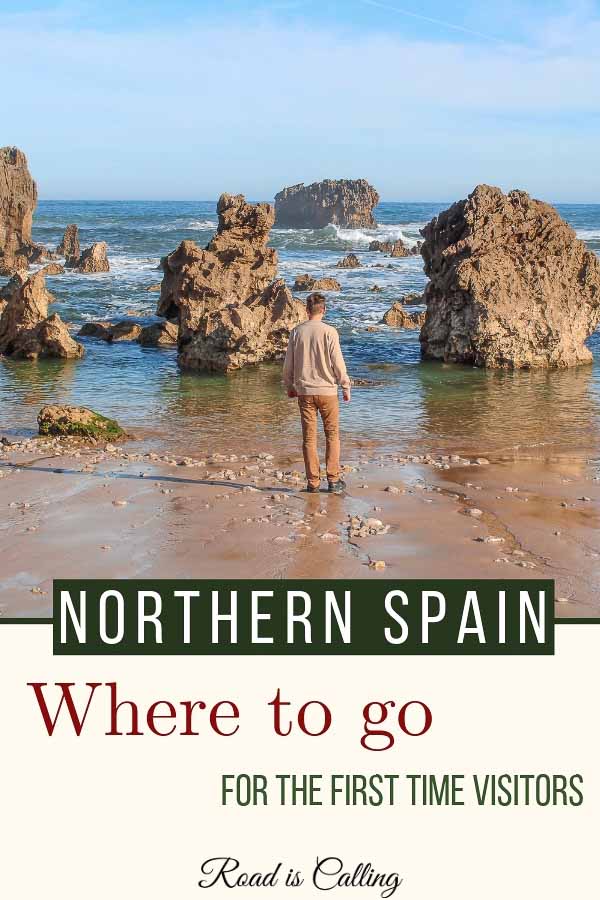
Anya is originally from Ukraine but in heart she is a citizen of the world. She is working online and that’s why has an opportunity to travel a lot and live in different countries. At present time, she is based in Spain while waiting for the war in Ukraine to be over to be able to return home. On this blog, her main goal is to inspire others to travel to under-the-radar places and discover the world while working remotely.
Similar Posts
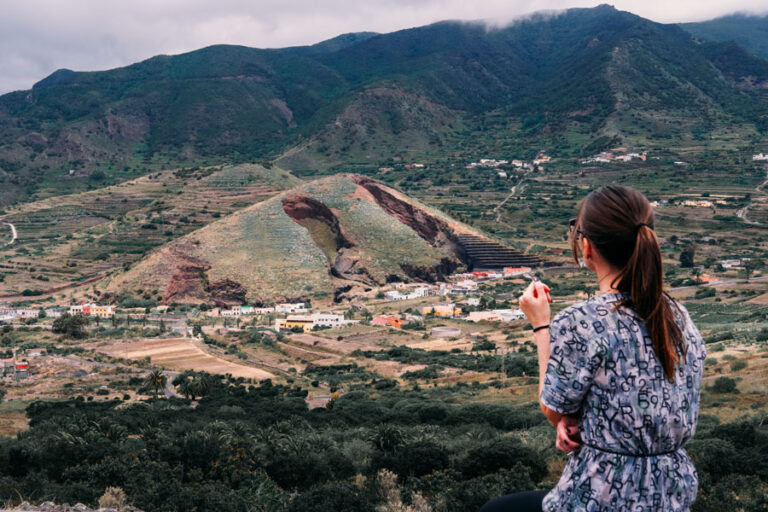
12 Beautiful Places With Best Views in Tenerife North
One of my favorite things to do in northern Tenerife is to jump in a car and drive to a place with a beautiful panorama. There is no shortage of the best views in…
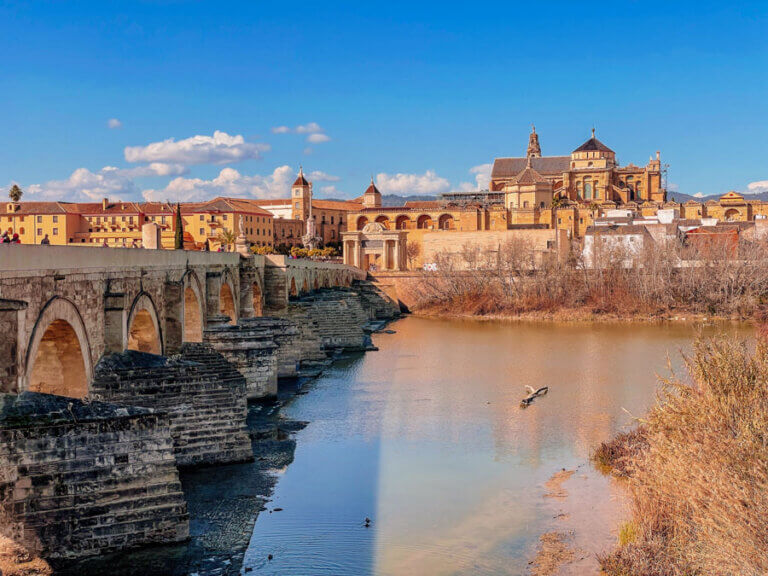
6 Memorable Experiences to Have During Your Cordoba Visit
When I was planning my first Cordoba visit, I tried to find answers to two simple questions: “Why visiting Cordoba was important at all? And why this Andalusian city was that special?” All sources…
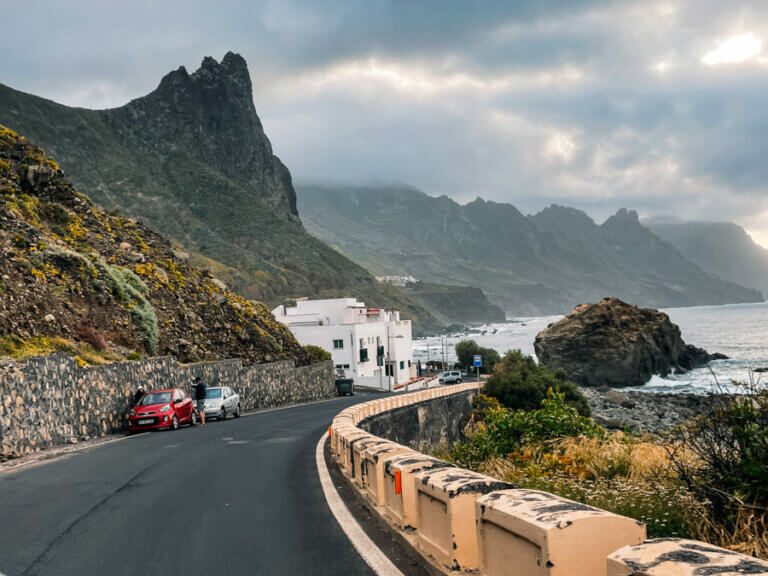
Tenerife Road Trip Ideas: 4 Scenic Drives to Take on Tenerife Island
Picture this – the wind in your hair, the sun on your face, and you are cruising along the winding roads that bring you through different climatic zones to impressive landscapes that seem to…
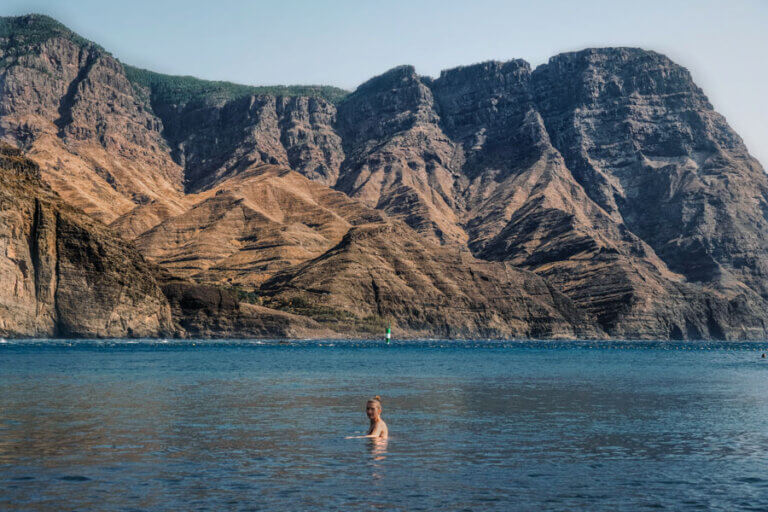
How Many Days in Gran Canaria is Enough for a Holiday? More Than You Think!
I have just returned from Gran Canaria island where Mark and I spent 2 weeks taking a break from our cozy life in Tenerife, and thought to write this post with my thoughts on…
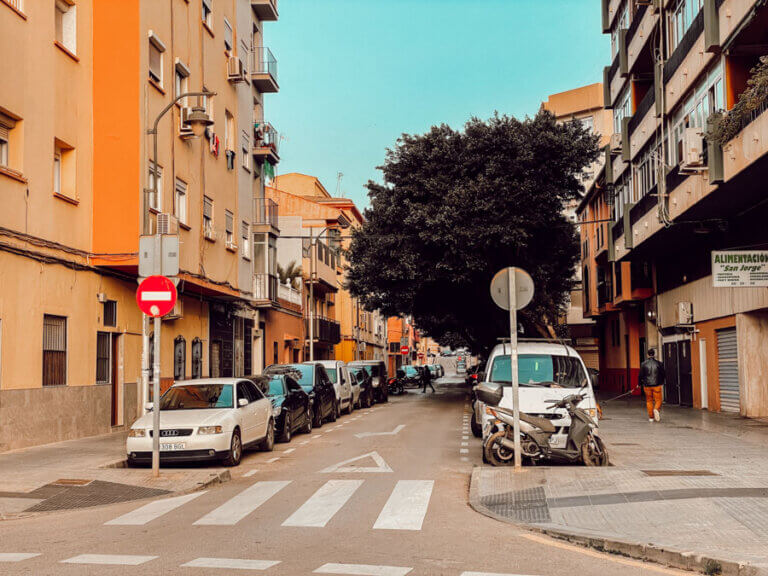
Brief Guide to Renting a Car in Valencia – 11 Main Things to Know
Are you thinking about renting a car in Valencia and just going to explore Spain from this city? That’s a very good decision as Valencia is a great middle point between Barcelona and Murcia,…
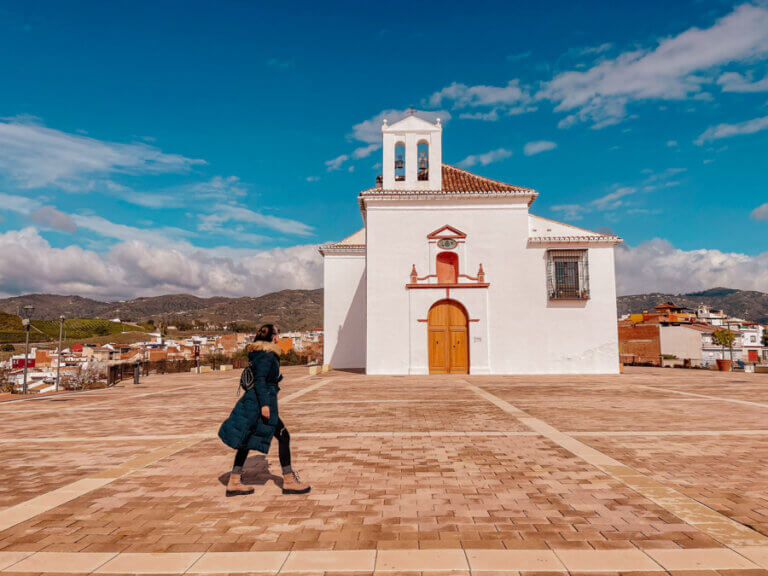
29 Legendary Spanish Experiences That You Should Travel to Spain For
Oh, Spain… with its islands, beaches, wines, and everywhere ancient towns… The list of Spain’s experiences is so long that it is always difficult to decide on the best things to do in the…
18 Comments
I loved hiking in the Spanish Pyrenees (a few years ago) but the culture, food and beauty of Spain is fantastic! I’d love to go back.
It is difficult not to love Spain, and the North is absolutely mind-blowing!
I love how you went from South to North and found the gems in going off the beaten path! After travelling in South East Asia for 2 years straight, COOLER weather sounds like heaven 🙂 Such great spots you found!
Thanks, Kashlee! Yes, Northern Spain is full of gorgeous spots!
I live in Andalucia but I also love the North of Spain, both beautiful but different. I have only been to San Sebastian and Bilbao but would love to visit the other places you mention. The pictures are stunning!
Alizon, we are actually wanting to visit Andalucia so badly! Have been planning a few times but it never worked out well, hopefully, it will later this year.
Oh, how much I love Northern Spain! I enjoyed reading your post and seeing your perspective on this region and it makes me want to go back.
We do too, such a beautiful part of the country!
I have been toying with the idea of retiring in a small stone village in Northern Spain (though not too far from a biggish city). I visited a couple of years ago the cities of Santander and Oviedo and ‘was bowled-over by its beauty.
Hey Raymond! Both of these cities are incredibly beautiful, we loved them so much! And I totally understand your desire to settle in a small village not far from the city, that’s a dream for us too!
It would have been good to see a map showing the location of these places!
I’ve just added it!
We are planning on renting a car and touring northern Spain in early June. Is it possible to stop in different towns along the way and easily find accommodations, or do you recommend getting reservations ahead of time? Are there any hotels you recommend?
Hi Mary, June through August is considered a high season when accommodation and car rentals get booked far in advance. According to forecasts, this year Spain expects almost the same number of tourists as they saw pre covid, so it might be better to book your accommodation ahead of time, even in small towns. In this case you’ll know you’ll be staying in a place you like. As for hotels, if you tell me more about your budget and preferences, I’ll be happy to build an itinerary for you and help you choose the right accommodation. If shortly, based on my own preferences, hotels that I like and can highlight are:
Suite Home Pinares – guesthouse in Santander. The part of the city where this hotel is located reminded me of San Francisco. The building is an old Spanish mansion that has been restored, all rooms have antique furniture and colonial style decor.
Hotel Indiana Llanes – more of a B&B made in old colonial style Spanish house. Outside Llanes and away from the beach but in a quiet setting, perfect for travelers who have a car.
Hotel Eutimio in Lastres – a boutique hotel on the shore of Lastres not far from the center
Gran Hotel Las Caldas – near Oviedo
T orre de Villademoros – in Luarca
Thank you so much, Anya! My husband and I are meeting our son, who is in graduate school in Madrid, and renting a car after a couple of days touring. We will have 13 days to travel before we return to Madrid to fly home. Here’s what we’re thinking, but totally open to suggestions. Day 1, drive to Santiago de Compestala and spend 2 nights. Day 3, Drive to Oviedo for 2 nights. Day 5, overnight in Santander. Days 6 and 7 and 8, Bilbao. Day 9, Bayonne. Day 10 and 11, Pampolna, Day 12, Logrono. Day 13, drive back to Madrid to fly home. We like to drive around exploring and getting off the beaten path, stopping for specialties of the area. The hotels you mention sound amazing. We don’t need glitz and glamour, but we like fun, interesting places. We are pretty easy to please. Any suggestions about out itinerary would be welcome. We have never been to this area and I am just looking at the map and reading what I can online. I appreciate your help!
Hi Mary, looks like you plan to cover a lot! 🙂 All the places you mentioned are definitely worth a visit but to be honest, there is also a lot to see between them, so depending on what you like, you may want to add a few more stops and visits to small towns, beaches, and farms.
On day 1 towards Santiago de Compostella, I recommend you make a stop in Ourense (it will be on the way) – a city famous for hot springs right on the edge of the river. It also has a historic center, interesting churches and bridges, but the main thing here is thermal water. You can soak in Caldas de Outariz hot springs and to reach them, go along the Thermal Walk which runs along the right bank of the Miño River. Another place that you could visit on the way to Santiago de Compostela is Salamanca. It would be a bit of a detour but this old academical city with one of the oldest universities in the world is worth a separate visit.
On the way from Oviedo to Santander, you can visit some of the most beautiful beaches in north Spain – Playa de Palombina, Puerto Chico beach, Playa de Cuevas del Mar, Arnia beach, Playa de Tagle. Among other highlights – Sanctuary of Covadonga, Lakes of Covadonga, San Vicente town, Sidra Crespo winery near Lastres. Depending on what you plan to do in Balboa area, 3 nights may be too long there. I’d better devote 2 nights to Santander but it all depends on your interests and what in particular you’d like to do/see.
Anya, I so enjoyed your article on the Northern area of Spain where my grandma was born. I’d love to invite my 88 year old mom to join me for a visit. I love your style of writing. It reminds me of how I wrote in college. -Lori
Thank you Lori for stopping by to tell me this! I hope you’ll get to visit together with your mom and you two will enjoy your trip! Happy New Year by the way!
Leave a Reply Cancel reply
Your email address will not be published. Required fields are marked *

- Travel Journal
- Travel Advice
- Travel Inspiration
- Photo Diary
- Photography Tips
- Photography Inspiration
- Destinations
- Home Inspiration
- Blogging Tips
- Work With Us

15 Best Places In The North Of Spain To Visit

Spain has a whole range of gorgeous cities , lesser-known spots and a heap of incredible places to see dotted all across the country. Now, the south of Spain is already pretty popular, but there’s a heap of the best places in the north of Spain that you really shouldn’t miss, too.
That’s the thing about Spain, to be honest. The country is so diverse depending on what region you visit. The Costa Del Sol, for instance, is so different from the Spanish Basque Country in the north. This makes it a totally fun country to visit on a road trip as you can see so many different cultures and vistas, too.

Plus, you’re gonna get to gorge your way across a country that has some of the tastiest dishes around! I swear, I ate my weight in all the pintxos, paella and Iberian ham (which is so good).
Anyway, enough about the food! I wanted to share some of the best places in the north of Spain to visit when you next visit. It’s such a diverse region and I really hope you’ll love it as much as we do.
Oh yeah, and for clarity, I’m considering anything higher than Madrid to be the north of Spain. Hopefully, this will help when you’re planning your route.

Read more, below, for the best places in the north of Spain to visit. Have a great trip!
1.) Delica canyon

Okay, Delica Canyon is incredible and easily one of the best places in the north of Spain you have to visit. Plus, it’s really easy to visit via car (and some hikes) from Bilbao itself.
Honestly, it’s so incredible to see and almost feels like a Spanish Grand Canyon. Though, it totally doesn’t need any comparisons, this place is iconic.
One thing to note is that you will need quite a lot of wet weather to see a huge barrage of water. Though, water or not, it doesn’t take away from the incredible views.

Once here, be sure to see the Nervion Waterfall (Salto del Nervion), which is one of the highest waterfalls in all of Spain. Also, don’t just follow the location on Google Maps, it’s not quite accurate and so it’s best to get directions once you arrive in the area.
The whole area is stunning and well worth the drive and ramble (around 2km) to get here. Oh, and make sure to stop (in the car) at areas like this , too. They’re stunning viewpoints over the whole region.

Also, just make sure to plan your hike safely, there are very little in terms of fencing near the edges and you must be careful on the trails. After all, no one likes a reckless hiker.
Read more: Best hikes in Spain
2.) Vitoria-Gasteiz

Perched in the province of Alava, Vitoria-Gasteiz is around an hours drive from the centre of Bilbao by car. It’s a relatively small city (compared to places like Barcelona) but is totally lovely.
Once here, make sure to explore the Artium Museum which is incredible to visit and a great indoor spot if the weather gets a bit rainy. Also, don’t forget to explore the Cathedral of Santa María and stop off at Plaza de la Virgen Blanca, too.
You’ll find lots of little shops and foodie joints around the historic plaza, which makes it really great to visit in the late afternoon or early evening.
Finally, be sure to take a little gander at the medieval walls of the city, too.
Read more: Best places in Spain to visit
3.) Covarrubias

Now, Covarrubias is a tiny little place but one of the best places in the north of Spain to visit if you love gorgeous little villages. This protected place is totally lovely and well worth stopping for an afternoon as part of a wider road trip around the region of Castile and León.
After arriving, take a stroll to the Torreón de Fernán González, see the town’s churches and gorge at De Galo Restaurant . It might seem a little no-frills but their roasted lamb is so good.
Read more: Lesser-known places to see in Spain
4.) Albarracin

For me, the hilltop town of Albarracin is one of the more picturesque and best places in the north of Spain you have to see. It’s totally gorgeous and well worth seeing when heading through the province of Teruel.
Once here, explore the stunning cathedral, wander through the historic plaza and follow the remains of the Walls of Albarracin. It’s such historic places and well worth exploring by foot over a few hours.

Also, for a tasty lunch, pop into Tiempo De Ensueño that’ll leave you stuffed. Plus, they have the most amazing wine selection (for the non-drivers).

One other thing to note, it’s around a 3.5 hours drive from the centre of Madrid, this makes it more than just a day trip from the larger arrival airports. That being said, it’s a really easy spot to visit when driving from Madrid to Barcelona and totally worth it.
5.) Cies Islands

Nestled just off the Atlantic Coast, near Pontevedra, the Cies Islands are a must-see when exploring the north-west of Spain.
Forming part of the Galicia National Park, it’s one incredible place to explore the rugged beauty of Northern Spain and well worth exploring if you’re already in the city of Vigo (or even northern Portugal).

Now, the only real way to get to the Cies Islands are by boat, which is easiest from Vigo in the summer months. The islands are stunning and it has some of the best beaches in Spain that are totally beautiful. Not only that, on a calm day you’ll see how crystal clear the waters are!
It’s the perfect place to relax and explore the trails or just chill on the beach. Though be warned, the sun is strong here!

Oh yeah, and make sure to book your boat tickets as soon as you arrive in Vigo (or before, if you can).
Read more: Best beaches in Spain
6.) Gaztelugatxe

Nestled on the Bay of Biscay, Gaztelugatxe is one of the Basque Country’s most iconic spots to see. It’s so beautiful and well worth a gander whilst exploring the Basque Country.

With over a thousand years of history, it’s well worth driving and taking a stroll around the whole area. Just keep a watch for those coastal winds, it can get blustery.
Also, it’s totally easy to explore from Bakio or even Bilbao, too. Now, remember there are quite a few hundred steps, so consider this if you have mobility issues.

All in all, you’ll likely spend a few hours exploring and it’s totally easy to build into any itinerary whilst exploring the best places in the north of Spain.
7.) Castropol

Nestled on the coast in Asturias, Castropol is a stunning little place to visit whilst following the coastal road further west in Spain.
It’s the kind of spot you can stop for lunch and explore the coastline before continuing the drive. After all, it’s not too big.
Once here, spend a few hours walking around Pancha Island or stop off at Playa de Mexota. The latter is a gorgeous beach that’s so lovely to chill at on a sunny day. Though, don’t be surprised if you come across some cheeky nudists!
8.) Ribadesella

Ribadesella is one of the best places in the north of Spain to visit if you love history! You see, it’s home to the Tito Bustillo Cave where early humans used to shelter around 10,000 years ago.
Today, you can see the pre-historic drawings and neolithic sketches in the caves (on a tour). They’re totally awesome (and I mean that literally). Honestly, it’s the kind of place you can’t miss when in northern Spain.
Just make sure to book your tickets in advance (on their website ) and remember that no photos are allowed inside.
9.) Logrono

We stayed a few nights in Logrono and totally loved how charming this little city is.

It’s totally lovely, especially with all the tapas spots on and around Calle Laurel. I think we spent the whole night around this area and left totally full (and a little tipsy).

Also, don’t forget to visit the Museo de La Rioja, explore the cathedral and even take a drive over to some of the nearby Rioja vineyards . too.
Read more: Best cities in Spain to visit

Now, Gijón might be the largest city in Asturias but that doesn’t mean it’s lacking in character. It’s the perfect place to start your trip around the Bay of Biscay.
Gijón also has a fantastic beach, which is totally epic on a summer day. Plus, don’t forget to explore the Elogio del Horizonte (In Praise of the Horizon), the sculptures are amazing, especially as they’re produced by the Basque artist, Eduardo Chillida.
Oh, and don’t forget to explore the district of Cimavilla, the oldest district in the whole city.
11.) Bilbao

Nestled within the Basque Country in Spain, Bilbao is a beautiful city to explore some of the cultural heritage of this marvellous Basque town.

When you’re there, be sure to take in the beauty of the Plaza Nueva, discover Doña Casilda Iturrizar park and take a wander across Zubizuri.

Also, you can’t forget to visit one of Spain’s most iconic contemporary buildings, the Guggenheim Museum Bilbao. Here, you can explore some of the world’s most beautiful pieces of modern art and it’s totally amazing.
Read more: Best things to do in Bilbao
12.) San Sebastian

San Sebastian is possibly one of the more well-known and best places in the north of Spain to visit if you’re a total foodie.
You see, San Sebastian is perhaps best explored with your tummy and mouth. The fresh seafood and pintxos are just epic!
If you’re looking for a little more of a challenge, take a hike up Mount Ulia for some stunning views or see the totally gorgeous Cathedral of the Good Shepherd.

Plus, On a warm sunny day, head to the Beach of La Concha which is one of the Basque Country’s most famous beaches.
Read more: Best things to do in San Sebastian
13.) Zaragoza
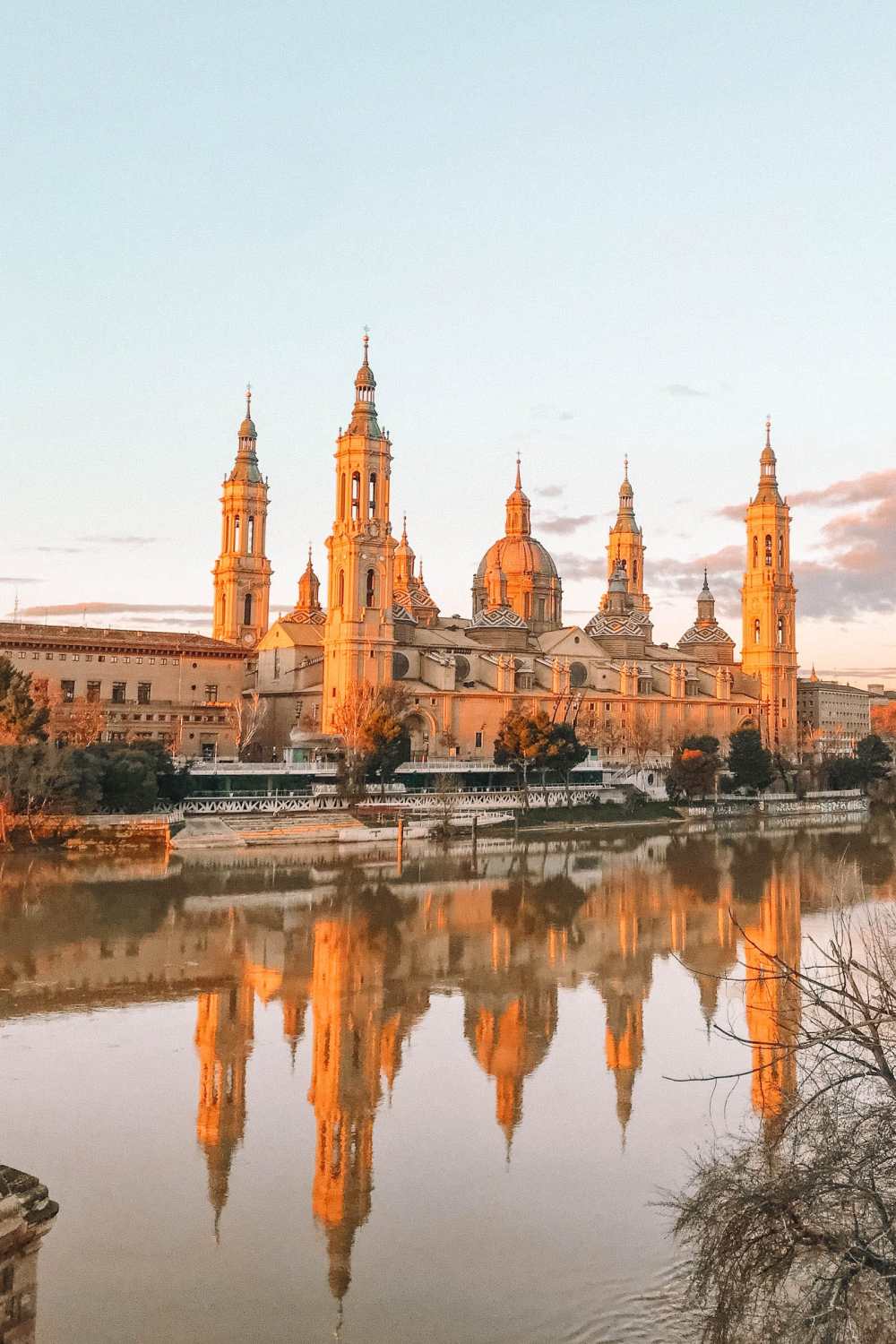
The capital city of the Aragon region of Spain, Zaragoza is a stunning historic melting pot that spans centuries.
Take a wander around the iconic Basilica of Our Lady of the Pillar that was built in the 1700s or marvel at the beautiful gothic architecture of La Seo Cathedral. Honestly, these places alone will give you a good idea of how amazing and rich the history is in Zaragoza.

Though, If cathedrals aren’t your thing, discover the city’s most famous festival, the Fiestas del Pilar (which, by the way, is so much fun).
14.) Burgos

The medieval city of Burgos is sometimes overlooked by some visitors, but thankfully, that’s changing! It has some of the best places in the north of Spain to visit that’s totally gorgeous in the heat of summer or the snow of winter.
To be truly impressed by Burgos, start your visit by taking a wander around the Burgos Cathedral that’s almost 1,000 years old.
Also, if your a biology bookworm (like me!) then head over to the Museum of Human Evolution.

Vigo is one of the largest Spanish cities on the Atlantic Ocean and a perfect little stop for a few days exploring the Atlantic Coast.
After arriving, make sure to explore the Museum of Contemporary Art, soak up the rays at Praia de Patos (which can get busy) and see the Castle of Vigo, too.
As I mentioned earlier, whilst here, take a trip over to the stunning Cíes Islands that are only a few miles out into the Atlantic Sea. They’re incredible.
15 Best Places In Spain To Visit
Check Out The Very Best Of Great Britain!

Pop Over To Our YouTube Channel For Travel Videos!
Puppy Defender. Foodie. Chocolate Fiend and Custard Lover. Dip, Cover or Wrap anything in sugar and I'm Yours!

10 Very Best Places in Illinois To Visit

11 Very Best Things To Do In Alaska
You may also like.

7 Ways To Pick The Best Holiday Souvenirs

16 Best Places In The West Of England To Visit

What Is It Like To Drive From The U.K. To Austria?
Looking for something, fellow connected travellers.
- 583k Facebook
- 0 Pinterest
- 1,202,450 TikTok
- 397,142 Instagram
- 23,800 X (Twitter)
- 33,268 Email Subscribers
Adventure Awaits!

Have You Seen These Yet?

Exploring Aguas Calientes: The Entry Point To Machu Picchu, Peru
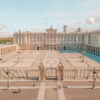
A Day Exploring Madrid, Spain

Planning A New Years Celebration? Try London
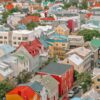
5 Best Restaurants In Reykjavik To Visit
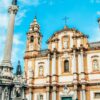
Photos and Postcards From Palermo, Italy
- Privacy Policy

Email address:
11 Great Places to Visit in Northern Spain
From Galicia to Catalonia, here are the best places to visit in Northern Spain to help you plan your next trip to this country’s green part.
Northern Spain is also called “green Spain” because of the large numbers of coniferous and deciduous forests and green hills. It is a wonderful area for a great vacation in Spain. You have imposing mountain peaks, rugged coasts, and atmospheric villages, while traveling in Northern Spain you can escape crowded beaches and busy seaside resorts. Experience Spain at its purest in impressive pilgrimage sites, vineyards, picturesque villages, and amazing hikes.
What to see in Northwest Spain
1. santiago de compostela.

For almost a thousand years, people have walked the Camino de Santiago and from Spain and far beyond they make a pilgrimage to Santiago de Compostela, ending in the tomb of the apostle James the Greater or continuing to Fisterra and Muxia . It is one of the most visited pilgrimage sites in the world.
Santiago de Compostela is a city located in northwestern Spain, in the region of Galicia, of which it is also the capital. The city grew up around a Roman tomb found in 814 by a shepherd who, according to legend, was led into the forest by a mysterious light or star to the site of the tomb. In the end, King Alfonso II, who was the very first person to make the pilgrimage to the site of the tomb of James the Greater, decided to build a church there, which eventually became the cathedral as we know it today, with an entire city built around it.
One of the sights is the many pilgrims who have come to Spain’s most famous pilgrimage site for centuries. Furthermore, Santiago de Compostela also has a beautiful old town, cozy squares with narrow streets and impressive buildings that you can visit. A must-visit place when you visit Northern Spain!

Gijón is the largest city in Asturias and is located on the Cimadevilla peninsula. It used to be mainly an industrial city and has no “historical” character. But Gijón has given itself a new image with its beautiful pedestrian streets, green parks, beautiful seaside promenade, and cultural attractions. In addition, Gijón is a mecca for foodies and shopaholics and its bustling atmosphere is contagious for young and old. Despite the modern and hip features, the city does have an old center; the old fishing quarter. A wonderful mix of both worlds.
Here they have numerous good restaurants with classic cuisine where you can taste the Fabada and more refined dishes while enjoying a glass of cider. In the harbor, it is possible to book a diving or sailing trip to explore the coast from the sea.
Here are a bunch of great things to do in Gijon rain or shine .

A place that should certainly not be missed during your trip through Northern Spain is Oviedo. Oviedo is located in the heart of Asturias and is considered the capital of the region. Since ancient times it has retained its Monastic and Royal character and its hospitality and dynamism are contagious.
Culturally and historically, Oviedo has something to experience every day and many important Asturias sights can be seen here. See the Fontán Market, the Cider Boulevard, the Pre-Romanesque Fountain of La Foncalada, the Gothic Cathedral, and more! In addition, stroll around the beautiful historic center that has been a source of inspiration for many writers.
4. Picos de Europa

One of the best places to visit in Northern Spain is Picos de Europa. Picos de Europa is a national park and is considered by many to be one of the most beautiful mountain ranges in Europe. Despite the overwhelming beauty of nature, the mountain area is still relatively undiscovered by the general public. Walk past old villages, untouched nature, and crystal clear streams and have a small chance of seeing bears or wolves who still live there.
During a holiday at Picos de Europa, you can drive around by car through nature, or put on your mountain boots and go hiking. We have done several hikes ourselves in this beautiful nature reserve. When you are looking for a detailed overview of the best hikes in Picos de Europa you can find more information via the link.
The peaks and the surrounding nature reserve are increasingly being discovered as a holiday destination for those seeking tranquillity and nature lovers. Despite the slightly increasing tourism, you can still enjoy hiking in the mountains without meeting too many other people, which is very nice! For the active traveler, the area offers plenty of fun activities, including abseiling, hiking, climbing, and kayaking. Nature lovers come here for peace and quietness and to observe birds. And in winter it is a magnet for winter sports enthusiasts and snow lovers.
5. Santander

Santander, capital of the green region of Cantabria, is located in northern Spain on the Bay of Biscay. This port city is located in a picturesque bay between green mountains and the blue sea.
Santander can be divided into the southern and northern parts. The southern part is where the old city center is located. Due to a huge fire that broke out in 1941, which almost destroyed the center, only a few historic buildings remain. In the old center, you will now mainly find large shopping streets and the pleasant square called Plaza Porticada.
Besides the old center in Santander, you can also take a nice walk along the quay and boulevard, called Paseo de Pereda. Here you will come across the La Magdalena peninsula in the northern part. King Alfons XIII had his summer residence built here. You will also find the two most popular beaches of Santander here. Namely Belle Epoque and El Sardinero.
There are also many places of interest around the city; on several sides of the city are the green mountains and steep rocks of the Cantabrian coast. Combine this further with various free museums and with delicious cuisine dominated by fish and shellfish and you have the perfect combination for an unforgettable city trip in Spain.

During your vacation in northern Spain, Bilbao is a city that can surprise you. In the 1970s it was still a polluting industrial city, today it is a modern city with modern architecture, design hotels, haute cuisine restaurants, and the Güggenheim museum, in which traditions are beautifully preserved at the same time.
Bilbao has flourished since the arrival of the Guggenheim Museum in the 1990s. The exterior of the museum is a work of art in its own right, designed by Canadian-American architect Frank Gehry. Inside, artworks by Dalí, Warhol, and Picasso are on display, among others. In addition to the building, don’t miss the ‘Flowerpuppy’ (over 12 meters high and covered with about 70,000 flowers) and the giant spider ‘Maman’ (9 meters high and 10 meters wide).
Besides the Guggenheim, Bilbao has a lot more to offer! The oldest part of the city, Casco Viejo is a maze of narrow alleys between old and colored houses. The shopping street is also nice to stroll through. There is certainly no shortage of food and drinks in Bilbao. Everywhere you will find charming restaurants with a huge choice of delicious pintxos and local wines.
7. San Sebastian

San Sebastian (in Basque “Donostia”) is located in the Spanish autonomous region of the Basque Country. The popular seaside resort is located on the Bay of Biscay on the northern Spanish coast with about 200,000 inhabitants. The Basque coastal town is one of the most visited cities in Spain. San Sebastian is also known as the culinary capital of the world. San Sebastian has the most Michelin stars per square meter in the world! But also for a lower budget, there is a huge choice of bars and restaurants. In addition, it is the seaside resort of the Basque Country and this city is also called Rio de Janeiro in miniature. The beautiful beaches in the city are ideal for water sports activities or boat trips. In addition, in San Sebastian, you will also find beautiful shopping streets in the historic city center called Parte Vieja.
In the evening, the historic heart is the ideal place to find bars and taste the famous pintxos. When you follow a 1 day San Sebastian itinerary you have sufficient time to discover the highlights of the city.
8. La Rioja

Speaking about wines, another beautiful place to visit is the region of La Rioja. Here you will find about 600 wineries. The landscape is beautiful where you will see endless vineyards, several old and modern wineries, and picturesque villages. For example, visit one of the wine cellars where you can take a tour with a wine tasting.
Besides the many wineries, the village of Olite is also worth a visit. This village is located in the province of Navarra which is about an hour’s drive from Logrono. Here you can visit a beautiful castle. The beautiful village of San Vicente is also well worth a visit. Here it is as if time has stood still. The special thing about this village is the church that is located on top of a hill. This is also one of the few places in Spain where flogging is still performed.
Which other places can you visit in Northeast Spain?
To visit these places in Northern Spain you need at least 2 weeks. If you have more time, it is great to discover more about Spain. In this case, you can travel to the central part of Spain towards Madrid or you can head east to discover places like Zaragoza, Barcelona or the Pyrenees. Our recommendation is to head east. Below you can read briefly why these places are so nice to visit.
9. Zaragoza

It is the fifth-largest city in Spain, and yet not very well known. A shame, because Zaragoza is a beautiful typical Spanish city. It is a beautiful place to walk through, with warm temperatures, delicious food, and a lot of history. There are a lot of things to do in Zaragoza that will surprise you.
The city is located on the River Ebro in northern Spain and is the capital of the Aragon region. The biggest eye-catcher is the El Pilar cathedral, which is beautifully lit at night. You will find several valleys around the city, so a road trip is also recommended. When in Spain, of course, you must have eaten really good tapas at least once. And in Zaragoza that is certainly possible. The El Tubo district is even seen as the tapas district where you can enjoy these delicious tapas.
10. Barcelona

Whether you visit Barcelona for a city break or as a stopover during your vacation in Catalonia, you must go there at least once.
Because Spain’s most famous city offers everything for lovers of architecture , history, art, good food or shopping. It also has its beaches. The weather is almost always nice, you have wonderful long evenings in the summer and even in winter, the temperature is still pleasant, with a bit of luck you can still sit on a terrace without a coat in the sun in November and December.
You won’t have to get bored in Barcelona because you are also able to visit many great places. From Gaudí’s city you can, for example, take the train to Montserrat, the picturesque seaside town of Sitges, cycling city of Girona, or Gaudí’s Crypt of Colònia Güell.
11. The Spanish Pyrenees

A holiday in the Spanish Pyrenees in the border region of France, Andorra, and Spain takes you to rugged mountains, lovely green valleys, and deep ravines. But also to villages where time has stood still and beautiful Romanesque buildings. The west part of the Spanish Pyrenees consists of a rugged landscape with steep mountains and deep canyons. And eastwards it merges into a rolling green landscape of mountains, alpine lakes, and valleys. A true paradise for walkers, cyclists, mountaineers, bird watchers, rafters, and skiers.
During your holiday in the Spanish Pyrenees, for example, you can explore Spain’s Ordesa Y Monte Perdido National Park with its jagged limestone massif and spectacular gorges and waterfalls. Or the national park Aigüestortes i Estany de Santa Maurici with, among other things, Lake Sant Maurici. So whether you love nature, culture, or architecture and are looking for a car holiday, family holiday, or active holiday: the Spanish Pyrenees are the right place for you even if you are a beginner hiker!
Please note that starting from November 2023, you could need an ETIAS visa waiver prior to your travel to Europe.
ETIAS is an acronym for the European Travel Information and Authorization System. It is an electronic system put in place by the European Union to ensure their security by screening visa-free travelers who are planning to enter the EU. The system will require travelers to submit an electronic form with their personal and travel information prior to their arrival in the EU. Once approved, travelers will receive an ETIAS authorization which will allow them to enter and stay in the EU for up to 90 days.
ETIAS is required for citizens of the 60 countries listed on the European Commission’s visa-exempt list. This list includes most countries from North America, Central America, South America, the Caribbean, Oceania, and other parts of the world. For a full list of countries, please consult the ETIAS website.
Cynthia & Alexander are the adventure travel bloggers behind Travel your Memories. They travel the world and share all the tips to inspire and help others plan their trips.


8 of the best places to see in Northern Spain
Visit Northern Spain for the first time, and you might ask yourself: Am I still in the same country? And we wouldn’t blame you! Sun-kissed beaches get replaced by rocky shores and rolling green mountains. Moorish influence gives way to reveal Celtic roots, and in some spots, you’re just as likely to hear Galego (Galician) or Euskera (Basque) as you are Spanish. Wonderful as our other top-rated itineraries in the country (https://www.goaheadtours.com/travel-blog/articles/top-rated-travel-itinerar…) are, there's nothing quite like it.
by Alejandro López
November 22, 2022
Visit Northern Spain for the first time, and you might ask yourself: Am I still in the same country? And we wouldn’t blame you! Rocky shores and rolling green mountains replace sun-kissed beaches. Moorish influence gives way to reveal Celtic roots, and in some spots, you’re just as likely to hear Galego (Galician) or Euskera (Basque) as you are Spanish. Wonderful as our other top-rated itineraries in Spain are, there’s nothing quite like it.
Sound daunting? Tranquilo. From cultured Bilbao to sleepy Santillana del Mar, we’ve curated a list of eight of the best places to visit in Northern Spain. Once you’ve found some itinerary inspiration, give our Spain tours a look—or book your place on our brand-new Northern Spain: Basque Country to Madrid tour .

As recently as the 1990s, the Basque city of Bilbao was better known to ironworkers and fisherfolk than tourists—not that a first-time visitor to Northern Spain would know. Extensive urban renewal projects have transformed this once-industrial port into a cultural powerhouse. Headlined by the world-famous Guggenheim Museum, we consider Bilbao one of the best places to visit in Northern Spain.
How to spend three days in Bilbao
- Follow the winding Nervión River, popping into attractions like the Guggenheim, the maritime Itsasmuseum, and others you won’t find in any other city in Northern Spain.
- Hit the medieval alleys of Casco Viejo—the city’s historic quarter—and make your way to the centuries-old Church of San Antón and Santiago Cathedral.
- Head to San Mamés Stadium, the 53,000-seat home of Athletic Bilbao—a professional team known for its policy of only fielding players of Basque descent.

2. San Sebastián
San Sebastián (or Donostia, as the Basque call it) might be roughly half the size of neighboring Bilbao, but we’d recommend spending the same amount of time there. Why? The food’s a must-add to any Spain bucket list . Some call this city in Northern Spain the culinary capital of the nation, and with more Michelin-starred restaurants per square meter than any other town in Europe, we’re inclined to agree.
How to spend three days in San Sebastián
- Lounge on Playa de la Concha, then amble through the old town on your way to Plaza de la Constitución.
- Work through your gastronomical map of Northern Spain. Pop into a pintxo bar for skewered Basque-style tapas and enjoy them with wine and beer.
- Reserve a table at Arzak or Akelarre—two restaurants that boast three coveted Michelin stars.

3. La Rioja
Nestled beneath the Basque Country, La Rioja might just rank as the most famous of Northern Spain’s regions, and it has one exquisite export to thank. Rioja wine comes from a DOCa (denomination of qualified origin) growing area—one of only two nationwide to earn this designation—and that quality shows in popular varietals like tempranillo and garnacha blanca.
How to spend a day in La Rioja
- Before trekking the rest of Northern Spain, make a pit stop in Logroño, Haro, or wherever you find a Riojan vineyard and sample their specialties.
- Prefer to search less and sip more? Our new Food & Wine: Barcelona & Northern Spain with America’s Test Kitchen tour works three nights into its schedule, letting you cross even more off your map of Northern Spain.

4. Santander
The latest addition to our list of destinations, the coastal capital of Cantabria slightly differs from the other cities in Northern Spain we’ve called out. In 1941, a devastating fire ripped through Santander, charring most of its old town and sparking a significant rebuild. However, what it lacks in historic charm, it more than makes up for with naturally good looks: You can find seaside parks, rugged rock formations (like the Puente del Diablo—the Devil’s Bridge), and various lookouts across one of the most beautiful cities in Spain. And remember what we said about beaches? You’re in for a treat!
How to spend two days in Santander
- Walk from the former royal residence at El Palacio de la Magdalena to El Sardinero and sunbathe on the beach’s crescent-shaped shore.
- Stroll through Plaza Porticada before admiring modern art exhibitions inside the futuristic Centro Botín.
- Visit more of Santander’s beaches on our Northern Spain: Basque Country to Madrid tour. (If you’d rather hike across lush limestone mountains, book the Picos de Europa excursion.)
Get to know our tours to Northern Spain

5. Santillana del Mar
Just over 1,000 people call one of the most beautiful towns in Spain home. A hamlet that clocks in at six blocks long, Santillana del Mar traces its roots back to a ninth-century monastery. Cobbled roads and rough-cut stone houses transport visitors across the ages, illustrating just why the philosopher Jean-Paul Sartre dubbed it the prettiest village in Spain.
How to spend a day in Santillana del Mar
- Enter the Cave of Altamira UNESCO World Heritage Site, the first place modern man discovered Paleolithic cave art.
- Pay a visit to the Romanesque Collegiate Church and Cloister of Santa Juliana.

The “cradle of Spain,” proud Asturias was one of the few Iberian provinces to avoid full Moorish rule. In fact, a local nobleman, Pelayo, touched off the Reconquista (Reconquest) with a victory at the Battle of Covadonga in 718. Less than 50 years later, a pair of monks established Oviedo, the future capital of this Northern Spanish region.
How to spend two days in Oviedo
- For a glimpse back at the early days of Northern Spain, be sure to visit Oviedo Cathedral and San Julián de los Prados—a pair of UNESCO-listed churches that date back to the eighth and ninth centuries, respectively.
- Scale Monte Naranco for a close-up of the 100-foot-tall Monumento al Sagrado Corazón before heading back to town for a pint of cider.
- Did we mention the cider? Asturias is famous for the brew. Enjoy a glass alongside traditional and local dishes at any number of sidrerías (cideries).

By now, you’ve probably realized that the best places to see in Northern Spain offer heaping helpings of history—but the Roman walls of Lugo stand in a class all their own. Shooting close to 40 feet above the city’s old town, this third-century structure runs for close to 7,000 feet, completely encircling the medieval quarter and making it one of the prettiest cities in Spain.
How to spend a day in Lugo
- Climb up those UNESCO-recognized walls and plot your route through old Lugo to reach the Ponte Vella—yet another indicator of the town’s Roman past.

8. Santiago de Compostela
Towering above Praza do Obradoiro, the ornate façade of the Santiago de Compostela Cathedral is one of the most iconic sights in all of Northern Spain. Look beyond the throngs of pilgrims, though, and you’ll discover a culture unlike any other in the country. More than any of Northern Spain’s regions, Galicia’s inextricably tied to the ocean. Even in its landlocked capital, the seafood makes a worthy addition to our ultimate food and wine guide of Spain .
How to spend three days in Santiago de Compostela
- Marvel at the town’s famous cathedral, then find a place to order a plate of pulpo a la Gallega: tender, cooked octopus generously seasoned with olive oil, salt, and paprika.
- Take a drive along the treacherous Costa da Morte, the “Coast of Death” responsible for more than its fair share of shipwrecks over the decades.
- Want to plan a day trip to other cities in Northern Spain? Consider A Coruña—home to the Torre de Hércules, the oldest lighthouse on the planet—and Fisterra, once considered the end of the world.
Ready to go? Let’s plan your perfect tour of Northern Spain →
About the author.
Alejandro López
Alejandro thinks some of life’s enduring moments begin with travel—whether that’s slurping water from a falling brook on the Schlossberg in Freiburg, Germany, or taking silly Polaroid selfies with his wife on a six-hour train to Budapest. Beyond the keyboard, he loves a lunch-break soccer game; at home, he enjoys throwing on some lo-fi beats and cuddling with his six-year-old Wheaten Terrier, Piper.
Related tours
More travel inspiration, save up to $400 by 8/28.
Time’s ticking—lock in your best tour price before they increase after 8/28.† Your next adventure awaits.
- Search for a holiday home
- Spain information
- Advertise property
In order to give you the best search results, please select a destination before searching, e.g. "Costa del Sol" or "Barcelona"
In order to give you the best search results, please select an arrival and return date before searching.
More search options
20 Most Beautiful Villages to Visit in Northern Spain

While northern Spain is home to some excellent cities, if you prefer spending time off the beaten path, these are the villages along Spain’s northern coastal regions that you have to visit!
The Basque Country
Hondarribia .
You can find Hondarribia right on the border between France and Spain. You can even see France across the water and there’s even a boat that will take you between the two!
Why not take a walk around the historic centre with its typical Basque houses and stroll down Calle San Pedro, the town’s main thoroughfare?
The beach (Playa de Hondarribia) is also rather popular, especially during the summer months and while it doesn’t get as warm as on the Mediterranean coast, you can enjoy highs in the mid-20s between June and August.
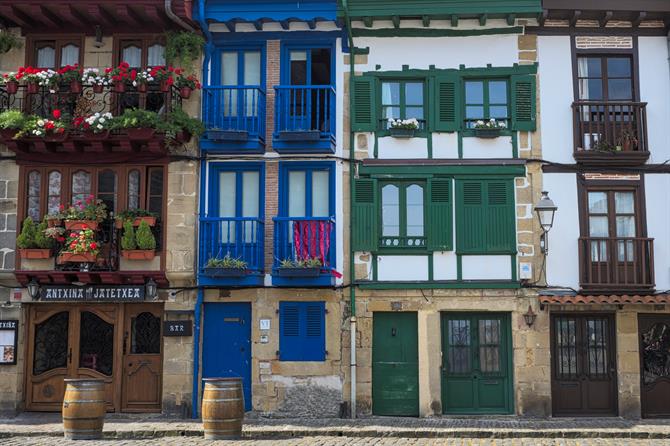
Pasai Donibane and Pasai San Pedro
Pasai San Pedro and Pasai Donibane are two urban centres located in Pasaia, a town built around the Bay of Pasaia in the Gipuzkoa province of the Basque Country. Like many of the other towns in the region, Pasaia was an important port for commercial sea-routes.
One of the most popular attractions is the Albaola, The Sea Factory of the Basques, a UNESCO-sponsored museum dedicated to the Basque maritime heritage.
Getaria is located on Spain’s northern coast in the Basque Country’s Gipuzkoa province. It’s a beautiful little fishing village that was also home to Juan Sebastián Elcano, one of the first people to circumnavigate the earth.
The town has existed in some form since Roman times but was properly founded in the Middle Ages, making it one of the oldest in the region.
Nowadays, you can enjoy this quiet little fishing town’s main attractions such as the Cristobal Balenciaga Museum, the Iglesia de San Salvador, the fishing port, or take a walk up the Monte San Aton for some lovely views of the town.
Mutriku is a must-visit if you are renting a holiday home in the Basque Country . It's a beautiful Basque town sitting on the Bay of Biscay. There’s evidence that people have lived in the area for thousands of years but this version of the town was founded in 1209 by King Alfonso VIII of Castile.
The Church of San André, which was built in 1080, is one of the oldest in the region. The historic centre of the town features several townhouses, the Town Hall, the church of Nuestra Señora de Asunción, and a statue to Cosme Damián Churruca, a naval officer who died at the Battle of Trafalgar.
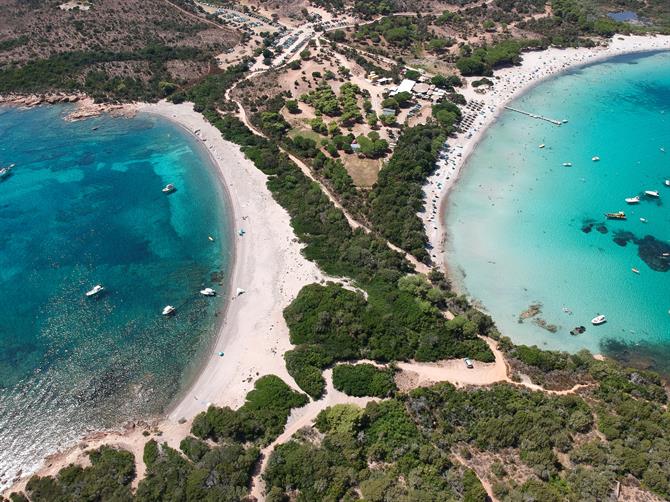
Zarautz is a small coastal town you must visit if you are staying in San Sebastián as it's just under 10 miles away . There are quite a few things to do here, but one of the most popular attractions is the beach, which is the longest in the whole Basque Country.
Art lovers can enjoy the Photomuseum or the Zarautz Art and History Museum. The latter is particularly interesting as it’s located in the Tower of Zarautz, the town’s oldest building.
Like a lot of Spanish towns and villages, Zarautz is home to some pretty churches, including the Church of Santa Maria la Real and the Church of Santa Clara.
Sporty types can enjoy surfing here, which has become increasingly popular in recent years.
Castro Urdiales
If you are renting a holiday home in Cantabria , Castro Urdiales is a lovely small town in the east of the province. It’s located on the Bay of Biscay and is popular with tourists because of its beautiful beaches and the harbour.
The old town (Puebla Vieja) is home to many historic monuments and sights. The most popular is the Church of Santa María de la Asunción, a 13th-century Gothic-style building that took nearly 2 centuries to finish!
Just a short walk from the church is the castle and lighthouse, a great destination for views of both the town and the coastline.
Santillana del Mar
Santillana del Mar is an interesting town. Despite having the word for sea (mar) in its name, it’s not a coastal town. However, that doesn’t mean that it isn’t worth visiting. After all, Jean-Paul Sartre called it the prettiest town in Spain; high praise indeed!
It’s worth visiting the National Museum and Research Center of Altamira, a museum dedicated to the Altimira cave, a UNESCO World Heritage Site.
The heart of the town itself is also wonderful and the Plaza Mayor de Ramon y Pelayo is where you can get most of your holiday snaps.
If you’re travelling with little ones, there’s also a zoo that will keep everyone entertained for a few hours.
Comillas is a fascinating place and was once the capital of Spain, even though this was just for a day on the 5 of September 1881, it still makes it a member of a pretty exclusive club alongside Madrid and Toledo.
It was a popular destination for the Spanish royal family and Spanish nobility and the oldest part of the town is home to many mansions. Just look at the shields to find out which famous families called these wonderful buildings “home”.
It’s also popular with tourists thanks to the beautiful surroundings and popular attractions like a palace designed by Antoni Gaudí, the Palacio de Sobrellano (another palace), the beach, and the exquisite Comillas Pontifical University.
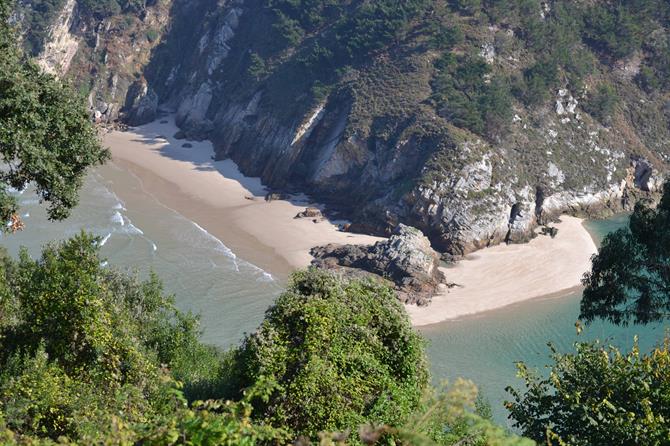
Cicera is a tiny village in Peñarrubia, Cantabria. If you want a fully authentic experience of rural Spain, this is the place to go.
The village’s most popular attraction is the church, but what you go to Cicera for is the hiking. With Cicera as a base, you can head off in almost any direction and find gorgeous hiking trails that lead to some exquisite viewpoints over the valleys.
San Vicente de la Barquera
It’s hard to call San Vicente de la Barquera a town since most of the area is the Oyambre Natural Park. Sure, there’s a town to visit, but the park is the main attraction.
The natural park covers 196 hectares and features some excellent hiking trails. You can walk along the seaside, through the mountains, or by the river. In addition to the self-guided walks, you can also visit the gallery or enjoy workshops for the whole family.
That said, there are also places to visit like the Castle of the King, the Church of Santa María de los Ángeles, and the Playa de Oyambre beach.
Llanes stretches across the Costa Verde in Asturias . Traditionally, this was a fishing port and you can see the town’s piscatorial history in the town’s monuments and traditions, especially the statue of the Fisherman’s Wife that’s looking out to sea waiting for her husband to return.
The fishing port is full of lovely little boats and a short walk from a couple of the town’s beaches and other attractions.
Parts of 13th-century town walls are still standing as well as the Tower of Llanes, which is worth a visit. There’s also the pretty Basilica of Santa Maria del Conceyu or the Iglesia de la Virgen de la Guía, another church that’s a little further outside of the town.
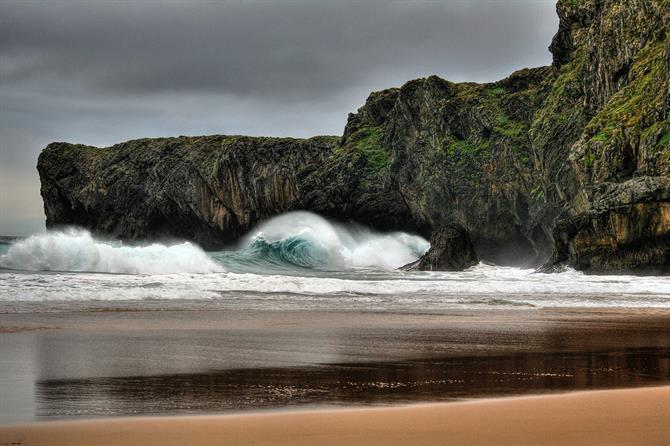
This town is regularly cited as one of the prettiest towns in all of Spain and it’s easy to see just from photos, though it’s better in the flesh!
While you could probably just spend all day in the town looking at it, there are also some good reasons to head out of the town and along the coast. The Cabo Vidio and the lighthouse should be high on your list of things to visit.
If you take part in the Camino de Santiago’s Northern Way, you’ll be lucky enough to pass through Cudillero, but I would feel sorry for anyone who is just passing through and doesn’t get to stay.

Luarca is another town to feature on the Camino de Santiago’s Northern Way. This is a small fishing town on the Asturian coast and it’s famous for the beautiful architecture, the food, and having a few interesting tourist attractions.
The most popular attractions include the Fishery Harbour, the Palace of the Marquis of Ferrera, and the lighthouse. There used to be a natural history museum dedicated to a giant squid, but sadly this closed down a while back and is yet to reopen.
If you do travel to Luarca, you might want to consider visiting the gardens that overlook the harbour. The gardens are just a short walk from the centre of the town and offer some incredible views of the town.
If you choose a holiday in Asturias , you have to visit Covadonga and the lakes. Covadonga is right by the Picos de Europa mountain range and the perfect destination for avid hikers or walkers.
While there is a very small settlement with a couple of hotels in Covadonga itself, most travellers will stay in the nearby town of Cangas de Onis and make their way to Covadonga and the Lakes of Covadonga.
There are fantastic views of the surrounding nature, religious sanctuaries, and some beautiful churches to visit while you’re there.
The area itself was home to an important early Spanish victory during the Reconquista, one of the first in over seven centuries of fighting between Spanish Catholics and the Moors.
Ribadesella
Ribadesella is a small town on the Cantabrian Sea and is one of the most charming villages in Asturias . This town is also home to Queen Letizia of Spain, the wife of King Felipe VI.
You can either relax in the lovely town centre, visit the church, or head down to the waterfront.
The nearby Tito Bustillo Cave is a UNESCO World Heritage Site and home to cave paintings from nearly 30,000 years ago!
If you see yourself as a bit of a foodie, you may also want to visit Ribadesella during the fish festival or cheese festival, two popular events on the riosellano calendar.
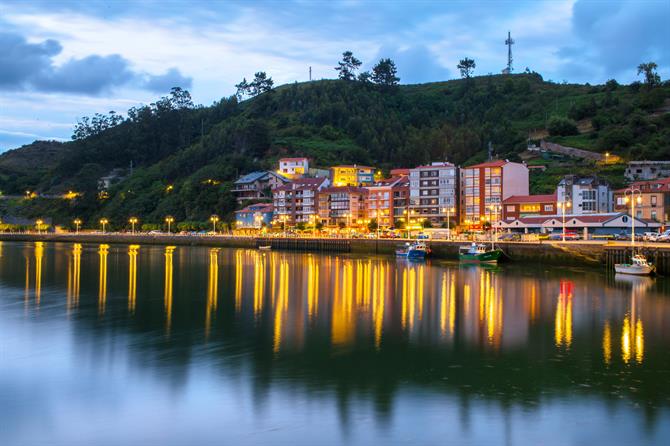
Sobrado, also known as Sobrado dos Monxes in the local Galician language, is a small town in the A Coruña province of Galicia. It’s famous for the Trappist monastery and is a fantastic destination for nature lovers.
The town is home to an artificial lagoon that was built by the monks of the aforementioned monastery to help with local agriculture. There’s also a beautiful oak forest by the town and in the neighbouring village of Portacal, you can see the region’s second oldest oak tree.
Combarro is a beautiful little fishing village in Poio, Galicia. The town has become particularly popular in recent years and it’s hardly surprising given just how pretty the place is.
In addition to just enjoying the beauty of the town, you might want to see some of the hórreos, typical wooden or stone Galician granaries that are built atop pillars to keep rodents from eating the grains.
You may also want to visit the Igrexa de San Roque, the town’s main church, or just stroll around Combarro’s fishing port.
Monforte de Lemos
Monforte is probably a bit bigger than your typical village, but it would be a crying shame to not include it in this list. After all, it’s still incredibly pretty and home to less than 20,000 people.
If you love trains or are travelling with young kids, the Museo del Ferrocarril de Galicia is an excellent railway museum with a fine selection of locomotives to see.
For a bit of history, you can walk around the medieval part of town, see the castle, or visit one of several churches that were built between the 14th and 17th centuries.
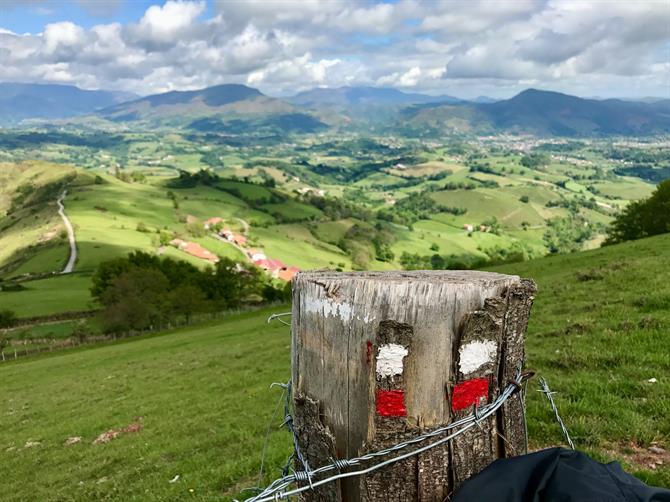
O Cebreiro is a village on the Camino de Santiago and during July and August, when many walkers choose to complete the pilgrimage, the hostels, hotels, and restaurants of this otherwise quiet village are very busy.
At 1,300 metres above sea level, getting here on foot is quite a climb and in the colder months of the year, you can expect snow and ice.
There are some wonderful round stone houses with straw roofs to see and you can visit the free ethnological museum to learn more about life in the village.
Ribadavia is a beautiful village on the banks of the Miño river in Galicia’s Ourense province. You can learn more about life in the town at the Ethnologic Museum or visit the remains of the 14th-century castle.
If you love wine, you’ll want to visit the Museo del Vino de Galicia. Entry is free and you can see how wine is made, especially the local Ribeiro, which has an official appellation, the oldest in all of Galicia.
The Takeaway
While most tourists head to Catalonia, the Balearic Islands, the Canary Islands, Andalusia, Valencia, and Madrid, there’s so much to see and do across northern Spain.
The Basque Country, Asturias, Cantabria, and Galicia are all pretty unique, and while they might all share quite similar weather, the history, culture, geography, and cuisine can vary quite a bit from one region to another.
Which will you be visiting first?
Suggested reading for you...
- The best beach destinations in Northern Spain
- Five amazing Basque hikes
- Rural active holidays in Spain
- Top National Parks in Spain
Travel Safe

Travelling by car around northern Spain
Inland Green Spain, from one end to the other
Spain's extensive road network makes travelling by car a comfortable and enjoyable option. You decide the schedules, the routes and the time you want to spend at each new destination you discover along the way. Considered getting to know the north of the country in depth? Here are few ideas for exploring Green Spain from one end to the other, crossing its four regions (Galicia, Asturias, Cantabria and the Basque Country). We suggest you visit incredible inland spots between Ourense and Vitoria-Gasteiz. Magnificent natural spaces, Biosphere Reserves, World Heritage monuments and first-class cuisine await you. Let's get started!
Day 1: Ourense to Lugo, following the Miño river (Galicia)
Distance:125km Journey: By car / Duration: 1 hours 45 minutes
We suggest you start your journey in northwest Spain, in the Ourense , one of the four provinces that make up Galicia . It is essential to visit the capital before heading to Lugo. The city of Ourense is inextricably linked to the River Miño, with eight bridges crossing over it. The Roman Bridge is the city's hallmark and the hot springs are one of its greatest attractions. How about a relaxing bath before starting your drive? Head to Campo da Feira and walk along the Thermal Walk. It spans around three kilometres along the right bank of the river and you can give any of the following a go at any time of the year: The public pools of hot mineral-medicinal waters of A Chavasqueira–Outariz (about 41º); the O Tinteiro fountain (43º), with water indicated for dermatological problems; the public thermal pools of Burga do Muíño das Veigas (between 65º and 72º) and, finally, those of Outariz (61º), with water ideal for relieving rheumatism and osteoarthritis. Taking the N-120 highway, Monforte de Lemos , one of the most important towns in inland Galicia, is less than 50 kilometres away. Then, just over 70 kilometres away, in the upper Miño basin area, we recommend visiting the Parga-Ladra-Támoga natural space, which forms part of the Terras do Miño Biosphere Reserve . You will be just 10 minutes away from resting at your next destination: Lugo.
Day 2: Lugo to Taramundi (Asturias)
Distance:70km Journey: By car / Duration: 1 hours 15 minutes
Spend the morning discovering Lugo , also on the banks of the River Miño, with its fully preserved city walls, awarded the World Heritage designation by UNESCO. Within the one thousand-year-old fortification, the old town is home to various spots for you to sample the best of Galician cuisine . Just 25 kilometres from Lugo, Castro de Rei is home to one of the best-preserved forts (ancient Iberian-Roman settlements) in Galicia, the fort of Viladonga. Continue on towards Taramundi, a magical town that forms part of the River Eo, Osco and Terras de Burón Biosphere Reserve , where you will surely feel the need to stop off.
Day 3: Taramundi to Oviedo
Distance:158km Journey: By car / Duration: 1 hours 45 minutes
Taramundi is an authentic symbol of Spanish rural tourism. In addition to its slate roofs and the sound of water always in the background, the town stands out for its artisan tradition, specifically, the art of cutlery. It is home to workshops where you can even order custom pieces. If you are a fan of hiking, one of the most popular options is to take on the water route , a circular route of about 14 kilometres where you will find museums, waterfalls and lush forests of chestnut, oak and birch trees. To get to your next destination, Oviedo, we recommend taking the A-8 highway that runs along the coast. You might be tempted to stop off at picturesque seaside towns including Tapia de Casariego, Luarca and Cudillero . You decide the times!
Day 4: Oviedo to Cangas de Onís
Distance:73km Journey: By car / Duration: 1 hour
Dawn in the capital of Asturias offers you the opportunity to enjoy a more urban and artistic day. Oviedo is considered the cradle of Asturian pre-Romanesque art on account of monuments including Santa María del Naranco, San Miguel de Lillo and San Julián de los Prados. Make sure not to miss out on the opportunity to visit any of them or the Archaeological Museum to fully understand the importance of this heritage. Furthermore, its large pedestrian areas and numerous squares and arcades make it an ideal city for strolling and tasting popular flavours such as 'fabes' (white beans), cabrales cheese or its traditional cider. The next destination we recommend is Cangas de Onís , just over an hour away: it is the perfect place to spend a day visiting hidden hideaways. It is home to idyllic accommodation such as the Parador de Cangas de Onís , which boasts views over Picos de Europa National Park , located on the banks of the popular River Sella.
Day 5: Arriondas and Covadonga
Distance:125km Journey: By car / Duration: 1 hours 30 minutes
After exploring Cangas de Onís and its emblematic Roman bridge, Covadonga is just 20 kilometres away. The town is home to the historic shrine , which is a place of pilgrimage, and the unmissable natural wonder of the Lakes of Covadonga . There are several routes to explore these spectacular glacial aquifers, among the most popular is a circular route of about five kilometres and little difficulty that begins in the Buferrera parking lot. Next, you can go to Arriondas . Every August, a multitudinous canoeing competition known as the International Sella River Descent is held there, in which folklore and festivities are the perfect compliment to the sporting competition. If you have time, climb up to the Fitu viewpoint to get an unforgettable panoramic view of the Cantabrian Sea and the mountains. Head back to the A-8 motorway towards Cantabria and drive just over an hour to Cabezón de la Sal or Cabuérniga to spend the night there.
Day 6: Cabuérniga, Bárcena Mayor and Liérganes (Cantabria)
Distance:176km Journey: By car / Duration: 2 hours
The Cabuérniga Valley is a good starting point for exploring small, quiet villages with deep greenery and centuries-old houses typical of the area. It is nestled in the heart of Saja-Besaya Natural Park , in the centre of Cantabria. In addition to planning a nice route through this nature reserve, another nearby and picturesque place of interest is Bárcena Mayor . Remember that you are also in an ideal area to try hearty dishes from the region such as cocido montañés, trout from the Saja River and, above all, game meat in places such as Ruente or Ucieda . The next destination on our bucket list is Liérganes , a town shrouded in mystery Valles Pasiegos , where we encourage you to learn about the legend of the “fish man” and his sculpture on the banks of the River Miera. To bring your day to an end, head back to the A-8 highway towards the Basque Country. After about 120 kilometres, you will come to one of your last destinations, Gernika-Lumo.
Day 7: Gernika-Lumo and Vitoria-Gasteiz
Distance:85km Journey: By car / Duration: 1 hour
A stone's throw from the Urdaibai Biosphere Reserve is the Basque town of Gernika-Lumo . Having inspired the most famous work of painter Pablo Picasso, depicting the bombing of the town in 1937 during the Spanish Civil War, the town has now become a symbol of peace. It is a must-see on account of its historical importance. As well as the town's museum and Parque de la Paz, boasting impressive sculptures by Eduardo Chillida and Henry Moore, you can visit the neo-Classical Casa de Juntas . Finally, the capital of the Basque Country is the end of this route, so if you have the possibility of extending your stay, do it! As there will be no shortage of places of interest to discover. One of the biggest attractions of Vitoria-Gasteiz is its unrivalled town planning, boasting wide avenues and gardens that invite visitors to explore the city from start to finish: From the Plaza de la Virgen Blanca and its medieval historic centre to the monumental Ensanche with its Plaza de los Fueros as a point of reference. You will have many places at your disposal where you can enjoy the best of Basque cuisine, enhanced with quality vegetables and greens from the province of Álava.
Tips and recommendations
If you are able to extend your trip, choose between taking a two-day route across the Terras do Miño Biosphere Reserve in Galicia; extending your stay in Cantabria by visiting the Soplao Caves or staying in the Basque Country for a little longer to visit locations such as the medieval city of Orduña or the town of Idiazábal, which gives its name to famous Designation of Origin cheeses.
When to go on the route
The route can be done at any time of the year, you just have to take into account the hours of light and the weather to choose the best itineraries.

Choose between thousands of activities to live your best life on holiday.

Editor's Choice
- Latest Articles
- How to Move Out of the U.S.
- Daily e-Letter
- All Destinations
- Best Places to Retire
- Our Experts
- Testimonials
- Real Estate
11 Best Places to Live in Northern Spain for US and Canadian Expats

Southern Spain often steals the spotlight among expat communities, conjuring images of flamenco dancers, guitar serenades, and coastal feasts in white-washed villages. With its sunny, almost tropical climate, it’s easy to see why it’s considered a paradise.
Yet, quietly tucked away in the northern regions of Spain lies an undiscovered gem for expatriation—a land rich in history, culture, and breathtaking landscapes. Here, craggy cliffs give way to charming seaside hamlets, and Basque cider houses resonate with cheerful melodies rooted in folk traditions. Mountain ranges beckon adventurers, coastal waters sparkle under the sun, and authentic, uncrowded Spain awaits exploration.
Whether you’re seeking top-tier education, world-class cuisine, ski resorts, marinas for your sailboat, or serene hiking trails, Northern Spain has it all. A couple can comfortably live here on a budget of $2,000 to $3,000 a month.
For US and Canadian expats in particular, Northern Spain offers a refreshing cultural shift. In this guide, we’ll explore some of the best places to call home in this captivating region.
Get Your Free Spain Report Today!
Learn more about Spain and other countries in our free daily postcard e-letter. Simply enter your email address below and we'll also send you a FREE REPORT — Live the Good Life in Sunny, Affordable Spain.
By submitting your email address, you will receive a free subscription to IL Postcards and special offers from International Living and our affiliates. You can unsubscribe at any time, and we encourage you to read more about our Privacy Policy .
San Sebastián
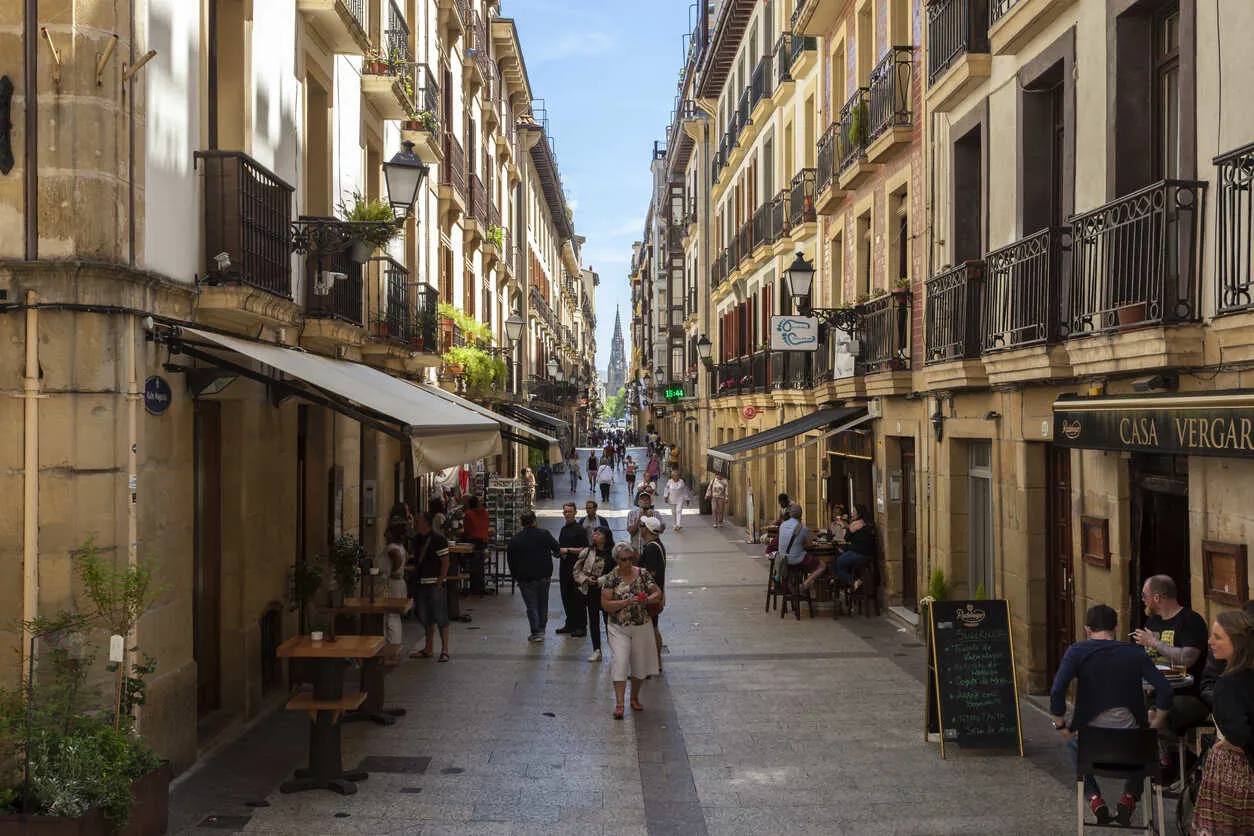
Known as a culinary paradise with beautiful beaches and a vibrant cultural scene, Spain’s shining jewel of the North invites the young, glamorous, and affluent to enjoy one of the most famous old towns in Spain. In Parte Vieja and along the waterfront promenade of La Concha, the beachy beating heart of the town, you’ll find travelers and snowbirds looking to enjoy the sun and fun. The ancient old town streets, La Bretxa market, and the funicular to Monte Igueldo are other popular attractions.
Whether by day or night, the tapas in San Sebastián are second to none, famed for their ‘pintxos’ (peen-chose) and montaditos—small skewers of pickled items, meats, seafood, or toast points topped with spreads, cured meats, or cheeses. Try their popular ‘kalimotxo’ (kah-lee-moe-cho), a spin on Sangria made with red wine and Coca-Cola.
San Sebastián is also a hub for Basque culture, including their cider houses, folk roots, and unique language. The Basque people are wonderfully community-driven, placing family and food above all else.
Don’t miss opportunities for unique day trips to nearby coastal Hondarribia or stay local for annual events and film festivals. France is an easy and short drive away, and the rest of Europe is accessible by boat through nearby Bilbao or via buses and trains.
A seasonal playground for celebrities and beach-goers, San Sebastián, offers a high quality of life with excellent healthcare and education systems. While the cost of living is generally higher than in other Northern cities, the romanticism of this magnificent city justifies the expense.
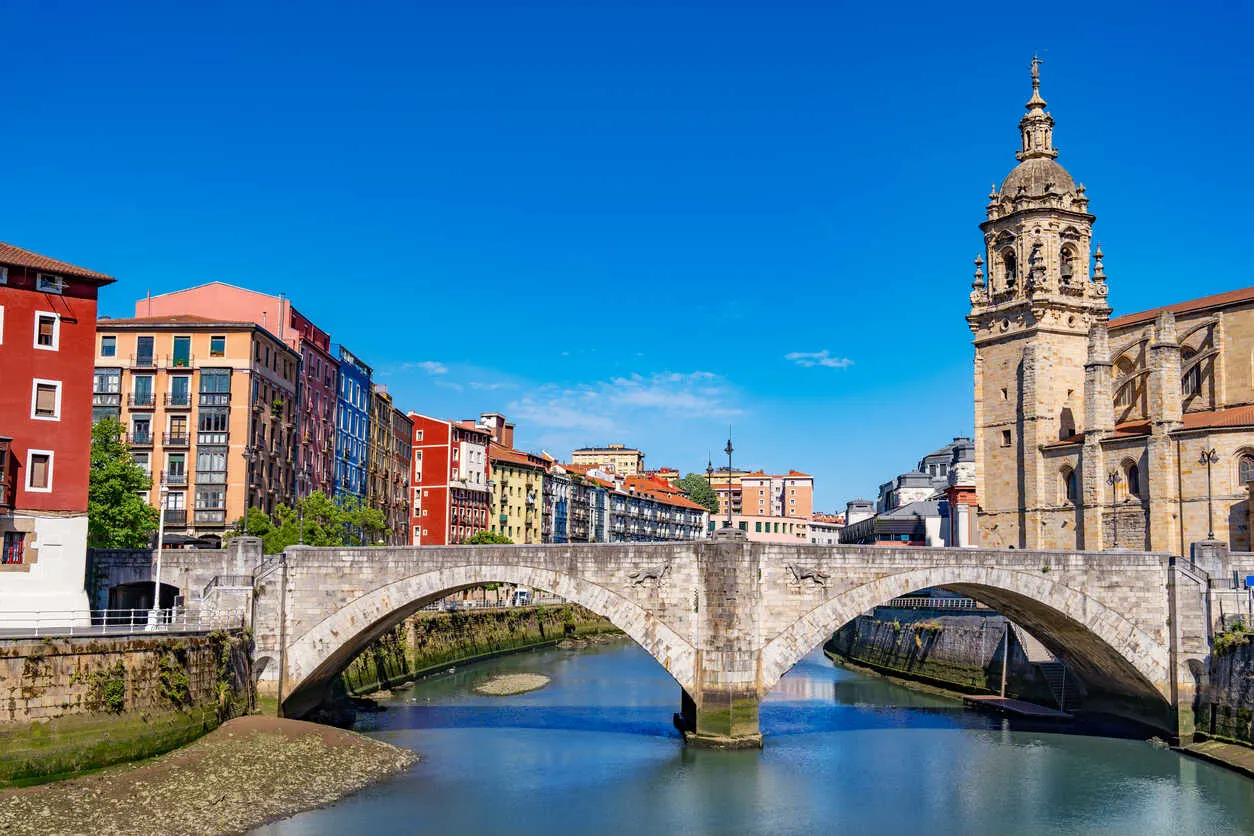
For a taste of modern Spain, Bilbao is just the ticket. Particularly inviting for families looking to settle down, Bilbao provides parks, green spaces, and excellent options for studying abroad. Children will grow and learn to speak both Basque and Castilian Spanish, with public education being free.
Food plays a central role in Bilbao’s everyday life, with Basque cuisine taking center stage. Modern art and culture round out the city’s offerings, with highlights like the Guggenheim Museum.
Bilbao offers expats moderately priced housing options compared to its Basque neighbor, San Sebastián. Families are especially drawn to Bilbao due to its reputation for safety and its youthful vibrancy.
Bilbao’s excellent public transportation and infrastructure make it easy to travel, including to England and the UK, where the city port offers regular overnight ferry services to Portsmouth and Plymouth. On the downside, be prepared for wet weather in Bilbao, which is common in this northern city.
Just outside Bilbao, along the shoreline, you’ll find jaw-dropping natural landscapes, including the Game of Thrones film location at San Juan de Gaztelugatxe. Hikers and outdoor enthusiasts will love the opportunities to explore nature, where surfing is another popular pastime.
Overall, Bilbao is ideal for younger families looking to grow in Spain. It offers modern conveniences, a vibrant art scene, cutting-edge cuisine, and a familial atmosphere.
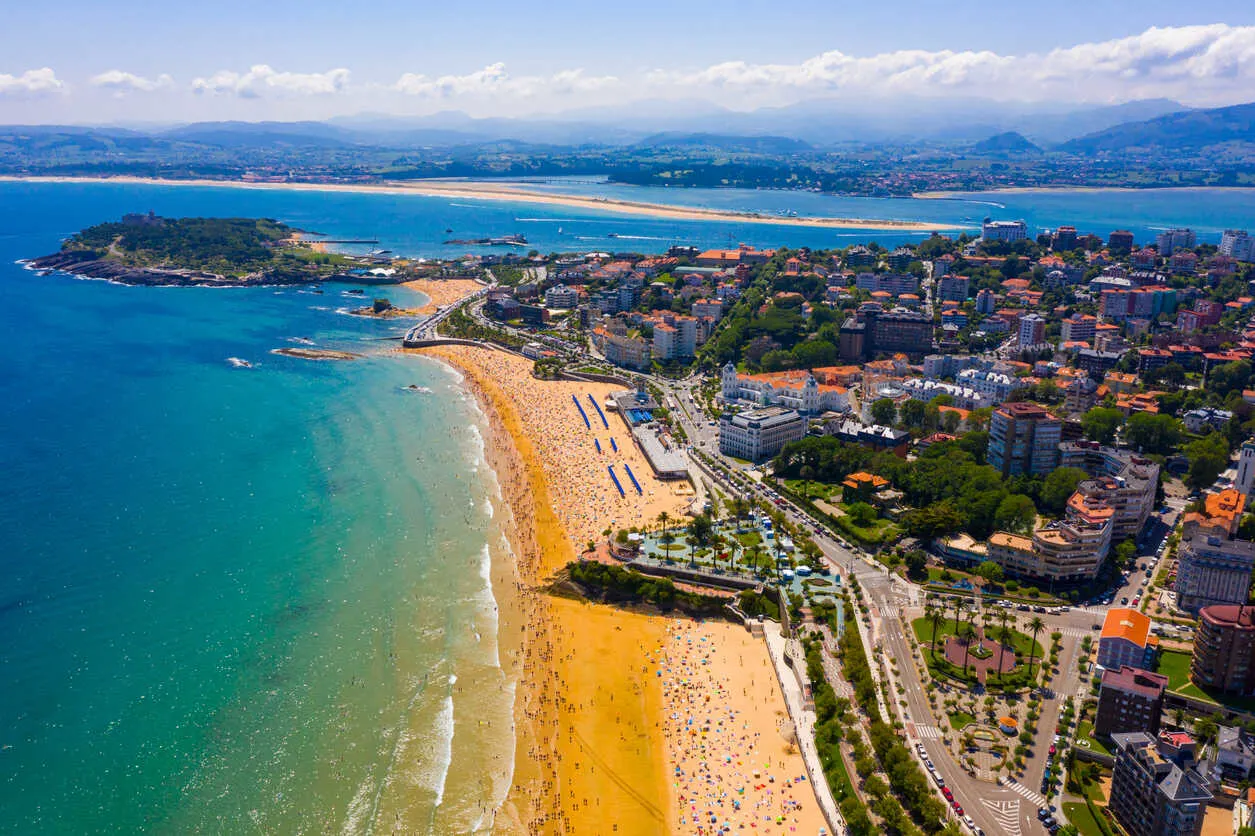
Another major port for travelers to and from England and the UK, Santander offers regular connections by overnight ferry. A sizable city of nearly 200,000 residents, Santander provides comfortable living and access to Spain’s richest regions in the north. Moderately priced, Santander is home to Banco Santander, one of Spain’s largest banking chains, offering a stable and affordable economy to its residents.
With no shortage of unique maritime charms, there are numerous beaches and marinas to call your own. Old town strolls include visits to cathedrals, palaces, and gardens, offering plenty of chances to discover favorite seafood restaurants. Don’t overlook the gorgeous seaside Palacio Real de La Magdalena, a castle-like palace, or Pereda Gardens, a lovely green space to enjoy nature.
Santander is a wonderful place to settle down with children. The city is safe, and beach days dominate the summer. Pedestrian lanes make shopping for daily groceries a fun outing, and the mild climate is never too hot or too cold. Santander often ranks as one of the best places to retire in Northern Spain, thanks to its high quality of life.
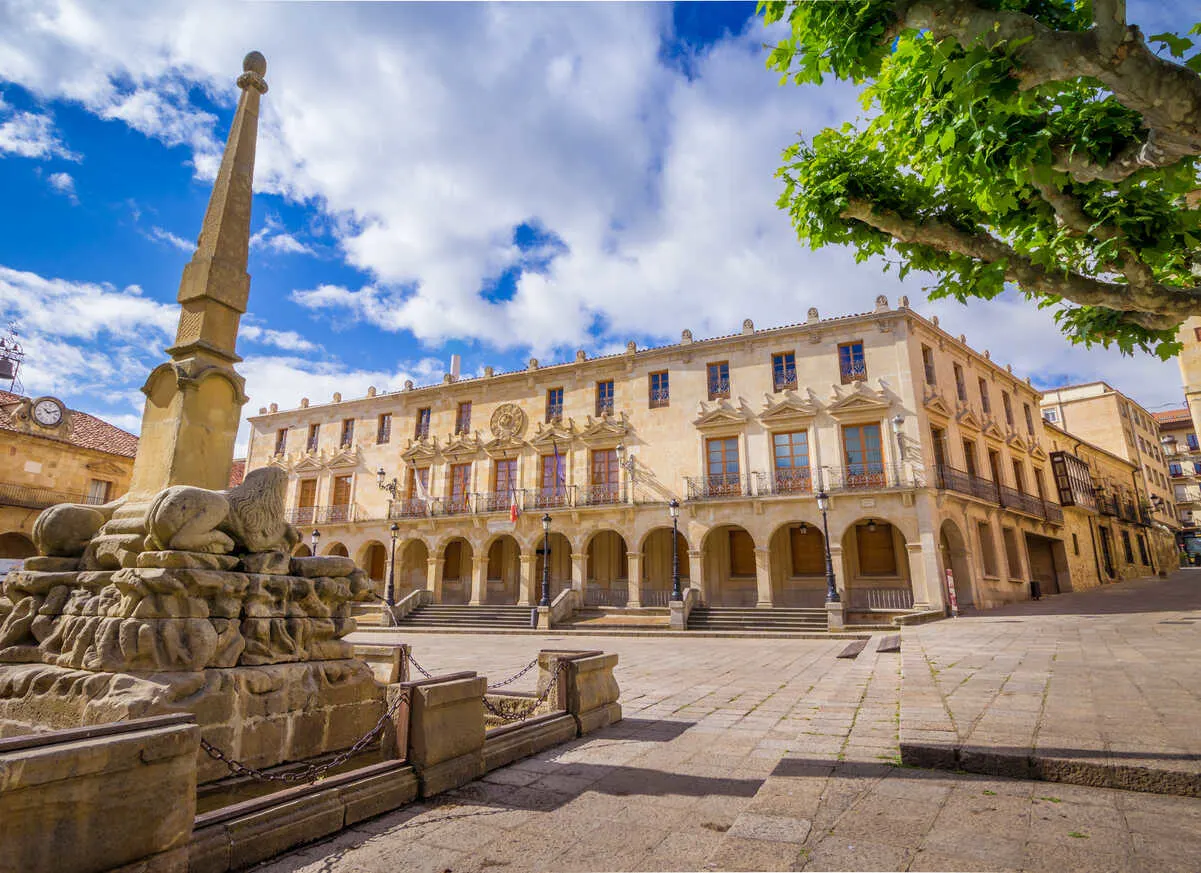
Steeped in Roman history, Soria is a little-known city (even to many Spaniards!). It features architecturally unique villas, landscapes, and hamlets to explore. The abundance of 12th-century Romanesque churches complements the palaces, monastery ruins, and shrines that draw tourists on their way to larger Northern cities.
Soria’s smaller population of roughly 40,000 people lives along the Douro River, where nature enthusiasts can enjoy enchanting walks to Ermita de San Saturio, a cliffside cave, and monastery, or the ruins of San Juan de Duero along the riverbank. Known for its clean air and diverse landscapes—from forests to river valleys—Soria is a haven for hikers and outdoor lovers.
Sorians live a modest lifestyle focused on food agriculture, harvesting staples of the Mediterranean diet. Locally sourced dining and food costs are very reasonable, and you may even find yourself foraging for mushrooms or hunting wild boar and quail, adding to the farm-to-table lifestyle that Sorians enjoy.
Moving to Soria will undoubtedly be an amazing venture, but be prepared for little to no spoken English and chilly winters. Soria is also a fairly rural destination as soon as you exit the city proper, consisting of tiny villages populated predominantly by those over the age of 65. As a result, Soria has become well-known as a land of retirement, where tourism and farming are the main draws. Even so, the tourism that comes to Soria mainly consists of Spaniards due to its off-the-beaten-path location in central Northern Spain.
If a touch of solitude paired with absolute immersion into Spanish culture calls your name, Soria may be a great choice for retirement. With little to no influence from outside cultures, authentic Spain is easy to find in Soria.
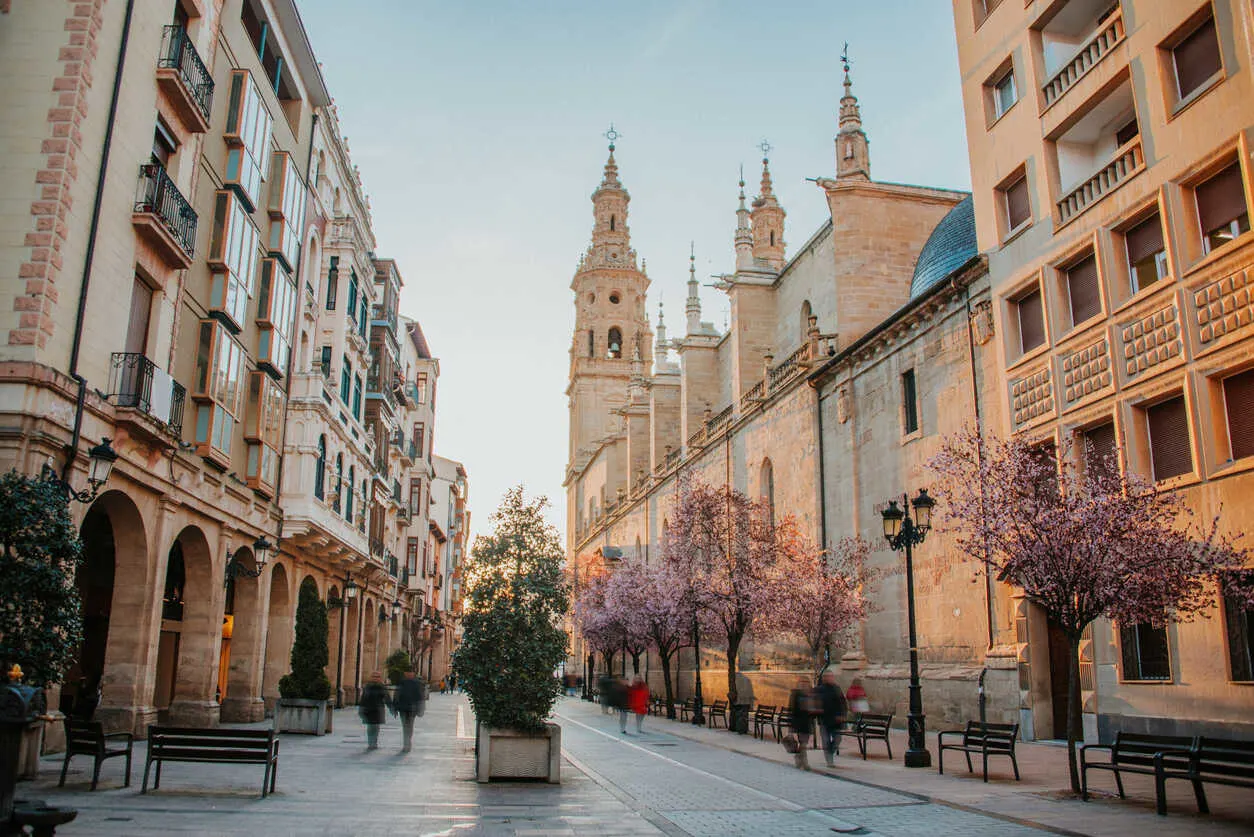
Oenophiles and lovers of viticulture will admire this home within the heart of the famous Rioja wine country. Essentially the Napa of Spain’s central wine regions, its ancient streets boast lively restaurants, tapas bars, and bodegas for wine tasting.
With over 150,000 inhabitants, Logroño is large enough to spread out but retains a small-town feel in its central old town streets. The happening lanes of Calle del Laurel invite residents out for a stroll, some tapas, and people-watching, while weekends can easily be spent visiting the region's bodegas and vineyards.
High-end hotel chains cater to wine tourists, bringing in a good amount of money from the vineyards. Expect higher tourist prices in trendy areas of town, but enjoy the luxury of vineyard vistas as far as the eye can see outside of town.
The cost of living is very affordable, especially for food, wine, and housing. Situated in a high-traffic area of Northern Spain’s byways, it’s easy to travel to neighboring regions for weekend getaways and trips to the coast.
The University of La Rioja is the main institution for higher education in Logroño, attracting some students to the area, but the city’s population is well-rounded in age.
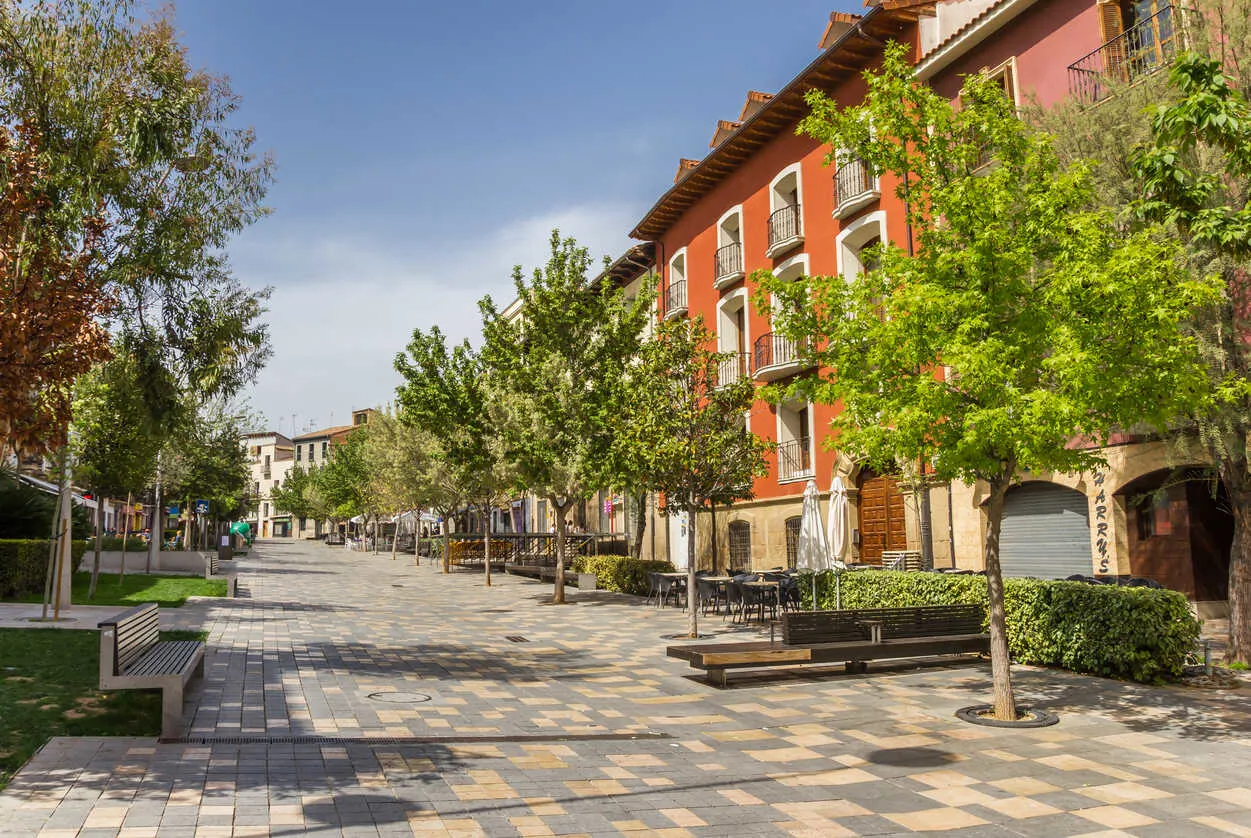
Located just north of the large Aragonese capital city of Zaragoza, Tudela is rich in history, stemming from over 400 years of Muslim rule. Offering classic architecture largely influenced by the Moors and Muslims in the ‘Mudejar’ style, the city seamlessly blends the modern and the historic.
Charming and well-connected by rail, Tudela offers an abundance of natural attractions and day trips nearby. Hop on the rail line or take a car to visit any number of vineyards in the neighboring Navarre wine region or go fishing along the River Ebro.
Drive under an hour to reach the fairytale castle of Olite and its wine-influenced economy, or explore the stunning natural landscapes at Bardenas Reales.
Experience authentic Spain in the heart of the city at Plaza de los Fueros, and say “salud” (cheers) to a relaxing day in Tudela’s affordable and tranquil home.
Steeped in a blended history of tradition, Tudela’s Jewish Quarter is one of its most intriguing neighborhoods to explore. With the progress of time, the convenience of the train line, and the traditions of an intriguing past, Tudela has much to offer residents.
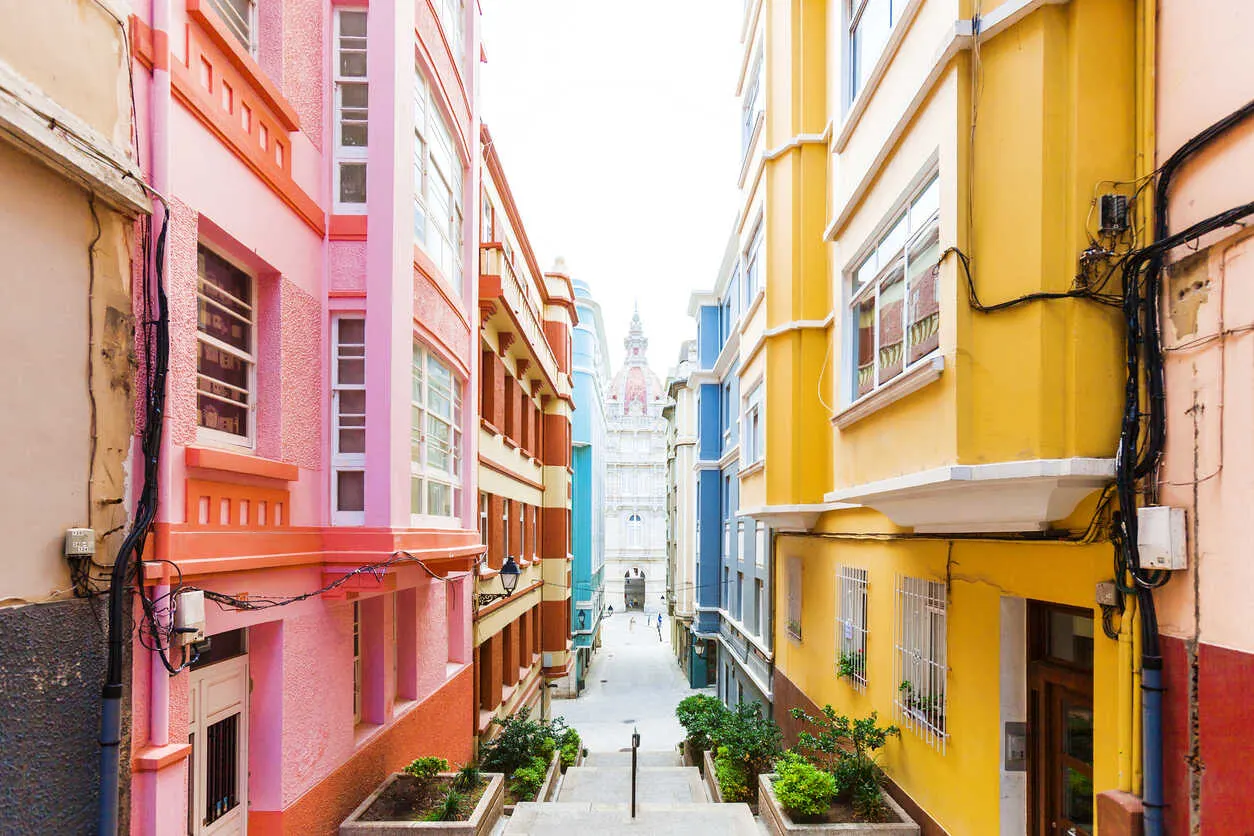
A thriving city, A Coruña balances bustling modernity with laid-back harbor life. Synonymous with seafood and coastal living, the Galician city also enjoys moderate temperatures year-round.
Home to science and art museums, A Coruña is far from an average Spanish village; it’s a progressive city. A Coruña’s heartbeat is its financial and industrial focus, which brings higher prices but also economic stability.
The city receives over 60 cruise ships a year, boosting tourism to its ports and proving it to be a populous and modern harbor for activity.
Visit the Tower of Hercules, a unique Roman lighthouse from 2 AD, or journey into the town center to see the City Hall and Maria Pita Square.
Finish a typical day strolling one of the largest promenades in Europe, the nine km-long Paseo Maritimo. Boaters may be tempted to get a spot in the marina and set up shop in this lively city at the far west of Northern Spain’s shores.

A charming town in Asturias, Llanes offers picturesque harbors, dramatic cliffside vistas, and a traditional small-town feel. With that small-town feel comes a small-town economy, meaning a moderate cost of living. Regular beach and leisure tourism ebbs and flows, bringing seasonal peaks in crowds to the petite village.
Known for its tremendous food and folk culture, Asturias is a lovely place to explore community, belonging, and gastronomy.
Besides spending sunny days at the many beautiful beaches on the Asturian coast, nature lovers will enjoy the nearby mountains, caves, and rock formations.
Visit the casino, palaces, and other notable landmarks, or while away leisure time in one of the many picturesque squares.
Vitoria-Gasteiz
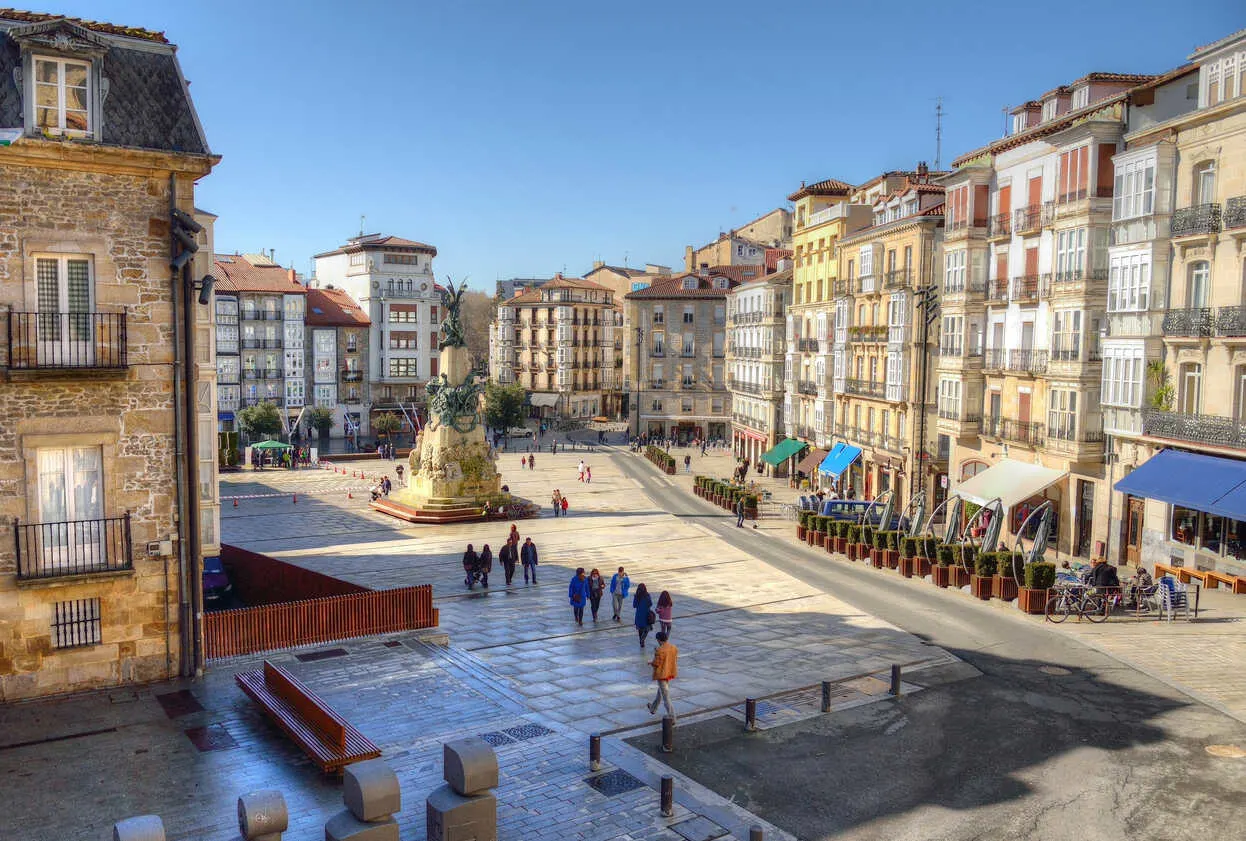
When Spaniards are asked where the best places to live in Spain are, Vitoria repeatedly shows up in the top rankings. Centrally located in the heart of the Basque Country, Vitoria is considered one of the finest Northern Spanish cities to live in, especially for retirees.
Known for its industrious efforts in aeronautics, healthcare, viticulture, and the automotive industry, Vitoria boasts a high-producing economy. While the cost of living is higher, the salaries for residents are also higher, making it an attractive place to relocate for the working crowd.
Vitoria plays host to numerous local events and annual international music festivals, offering a gateway to the beloved Basque region known for its gastronomy and community.
Set inland, away from the coast, Vitoria is best accessed by private vehicle, offering ample opportunities for day trips. In the city, explore churches, cathedrals, basilicas, and sanctuaries, or visit the Old Quarter, museums, and many green spaces.
If you want a perfect mix of sunshine, leisure activities, business opportunities, and even nightlife, Vitoria has it all. A dream retirement spot for expats, young and old, Vitoria offers nature, minimal tourism, and everything else you might want in a Northern Spanish home.
San Vicente de la Barquera

When surveyed about where they would love to retire in Northern Spain, Spaniards emphatically included this tiny seaside village on the list. With a town population of under 5,000 people, this peaceful community has much to offer, starting with its welcoming seafront façade. The Picos de Europa mountain range provides a craggy, awe-inspiring backdrop to the town, with its snowy peaks and stunning might. Living in a postcard setting isn’t all, though.
The beaches and old town shimmer in the shadow of an old fisherman’s village, now a retirement paradise. Wander, dine, and stroll in a tranquil village, visit historic buildings and churches, and explore the region easily by car on day trips.
Witness pilgrims traveling along the famous Camino routes in Spain, which pass through this town, and set up shop in the main square to sample part of the enlightened path yourself. Through the tranquility of the small town, immerse yourself in nature and peace.
Due to its size, expect moderately higher costs in this small seaside village, but gain the tranquility of living in a storybook setting.
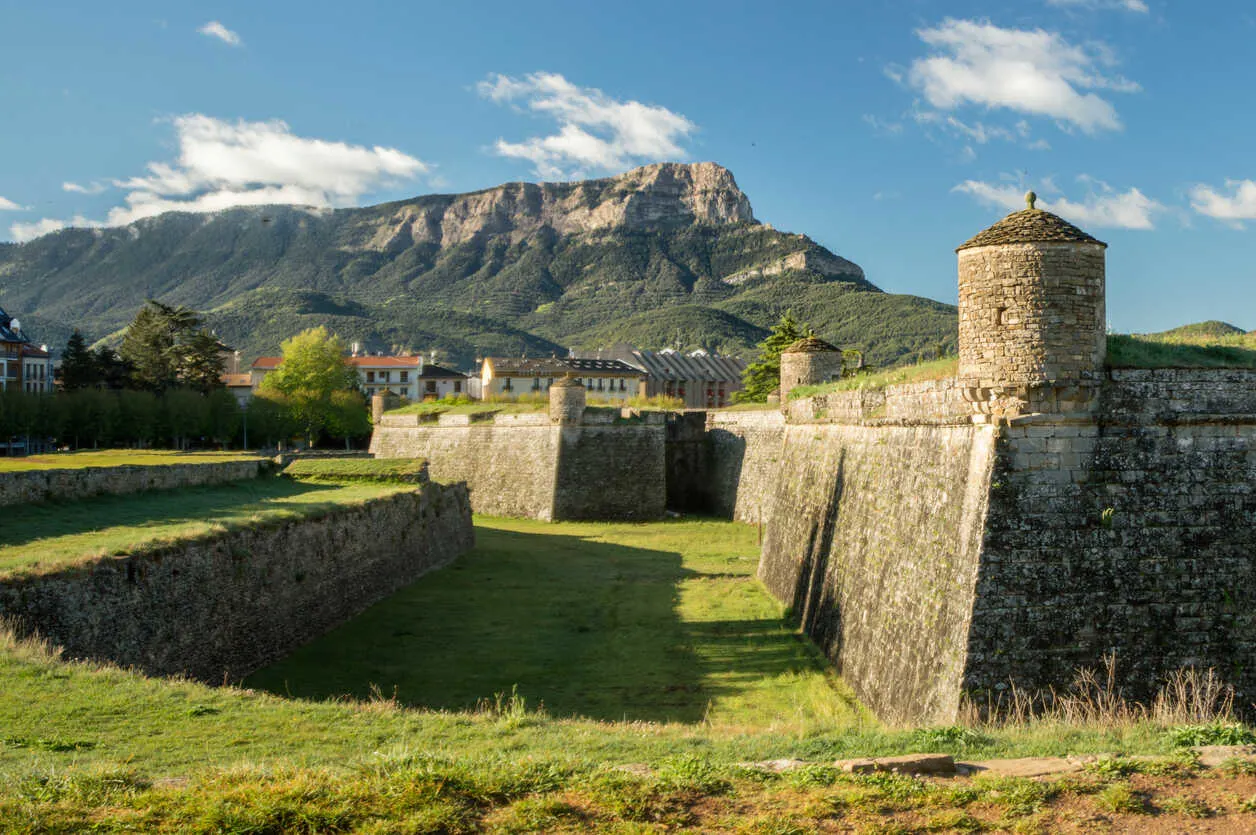
With a reasonably sized population of over 12,000 residents, Jaca is neither a small village nor a large city, but it has one thing that no other city on this list has—ski resorts. Bordering the Pyrenees mountains and France, skiers will enjoy Jaca’s nearby Astun Ski Resort, while city dwellers may simply enjoy the Germanic lodges and wintry scenes.
The ancient fort city boasts medieval walls and towers worth exploring, and Jaca is a popular stop along the infamous Camino de Santiago pilgrimage route. Backpackers, travelers, and people from all walks of life venture through year-round for this purpose.
Winter is a popular time, bringing seasonal increases in visitors when winter sports enthusiasts come through. Considering its remote location in the mountains, the cost of living in Jaca is significantly higher than in the lowlands of Northern Spain, and amenities like shopping plazas are harder to come by without traveling to larger, less mountainous areas. If mountains and seclusion are more your speed, Jaca may be the place for you.
Final Thoughts
As you explore the many possibilities Northern Spain has to offer, each city and town reveals its unique charm and appeal. From the world-renowned cuisine of San Sebastián to the serene beauty of San Vicente de la Barquera, this region provides a rich tapestry of experiences for those looking to start a new chapter abroad. Whether your priority is cultural immersion, natural beauty, or a balanced lifestyle, Northern Spain has something for everyone. The decision of where to settle is just the beginning of what promises to be an exciting and fulfilling journey in one of Spain's most captivating regions.

IMAGES
COMMENTS
Tailor-made Spain Trips Designed For You By Travel Experts. Request A Quote. Trips As Individual As You Are. See Spain In The Most Meaningful Way - Your Own.
Places to Visit in Northern Spain's Basque Country Region San Sebastian. With one of the dreamiest beaches in Spain (La Concha), stunning lookout points, and a beautiful old town, San Sebastian is easily one of the best cities to visit in northern Spain.. It's worth spending at least 24-48 hours in San Sebastian, but it can also be a great base for exploring the Basque Country region.
10. San Vicente de la Barquera, the perfect place for a northern Spain holiday. Finally, San Vicente de la Barquera is a spectacular destination in northern Spain that you should visit. This fishing village is on the western coast of Cantabria and is surrounded by one of the most beautiful landscapes in the country.
Picos de Europa National Park is Spain's first national park, founded in 1918 when it was known as Montana de Covadonga National Park; its name was changed in 1995. The park's high mountains and deep ravines appeal to hikers, who need to be alert for deep fog banks. Snow is possible year 'round.
Getaria. Getaria is one of my favorite small towns in Spain. Oh wait, it's actually not a town but a small fishing village set between the sea and vine-covered mountains on the shores of the Bay of Biscay. It was home to Juan Sebastian Elcano, one of the first people who circumnavigate the world.
19. Picos de Europa Natural Park. 20. La Rioja Region. Map of Places to Visit in Northern Spain. 1. Barcelona. Parc Güell in Barcelona. The sparkling crown jewel of Catalonia, the region's vibrant capital boasts an alluring seaside setting, fabulous Modernist architecture, and a delightful medieval quarter.
10 Best Places in Northern Spain. 1. San Sebastian. Lovely San Sebastian. San Sebastian, known as Donostia in the Basque language, is undoubtedly one of the most beautiful cities in the Basque Country, and all of Spain. Surrounded by mountains but embedded beside the Cantabrian Sea, this town of 187,000 people is the pinnacle or urban beauty ...
9 | Atapuerca. For the opportunity to explore millions of years of history, the Archaeological site of Atapuerca is a short drive from Burgos. It contains traces of hominid life from a million years ago and one of the major finds included a cave with bones of 32 male and female bodies of all different ages. Atapuerca.
Cudillero, Asturias. 12. La Rioja, Logroño. 1. San Sebastián, País Vasco. San Sebastian, Basque Country. San Sebastian (Donosti in Euskera, their language) is a cosmopolitan but relatively small city of approximately 186.700 inhabitants.
What to do in Northern Spain. Northern Spain itineraries. 5-day highlights trip. 5 days in the Basque Country and Navarra. 6 days in Cantabria, Asturias, and Galicia. 1-week city hopping route. 7-day history-focused trip. 10 days in Northern Spain's nature. 2-week comprehensive itinerary.
The Best Places To Visit In Northern Spain Bilbao. Bilbao, the capital of the Basque Country, is a lively city where locals, tourists and the occasional pilgrims on their way to Santiago de Compostela happily meet.Not many know, but the city is indeed along the Camino del Norte, one of the many official ways of the Camino de Santiago.
Northern Spain Road Trip: Stop 7 - Bilbao. Bilbao, the capital of the Basque Country, is home to centuries-old alleyways and modern-day architecture. The bustling city is small enough that you can explore it on foot, but big enough to keep you entertained for many hours. Bilbao is a great place to visit on your northern Spain road trip.
San Sebastian (Basque Country): San Sebastian, or Donostia in Basque, is certainly one of the best places to visit in Northern Spain. It is famous for its stunning beaches, culinary excellence, and the annual San Fermín festival. Its picturesque old town and beautiful La Concha Beach are major attractions.
This is a part of Spain that truly has it all: vast green spaces, rolling hills, verdant vineyards (and some excellent wines), photogenic coastal towns and villages, vibrant cities - not to mention exceptional beaches and some of the country's top foodie destinations. And best of all, the open roads make it an ideal place to enjoy a road trip!
Day 7 - Santiago de Compostela to Vigo: 89.5 km (55.6 miles) Spain is a deceptively big country and although it may look like a short distance, driving across the north of Spain is still a big trip. The distance of this Northern Spain road trip is 879.3 km (546 miles) which will take you seven days to complete.
This Spain itinerary takes you to the top must visit destinations in northern Spain. In one week, you'll discover all the top must see attractions, pretty towns, and historic landmarks in the Basque, Cantabria, and Asturias regions of Spain. ... the best two places to spend half a day are Santillana del Mar and Comillas in the Cantabria region ...
Where to go on a first trip. 1. San Sebastian (in the Basque country) Probably the most visited city in Northern Spain, San Sebastián has it all. With the best food in the country, renowned because of its creative little "bites": the pintxos, as we call them, are served in practically every bar and restaurant in town.
Northern Coast of Spain Travel Guide - Best Places to Visit, Things to See & Do. By Anya Updated on August 6, 2024. ... North Spain Weather & Best Time to Visit - Quick Overview. Contrary to the popular belief that north Spain is always wet and cold, in reality, its climate is ideal for visiting the area in any season of the year including ...
Spain has a whole range of gorgeous cities, lesser-known spots and a heap of incredible places to see dotted all across the country. Now, the south of - 15 Best Places In The North Of Spain To Visit - Travel, Travel Advice - Europe, Spain - Travel, Food and Home Inspiration Blog with door-to-door Travel Planner! - Travel Advice, Travel Inspiration, Home Inspiration, Food Inspiration, Recipes ...
Below, you'll find a well-curated itinerary that details how to spend each and every day of your two-week journey through Spain's north. To see a quick recap of what will be covered, you can see an overview of the Northern Spain itinerary below: Days 1-3: San Sebastian. Day 4: Bilbao. Days 5-6: Santander. Day 7: Gijon.
7. San Sebastian. San Sebastian (in Basque "Donostia") is located in the Spanish autonomous region of the Basque Country. The popular seaside resort is located on the Bay of Biscay on the northern Spanish coast with about 200,000 inhabitants. The Basque coastal town is one of the most visited cities in Spain.
Pay a visit to the Romanesque Collegiate Church and Cloister of Santa Juliana. 6. Oviedo. The "cradle of Spain," proud Asturias was one of the few Iberian provinces to avoid full Moorish rule. In fact, a local nobleman, Pelayo, touched off the Reconquista (Reconquest) with a victory at the Battle of Covadonga in 718.
The Takeaway. While most tourists head to Catalonia, the Balearic Islands, the Canary Islands, Andalusia, Valencia, and Madrid, there's so much to see and do across northern Spain. The Basque Country, Asturias, Cantabria, and Galicia are all pretty unique, and while they might all share quite similar weather, the history, culture, geography ...
Covadonga is one of my favourites because you get the chance to visit the impressive Basilica and Cave of Covandoga, which are rich in history and spirituality. Exploring Covadonga is magical! 4. The food is mouthwatering. Pintxos, hearty stews, fresh fish and cider are some of the highlights of Nothern Spain gastronomy.
Spend the morning discovering Lugo, also on the banks of the River Miño, with its fully preserved city walls, awarded the World Heritage designation by UNESCO.Within the one thousand-year-old fortification, the old town is home to various spots for you to sample the best of Galician cuisine. Just 25 kilometres from Lugo, Castro de Rei is home to one of the best-preserved forts (ancient ...
Southern Spain often steals the spotlight among expat communities, conjuring images of flamenco dancers, guitar serenades, and coastal feasts in white-washed villages. With its sunny, almost tropical climate, it's easy to see why it's considered a paradise. Yet, quietly tucked away in the northern regions of Spain lies an undiscovered gem for expatriation—a land rich in history, culture ...